
City on the Verge
by
Mark Pendergrast
Published 5 May 2017
(ABI) creation, 91 Bellwood Quarry purchase, 86 editorial (2008), 93 funding, 160–161 on future of the BeltLine, 279 GDOT MMPT project, 102–103 importance to BeltLine project, 278–279 West Beltline neighborhoods, 203–224 West End neighborhood, 34, 80, 98, 100–101, 109, 130, 157, 161, 207–211 West End Trail, 101, 126, 201 West Highlands, 86 Western & Atlantic railroad, 32 Westside Future Fund, 270–272 Westside Park, 8, 87–88, 144, 223–224, 286 Westside Trail, 11, 271 cost, 157, 280 development along, 286 funding, 157, 160–161, 280 groundbreaking, 206 linking to Eastside, 285 streetcar preparations, 280 TIGER grant, 157 Westside Works, 213, 271 Westview neighborhood, 7, 98, 210 Westview Cemetery, 126, 210, 211 (photo) Weyandt, Tom, 22, 162 Wheatley, Thomas, 265 Where We Want to Live: Reclaiming Infrastructure for a New Generation of Cities (Gravel), 278–279 Whiddon, Alycen, 18, 23, 26–30, 47, 53 White, Hilary, 261 white flight, 78–82, 88, 191, 193, 204, 208, 247 White Flight: Atlanta and the Making of Modern Conservatism (Kruse), 78 Wiggins, Kevin, 98 Wilbanks, Alvin, 249 Wilburn, Leila Ross, 98 Wilson, Princess, 177–178 Wilson, Valarie, 93, 130–131, 285 WIMBY (wanted in my back yard), 101 Winn Park, 240 Wolfe, Tom, 58 Woodard, Tracy, 110–111 Woodham, John, 90–93, 122, 156, 164 Woodruff, Robert, 79, 81 Woodruff Arts Center, 239 Woolard, Cathy, 23–29, 48, 52, 160, 280 Wren’s Nest, 209–210 Wright, Richard R., 65, 69 Wynn-Dixon, Evelyn, 251–253 Yalouris, Fred, 127, 131 Young, Andrew, 28, 82–83 Youngblood, Mtamanika, 55, 181–182 Zero Mile Post, 31–32 zoo, 35, 193–194
…
The Atlanta BeltLine also provides a wonderful lens for viewing the disparate areas of the city, north, east, south, and west, rich and poor, white and black. In literally encircling the city it provides a metaphorical narrative hoop on which to organize the book, with forays into the inner city as well as the outlying suburbs. The success of the Atlanta BeltLine is key to the city’s rejuvenation, helping to reverse the late-twentieth-century “white flight” into the suburbs, which produced some of the worst sprawl in the country. You might say that the battle over the BeltLine is a matter of life or death: Atlanta could emerge as a truly great city—or it could fall back into congested mediocrity. Because Atlanta combines so many of the nation’s urban ills, City on the Verge provides a key to understanding the crises—and potential renaissance—of American cities generally.
…
Workers lived in neighborhoods near factories (like Atlanta’s Cabbagetown, near the Fulton Bag and Cotton Mill) serviced by railroads. Wealthier people lived further out along the streetcar lines in the first suburbs (like Inman Park). During the 1920s, the automobile began to change that way of life and culture. In the postwar era, desegregation and white flight to the suburbs hollowed out downtowns, a trend ultimately tied to important public health issues such as air pollution, global warming, water availability, affordable housing, and increased obesity. Still a young city, Atlanta has yet to clearly define itself or its future. After General William Tecumseh Sherman reduced it to ashes in 1864 during the Civil War, it re-created itself as the “Phoenix City,” and it has been reinventing itself ever since, boasting about the “Atlanta Spirit,” labeling itself “the World’s Next Great City,” all the while unsure of its real character.
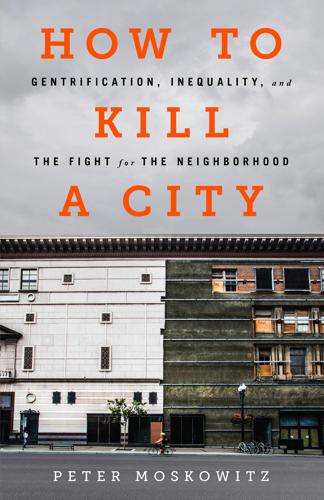
How to Kill a City: The Real Story of Gentrification
by
Peter Moskowitz
Published 7 Mar 2017
Rents in these three areas have increased by up to 10 percent a year, and some buildings are asking $2 a square foot for rentals, about 60 percent higher than what most apartments rented for just a few years ago. Most people put the start of New York City’s gentrification, its phase 0, in the 1970s or 1980s, when the city nearly went bankrupt thanks to a declining industrial sector and “white flight.” But in fact, New York’s policy makers have for nearly a hundred years been planting the seeds for a rich, real estate–focused, anti-industrial city. In a sense, this means New York’s leaders were better planners: they were able to foresee the realities of a new, consumption-based US urban economy years before most, and so they made sure New York was first in line to benefit from it by making way for financial and real estate capital.
…
If you look at the inner-ring suburbs of New York, you can see why: by the 1960s, in places near commuter trains or within a reasonable driving distance of the city, nearly all of the land was developed and housing prices were high, making it hard for developers to buy on the cheap and sell at a markup. Sure, they could buy land even farther from the city and attempt to develop it, but commuters are only willing to travel so far, and New York’s suburban commute times were already pushing the hour mark. The city, on the other hand, was a bargain, thanks to white flight and deindustrialization. In 1979, geographer Neil Smith came up with what has become possibly the most influential academic theory on gentrification: the rent gap. Smith posited that the more disinvested a space becomes, the more profitable it is to gentrify. The idea behind his theory is a basic tenet of free-market economics: capital will go where the rate of potential return (i.e., the potential to make profit) is greatest.
…
But regardless of individual intent, the basic tenet holds true: gentrification works on a mass scale only because most inner cities have been purposely depressed and therefore are now profitable to reinvest in. That led Smith to conclude that “gentrification is a back-to-the-city movement all right, but a back-to-the-city movement by capital rather than people.” Most cities in the US experienced slow bleeds of capital thanks to deindustrialization and white flight, which eventually made their inner cities ripe for gentrification. But New Orleans’s economic devalorization was instant, thanks to Katrina. The city’s real estate was already relatively inexpensive before the storm, but Katrina pushed values low enough that even hobby investors could afford to snatch up a few damaged properties.
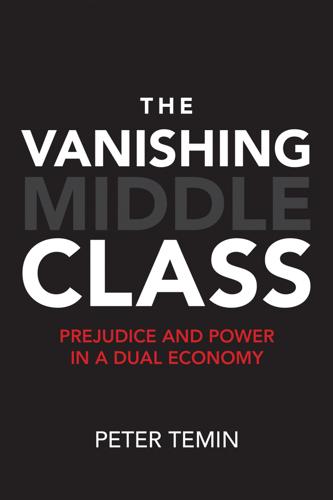
The Vanishing Middle Class: Prejudice and Power in a Dual Economy
by
Peter Temin
Published 17 Mar 2017
Black workers moved to Northern cities to find jobs in the Great Migration, only to find that the jobs had disappeared. The Great Migration, which as noted earlier ended in 1970, did not lead to integrated housing in the North. As soon as Southern black workers appeared in Northern cities, white families began to move out of the cities. White flight was responsible for one-half of the increase in segregation in the 1930s. Prosperous white urban residents continued to leave cities for the suburbs after the Second World War, avoiding newly integrated schools. They were encouraged by the GI Bill and other federal policies that provided generous mortgages for suburban houses and highways for suburbanites to drive to work.
…
Employers, prevented from gaining individual information, relied on general information that blacks were more likely to be ex-felons and refused to hire them. Ban the Box policies expose the underlying racism of our society and show how hard it is to help low-wage African Americans get ahead.29 The growing problems of white members of the low-wage sector are equally serious. White flight to the suburbs was by class as well as by race; it stranded poor whites in the inner cities, where they are subject to economic and social pressures similar to those of poor blacks. As noted earlier, there are many more whites than blacks and Latinos in the low-wage sector. The inability to earn an income sufficient to support a family increased among whites in poor urban neighborhoods after 1970.
…
The records of their discussions typically are brief and often bland. It is harder to find intent in a committee’s actions than in an individual’s actions. The Supreme Court used a traditional indicator in a way that accepted cities’ policies without inquiring into their causes or effects. The 1974 decision in Milliken v. Bradley made it clear that white flight would successfully separate white suburbanites from their new dark-skinned neighbors. The decisions also ensured that black urban communities would lack an adequate fiscal base. The Supreme Court would not combine or otherwise alter existing school districts, and whites fleeing cities for suburbs would be able to separate their children from those of urban blacks.
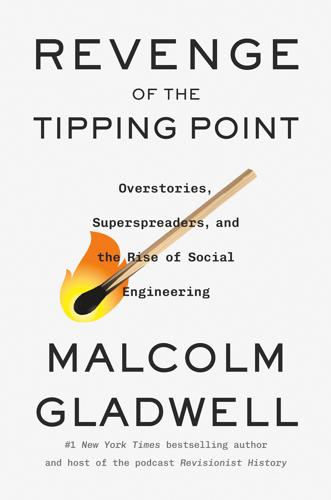
Revenge of the Tipping Point: Overstories, Superspreaders, and the Rise of Social Engineering
by
Malcolm Gladwell
Published 1 Oct 2024
We can’t liberate outsiders from the pressures of being treated like a token, she said, unless we know when the dynamics of groups shift: Quantitative analyses are called for in order to provide precise documentation of the points at which interaction shifts because enough people of the “other kind” have become members of a group… Exact tipping points should be investigated. So let’s investigate. 4. In the late 1950s, the community organizer Saul Alinsky (in the day, one of the most important political figures in the country) testified before the US Civil Rights Commission. The group was investigating white flight, and Alinsky’s entire speech was devoted to the importance of figuring out what the white-flight tipping point was. Everyone who has thought seriously about the matter knows that there must be a formula of some kind. They speak of a racial or an ethnic balance; sometimes they simply talk about “stabilizing” the community; sometimes they talk about ratios.
…
It can be viewed online at https://www.design.upenn.edu/sites/default/files/uploads/Detroit_Book_June2019-compressed-min_compressed%20%281%29.pdf I found the figures for the change in the white population of Atlanta in the 1960s and 1970s (as well as the nickname THE CITY TOO BUSY TO HATE) on page 5 of Kevin Kruse’s White Flight: Atlanta and the Making of Modern Conservatism (Princeton University Press, 2005). Saul Alinsky’s May 5, 1959, testimony in Chicago before the US Civil Rights Commission on housing is quoted several times in this chapter. The quote by the community leader (“Let there be no mistake about it. No white Chicago community wants Negroes”) was Alinsky and it’s on page 771 of the publication titled “Hearings Before the United States Commission on Civil Rights: Housing” by the United States Government Printing Office. You can find Morton Grodzins’s comments on white flight and the “tip point” in his article “Metropolitan Segregation,” published in Scientific American 197, no. 4 (October 1, 1957): https://www.scientificamerican.com/article/metropolitan-segregation/ Rosabeth Kanter’s pioneering study of group proportions, “Some Effects of Proportions on Group Life: Skewed Sex Ratios and Responses to Token Women,” was published in the American Journal of Sociology 82, no. 5 (March 1977): 965–90.
…
But time and again, in the supposedly liberal cities they were moving to, white people wanted nothing to do with them. In some cases, that meant the newcomers faced intimidation and violence. In other cases, it meant that the minute black families moved into a neighborhood, white families just moved out. The term everyone used was white flight. Every city had its own story. In 1955, in the Germantown district of Philadelphia, a woman living on an all-white street bought a home in another neighborhood, thinking she could easily sell her Germantown home for over $8,000. She couldn’t. The highest offer came from a black family. “Her choice, she said, was either to lose her friends or her money, and she was afraid it would have to be her friends,” an account of the incident related.
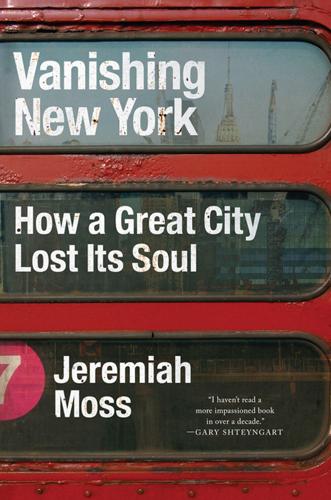
Vanishing New York
by
Jeremiah Moss
Published 19 May 2017
“Ironically,” said the Times, “the ethnic diversity that is drawing the gentry back to the city, the cultural heterogeneity that has always been the source of so much of New York’s character and energy, may become lost in a forest of homogenized high-rises and rows of renovated brownstones.” While gentrification was causing a stir in the 1970s, it was nothing compared to what was coming down the pike. The influx of yuppies was still offset by white flight to the suburbs, and they were hardly stampeding to the city as they are today. A quarterly bulletin by the Federal Reserve Bank of New York titled “Are the Gentry Returning?” found little evidence to support the idea that the back-to-the-city movement had begun in earnest. They concluded, “The overall attractiveness of New York City to the ‘gentry’ . . did not grow between 1970 and 1980.”
…
I call it hyper-gentrification—because it’s fast, frenetic, and aggressive, but also because hyper-gentrification just sounds sexier than “Fourth Wave” or “gentrification generalized.” Hyper-gentrification, as I think of it, encapsulates not only the real estate deals, the movement of money, and the displacement of lower-income people and small, local businesses. It’s the whole megillah. It’s the return of the white-flight suburbanites’ grandchildren and their appetite for a “geography of nowhere,” to take a term from social critic James Howard Kunstler, in which monotonous chain stores nullify the streets. It’s cupcakes, cronuts, and hundred-dollar doughnuts dipped in 24-karat gold (yes, this exists—in Williamsburg, Brooklyn).
…
Du Bois declared the homogenizing trend of Americanization “a renewal of the Anglo-Saxon cult; the worship of the Nordic totem, the disenfranchisement of Negro, Jew, Irishman, Italian, Hungarian, Asiatic and South Sea Islander—the world rule of Nordic white through brute force.” The only way to fight that force, he wrote, was through an alliance between “darker people,” immigrants, and the working classes. That’s exactly what the ruling class of New York didn’t want. And they had friends in Washington. REDLINING, SUBURBANIZATION, AND WHITE FLIGHT The federal government of the United States has been anti-urban from the start, fearing the city with its messiness and diversity, its openness to social liberalism, sexual freedom, racial mixing, and alien ideas. In the 1930s, President Franklin Roosevelt’s New Deal, even in its progressive agenda, built upon the RPA plan to decentralize America’s dense, diverse, activist cities.
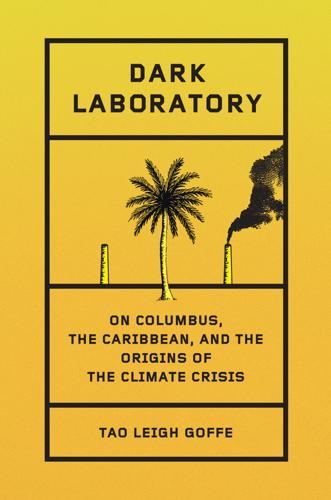
Dark Laboratory: On Columbus, the Caribbean, and the Origins of the Climate Crisis
by
Tao Leigh. Goffe
Published 14 Mar 2025
3.Natural History Museums, Shrines to Explorers Enshrining Natural History Environmentalism and the Omission of Race Digitize the World: Endangered Archives, Endangered Species The Violence of Knowledge Production and University Museums Book II Geological Time and Black Witness 4.Breathing Underwater Coral Coloniality and Collectivity The Freedom of Black Underwater Worlds Corals and the Jagged Taxonomy of Race Darwin’s Pacific Coral Pilgrimage Capturing Coral Regeneration Beyond the Future of Bleached Coral 5.Guano Destinies Shithole Countries: From Emerson to Trump A Diamond as Big as Haiti’s Sovereign Debt Peru: Chinese and Indigenous Labor, Andean Agricultural Science “I Expect You to Die”: James Bond’s Guano Destiny Hawaiʻi: The Refuse and Refusal of Pacific Guano Economies 6.Colonialism, the Birder’s Companion Guide Invisible Branches of the American Family Tree The Amazon: Birding as Colonial Practice Four and Twenty Blackbirds: Kerry James Marshall’s Pecking Order White Flight, Black Mobility, White Fugitivity Jamaicenesis Birding Futures Book III Life in the Garden after Eden 7.The Curious Case of the Calcutta Mongoose in Jamaica The Veil of Ignorance: A Collective Choreography of Mothering Indian Natural History and the Panchatantra “Massa Espeut’s Ratta”: Biopolitics and the Chimeras of Empire Pedigree and White Flight Sly Mongoose, the Predator Indigenous Knowledge: Challenging “Invasive” Rhetoric 8.Pedagogies of Smoke Ganja, the Ganges, and How Indians Brought Marijuana to Jamaica The Glasshouse Effect: China, Scotland, the Caribbean Genres of Gardens Provision Grounds and Botánicas: Beyond the English Country Garden Mutiny in the Garden: Twinning Tahiti and Jamaica Commerce, Criminalization, Climate, and Legalization 9.Affective Plate Tectonics Decentralized Island Futures: Climate Federation The Pyroclastic Tragedy of Mount Pelée, Martinique, 1902 Black Irish Freedom and the Fire This Time “Not in Our Time”: The Volcano as Timekeeper Ghost Chickens Come Home to Roost Coda: Burial at Sea Acknowledgments Notes Bibliography Index Illustration Credits About the Author _149964927_ To the islands, the coral reefs, the blue-footed boobies, the mountains made of guano, the Calcutta mongoose, the budding marijuana, and the volcanoes with which I have written this book.
…
The installation tackles masculinity and witness through the two birdlike fathers by subverting the heteronormativity of the Eden narrative. Ebony Patterson, New York Botanical Garden White Flight, Black Mobility, White Fugitivity “They say when trouble comes close ranks, and so the white people did. But we were not in their ranks.” Jean Rhys opens Wide Sargasso Sea with these words to encapsulate white flight in the Caribbean after Black emancipation in the British West Indies.[15] Refugees from the island we now know as Haiti arrived on the shores of Norfolk, Virginia, in droves in 1793. An influx of escaped white people, delivered by the French navy and comprising plantation owners and overseers, flooded the infant nation of the United States.
…
Some leaped to their deaths in the mines where they labored, becoming part of the biomatter of the island’s bedrock, bodies decomposed in the shallow graves. Chapter 6 turns to the birds who produce the guano to examine how bird-watching developed as a colonial hobby related to racial thinking and categorization. Through binoculars, we trace white flight and fear of Black emancipation in the nineteenth century by reading the compendium Birds of America by John James Audubon. One of those who fled the Haitian Revolution, the famous naturalist Audubon illustrates the American pecking order of race through what we can piece together of his biography.
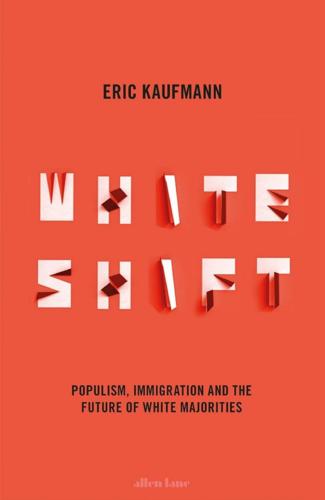
Whiteshift: Populism, Immigration and the Future of White Majorities
by
Eric Kaufmann
Published 24 Oct 2018
A drop in white domestic migration and a rise in minority inflows was akin to turning up the hot tap and turning off the cold: the temperature in the bath soon increased. Notice this is a different process from ‘white flight’, in which local whites see minorities entering, fear the worst, sell up and leave, changing the composition of the area, which in turns prompts others to depart, fuelling a chain reaction.46 There is virtually no evidence that this is happening anywhere in the West today. Throughout the Western world, the dominant process is not white flight but white avoidance. This consists of white majorities moving towards areas that are heavily white, which involves a concomitant process of avoiding diverse places.
…
Enjeti describes herself as having a front-row seat on the suburb’s white flight. ‘The majority of these white families … move across a newly expanded four-lane road to the adjacent northern county, Forsyth, a stone’s throw from their former domiciles.’ She quotes a sociologist, Samuel Kye, an expert on ethnoburbs, who told her that a significant presence of minorities in a prosperous suburb is ‘a near perfect predictor’ of ‘white exodus’. Though the Asian presence is what Jonathan Haidt terms the ‘elephant’ – the unconscious motive – for white flight or avoidance, Enjeti picks up on what Haidt calls the ‘rider’, our conscious rationalization for our subconscious decisions: namely, the liberal rationale that white children will be adversely affected by competitive Asian students and will perform better in a more holistic scholastic environment.
…
Kaufmann and G. Harris, ‘ “White Flight” or positive contact? Local diversity and attitudes to immigration in Britain’, Comparative Political Studies 48:12 (2015), 1563–90. 39. P. Watt, G. Millington and R. Huq, ‘East London mobilities: The “Cockney Diaspora” and the remaking of the Essex ethnoscape’, in P. Watt and P. Smets (eds.), Mobilities and Neighbourhood Belonging in Cities and Suburbs, Basingstoke, 2014: Palgrave MacMillan, pp. 16–17. 40. Ibid., p. 18. 41. L. Hedman and E. Hoplmqvist, ‘Producing and reproducing ethnic residential segregation. Is “white flight” enough to capture the mobility motives of natives?’
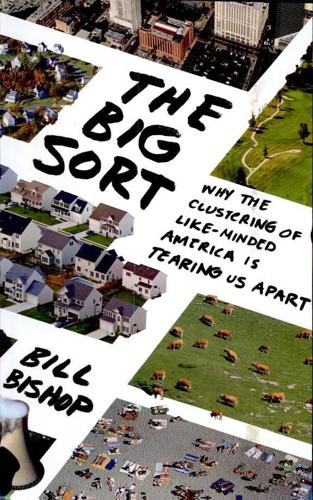
The Big Sort: Why the Clustering of Like-Minded America Is Tearing Us Apart
by
Bill Bishop
and
Robert G. Cushing
Published 6 May 2008
By contrast, in 2000, 30 percent of America's white population lived in counties that provided Republican landslide margins in the 2004 presidential election (see Figure 2.6). The real "white flight" of the past two generations has been whites moving to communities that were becoming staunchly Republican. Figure 2.5 The Immigration Divide Foreign-born citizens move to Democratic counties. Percent of County Population That Is Foreign-Born Sources: Dave Leip's Atlas of U.S. Presidential Elections, http://www.uselectionatlas.org; U.S. Census of Population, http://www.census.gov. Figure 2.6 The New White Flight Whites have increasingly clustered in the counties that voted Republican in 2004.
…
Or was it ending with education? It was hard to tell. By the turn of the twenty-first century, it seemed as though the country was separating in every way conceivable. Race An astounding 40 percent of the country's 320 metropolitan areas lost white population in the 1990s. The common notion of "white flight" is as a Caucasian escape from the central cities to the suburbs. In the Big Sort, however, there was a wholesale shift of white residents from one set of cities to another. Whites fled two kinds of cities. They abandoned older factory towns in the North and Midwest. Pittsburgh, Detroit, Buffalo, Hartford, Providence, Cleveland, Milwaukee, Jersey City, and Newark all lost tens of thousands of white residents.
…
See also Religion Bicycle racing, [>] Big Sort-and associations of ideological intents, [>], and Colorado, [>]–[>], and communities of like-mindedness, [>]–[>], [>], [>]–[>], [>]–[>], [>]–[>], [>]–[>], economics of, [>]–[>], and education, [>]–[>], [>] n; future of, [>]–[>], and midterm elections (2006), [>]–[>]; and national consensus, [>]–[>]; origin of term, [>]; and politics of migration, [>]–[>], [>]–[>], [>]–[>], [>], and presidential campaign (2004), [>]–[>]; and religion, [>]–[>], [>]; research evidence on, [>]–[>]; and rural areas, [>]–[>], and Tiebout migration, [>]–[>] See also Advertising; Lifestyle; Polarization; Political segregation; Religion Birkenstocks, [>] n Birmingham, Ala., [>], [>], [>] Birth control, [>], [>] Bishop, Dave, [>], [>] Bismarck, N.Dak, [>], [>]–[>] Blacks and midterm election (2006), [>], migration of, to cities with strong black communities, [>], [>], [>]; military service of, [>], northern migration of, [>]; and political parties, [>], [>], prejudice and discrimination against, [>], and riots, [>], [>], [>], [>], and trust in government, [>], voting rights for, [>] See also Civil rights movement Blake, Aaron, [>] n Blake, Eugene Carson, [>], [>], [>] Bleifuss, Joel, [>] n Blue laws, [>] BMW, [>] n Boise, Idaho, [>], [>] n, [>] Bono, [>] Boone Pickens, [>] Borelli, Thomas, [>] Boston, Mass., [>] n, [>]–[>], [>] Boston Globe, [>] Boulder, Colo and civic vitality, [>]–[>], and Deliberation Day research, [>]–[>], [>] n, and Democratic Party, [>], and environmentalism, [>]; Nike and snowboarders in, [>] Bowling Alone (Putnam), [>], [>]–[>] Boyle, Tony, [>] n Bradley, Bill, [>] Bradley Foundation, [>] Brady, Tom, [>] Brammer, Billy Lee, [>] Brandeis University, [>] Breakfast at Tiffany's, [>] Breese, Doug, [>]–[>], [>] The Bridges of God (McGavran), [>]–[>], [>], [>] Brinton, Henry, [>] Britain, [>], [>], [>], [>]–[>], [>], [>], [>] Broad, Eh, [>] Broder, David, [>], [>], [>]–[>] n Brookings Institution, [>] Brooklyn Brothers advertising agency, [>] Brooks, David, [>]–[>], [>] Brownstein, Ronald, [>], [>] Brubaker, Harold, [>] Brueckner, Jan, [>] n Brutus (antifederalist writer), [>], [>] Buckley, William F, [>] Bucknum, Steve, [>]–[>], [>]–[>] Bundy, McGeorge, [>] Burdick, Eugene, [>] n Burnham, Walter Dean, [>], [>], [>] Burns, Conrad, [>] Bush, George W and American Legislative Exchange Council (ALEC), [>], approval rating for, [>]–[>], [>] n, [>], attitudes toward, based on political party affiliation, [>]; and California vote (2004), [>], [>], [>] n, church membership of, [>], [>], and Colorado vote (2004), [>], [>]; confirmation bias of supporters of, [>]–[>], and environmental issues, [>]; and exit polls on (Election Day 2004), [>]–[>], [>] n, and exurban areas, [>]–[>], and fundamentalists, [>], and Iraq War, [>] n; and marriage gap during 2004 election, [>] n, [>]–[>]; and midterm elections (2006), [>], and Missouri vote (2004), [>], and Oregon vote (2004), [>], [>], political segregation and 2000 and 2004 elections, [>]–[>], [>], [>] n, and presidential campaign (2000), [>], [>], and presidential campaign (2004), [>] n, [>], [>]–[>], [>]–[>]; and question of competence, [>] n; and Republican landslide versus competitive counties (2004), [>], and Republican multigenerational effort for 2000 and 2004 elections, [>]–[>], State of the Union address by, [>], and stem cell research, [>], [>], supporters of, [>], [>]–[>], [>], [>], [>] n, [>]–[>], [>], [>], [>]–[>], and target marketing in 2004 election, [>]; and Texas vote (2000 and 2004), [>], [>]–[>], [>]; and Washington state vote (2000), [>] Calhoun, Craig, [>] California conservative movement in Orange County, [>], [>] n, [>], [>], [>], Crystal Cathedral in Orange County, [>], environmentalism in, [>]; families in, [>]–[>], legislative redistricting in, [>] n, lifestyle communities m, [>]–[>]; migration from, [>], migration to, [>], movies and movie industry in, [>], [>]; North Coast Church in Vista, [>]–[>], and presidential elections, [>]–[>], [>] n, Saddleback Church in Orange County, [>], [>], [>], [>], [>]–[>], [>], [>], [>]; same-sex unions in, [>], sex education in schools in, [>], Silicon Valley in, [>]–[>], [>], [>], stem cell research in, [>]–[>], and textbook treatment of gays and lesbians, [>], Watts riots in, [>], [>], [>], [>]; white flight from Orange County, [>]. See also specific cities Cambridge, Mass., [>], [>] n, [>] Campaigns. See Political campaigns Campbell, David, [>] Canada, [>] Canvassers, [>]–[>], [>] n Carlin, Diana, [>] Carmines, Edward G., [>]–[>] n, [>] Carnahan, Jean, [>] Carnegie Foundation, [>] Carroll, Jackson, [>] Carsey, Thomas, [>]–[>] Carter, Jimmy-competence of, [>] n; on distrust of government and other public institutions, [>]–[>], [>] n, and 1976 election, [>], [>], [>], [>], [>], [>]; and 1980 election, [>], [>], Republicans on, [>] Casey, Bob, Jr., [>] n Castells, Manuel, [>] Catholic Church, and authority of pope, [>], and birth control, [>]; loss of trust in bishops' edicts, [>], and private schools, [>] n, and Second Vatican Council, [>], See also Religion Cato (antifederalist writer), [>] Catskills resorts, [>] Center for Genetics and Society, [>] Chafee, Lincoln, [>] Chamber of Commerce, U.S., [>] The Changing American Voter (Nie et al), [>], [>] n Chapel Hill, N.C., [>] Charles County, Md., [>] Chicago, Ill. creative-class workers in, [>], educational level in, [>] n; as high-tech city, [>], [>] n; megachurch in, [>], migration to, [>], [>], [>] Chicago Tribune, [>]–[>] Chihuly, Dale, [>] Child poverty, [>] Child rearing, [>]–[>] Children's Defense Fund, [>] Cho, David Yonggi, [>], [>] Christian Century, [>] Christian Mass Movements in India (Pickett), [>] Christianity.
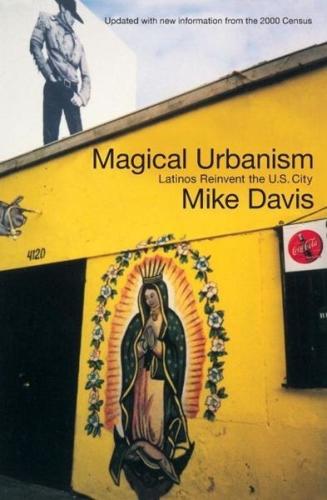
Magical Urbanism: Latinos Reinvent the US City
by
Mike Davis
Published 27 Aug 2001
second city, Los Angeles now also has a Salvadorean population equal to or greater than San Salvador.^^ while, has as many Puerto York City, Ricans as San Juan and as minicans as Santo Domingo. Without boom, many big American New cities this mean- many Do- Latino population would be dramatically shrinking in the face of accelerated white flight and, since 1990, Black out- migration. "The Greater Los Angeles and New York City metro areas," the National Journal notes, "each suffered a net loss of more than one nos, with help million domestic migrants from 1990-95." Lati- from Asian immigrants, compensated dus to the edge cities for this exo- and exurbs.^^ The stubbornly binary discourse of American public culture MAGICAL URBANISM has, however, yet to register the historical significance of this The ethnic transformation of the urban landscape.
…
Tired, sad vivifications: little homes undergo miraculous their peeling facades repainted, re- sagging roofs and MAGICAL URBANISM 52 porches rebuilt, and yellowing lawns replanted in cacti and azaleas.. Cumulatively the sweat equity of 75,000 or so Mexican and Sal- vadorean homeowners has become an unexcelled constructive force (the opposite of white flight) working to restore debilitated neigh- borhoods to trim respectability Moreover, the insatiable immigrant demand for family housing has allowed older African- American residents to reap unexpected gains in home sales: a serendipitous aspect of "ethnic succession" that has been ignored by analysts who focus only on the rough edges of Black/ Latino relations.
…
Continuing federal Title largely failed to make up I subsidies to inner-city education have for the favoritism majority state legislatures toward growth (still belts. 1990s, in the new shown by suburban- schools in edge-city Moreover, the resegregation of schools during the wake of further white flight (from both cities and public education) and the federal courts' rulings against man- EDUCATION GROUND ZERO 115 dated integration, have affected Latino children even African- Americans (see Table 11). According to sity's Civil more than Harvard Univer- Rights Project (using 1997 data), "nationwide, nearly 70 percent of black students and 75 percent of Latinos attend schools that are predominantly black, Latino or Native Ameri»210 can.
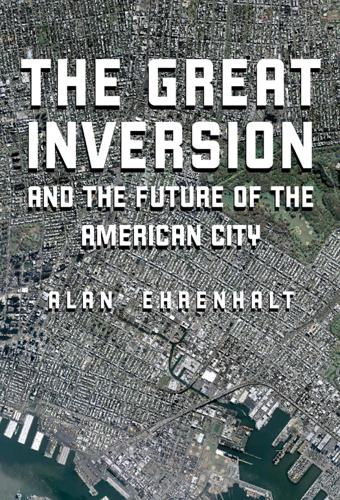
The Great Inversion and the Future of the American City
by
Alan Ehrenhalt
Published 23 Apr 2012
When it comes to immigrants achieving a role in county government that equates to their population in the county, there are few signs of progress as yet. But the most intriguing question of all is the question of Gwinnett’s demographic future. It is a question of whether the close division of white and nonwhite is sustainable—whether a new round of white flight will take place, into more distant counties such as Jackson or Forsyth, leaving behind a minority-dominated Gwinnett. The white-flight scenario is unconvincing, for several reasons. One is that many of the remaining white home owners are older people who will choose to age in place, rather than taking up new roots in an even more distant exurban county. Another is that this sort of flight means choosing to live many miles away from jobs and amenities, not only those in Atlanta but even those in Gwinnett itself.
…
The nature of Cleveland Heights’ racial challenge has changed enormously in the past several decades. In the 1960s, it was based on a fear of blockbusting, massive white flight, as occurred in the suburb of East Cleveland immediately to the north—and on liberal concerns about discrimination against black families wishing to move into town. An African American arts center was firebombed in the mid-1960s. Those problems were taken care of. There was no massive white flight, thanks in large part to the quality of much of the housing stock, and church groups and other activist organizations put an end to the problem of discrimination in sales.
…
The Hispanic population began to boom in DeKalb County, on the city’s eastern border, and especially in Gwinnett County, the much larger and less developed territory just north of DeKalb. In the late 1990s, Gwinnett was in the midst of a spectacular residential building boom that would boost its overall population from 352,000 to 588,000 in the course of a decade. Much of this can reasonably be described as white flight, a response to the emergence of Atlanta’s African American majority population and its control of city politics. Gwinnett was a largely rural expanse of 437 square miles, 80 percent unincorporated, and in the 1990s it was being packed with subdivision after subdivision, cul-de-sacs and shopping centers and multicar garages.

The New Urban Crisis: How Our Cities Are Increasing Inequality, Deepening Segregation, and Failing the Middle Class?and What We Can Do About It
by
Richard Florida
Published 9 May 2016
Frey, Alec Friedhoff, Emily Garr, Emilia Istrate, Elizabeth Kneebone, Robert Puentes, Adie Tomer, and Howard Wial, “State of Metropolitan America,” Brookings Institution, 2010, www.brookings.edu/research/reports/2010/05/09-metro-america; William H. Frey, “The End of Suburban White Flight,” Brookings Institution, July 23, 2015, www.brookings.edu/blogs/the-avenue/posts/2015/07/23-suburban-white-flight-frey. 6. Elizabeth Kneebone and Alan Berube, Confronting Suburban Poverty in America (Washington, DC: Brookings Institution Press, 2013). 7. Mary O’Hara, “Alan Berube: We Are Moving Poverty to the Suburbs,” The Guardian, May 6, 2015, www.theguardian.com/society/2015/may/06/alan-berube-moving-poverty-to-suburbs. 8.
…
I delved deep into the many challenges that face the rapidly growing cities of the world’s emerging economies, where urbanization is failing to spur the same kind of economic growth and rising living standards that it did for the advanced nations.3 The New Urban Crisis is different from the older urban crisis of the 1960s and 1970s. That previous crisis was defined by the economic abandonment of cities and their loss of economic function. Shaped by deindustrialization and white flight, its hallmark was a hollowing out of the city center, a phenomenon that urban theorists and policymakers labeled the hole-in-the-donut. As cities lost their core industries, they became sites of growing and persistent poverty: their housing decayed; crime and violence increased; and social problems, including drug abuse, teen pregnancy, and infant mortality, escalated.
…
In Sunbelt metros, the creative class has long been drawn to upscale suburban areas, and although commutes can be arduous, these places remain far more car-dependent than the metros listed above for the back-to-the-city pattern. In Rustbelt metros, whose urban centers were hollowed out long ago by pervasive white flight, the suburbs have long been the preferred locations for the creative class. In some of these places, including Greater Detroit, older suburbs that developed in the early part of the twentieth century along rivers or rail lines have been able to partially re-create the urban characteristics of walkability and mixed-use shopping, dining, and nightlife districts.
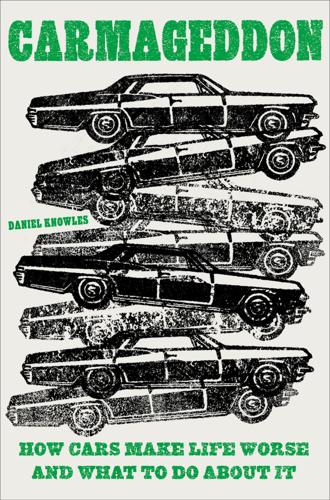
Carmageddon: How Cars Make Life Worse and What to Do About It
by
Daniel Knowles
Published 27 Mar 2023
Most egregious was the Downtown Connector, which was designed to run straight through the headquarters of the Atlanta Life Insurance Company, one of the city’s biggest Black-owned businesses. Highway engineers had the idea that the roads could provide actual segregation, and so perhaps prevent white flight from the city proper; essentially the idea was that roads would create multilane barriers that would split apart white and Black neighborhoods. But while they certainly wrecked the Black neighborhoods, they did not “protect” the white ones—white flight to the suburbs only intensified, and with it, so did the city’s traffic problems. By the 1960s and ’70s, congestion had got so bad on the Connector that Atlanta was actually ready to invest in public transport.
…
From the 1950s onward, Detroit entered into a slow-motion death spiral, which culminated in the 2013 bankruptcy. The invention of the automobile built Detroit into a glittering town, nicknamed the “Arsenal of Democracy” in World War II for its contribution to the Allied war effort. But it also helped to set in motion the collapse that followed. From the 1960s onward, white flight hollowed out American cities. It was enabled by the car. Nowhere did it happen more dramatically than in Detroit. Like Coventry, Detroit did not just produce cars—it also used them. Even as early as 1930, 34 percent of the city’s workers drove into the city. By the late 1940s, traffic jams snarled it up and sapped at the commercial viability of the city center.
…
Not all of this can be pinned on the car, of course. America’s awful history of slavery and segregation would have been just as dreadful had Karl Benz never invented his engine. Racism was the fundamental reason cities hollowed out so easily, not cars. But it was mass automobile ownership, and the construction of highways, that made white flight possible. Without it, the new suburbs that white people fled to would never have been viable. And the fact that white people could afford cars, and most Black people could not, made it possible for the car to be used to enforce segregation indirectly, at a time when the Civil Rights Act was making it harder for it to be enforced directly, as it had been for decades before.
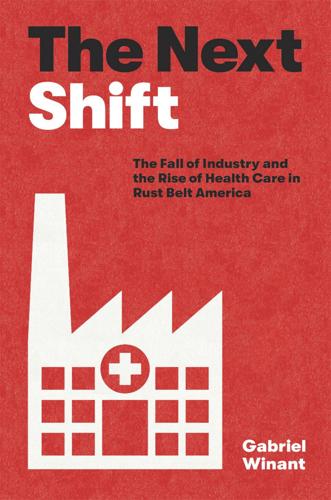
The Next Shift: The Fall of Industry and the Rise of Health Care in Rust Belt America
by
Gabriel Winant
Published 23 Mar 2021
Allen Dieterich-Ward, Beyond Rust: Metropolitan Pittsburgh and the Fate of Rust Belt America (Philadelphia: University of Pennsylvania Press, 2015); Earline Coburn, interview with Gabriel Winant, July 20, 2016. On white flight, see Thomas J. Sugrue, The Origins of the Urban Crisis: Race and Inequality in Postwar Detroit (Princeton, NJ: Princeton University Press, 1998); Eric Avila, Popular Culture in the Age of White Flight: Fear and Fantasy in Suburban Los Angeles (Berkeley: University of California Press, 2006). 7. John Bodnar, Roger Simon, and Michael P. Weber, Lives of Their Own: Blacks, Italians, and Poles in Pittsburgh, 1900–1960 (Urbana: University of Illinois Press, 1983); Marc McColloch, “Modest but Adequate: Standard of Living for Mon Valley Steelworkers in the Union Era,” U.S.
…
“I could remember some people on the street I didn’t know, I could remember them going up the street speaking a different [Eastern European] language.” Steep topography forbade the tract housing plans of suburban Detroit, Chicago, or Los Angeles, where new developments could spread out and attract white flight.6 Moreover, Pittsburgh’s stagnation was no match for the economic dynamism and diversity of such metropolitan economies. In Pittsburgh and the industrial towns clustered around it, there were far fewer new housing starts in the postwar years. There was little space to move into, and white steelworker households, which had enjoyed high rates of homeownership since the prewar years, were anyway too entrenched to leave quickly.
…
Once emptied, this historic center of Black Pittsburgh was replaced by the Civic Arena, the venue rejected by Highland Park, whose size and surrounding parking lots walled off the remains of the Hill from downtown.24 All told, urban renewal displaced at least 5,400 families by 1966, while only 1,719 new dwellings were constructed or underway. The program succeeded in driving African Americans farther from downtown, further penning them in to constricting space. Outside of the Hill itself, Homewood-Brushton received the most refugees from urban renewal, and rapid white flight followed. Homewood’s Black population rose from 13 percent in 1940 to 70 percent in 1960 and 86 percent by 1968. Homewood and the Hill were the neighborhoods that exploded in riots after the assassination of Martin Luther King Jr. in 1968. They were the places where disinvestment struck first and hardest.
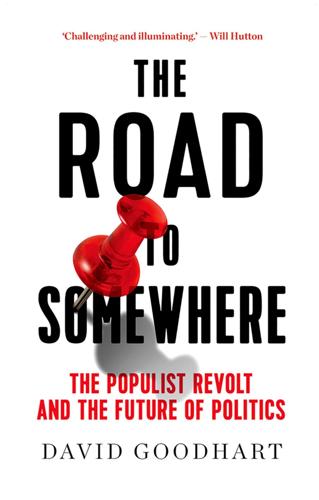
The Road to Somewhere: The Populist Revolt and the Future of Politics
by
David Goodhart
Published 7 Jan 2017
Yet there was no white British ‘return’ when the city began to thrive once more in the 1980s after a long period of decline. There are a few places in outer London like Barking and Dagenham, where the speed of change suggests a strong element of hostile ‘white flight’ from diversity, but in general the reasons for white exit are many and complex, to do with wanting fresh air and greater space to bring up children as well as discomfort with rapidly changing neighbourhoods. Mainstream commentators are often reluctant to admit even an element of white flight. One reason for this is, I think, that they confuse white discomfort about a rapidly changing neighbourhood with white antipathy to people of different races.
…
But scratch the surface and there is deep disagreement about the extent of the integration problem, how to deal with it, and even what the goal is and why it matters. One persuasive anti-integration argument runs like this: given how important ethnicity evidently remains to both minorities and majorities (look at the extent of white flight) what is wrong with some degree of separation? Is peaceful co-existence really such a terrible thing? Where are the concrete harms from segregation so long as minorities are not held back by prejudice and discrimination? It is hard to challenge such a view about segregation because it depends on judgments about how things are going to turn out in a few decades’ time.
…
There has been an increase in mixed race couples and children (though much less partnering out among South Asians), a gradual increase in cross-ethnic friendship with only 37 per cent of white Britons saying they have no non-white friends, some decline in residential segregation (though mainly driven by higher intra-minority mixing) and the emergence of a much larger minority middle class with some entry into the business and cultural elites (especially among British Indians and Chinese).27 On the negative side there is a story of ‘white flight’ and parallel but entirely separate lives in some places. There is the sheer indigestibility problem created by the speed/scale of recent inflows and the mixed story of central and eastern Europeans some of whom act like commuter immigrants and make no effort to mix while others are settling and integrating well.
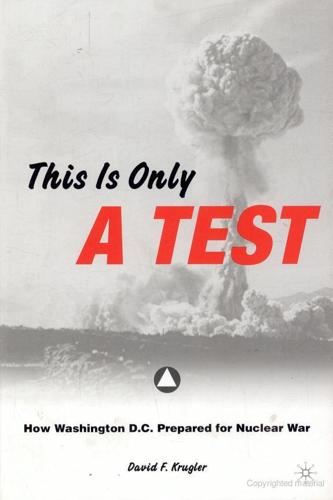
This Is Only a Test: How Washington D.C. Prepared for Nuclear War
by
David F. Krugler
Published 2 Jan 2006
Public schools, playgrounds, and recreation areas were segregated; many trade unions restricted membership to whites. After World War II, black Washingtonians and their allies successfully redoubled ongoing campaigns to dismantle the structure of second-class citizenship. The end of legally protected segregation, most notably the integration of schools in 1954, spurred “white flight” to suburbs in Virginia and Maryland. While Washington’s population began to shrink and the city obtained a black majority, greater Washington continued to grow. In 1948, the metropolitan area population was approaching 1.5 million, but more than 80 percent of the region’s jobs were inside the District.5 Area planners and leaders recognized that solutions for postwar problems required regional cooperation, a need complicated by the federal government’s role as the capital area’s largest employer.
…
Between 1950 and 1957, Montgomery County added more than 130,000 whites to its 1950 population of 164,401, while Fairfax County and Falls Church, Va., more than doubled their white populations. White families moving to the area usually opted for suburban residency, whereas African Americans settled in the District. By 1965, 60 percent of the District’s residents were black.52 White flight was a national trend, but in Washington it overlapped with postwar desegregation. For a democratic nation committed to fighting communism, a segregated capital often proved embarrassing. Foreign visitors and diplomats of color held out their passports to get lunch counter service, a State Department official implored a hotel to honor the reservation of the foreign minister of an African nation.53 In response, both Presidents Truman and Eisenhower publicly committed themselves to desegregating Washington, but as historian Constance McLaughlin Green noted: “The battle for Washington was not to be won merely by a message from the White House.”
…
For every white parent willing to adjust, however, many more preferred to move. By September 1957, the District had lost an estimated 8,000 white pupils, while black enrollment had grown by almost 13,000, making the public school system 70 percent black. McKinley High School itself lost 273 white pupils and added 477 black students.57 White flight was already underway when the schools desegregated, but the transition led more white families to leave the District for the suburbs. U.S. News & World Report used warlike language to describe the changes. Whites were “fleeing the city as Negro neighborhoods crowd up against them” and “[p]ublic parks are, in large measure, being deserted by whites and taken over by Negroes.”58 Hansen himself admitted that “adjustment by change of address” was the choice of many whites.59 Another observer was blunter: “Parents unwilling to send their children to integrated schools have been steadily moving their homes to nearby Maryland and Virginia.”60 Of course, African Americans weren’t “invaders,” and not all whites “retreated” to the suburbs.
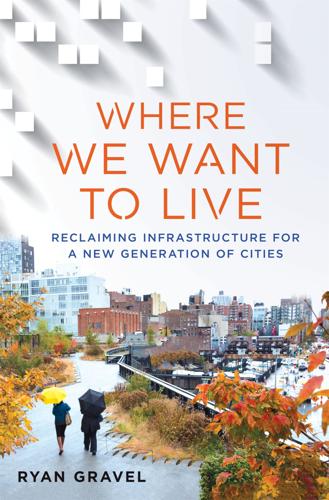
Where We Want to Live
by
Ryan Gravel
Published 2 Feb 2016
The small-scale buildings that had supported a vibrant hippie culture in the 1960s and 1970s had been almost completely demolished by the time I started college. Relative to their stronger position today, most in-town neighborhoods were lifeless and tired, but they had at least stabilized from a generation of physical destruction and social turmoil at the hands of highway building, depopulation, redlining, and white flight. These conditions were real and devastating for many people, but for better or worse, they had also begun to establish an appropriately fertile environment for the reimagination of the city’s future. Of course I did not recognize that opportunity at the time. I was just a loner student mesmerized by the railroads that entangle those communities and connect them directly but discretely to the more affluent sides of town.
…
Martin Luther King Jr. and was once described by Fortune magazine as the “richest negro street in the world.”4 Atlanta’s notable black middle class, however, actually resided more substantively on the city’s west side, anchored by the colleges of the Atlanta University Center, which had consolidated their campuses there by the 1940s. Rising political power allowed the negotiation for black residential expansion west beyond the Louisville & Nashville belt along corridors like Cascade Avenue, Hunter Street (later Martin Luther King Jr. Drive), and into other communities that white flight would eventually leave behind. While the belt line railroads likely played only background roles in this shift toward an expanding black middle class in Atlanta, the communities alongside them became the origin and anchor of a new African American west-side prosperity, helping to define an era of opportunity and eventually a more equitable, if still imperfect, capital of the American South.
…
I don’t ever remember walking to buy groceries, but as a kid in the 1980s we made that half-mile journey almost daily to play video games at Razzle Dazzle or to get ice cream and Cokes at Sugar Bear. The construction of Huntley Hills corresponds exactly with the large social, cultural, and political shifts taking place in Atlanta and across America, including the desegregation of public schools, white flight out of central cities, growing dependence on two cars per family, and massive public investment in highways and other roadway infrastructure. In fact, the development of Huntley Hills was almost certainly incentivized by the concurrent construction of I-285, Atlanta’s now-infamous perimeter expressway, which opened as a four-lane highway in 1969.
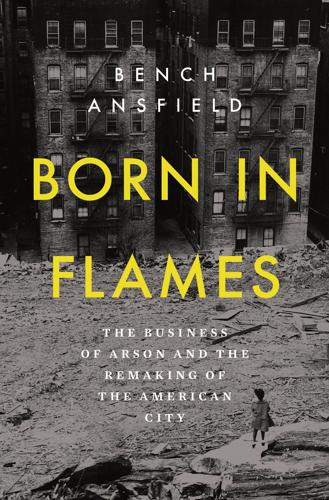
Born in Flames
by
Bench Ansfield
Published 15 Aug 2025
The continued in-migration of Black and Puerto Rican residents and out-migration of ethnic whites in the 1960s and 1970s coincided with a new title: the South Bronx, which followed the path of the fires as they spread outward from the southernmost sections of the borough, hastening white flight. By 1982, the New York Times had concluded that the South Bronx stretched all the way up to Fordham Road, a full four miles north of the 138th Street border of 1969. As one journalist put it, “When it became the ‘South Bronx,’ the South Bronx was doomed.”12 As the newly christened South Bronx expanded, the name became a shorthand for describing the racial anxieties that accompanied the fires. The label seemed to encompass well-worn tropes of the decades of urban renewal and blockbusting (the practice of racial fearmongering by real estate agents cashing in on white flight), when the specter of “racial succession”—or desegregation—was seen as an existential threat to the integrity of white enclaves.
…
For the first- and second-generation immigrant families who filled its apartment houses, a move up to the Bronx brought not only a change in address but a shift in one’s race and class coordinates as well. During the first half of the twentieth century, the borough was a way station on the road to whiteness.7 The snapshot mourned in these accounts was taken before significant numbers of Black and Puerto Rican residents settled in the borough, which is to say before the onset of white flight. The Bronx pastoral commemorates racial exclusion. As late as 1940, Black and Puerto Rican residents represented only around 2 percent and 4 percent of the Bronx’s population, respectively. Much of the western and northern portions of the borough remained “closed to black residents . . . right up to the early 1960s.”
…
In most elegies of the borough, the death knell is sounded by the late-1960s opening of Co-op City in the far northeastern Bronx. Co-op City is the largest housing cooperative in the world, and as yet another Moses-backed project, it catered exclusively to the middle class, 80 percent of whom were white when it opened its doors. Although it was built to contain white flight, Co-op City is widely blamed for hastening the deterioration of the Grand Concourse, the Park Avenue of the Bronx, with one observer remarking, “It just siphoned people out of there like a vacuum cleaner.”11 Accounts of these events often risk overemphasizing Moses’s urbicidal footprint. The Bronx-raised critic Marshall Berman cautions that Moses “turned potential long-range entropy into sudden inexorable catastrophe.”
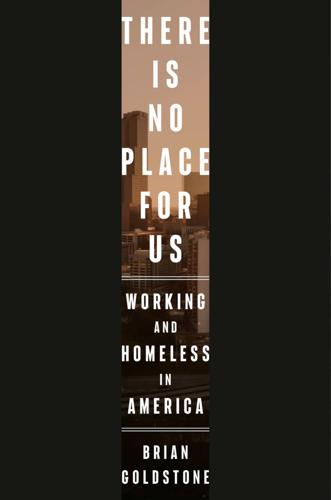
There Is No Place for Us: Working and Homeless in America
by
Brian Goldstone
Published 25 Mar 2025
GO TO NOTE REFERENCE IN TEXT a six-million-person expanse of suburbs: “Atlanta Metro Area Now 6th Largest in the U.S.,” Metro Atlanta Chamber, March 14, 2024. GO TO NOTE REFERENCE IN TEXT Born of white flight in the 1960s: Kevin Kruse, White Flight: Atlanta and the Making of Modern Conservatism (Princeton, N.J.: Princeton University Press, 2007); Sam Rosen, “Atlanta’s Controversial ‘Cityhood’ Movement,” The Atlantic, April 26, 2017. GO TO NOTE REFERENCE IN TEXT “build up a city separate from Atlanta and your Negroes”: Kruse, White Flight, 247–48. GO TO NOTE REFERENCE IN TEXT “a politics of suburban secession”: Susan Eaton, “How a ‘New Secessionist’ Movement Is Threatening to Worsen School Segregation and Widen Inequalities,” The Nation, May 15, 2014; Emily Badger, “How Atlanta’s Politics Overtook the Suburbs, Too,” The New York Times, December 9, 2020.
…
After their first few days in the neighborhood, Maurice and Natalia wondered if they had stumbled into a cosmic prank: they’d thought they were putting down roots in the birthplace of Dr. King and had landed instead in a majority-white epicenter of suburban sprawl. They hadn’t realized that much of Atlanta was actually a six-million-person expanse of suburbs located beyond the city proper. Born of white flight in the 1960s and ’70s, many of these communities, especially the northern cities and counties, had been defined early on by their staunch segregationism (two spokesmen for Sandy Springs promised in 1965 to “build up a city separate from Atlanta and your Negroes and forbid any Negroes to buy, or own, or live within our limits”).
…
A result was that when whites-only projects were finally desegregated in the late 1960s, these buildings had a large number of vacant apartments: the demand for such units among white families had dramatically diminished. This, combined with growing pressure to loosen eligibility requirements, led local housing authorities to begin accepting more and more low-income applicants. Before long, the nation’s projects were majority-Black. White flight made it possible for families like Britt’s to find housing. It was at this point that politicians started to gut funding for the projects. Beginning with President Richard Nixon, who referred to these complexes as “monstrous, depressing places,” successive administrations went on to decimate the government’s budget for low-income housing.
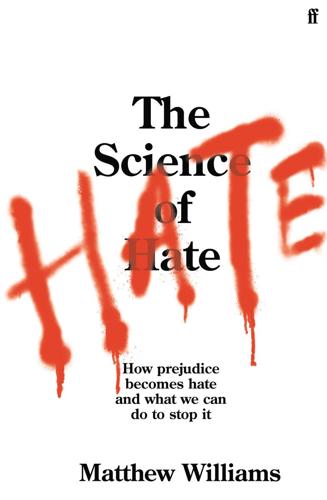
The Science of Hate: How Prejudice Becomes Hate and What We Can Do to Stop It
by
Matthew Williams
Published 23 Mar 2021
. †† An acronym for the anti-Semitic conspiracy theory known as ‘Zionist occupation government’. ‡‡ Since that time Facebook has increased its number of Burmese-speaking moderators. 11 The Tipping Point from Prejudice to Hate and How to Prevent It Political scientist Morton Grodzins adopted the physics concept of the tipping point to explain his theory for ‘white flight’ from mixed neighbourhoods in 1950s America.1 He argued that racially mixed neighbourhoods contained white families with varying degrees of tolerance towards black people. This created an unstable situation, where the most racist families would leave town first, shifting the balance towards majority black.
…
Following the publication of the results, a policy was enacted that ordered housing be ‘allocated on the basis of need, regardless of race, religion and color’. Segregated public housing ended in Newark, and white and black residents were mixed in all eight housing projects. A minority of residents complained about the policy, but quickly backed down when it was explained to them, along with the scientific evidence.17 A decade later saw white flight to the suburbs, turning the city of Newark majority black. Along with white people went political influence, and unemployment and crime rose. In 1967, a black man was badly beaten by white cops, resulting in the Newark race riots in which twenty-six people died, twenty-four of whom were residents.
…
Abdallah, Abdalraouf, 1 Abedi, Salman, 1, 2, 3, 4 abortion, 1, 2 Abu Sayyaf Group, 1 abuse, 1, 2, 3, 4, 5 accelerants to hate, 1, 2, 3, 4, 5, 6, 7, 8, 9, 10 accelerationists, 1 addiction, 1, 2, 3, 4 Admiral Duncan bar, 1 adolescence, 1, 2, 3, 4, 5, 6, 7 advertising, 1, 2, 3, 4, 5 African Americans, 1, 2, 3, 4, 5, 6, 7 afterlife, 1, 2 age, 1, 2 aggression: brain and hate, 1, 2, 3, 4, 5; false alarms, 1; group threat, 1, 2, 3, 4, 5, 6; identity fusion, 1; mortality, 1; pyramid of hate, 1; trauma and containment, 1, 2 AI, see artificial intelligence Albright, Jonathan, 1 alcohol, 1, 2, 3, 4, 5, 6, 7, 8 algorithms: far-right hate, 1, 2, 3, 4; filter bubbles and bias, 1, 2; Google, 1, 2, 3; online hate speech, 1, 2, 3, 4, 5, 6; Tay, 1, 2; tipping point, 1, 2; YouTube, 1 Algotransparency.org, 1 Allport, Gordon, 1, 2, 3, 4 Al Noor Mosque, Christchurch, 1 al-Qaeda, 1, 2 Alternative für Deutschland (AfD), 1 alt-right: algorithms, 1, 2; brain and hate, 1; Charlottesville rally, 1, 2; counter-hate speech, 1; definition, 1n; Discord, 1; Facebook, 1, 2, 3; fake accounts, 1; filter bubbles, 1, 2; red-pilling, 1, 2; social media, 1, 2; Trump, 1, 2; YouTube, 1 Alzheimer’s disease, 1 American Crowbar Case, 1 American culture, 1 American Nazi Party, 1, 2 Amodio, David, 1n amygdala: brain and signs of prejudice, 1, 2; brain tumours, 1; disengaging the amygdala autopilot, 1; hate and feeling pain, 1, 2; and insula, 1; neuroscience of hate, 1n, 2, 3, 4; parts that edge us towards hate, 1; parts that process prejudice, 1; prepared versus learned amygdala responses, 1, 2; processing of ‘gut-deep’ hate, 1; recognising facial expressions, 1n, 2; stopping hate, 1, 2; trauma and containment, 1, 2; unlearning prejudiced threat detection, 1 anger, 1, 2, 3, 4, 5, 6, 7, 8 anonymity, 1, 2 anterior insula, 1n Antifa, 1, 2n, 3 anti-gay prejudice, 1, 2, 3, 4, 5, 6, 7, 8 anti-hate initiatives, 1, 2 antilocution, 1 anti-Muslim hate, 1, 2, 3, 4, 5, 6 anti-Semitism, 1, 2, 3, 4, 5, 6 anti-white hate crime, 1 Antonissen, Kirsten, 1, 2 anxiety: brain and hate, 1, 2, 3, 4; harm of hate speech, 1; intergroup contact, 1, 2; subcultures of hate, 1, 2; trauma and containment, 1; trigger events, 1, 2 Arab people, 1, 2, 3, 4, 5, 6 Arbery, Ahmaud, 1 Arkansas, 1, 2 artificial intelligence (AI), 1, 2, 3, 4 Asian Americans, 1, 2 Asian people, 1, 2, 3, 4 assault, 1, 2, 3 asylum seekers, 1, 2, 3, 4 Athens, 1 Atlanta attack, 1 Atran, Scott, 1, 2 attachment, 1 attention, 1, 2, 3 attitudes, 1, 2, 3, 4, 5, 6 Aung San Suu Kyi, 1 austerity, 1 Australia, 1 autism, 1 averages, 1, 2 avoidance, 1, 2, 3 Bali attack, 1 Bangladeshi people, 1 BBC (British Broadcasting Corporation), 1, 2, 3 behavioural sciences, 1, 2 behaviour change, 1, 2, 3 beliefs, 1, 2, 3 Bell, Sean, 1, 2 Berger, Luciana, 1 Berlin attacks, 1 bias: algorithms, 1; brain and hate, 1, 2, 3, 4, 5, 6, 7; filter bubbles, 1; Google Translate, 1; group threat, 1, 2, 3, 4; police racial bias, 1; predicting hate crime, 1; stopping hate, 1, 2, 3; unconscious bias, 1, 2, 3, 4 Bible, 1 Biden, Joe, 1 ‘Big Five’ personality traits, 1 biology, 1, 2, 3, 4, 5, 6, 7 Birstall, 1 bisexual people, 1 Black, Derek, 1, 2 Black, Don, 1, 2, 3 blackface, 1 Black Lives Matter, 1 Black Mirror, 1n black people: author’s brain and hate, 1, 2, 3, 4, 5; brain and signs of prejudice, 1, 2; brain parts that edge us towards hate, 1; brain parts that process prejudice, 1; Charlottesville rally, 1, 2; disengaging the amygdala autopilot, 1; Duggan shooting, 1; feeling pain, 1; Google searches, 1, 2; group threat, 1, 2, 3, 4; online hate speech, 1, 2, 3, 4; police relations, 1, 2; predicting hate crime, 1, 2; prepared versus learned amygdala responses, 1; pyramid of hate, 1, 2, 3n; recognising facial expressions, 1, 2; South Africa, 1; steps to stop hate, 1, 2, 3, 4; trauma and Franklin, 1, 2, 3, 4; trigger events, 1, 2, 3; unconscious bias, 1; unlearning prejudiced threat detection, 1, 2; white flight, 1 BNP, see British National Party Bolsonaro, Jair, 1 Bosnia and Herzegovina, 1, 2 bots, 1, 2, 3, 4, 5 Bowers, Robert Gregory, 1 boys, 1, 2 Bradford, 1 brain: ancient brains in modern world, 1; author’s brain and hate, 1; beyond the brain, 1; the brain and hate, 1; brain and signs of prejudice, 1; brain damage and tumours, 1, 2, 3, 4; brains and unconscious bias against ‘them’, 1; brain’s processing of ‘gut-deep’ hate, 1; defence mechanisms, 1; disengaging the amygdala autopilot, 1; figures, 1; finding a neuroscientist and brain scanner, 1; group threat detection, 1, 2; hacking the brain to hate, 1; hate and feeling pain, 1; locating hate in the brain, 1; neuroscience and big questions about hate, 1; overview, 1; parts that edge us towards hate, 1; parts that process prejudice, 1; prepared versus learned amygdala responses, 1; recognising facial expressions, 1; rest of the brain, 1; signs of prejudice, 1; steps to stop hate, 1, 2; tipping point to hate, 1, 2, 3, 4, 5; trauma and containment, 1, 2; unlearning prejudiced threat detection, 1; where neuroscience of hate falls down, 1 brain imaging: author’s brain and hate, 1; beyond the brain, 1; the brain and hate, 1; brain and signs of prejudice, 1, 2; brain injury, 1, 2; Diffusion MRI, 1; disengaging the amygdala autopilot, 1; finding a neuroscientist and brain scanner, 1; fusiform face area, 1; locating hate in the brain, 1; MEG, 1; neuroscience of hate, 1, 2, 3; parts that process prejudice, 1; prepared versus learned amygdala responses, 1; processing of ‘gut-deep’ hate, 1; subcultures of hate, 1, 2; unconscious bias, 1 brainwashing, 1, 2 Bray, Mark, 1n Brazil, 1, 2, 3 Breivik, Anders, 1, 2 Brexit, 1, 2, 3, 4n, 5, 6, 7, 8, 9 Brexit Party, 1, 2 Brick Lane, London, 1 Britain First, 1, 2 British identity, 1, 2 British National Party (BNP), 1, 2n, 3, 4, 5 Brixton, 1 Broadmoor Hospital, 1, 2 Brooker, Charlie, 1n Brooks, Rayshard, 1 Brown, Katie, 1, 2 Brown, Michael, 1, 2 Brussels attack, 1 Budapest Pride, 1 bullying, 1, 2 Bundy, Ted, 1 burka, 1, 2, 3 Burmese, 1 Bush, George W., 1 Byrd, James, Jr, 1 California, 1, 2n, 3 Caliskan, Aylin, 1 Cambridge Analytica, 1, 2 cancer, 1, 2 Cardiff University Brain Research Imaging Centre (CUBRIC), 1, 2, 3, 4 caregiving motivational system, 1 care homes, 1, 2 Casablanca, 1 cascade effect, 1, 2 categorisation, 1, 2, 3, 4 Catholics, 1 Caucasian Crew, 1 causality, 1, 2 celebrities, 1, 2, 3, 4 censorship, 1, 2 Centennial Olympic Park, Atlanta, 1 Centers for Disease Control (CDC), 1 change blindness, 1 charity, 1, 2, 3 Charlottesville rally, 1, 2, 3n, 4 chatbots, 1, 2, 3 Chauvin, Derek, 1 Chelmsford, 1 Chicago, 1 childhood: attachment issues, 1; child abuse, 1, 2, 3; child grooming, 1; child play, 1; failures of containment, 1, 2, 3, 4; group threat, 1, 2; intergroup contact, 1, 2; learned stereotypes, 1; online hate speech, 1, 2; predicting hate crime, 1; trauma and containment, 1, 2, 3, 4, 5, 6, 7, 8, 9, 10; trigger events, 1, 2; understanding the ‘average’ hate criminal, 1; understanding the ‘exceptional’ hate offender, 1, 2, 3 China, 1, 2, 3, 4 Chinese people, 1, 2, 3 ‘Chinese virus,’ 1, 2 Cho, John, 1 Christchurch mosque attack, 1 Christianity, 1, 2, 3 cinema, 1 citizen journalism, 1 civilising process, 1 civil rights, 1, 2, 3, 4 class, 1, 2 cleaning, 1 climate change, 1, 2 Clinton, Hillary, 1, 2 cognitive behavioural therapy, 1 cognitive dissonance, 1 Cohen, Florette, 1, 2 Cold War, 1 collective humiliation, 1 collective quests for significance, 1, 2 collective trauma, 1, 2 colonialism, 1n, 2 Combat 1, 2 comedies, 1, 2, 3 Communications Acts, 1, 2 compassion, 1, 2, 3 competition, 1, 2, 3, 4, 5, 6, 7, 8 confirmation bias, 1 conflict, 1, 2, 3, 4 conflict resolution, 1, 2, 3, 4, 5 Connectome, 1 Conroy, Jeffrey, 1 Conservative Party, 1, 2, 3 conspiracy theories, 1, 2, 3 contact with others, 1, 2 containment: failures of, 1; hate as container of unresolved trauma, 1; understanding the ‘exceptional’ hate offender, 1, 2, 3 content moderation, 1, 2, 3 context, 1, 2, 3 Convention of Cybercrime, 1 cooperation, 1, 2, 3, 4, 5, 6 Copeland, David, 1, 2, 3, 4, 5, 6, 7 coping mechanisms, 1, 2, 3, 4, 5, 6, 7 Cordoba House (‘Ground Zero mosque’), 1 correction for multiple comparisons, 1, 2n ‘corrective rape’, 1, 2 cortisol, 1 Council of Conservative Citizens, 1n counter-hate speech, 1, 2, 3, 4 courts, 1, 2, 3, 4, 5, 6 COVID-19 pandemic, 1, 2, 3 Cox, Jo, 1, 2, 3 Criado Perez, Caroline, 1 crime, 1, 2, 3, 4, 5, 6, 7 Crime and Disorder Act 1998, 1n crime recording, 1, 2, 3, 4 crime reporting, 1, 2, 3, 4, 5, 6, 7 Crime Survey for England and Wales (CSEW), 1 criminal justice, 1, 2, 3 Criminal Justice Act, 1, 2n criminal prosecution, 1, 2 criminology, 1, 2, 3, 4, 5, 6 cross-categorisation, 1 cross-race or same-race effect, 1 Crusius, Patrick, 1, 2 CUBRIC (Cardiff University Brain Research Imaging Centre), 1, 2, 3, 4 cultural ‘feeding’, 1, 2, 3, 4, 5 cultural worldviews, 1, 2, 3, 4, 5, 6, 7 culture: definitions, 1; group threat, 1, 2, 3; steps to stop hate, 1, 2, 3; tipping point, 1, 2, 3, 4, 5; unlearning prejudiced threat detection, 1 culture machine, 1, 2, 3, 4, 5 culture wars, 1 Curry and Chips, 1 cybercrime, 1 dACC, see dorsal anterior cingulate cortex Daily Mail, 1, 2 Dailymotion, 1 Daily Stormer, 1, 2n Daley, Tom, 1, 2 Darfur, 1 dark matter, 1 death: events that remind us of our mortality, 1; newspapers, 1; predicting hate crime, 1; religion and hate, 1, 2; subcultures of hate, 1, 2; trigger events, 1, 2 death penalty, 1, 2 death threats, 1 decategorisation, 1 De Dreu, Carsten, 1, 2, 3, 4 deep learning, 1, 2 defence mechanisms, 1 defensive haters, 1, 2 dehumanisation, 1, 2, 3, 4, 5, 6 deindividuation, 1, 2 deindustrialisation, 1, 2, 3, 4 Democrats, 1, 2, 3 Denny, Reginald, 1 DeSalvo, Albert (the Boston Strangler), 1 desegregation, 1, 2, 3 Desmond, Matthew, 1 Dewsbury, 1, 2, 3 Diffusion Magnetic Resonance Imaging (Diffusion MRI), 1, 2 diminished responsibility, 1, 2 Director of Public Prosecutions (DPP), 1 disability: brain and hate, 1, 2; group threat, 1, 2, 3, 4, 5, 6; intergroup contact, 1; Japan care home, 1, 2; online hate speech, 1; profiling the hater, 1; suppressing prejudice, 1; victim perception, 1n Discord, 1, 2, 3, 4 discrimination: brain and hate, 1, 2; comedy programmes, 1; Google searches, 1; Japan laws, 1; preference for ingroup, 1; pyramid of hate, 1, 2, 3; questioning prejudgements, 1; trigger events, 1, 2, 3 disgust: brain and hate, 1, 2, 3, 4, 5, 6; group threat detection, 1, 2, 3; ‘gut-deep’ hate, 1, 2; Japan care home, 1; what it means to hate, 1, 2 disinformation, 1, 2, 3 displacement, 1, 2 diversity, 1, 2, 3 dlPFC, see dorsolateral prefrontal cortex domestic violence, 1, 2, 3, 4, 5, 6, 7, 8, 9, 10 Doran, John, 1, 2, 3 dorsal anterior cingulate cortex (dACC), 1, 2, 3n, 4, 5, 6, 7, 8, 9 dorsolateral prefrontal cortex (dlPFC), 1n, 2, 3 Douglas, Mary, Purity and Danger, 1 drag queens, 1 drugs, 1, 2, 3, 4, 5, 6, 7, 8, 9 Duggan, Mark, 1 Duke, David, 1 Dumit, Joe, Picturing Personhood, 1 Durkheim, Emile, 1 Dykes, Andrea, 1 Earnest, John T., 1 Eastern Europeans, 1, 2, 3 Ebrahimi, Bijan, 1, 2, 3, 4, 5, 6 echo chambers, 1, 2n economy, 1, 2, 3, 4, 5, 6 EDL, see English Defence League education, 1, 2, 3, 4 Edwards, G., 1 8chan, 1, 2 elections, 1, 2, 3, 4, 5, 6 electroencephalography, 1n elites, 1 ELIZA (computer program), 1 The Ellen Show, 1 El Paso shooting, 1 Elrod, Terry, 1 Emancipation Park, Charlottesville, 1 Emanuel African Methodist Church, Charleston, 1 emotions: brain and hate, 1, 2, 3, 4n, 5, 6, 7, 8, 9; group threat, 1; subcultures of hate, 1; trigger events and mortality, 1; what it means to hate, 1, 2, 3, 4 empathy: brain and hate, 1, 2, 3, 4, 5, 6; feeling hate together, 1; group threat, 1, 2; steps to stop hate, 1, 2, 3; subcultures of hate, 1; trauma and containment, 1 employment, 1, 2, 3, 4, 5, 6, 7 English Defence League (EDL), 1, 2n, 3 epilepsy, 1, 2, 3, 4, 5 Epstein, Robert, 1 equality, 1, 2 Essex, 1 ethnicity, 1, 2n, 3, 4 ethnic minorities, 1, 2, 3, 4, 5, 6 ethnocentrism, 1 EU, see European Union European Commission, 1, 2 European Digital Services Act, 1 European Parliament, 1, 2 European Social Survey, 1 European Union (EU): Brexit referendum, 1, 2, 3, 4n, 5; Facebook misinformation, 1; group threat, 1, 2; online hate speech, 1, 2, 3; trigger events, 1 Eurovision, 1 evidence-based hate crime, 1 evolution, 1, 2, 3, 4, 5, 6, 7, 8 executive control area: brain and hate, 1, 2, 3, 4, 5, 6, 7, 8; disengaging the amygdala autopilot, 1, 2; extremism, 1; recognising false alarms, 1; trauma and containment, 1; trigger events, 1 exogenous shocks, 1 expert opinion, 1 extreme right, 1, 2, 3, 4, 5 extremism: Charlottesville and redpilling, 1, 2; feeling hate together, 1; online hate speech, 1; perceiving versus proving hate, 1; quest for significance, 1, 2, 3; subcultures of hate, 1, 2, 3, 4, 5, 6, 7; trauma and containment, 1; trigger events, 1, 2, 3 Facebook: algorithms, 1, 2; Charlottesville rally, 1, 2; Christchurch mosque attack, 1; far-right hate, 1, 2, 3, 4, 5; filter bubbles, 1, 2; how much online hate speech, 1, 2; Myanmar genocide, 1; online hate and offline harm, 1, 2, 3; redpilling, 1; stopping online hate speech, 1, 2, 3, 4 facial expression, 1, 2, 3, 4 faith, 1, 2 fake accounts, 1, 2; see also bots fake news, 1, 2, 3, 4 false alarms, 1, 2, 3 Farage, Nigel, 1, 2 far left, 1n, 2, 3, 4 Farook, Syed Rizwan, 1 far right: algorithms, 1, 2, 3, 4; brain injury, 1; Charlottesville rally, 1, 2, 3n, 4; COVID-19 pandemic, 1, 2; Facebook, 1, 2, 3, 4, 5; filter bubbles, 1, 2; gateway sites, 1; group threat, 1, 2; red-pilling, 1; rise of, 1; stopping online hate speech, 1; subcultures of hate, 1, 2, 3, 4, 5; terror attacks, 1, 2, 3; tipping point, 1, 2; trauma and containment, 1, 2, 3, 4n; trigger events, 1, 2; YouTube, 1 fathers, 1, 2, 3 FBI, see Federal Bureau of Investigation fear: brain and hate, 1, 2, 3, 4, 5, 6, 7; feeling hate together, 1; group threat, 1, 2, 3, 4, 5; mortality, 1; online hate speech, 1, 2, 3; steps to stop hate, 1, 2; trauma and containment, 1, 2; trigger events, 1, 2, 3 Federal Bureau of Investigation (FBI), 1, 2, 3, 4, 5, 6, 7 Federation of American Immigration Reform, 1 Ferguson, Missouri, 1 Festinger, Leon, 1 fiction, 1 Fields, Ted, 1 50 Cent Army, 1 ‘fight or flight’ response, 1, 2, 3 films, 1, 2 filter bubbles, 1, 2, 3, 4 Finland, 1, 2, 3, 4, 5, 6 Finsbury Park mosque attack, 1, 2, 3 first responders, 1 Fiske, Susan, 1 Five Star Movement, 1 flashbacks, 1 Florida, 1, 2 Floyd, George, 1, 2, 3 Flynt, Larry, 1 fMRI (functional Magnetic Resonance Imaging), 1, 2, 3, 4, 5, 6, 7 football, 1, 2, 3, 4, 5 football hooligans, 1, 2 Forever Welcome, 1 4chan, 1, 2 Fox News, 1, 2 Franklin, Benjamin, 1 Franklin, Joseph Paul, 1, 2, 3, 4, 5, 6, 7, 8 Fransen, Jayda, 1 freedom fighters, 1, 2 freedom of speech, 1, 2, 3, 4, 5, 6 frustration, 1, 2, 3, 4 functional Magnetic Resonance Imaging (fMRI), 1, 2, 3, 4, 5, 6, 7 fundamentalism, 1, 2 fusiform face area, 1 fusion, see identity fusion Gab, 1 Gadd, David, 1, 2n, 3, 4 Gaddafi, Muammar, 1, 2 Gage, Phineas, 1, 2 galvanic skin responses, 1 Gamergate, 1 gateway sites, 1 gay people: author’s experience, 1, 2, 3; brain and hate, 1, 2; Copeland attacks, 1, 2; COVID-19 pandemic, 1; filter bubbles, 1; gay laws, 1; gay marriage, 1, 2, 3; group associations, 1; group threat, 1, 2, 3, 4, 5; hate counts, 1, 2, 3, 4; physical attacks, 1, 2; profiling the hater, 1; Russia, 1, 2, 3, 4, 5; Section 1, 2, 3, 4; steps to stop hate, 1, 2, 3; trigger events, 1, 2; why online hate speech hurts, 1; see also LGBTQ+ people gay rights, 1, 2, 3, 4 gender, 1, 2, 3, 4, 5, 6, 7 Generation Identity, 1 Generation Z, 1, 2 genetics, 1n, 2, 3 genocide, 1, 2, 3, 4, 5, 6 Georgia (country), 1 Georgia, US, 1, 2, 3, 4 Germany, 1, 2, 3, 4, 5, 6, 7 Gilead, Michael, 1 ginger people, 1 girls, and online hate speech, 1 Gladwell, Malcolm, 1 Global Project Against Hate and Extremism, 1 glucocorticoids, 1, 2 God, 1, 2 God’s Will, 1, 2 Goebbels, Joseph, 1 Google, 1, 2, 3, 4, 5, 6, 7, 8 Google+, 1 Google Translate, 1 goth identity, 1, 2, 3, 4 governments, 1, 2, 3, 4, 5, 6 Grant, Oscar, 1 gravitational waves, 1 Great Recession (2007–9), 1 Great Replacement conspiracy theory, 1 Greece, 1, 2 Greenberg, Jeff, 1, 2, 3 Greene, Robert, 1 grey matter, 1 Grillot, Ian, 1, 2 Grodzins, Morton, 1 grooming, 1, 2, 3 ‘Ground Zero mosque’ (Cordoba House), 1 GroupMe, 1 groups: ancient brains in modern world, 1; brain and hate, 1, 2, 3, 4; childhood, 1; feeling hate together, 1; foundations of prejudice, 1; group threat and hate, 1; identity fusion, 1, 2, 3; intergroup hate, 1; pyramid of hate, 1; reasons for hate offending, 1; steps to stop hate, 1, 2; tipping point, 1, 2, 3, 4; warrior psychology, 1, 2, 3; what it means to hate, 1, 2 group threat, 1; beyond threat, 1; Bijan as the threatening racial other, 1; context and threat, 1; cultural machine, group threat and stereotypes, 1; evolution of group threat detection, 1; human biology and threat, 1; neutralising the perception of threat, 1; overview, 1; society, competition and threat, 1; threat in their own words, 1 guilt, 1, 2, 3, 4 guns, 1, 2 ‘gut-deep’ hate, 1, 2, 3, 4 Haines, Matt, 1 Haka, 1 Halle Berry neuron, 1, 2 harassment, 1, 2, 3, 4, 5 harm of hate, 1, 2, 3, 4, 5, 6, 7 Harris, Brendan, 1 Harris, Lasana, 1 Harris, Lovell, 1, 2, 3, 4 hate: author’s brain and hate, 1; the brain and hate, 1; definitions, 1, 2; feeling hate together, 1; foundations of prejudice and hate, 1, 2, 3; group threat and hate, 1; ‘gut-deep’ hate, 1, 2; hate counts, 1; hate in word and deed, 1; profiling the hater, 1; pyramid of hate, 1; rise of the bots and trolls, 1; seven steps to stop hate, 1; subcultures of hate, 1; tipping point from prejudice to hate, 1; trauma, containment and hate, 1; trigger events and ebb and flow of hate, 1; what it means to hate, 1 hate counts, 1; criminalising hate, 1; how they count, 1; overview, 1; perceiving versus proving hate, 1; police and hate, 1; rising hate count, 1; ‘signal’ hate acts and criminalisation, 1; Sophie Lancaster, 1; warped world of hate, 1 hate crime: author’s experience, 1, 2, 3; brain and hate, 1, 2, 3, 4, 5; definitions, 1; events and hate online, 1; events and hate on the streets, 1, 2; the ‘exceptional’ hate criminal, 1; far-right hate, 1, 2, 3; foundations of prejudice and hate, 1, 2, 3, 4; group threat, 1, 2, 3, 4, 5, 6, 7, 8; hate counts, 1, 2, 3, 4, 5; laws, 1n, 2, 3, 4, 5; number of crimes, 1, 2; online hate speech, 1, 2, 3, 4; predicting hate crime, 1; profiling the hater, 1; steps to stop hate, 1, 2, 3; trauma and containment, 1, 2, 3, 4; trigger events, 1, 2, 3, 4, 5, 6; understanding the ‘average’ hate criminal, 1; understanding the ‘exceptional’ hate offender, 1; what it means to hate, 1, 2, 3 hate groups, 1, 2, 3, 4, 5 hate in word and deed, 1; algorithmic far right, 1; Charlottesville rally, 1, 2, 3n, 4; extreme filter bubbles, 1; game changer for the far right, 1; gateway sites, 1; overview, 1; ‘real life effort post’ and Christchurch, 1; red-pilling, 1 HateLab, 1, 2, 3, 4, 5 hate speech: far-right hate, 1, 2, 3; filter bubbles and bias, 1; harm of, 1; how much online hate speech, 1; Japan laws, 1; pyramid of hate, 1; stopping online hate speech, 1; Tay chatbot, 1; trigger events, 1, 2, 3; why online hate speech hurts, 1 hate studies, 1, 2 ‘hazing’ practices, 1 health, 1, 2, 3, 4 Henderson, Russell, 1 Herbert, Ryan, 1 Hewstone, Miles, 1 Heyer, Heather, 1 Hinduism, 1, 2 hippocampus, 1, 2, 3, 4 history of offender, 1 Hitler, Adolf, 1, 2, 3, 4, 5, 6, 7 HIV/AIDS, 1, 2, 3, 4, 5, 6, 7 hollow mask illusion, 1, 2 Hollywood, 1, 2 Holocaust, 1, 2, 3, 4 Homicide Act, 1n homophobia: author’s experience, 1, 2, 3, 4; brain and hate, 1, 2, 3; evidence-based hate crime, 1; federal law, 1; jokes, 1; online hate speech, 1, 2; Russia, 1, 2; Shepard murder, 1; South Africa, 1; trauma and containment, 1; victim perception of motivation, 1n Homo sapiens, 1 homosexuality: author’s experience, 1; online hate speech, 1; policing, 1; questioning prejudgements, 1; Russia, 1, 2; trauma and containment, 1, 2; see also gay people hooligans, 1, 2 Horace, 1 hormones, 1, 2, 3 hot emotions, 1 hot-sauce study, 1, 2 housing, 1, 2, 3, 4, 5, 6 Huddersfield child grooming, 1 human rights, 1, 2, 3 humiliation, 1, 2, 3, 4, 5, 6 humour, 1, 2 Hungary, 1 hunter-gatherers, 1n, 2 Hustler, 1 IAT, see Implicit Association Test identity: author’s experience of attack, 1; British identity, 1, 2; Charlottesville rally, 1, 2; children’s ingroups, 1; group threat, 1, 2; online hate speech, 1, 2, 3, 4; steps to stop hate, 1, 2 identity fusion: fusion and hateful murder, 1; fusion and hateful violence, 1; fusion and self-sacrifice in the name of hate, 1; generosity towards the group, 1; tipping point, 1, 2; warrior psychology, 1, 2, 3 ideology, 1, 2, 3, 4 illegal hate speech, 1, 2, 3, 4 illocutionary speech, 1 imaging, see brain imaging immigration: Forever Welcome, 1; group threat, 1, 2, 3, 4, 5, 6, 7; hate counts, 1n, 2; HateLab Brexit study, 1; identity fusion, 1; intergroup contact, 1; negative stereotypes, 1; online hate speech, 1; Purinton, 1, 2; trauma and containment, 1, 2, 3; trigger events, 1, 2n, 3, 4, 5, 6, 7; YouTube algorithms, 1 immortality, 1, 2 Implicit Association Test (IAT), 1, 2, 3, 4, 5, 6, 7, 8, 9 implicit prejudice: author’s brain and hate, 1, 2, 3, 4; brain and hate, 1, 2, 3, 4, 5, 6; online hate speech, 1, 2 India, 1 Indonesia, 1 Infowars, 1, 2 Ingersoll, Karma, 1 ingroup: brain and hate, 1, 2, 3, 4; child play, 1; group threat, 1, 2, 3, 4, 5, 6, 7; HateLab Brexit study, 1; identity fusion, 1, 2; pyramid of hate, 1; reasons for hate offending, 1; trigger events, 1, 2, 3; what it means to hate, 1, 2, 3, 4, 5 Instagram, 1, 2, 3 Institute for Strategic Dialogue, 1 institutional racism, 1 instrumental crimes, 1 insula: brain and signs of prejudice, 1, 2, 3; facial expressions, 1, 2; fusiform face area, 1; hacking the brain to hate, 1; hate and feeling pain, 1; neuroscience of hate, 1n, 2, 3, 4, 5; parts that edge us towards hate, 1; parts that process prejudice, 1; processing of ‘gut-deep’ hate, 1, 2 Integrated Threat Theory (ITT), 1, 2, 3 integration, 1, 2, 3, 4 intergroup contact, 1, 2, 3 Intergroup Contact Theory, 1, 2, 3 intergroup hate, 1, 2, 3, 4 internet: algorithms, 1, 2; chatbots, 1; counterhate speech, 1; COVID-19 pandemic, 1; far-right hate, 1, 2, 3, 4, 5, 6, 7; filter bubbles, 1, 2, 3; Google searches, 1; hate speech harm, 1; how much online hate speech, 1; online news, 1; reasons for hate offending, 1; rise of the bots and trolls, 1; stopping online hate speech, 1; tipping point, 1, 2, 3; training the machine to count hate, 1; why online hate speech hurts, 1 interracial relations, 1, 2, 3, 4 intolerance, 1, 2 Iranian bots, 1 Iraq, 1 Irish Republican Army (IRA), 1 ISIS, 1, 2, 3, 4, 5, 6, 7, 8, 9 Islam: group threat, 1; online hate speech, 1, 2, 3, 4, 5; steps to stop hate, 1, 2, 3; subcultures of hate, 1, 2, 3, 4; trigger events, 1, 2, 3 Islamism: group threat, 1; online hate speech, 1, 2, 3, 4; profiling the hater, 1; subcultures of hate, 1, 2, 3; trigger events, 1, 2, 3 Islamophobia, 1, 2, 3, 4 Israel, 1, 2, 3 Italy, 1, 2 ITT, see Integrated Threat Theory James, Lee, 1, 2, 3, 4, 5, 6 Japan, 1, 2, 3 Jasko, Katarzyna, 1 Jefferson, Thomas, 1 Jenny Lives with Eric and Martin, 1 Jewish people: COVID-19 pandemic, 1, 2; far-right hate, 1, 2, 3, 4, 5; filter bubbles, 1; Google searches, 1, 2; group threat, 1; Nazism, 1, 2; negative stereotypes, 1 2 online hate speech, 1; pyramid of hate, 1; questioning prejudgements, 1; ritual washing, 1; subcultures of hate, 1, 2; trauma and Franklin, 1, 2, 3 jihad, 1, 2, 3, 4, 5 jokes, 1, 2, 3, 4, 5, 6, 7 Jones, Alex, 1 Jones, Terry, 1 Josephson junction, 1 Judaism, 1; see also Jewish people Jude, Frank, Jr, 1, 2, 3, 4, 5 Kansas, 1 Kerry, John, 1 Kik, 1 King, Gary, 1 King, Martin Luther, Jr, 1, 2 King, Rodney, 1, 2, 3 King, Ryan, 1 Kirklees, 1, 2 KKK, see Ku Klux Klan Kuchibhotla, Srinivas, 1, 2, 3, 4 Kuchibhotla, Sunayana, 1, 2 Ku Klux Klan (KKK), 1, 2, 3n, 4, 5, 6, 7 Labour Party, 1, 2, 3 Lancaster, Sophie, 1, 2 language, 1, 2, 3, 4, 5, 6, 7 LAPD (Los Angeles Police Department), 1 Lapshyn, Pavlo, 1 Lashkar-e-Taiba, 1 Las Vegas shooting, 1, 2 Latinx people, 1, 2, 3, 4, 5, 6, 7 law: brain and hate, 1, 2, 3; criminalising hate, 1; hate counts, 1, 2, 3; Kansas shooting, 1; limited laws, 1; online hate speech, 1; pyramid of hate, 1 Law Commission, 1 Lawrence, Stephen, 1 learned fears, 1, 2, 3 Leave.EU campaign, 1, 2 Leave voters, 1, 2, 3n Lee, Robert E., 1, 2, 3 left orbitofrontal cortex, 1n, 2n Legewie, Joscha, 1, 2, 3, 4 lesbians, 1, 2 Levin, Jack, 1 LGBTQ+ people, 1, 2, 3, 4, 5, 6, 7, 8, 9, 10, 11, 12, 13, 14, 15, 16, 17; see also gay people LIB, see Linguistic Intergroup Bias test Liberman, Nira, 1 Liberty Park, Salt Lake City, 1, 2 Libya, 1, 2, 3, 4 Light, John, 1 Linguistic Intergroup Bias (LIB) test, 1 Liverpool, 1, 2 Livingstone, Ken, 1, 2 Loja, Angel, 1 London: author’s experience of attack, 1; Copeland nail bombing, 1, 2; Duggan shooting, 1; far-right hate, 1; group threat, 1, 2, 3; online hate speech, 1, 2; Rigby attack, 1; terror attacks, 1, 2, 3, 4, 5, 6 London Bridge attack, 1, 2, 3 London School of Economics, 1 ‘lone wolf’ terrorists, 1, 2, 3, 4 long-term memory, 1, 2, 3, 4 Loomer, Laura, 1 Los Angeles, 1 loss: group threat, 1; subcultures of hate, 1, 2, 3, 4; tipping point, 1; trauma and containment, 1, 2, 3, 4, 5 love, 1, 2 Love Thy Neighbour, 1 Lucero, Marcelo, 1, 2 Luqman, Shehzad, 1 ‘Macbeth effect’, 1 machine learning, 1 Madasani, Alok, 1, 2, 3 Madrid attack, 1, 2 Magnetic Resonance Imaging (MRI): Diffusion MRI, 1, 2; functional MRI, 1, 2, 3, 4, 5, 6, 7 magnetoencephalography (MEG), 1, 2, 3 Maldon, 1 Malik, Tashfeen, 1 Maltby, Robert, 1, 2 Manchester, 1, 2 Manchester Arena attack, 1, 2, 3, 4, 5, 6 marginalisation, 1, 2 Martin, David, 1 Martin, Trayvon, 1, 2 MartinLutherKing.org, 1, 2 martyrdom, 1, 2, 3, 4n masculinity, 1, 2, 3, 4, 5 The Matrix, 1 Matthew Shepard and James Byrd Jr Hate Crimes Prevention Act, 1n, 2n Matz, Sandra, 1 Mauritius, 1 McCain, John, 1 McDade, Tony, 1 McDevitt, Jack, Levin McKinney, Aaron, 1 McMichael, Gregory, 1 McMichael, Travis, 1 media: far-right hate, 1, 2; group threat, 1, 2, 3; steps to stop hate, 1, 2, 3, 4, 5, 6; stereotypes in, 1, 2; subcultures of hate, 1; trigger events, 1 Meechan, Mark, 1 MEG (magnetoencephalography), 1, 2, 3 memory, 1, 2, 3, 4, 5, 6, 7 men, and online hate speech, 1 men’s rights, 1 mental illness, 1, 2, 3, 4, 5, 6 mentalising, 1, 2, 3 meta-analysis, 1 Metropolitan Police, 1 Mexican people, 1, 2, 3, 4 micro-aggressions, 1, 2n, 3, 4, 5, 6 micro-events, 1 Microsemi, 1n Microsoft, 1, 2, 3, 4, 5, 6 micro-targeting, 1, 2 Middle East, 1, 2 migration, 1, 2, 3, 4, 5, 6, 7; see also immigration Milgram, Stanley, 1 military, 1 millennials, 1 Milligan, Spike, 1 Milwaukee, 1, 2, 3 minimal groups, 1 Minneapolis, 1, 2, 3 minority groups: far-right hate, 1, 2; group threat, 1, 2, 3, 4, 5; police reporting, 1; questioning prejudgements, 1; trauma and containment, 1; trigger events, 1, 2 misinformation, 1, 2, 3, 4, 5, 6 mission haters, 1, 2, 3 mobile phones, 1, 2, 3 moderation of content, 1, 2, 3 Moore, Nik, 1 Moore, Thomas, 1 Moores, Manizhah, 1 Moore’s Ford lynching, 1 Moradi, Dr Zargol, 1, 2, 3, 4, 5, 6 Moral Choice Dilemma tasks, 1, 2, 3 moral cleansing, 1, 2, 3 moral dimension, 1, 2, 3, 4 moral outrage, 1, 2, 3, 4, 5 Moroccan people, 1, 2 mortality, 1, 2, 3 mortality salience, 1, 2, 3, 4, 5 Moscow, 1 mosques, 1, 2, 3, 4, 5, 6, 7 Moss Side Blood, 1 mothers, 1, 2, 3, 4, 5, 6 motivation, 1n, 2, 3, 4, 5, 6 Mphiti, Thato, 1 MRI, see Magnetic Resonance Imaging Muamba, Fabrice, 1 multiculturalism, 1, 2, 3, 4 murder: brain injury, 1, 2; group threat, 1, 2, 3; hate counts, 1; identity fusion and hateful murder, 1; police and hate, 1, 2; profiling the hater, 1; trauma and containment, 1, 2, 3, 4, 5 Murdered for Being Different, 1 music, 1, 2, 3 Muslims: COVID-19 pandemic, 1; far-right hate, 1, 2, 3, 4; Google searches, 1; group threat, 1, 2, 3, 4, 5, 6; negative stereotypes, 1; online hate speech, 1, 2; profiling the hater, 1, 2; Salah effect, 1; subcultures of hate, 1, 2, 3; trigger events, 1, 2, 3, 4, 5; and Trump, 1, 2, 3, 4n, 5, 6n Mvubu, Themba, 1 Myanmar, 1, 2 Myatt, David, 1 Nandi, Dr Alita, 1 National Action, 1 National Consortium for the Study of Terrorism and Responses to Terrorism, 1 national crime victimisation surveys, 1, 2 National Front, 1, 2, 3 nationalism, 1, 2 National Socialist Movement, 1, 2, 3, 4 natural experiments, 1, 2 Nature: Neuroscience, 1 nature vs nurture debate, 1 Nazism, 1, 2, 3, 4, 5, 6, 7, 8 NCVS (National Crime Victimisation Survey), 1, 2 negative stereotypes: brain and hate, 1, 2; feeling hate together, 1, 2; group threat, 1, 2, 3, 4, 5, 6; steps to stop hate, 1, 2, 3, 4, 5; tipping point, 1 Nehlen, Paul, 1 neo-Nazis, 1n, 2, 3, 4, 5, 6 Netherlands, 1, 2 Netzwerkdurchsetzungsgesetz (NetzDG) law, 1 neuroimaging, see brain imaging neurons, 1, 2, 3, 4, 5, 6, 7 neuroscience, 1, 2, 3, 4, 5, 6, 7, 8, 9 Newark, 1, 2 news, 1, 2, 3, 4, 5, 6, 7 newspapers, 1, 2, 3, 4 New York City, 1, 2, 3, 4, 5, 6 New York Police Department (NYPD), 1 New York Times, 1, 2 New Zealand, 1 n-grams, 1 Nimmo, John, 1 9/11 attacks, 1, 2, 3, 4, 5, 6, 7 911 emergency calls, 1 Nogwaza, Noxolo, 1 non-independence error, 1, 2n Al Noor Mosque, Christchurch, 1 Northern Ireland, 1 NWA, 1 NYPD (New York Police Department), 1 Obama, Barack, 1n, 2, 3, 4, 5, 6 Occupy Paedophilia, 1 ODIHR, see Office for Democratic Institutions and Human Rights Ofcom, 1 offence, 1, 2, 3, 4 Office for Democratic Institutions and Human Rights (ODIHR), 1, 2 Office for Security and Counter Terrorism, 1 office workers, 1 offline harm, 1, 2 Oklahoma City, 1 O’Mahoney, Bernard, 1 online hate speech: author’s experience, 1; COVID-19 pandemic, 1; far-right hate, 1, 2, 3, 4, 5; hate speech harm, 1; how much online hate speech, 1; individual’s role, 1; law’s role, 1; social media companies’ role, 1; steps to stop hate, 1; tipping point, 1, 2; training the machine to count hate, 1; trigger events, 1 Ono, Kazuya, 1 optical illusions, 1 Organization for Human Brain Mapping conference, 1 Orlando attack, 1 Orwell, George, Nineteen Eighty-Four, 1 Osborne, Darren, 1 ‘other’, 1, 2, 3, 4, 5, 6 Ottoman Empire, 1 outgroup: author’s brain and hate, 1, 2, 3; brain and hate, 1, 2, 3, 4, 5, 6, 7; child interaction and play, 1, 2; evolution of group threat detection, 1; feeling hate together, 1; group threat, 1, 2, 3, 4, 5, 6; ‘gut-deep’ hate, 1; HateLab Brexit study, 1; human biology and threat, 1; identity fusion, 1; prejudice formation, 1; profiling the hater, 1; push/pull factor, 1; pyramid of hate, 1; society, competition and threat, 1; steps to stop hate, 1, 2; tipping point, 1; trauma and containment, 1, 2, 3, 4, 5; trigger events, 1, 2, 3, 4, 5, 6, 7, 8 outliers, 1 Overton window, 1, 2, 3, 4 oxytocin, 1, 2, 3, 4 Paddock, Stephen, 1 Paddy’s Pub, Bali, 1 paedophilia, 1, 2, 3, 4, 5 page rank, 1 pain, 1, 2, 3, 4, 5, 6, 7 Pakistani people, 1, 2, 3, 4, 5 Palestine, 1 pandemics, 1, 2, 3, 4 Papua New Guinea, 1, 2, 3 paranoid schizophrenia, 1, 2 parents: caregiving, 1; subcultures of hate, 1; trauma and containment, 1, 2, 3, 4, 5; trigger events, 1, 2, 3 Paris attack, 1 Parsons Green attack, 1, 2 past experience: the ‘average’ hate criminal, 1; the ‘exceptional’ hate criminal, 1; trauma and containment, 1 perception-based hate crime, 1, 2 perception of threat, 1, 2, 3, 4, 5 perpetrators, 1, 2 personal contact, 1, 2 personality, 1, 2, 3 personality disorder, 1, 2 personal safety, 1, 2 personal significance, 1 perspective taking, 1, 2 PFC, see prefrontal cortex Philadelphia Police Department, 1 Philippines, 1 physical attacks, 1, 2, 3, 4, 5, 6, 7, 8 play, 1 Poland, 1, 2, 3 polarisation, 1, 2, 3, 4, 5 police: brain and hate, 1, 2; Duggan shooting, 1; group threat, 1, 2, 3; and hate, 1; NYPD racial bias, 1; online hate speech, 1, 2, 3, 4; perceiving versus proving hate, 1; police brutality, 1, 2, 3, 4; predicting hate crime, 1; recording crime, 1, 2, 3, 4; reporting crime, 1, 2, 3; rising hate count, 1, 2, 3; ‘signal’ hate acts and criminalisation, 1; steps to stop hate, 1, 2, 3; use of force, 1 Polish migrants, 1 politics: early adulthood, 1; far-right hate, 1, 2; filter bubbles and bias, 1; group threat, 1, 2, 3; online hate speech, 1, 2; seven steps to stop hate, 1, 2, 3, 4; trauma and containment, 1; trigger events, 1, 2, 3, 4, 5; Trump election, 1, 2 populism, 1, 2, 3, 4, 5 pornography, 1 Portugal, 1, 2 positive stereotypes, 1, 2 post-traumatic stress disorder (PTSD), 1, 2, 3, 4, 5 poverty, 1, 2, 3 Poway synagogue shooting, 1 power, 1, 2, 3, 4, 5 power law, 1 predicting the next hate crime, 1 prefrontal cortex (PFC): brain and signs of prejudice, 1; brain injury, 1; disengaging the amygdala autopilot, 1; feeling pain, 1; ‘gut-deep’ hate, 1; prejudice network, 1; psychological brainwashing, 1; recognising false alarms, 1; salience network, 1; trauma and containment, 1; trigger events, 1; unlearning prejudiced threat detection, 1, 2 prehistoric brain, 1, 2 prehistory, 1, 2 prejudgements, 1 prejudice: algorithms, 1; author’s brain and hate, 1, 2, 3, 4, 5, 6, 7; brain and hate, 1, 2, 3, 4, 5, 6, 7; brain and signs of prejudice, 1; cultural machine, 1; far-right hate, 1, 2; filter bubbles and bias, 1; foundations of, 1; Google, 2; group threat, 1, 2, 3, 4, 5, 6, 7, 8, 9; human biology and threat, 1; neuroscience of hate, 1, 2; online hate speech, 1, 2, 3; parts that process prejudice, 1; prejudice network, 1, 2, 3, 4; prepared versus learned amygdala responses, 1; pyramid of hate, 1; releasers, 1, 2; steps to stop hate, 1, 2, 3, 4; tipping point from prejudice to hate, 1; trauma and containment, 1, 2, 3, 4, 5; trigger events, 1, 2, 3, 4, 5, 6, 7, 8; Trump, 1, 2; unconscious bias, 1; unlearning prejudiced threat detection, 1; what it means to hate, 1, 2, 3, 4, 5 prepared fears, 1, 2 Prisoner’s Dilemma, 1 profiling the hater, 1 Proposition 1, 2 ProPublica, 1n, 2 prosecution, 1, 2, 3 Protestants, 1 protons, 1 psychoanalysis, 1 psychological development, 1, 2, 3, 4 psychological profiles, 1 psychological training, 1 psychology, 1, 2, 3, 4 psychosocial criminology, 1, 2 psy-ops (psychological operations), 1 PTSD, see post-traumatic stress disorder Public Order Act, 1 pull factor, 1, 2, 3, 4, 5 Pullin, Rhys, 1n Purinton, Adam, 1, 2, 3, 4, 5, 6, 7 push/pull factor, 1, 2, 3, 4, 5, 6 pyramid of hate, 1, 2 Q …, 1 al-Qaeda, 1, 2 quality of life, 1 queer people, 1, 2 quest for significance, 1, 2, 3 Quran burning, 1 race: author’s brain and hate, 1, 2, 3, 4; brain and hate, 1, 2, 3, 4, 5, 6, 7; brain and signs of prejudice, 1; far-right hate, 1, 2, 3; Google searches, 1; group threat, 1, 2, 3, 4, 5, 6, 7, 8, 9, 10; hate counts, 1, 2, 3; online hate speech, 1; predicting hate crime, 1; pyramid of hate, 1; race relations, 1, 2, 3; race riots, 1, 2; race war, 1, 2, 3, 4, 5; steps to stop hate, 1, 2, 3; trauma and containment, 1, 2, 3, 4n, 5, 6; trigger events, 1, 2; unconscious bias, 1; unlearning prejudiced threat detection, 1 racism: author’s experience, 1; brain and hate, 1, 2, 3, 4, 5, 6; far-right hate, 1, 2; group threat, 1, 2, 3, 4, 5, 6, 7, 8; Kansas shooting, 1; NYPD racial bias, 1; online hate speech, 1, 2, 3, 4; steps to stop hate, 1n, 2, 3; Tay chatbot, 1; trauma and containment, 1, 2, 3, 4, 5, 6, 7; Trump election, 1; victim perception of motivation, 1n; white flight, 1 radicalisation: far-right hate, 1, 2, 3; group threat, 1; subcultures of hate, 1, 2, 3, 4, 5; trigger events, 1 rallies, 1, 2, 3; see also Charlottesville rally Ramadan, 1, 2 rape, 1, 2, 3, 4, 5 rap music, 1 realistic threats, 1, 2, 3, 4, 5 Rebel Media, 1 rebels, 1 recategorisation, 1 recession, 1, 2, 3, 4, 5 recommendation algorithms, 1, 2 recording crime, 1, 2, 3, 4 red alert, 1 Reddit, 1, 2, 3, 4 red-pilling, 1, 2, 3, 4 refugees, 1, 2, 3, 4, 5 rejection, 1, 2, 3, 4, 5, 6 releasers of prejudice, 1, 2 religion: group threat, 1, 2, 3; homosexuality, 1; online hate speech, 1, 2, 3; predicting hate crime, 1; pyramid of hate, 1; religion versus hate, 1; steps to stop hate, 1, 2; subcultures of hate, 1, 2; trauma and containment, 1n, 2; trigger events, 1, 2, 3, 4, 5; victim perception of motivation, 1n reporting crimes, 1, 2, 3, 4, 5, 6, 7 repression, 1 Republicans, 1, 2, 3, 4, 5 research studies, 1 responsibility, 1, 2, 3 restorative justice, 1 retaliatory haters, 1, 2, 3 Reuters, 1 Rieder, Bernhard, 1 Rigby, Lee, 1 rights: civil rights, 1, 2, 3, 4; gay rights, 1, 2, 3, 4; human rights, 1, 2, 3; men’s rights, 1; tipping point, 1; women’s rights, 1, 2 right wing, 1, 2, 3, 4, 5, 6; see also far right Right-Wing Authoritarianism (RWA) scale, 1 riots, 1, 2, 3, 4 risk, 1, 2, 3 rites of passage, 1, 2 rituals, 1, 2, 3 Robb, Thomas, 1 Robbers Cave Experiment, 1, 2, 3, 4, 5, 6 Robinson, Tommy (Stephen Yaxley-Lennon), 1, 2, 3, 4 Rohingya Muslims, 1, 2 Roof, Dylann, 1, 2 Roussos, Saffi, 1 Rudolph, Eric, 1 Rushin, S,, 1n Russia, 1, 2, 3, 4, 5, 6, 7, 8 Russian Internet Research Agency, 1 RWA (Right-Wing Authoritarianism) scale, 1 Rwanda, 1 sacred value protection, 1, 2, 3, 4, 5, 6, 7, 8 Saddam Hussein, 1 safety, 1, 2 Sagamihara care home, Japan, 1, 2 Salah, Mohamed, 1, 2, 3 salience network, 1, 2 salmon, brain imaging of, 1 Salt Lake City, 1 same-sex marriage, 1, 2 same-sex relations, 1, 2, 3 San Bernardino attack, 1n, 2, 3 Scanlon, Patsy, 1 scans, see brain imaging Scavino, Dan, 1n schizophrenia, 1, 2, 3, 4 school shootings, 1, 2 science, 1, 2, 3 scripture, 1, 2 SDO, see Social Dominance Orientation (SDO) scale Search Engine Manipulation Effect (SEME), 1 search queries, 1, 2, 3, 4 Second World War, 1, 2, 3 Section 1, Local Government Act, 1, 2, 3 seed thoughts, 1 segregation, 1, 2, 3 seizures, 1, 2, 3 selection bias problem, 1n self-defence, 1, 2 self-esteem, 1, 2, 3, 4 self-sacrifice, 1, 2, 3 Senior, Eve, 1 serial killers, 1, 2, 3 7/7 attack, London, 1 seven steps to stop hate, 1; becoming hate incident first responders, 1; bursting our filter bubbles, 1; contact with others, 1; not allowing divisive events to get the better of us, 1; overview, 1; putting ourselves in the shoes of ‘others’, 1; questioning prejudgements, 1; recognising false alarms, 1 sexism, 1, 2 sexual orientation, 1, 2, 3, 4, 5, 6, 7 sexual violence, 1, 2, 3, 4, 5 sex workers, 1, 2, 3, 4 Shakespeare, William, Macbeth, 1 shame, 1, 2, 3, 4, 5, 6, 7, 8, 9 shared trauma, 1, 2, 3 sharia, 1, 2 Shepard, Matthew, 1, 2 Sherif, Muzafer, 1, 2, 3, 4, 5, 6, 7 shitposting, 1, 2, 3n shootings, 1, 2, 3, 4, 5, 6, 7, 8 ‘signal’ hate acts, 1 significance, 1, 2, 3 Simelane, Eudy, 1 skin colour, 1, 2, 3n, 4, 5, 6, 7 Skitka, Linda, 1, 2 slavery, 1 Slipknot, 1 slurs, 1, 2, 3, 4, 5, 6 Snapchat, 1 social class, 1, 2 social desirability bias, 1, 2 Social Dominance Orientation (SDO) scale, 1 social engineering, 1 socialisation, 1, 2, 3, 4, 5 socialism, 1, 2 social media: chatbots, 1; COVID-19 pandemic, 1; far-right hate, 1, 2, 3, 4; filter bubbles and bias, 1; HateLab Brexit study, 1; online hate speech, 1, 2, 3, 4, 5; online news, 1; pyramid of hate, 1; steps to stop hate, 1, 2, 3; subcultures of hate, 1; trigger events, 1, 2; see also Facebook; Twitter; YouTube Social Perception and Evaluation Lab, 1 Soho, 1 soldiers, 1n, 2, 3 Sorley, Isabella, 1 South Africa, 1 South Carolina, 1 Southern Poverty Law Center, 1n, 2 South Ossetians, 1 Soviet Union, 1, 2 Spain, 1, 2, 3 Spencer, Richard B., 1 Spengler, Andrew, 1, 2, 3, 4 SQUIDs, see superconducting quantum interference devices Stacey, Liam, 1, 2 Stanford University, 1 Star Trek, 1, 2, 3 statistics, 1, 2, 3, 4, 5, 6, 7, 8 statues, 1 Stephan, Cookie, 1, 2 Stephan, Walter, 1, 2 Stephens-Davidowitz, Seth, Everybody Lies, 1 Stereotype Content Model, 1 stereotypes: brain and hate, 1, 2, 3, 4, 5, 6, 7; cultural machine, group threat and stereotypes, 1; definitions, 1; feeling hate together, 1, 2; group threat, 1, 2, 3, 4; homosexuality, 1; NYPD racial bias, 1; steps to stop hate, 1, 2, 3, 4, 5; study of prejudice, 1; tipping point, 1; trigger events, 1 Stoke-on-Trent, 1, 2 Stormfront website, 1, 2, 3 storytelling, 1 stress, 1, 2, 3, 4, 5, 6, 7, 8 striatum, 1, 2, 3n, 4 subcultures, 1, 2, 3, 4, 5 subcultures of hate, 1; collective quests for significance and extreme hate, 1; extremist ideology and compassion, 1; fusion and generosity towards the group, 1; fusion and hateful murder, 1; fusion and hateful violence, 1; fusion and self-sacrifice in the name of hate, 1; quest for significance and extreme hatred, 1; religion/belief, 1; warrior psychology, 1 subhuman, 1, 2 Sue, D.
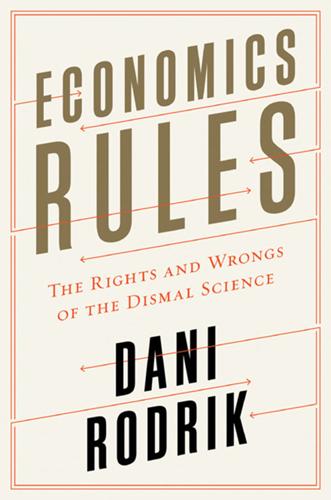
Economics Rules: The Rights and Wrongs of the Dismal Science
by
Dani Rodrik
Published 12 Oct 2015
Tipping-point models, referring to a sudden change in aggregate behavior after a sufficient number of individuals make a switch, were first developed and applied to different social settings by Tom Schelling. His paradigmatic example, developed in the 1970s, was the collapse of mixed neighborhoods into complete segregation once a critical threshold of white flight is reached. The potential for multiple equilibria has long been known and studied by economists, often in the context of highly stylized models. I gave an example (our shipbuilder and the coordination game) at the beginning of the chapter. Path dependence is a feature of a large class of dynamic economic models.
…
Hirschman” (Lepenies), 211n Post-Crash Economics Society (PCES), 197 precommitment strategies, 63 Prescott, Edward C., 101n pressure groups, 187 price ceilings, 28 price controls, 28–29, 94–97, 150, 185 price elasticities, 14, 180–81 price fixing, 179 prices: in bubbles, 152–58 business cycles and, 125–26, 129, 132 consumers and, 119, 129 in efficient-markets hypothesis, 157 minimum wages relative to, 143 Princeton University, Woodrow Wilson School at, 30 principal-agent models, 155 Principle of Comparative Advantage, 52–55, 59–60, 139, 170 prison cell upgrades, 192, 194 prisoners’ dilemma, 14–15, 20, 21, 61–62, 187, 200 privatization, 98, 161, 162 production functions, 119, 122 productivity, 120–21, 122–25, 141 Progresa, 4, 105–6 property rights, 87, 88, 98, 205 Prospera, 4, 105 “Protection and Real Wages” (Stolper and Samuelson), 58n, 140n public spending: business cycles and, 128–29, 131–32 economic growth and, 76–78, 114 quantitative easing, 135 Rajan, Raghu, 154 randomized controlled trials (RCTs), 202–4, 205 randomized field experiments, 105–7, 173, 202–5 rational bubbles, 154 rational choice, 33n rational expectations, 132 rationality postulate, 202–3 rationing, 64–65, 69, 95 Reagan, Ronald W., 49 real business cycle (RBC) models, 101n reasoning, rule-based vs. case-based forms of, 72 Recession, Great, 115, 134–35, 152–59, 184 recessions: fiscal stimulus and, 74–75, 128, 130, 131–37, 149, 150, 171 inflation and (stagflation), 130–31 reform fatigue, 88 regulation, 143, 155, 158–59, 160–61, 165–66, 208–9 Reinhart, Carmen, 76–78 relativity, general, 113 rents, 119, 120, 149, 150 revenue sharing, 124 reverse causal inference, 115 Ricard, Samuel, 196 Ricardo, David, 52–53, 139, 196 risk, 110, 141, 165 Great Recession and, 153–54, 155, 158, 159 Robinson, James, 206 Rodrik, Dani, 35n Rogoff, Kenneth, 76–78 Rubinstein, Ariel, 20 rule of law, 205 Russia, 166 Rustichini, Aldo, 71n Ryan, Stephen, 107 sales tax, 180–81 Samuelson, Paul, 31, 51–52, 53, 58n, 125, 140n Sandel, Michael, 189, 191–92, 194 Sargent, Tom, 131–32, 134 UC graduation speech and, 147–48 savings: globalization and, 165, 166 in Great Recession, 153 investment and, 129–30, 165–67 scale economies, 108, 122 Schelling, Thomas, 33, 42, 62 Schultz, Theodore W., 75n Schumacher, E. F., 177n Schumpeter, Joseph, 31 science, simplicity and, 179 Scott, Joan, xiv Second Fundamental Theorem of Welfare Economics, 47n segregation, tipping points in white flight and, 42 self-interest, 21, 104, 158, 186–88, 190 Shaw, George Bernard, 151 Shiller, Robert, 154, 157, 159 signaling, 69 Simon, Herbert, 203 Singapore, congestion pricing and, 3 single market (partial-equilibrium) analysis, 56, 58, 91 skill-biased technological change (SBTC), 142–43 skill premium, 138–40, 142 skill upgrading, 140, 141, 142 Smith, Adam, xi 48–49, 50, 98, 116, 182, 203 Smith, John Maynard, 35n Smith, Noah, 148 social choice theory, 36 social media, big data and, 38 social sciences: critical review in, 79–80 economics and, xii–xiii, 45, 181–82, 202–7 universal theories and, 116 Sokal, Alan, 79n “Sokal’s Hoax” (Weinberg), 66n South Africa, 24, 86, 91, 111 South Sea bubble, 154 Soviet Union, 98, 151–52 White and, 1n Spain, 207 speculative capital flow, 2 Spence, Michael, 68 stagflation, 130–31 statistical analysis, 7 Steil, Benn, 1n–2n Stiglitz, Joseph, 31, 68 Stockholm, Sweden, congestion pricing and, 3 Stolper, Wolfgang, 58n, 140n Stolper-Samuelson theorem, 58n, 140n stotting, 35n strategic interactions, economic models and, 61–62, 63 string theory, 113 Structure of Scientific Revolutions, The (Kuhn), 64n Subramanian, Arvind, xv subsidies, 4, 34–35, 75, 105, 149, 193, 194 Sugden, Robert, 112, 172n Summers, Larry, 136, 159 sunk costs, 70, 73 Superiority of Economists, The (Fourcade, Ollion, and Algan), 79n, 200n supply and demand, 3, 13–14, 20, 99, 122, 128–30, 132, 136–37, 170 prices and, 14, 119 taxes and, 14 surrogate mothers, 192 Switzerland, 188 Taiwan, 163 Tanzania, 55 tariffs, 149, 161, 162 taxes, taxation, 14, 17, 27–28, 87, 88, 136, 137, 151, 174, 180–81 carbon emissions and, 188–90, 191–92 entrepreneurship and, 74 fiscal stimulus and, 74, 75, 149, 171 negative income and, 171 technology, income inequality and, 141–43 telecommunications, game theory and, 5, 36 Thailand, 166 Thatcher, Margaret, 49 theories: models vs., 113–45 specific events explained by, 138–44 universal validity of, 114 time-inconsistent preferences, 62–63 “Time to Build and Aggregate Fluctuation” (Kydland and Prescott), 101n tipping points, 42 Tirole, Jean, 208–9 trade, 11, 87, 91, 136, 141, 182–83, 194 in business cycles, 127 comparative advantage in, 52–55, 58n, 59, 139, 170 computational models in tracking of, 41 current account deficits and, 153 general-equilibrium effects and, 41, 56–58, 69n, 91, 120 income inequality in, 139–40 liberalization of, 160, 162–63, 165, 169 outsourcing and, 149 public sector size and, 109–10 second-best theory applied in, 58–61, 163–64, 166 2x2 model of, 52–53 trade creation effect, 59 trade diversion effect, 59 trade unions, 124, 143 Transatlantic Trade and Investment Partnership (TTIP), 41 Transforming Traditional Agriculture (Schultz), 75n transportation, congestion pricing and, 2–3 Truman, Harry S., 151 tulip bubble, 154 Turkey, 166 Ulam, Stanislaw, 51 ultimatum game, 104 unemployment, 102 in business cycles, 125–37 classical view of, 126 in Great Recession, 153 wages and, 118, 150 see also employment Unger, Roberto Mangabeira, xi United States: comparative advantage principle and, 59–60, 139 deficit in, 149 educational vouchers in, 24 federal system in, 187 garment industry in, 57–58 Gold Standard in, 127 Great Depression in, 128 Great Recession in, 115, 134–35, 152–59 housing bubble in, 153–54, 156 immigration issue in, 56–57 income inequality in, 117, 124–25, 138–44 labor productivity and wages in, 123–24, 141 national debt in, 153 outsourcing in, 149 trade agreements of, 41 universal validity, 66–67 Uruguay, 86 validity, external vs. internal types of, 23–24 value, theories of, 117–21 Varian, Hal, 20 verbal models, 34 Vickrey, William, 2–3 Vietnam, 57–58 Vietnam War, 108 “Views among Economists: Professional Consensus or Point-Counterpoint?”
…
(Gordon and Dahl), 151n voting, social choice theory and, 36 wages: behavioral economics and, 70 in business cycles, 126 currency appreciation and, 60n education and, 173 employment and minimums for, 17–18, 28n, 114, 115, 124, 143, 150, 151 immigration and, 56–57 in labor theory of value, 117–19 productivity and, 120–21, 122–25, 141 second-best theorem and, 61 trade and, 139–40 Wagner, Rodrigo, 111n Walras, Léon, 119 Walzer, Michael, xiv Washington Consensus, 159–67, 169 Watts, Duncan, 39 Wedges between Productivity and Median Compensation Growth, The (Mishel), 124n Weinberg, Stephen, 66n Weinstein, David, 108 welfare, 47–51, 54, 171 “What Debate? Economists Agree the Stimulus Lifted the Economy” (Wolfers), 135n “When Economics Students Rebel” (Wren-Lewis), 197n White, Harry Dexter, 1–2 white flight, segregation and, 42 “Why We Learn Nothing from Regressing Economic Growth on Policies” (Rodrik), 35n Wicksell, Knut, 119 Williamson, John, 159–60 Wolfers, Justin, 135n World Bank, 1n, 2, 87 Washington Consensus and, 160 World War II, 2n, 108, 165 Wren-Lewis, Simon, 197n, 198 “Writing ‘The Market for “Lemons”‘: A Personal and Interpretive Essay” (Akerlof), 69n W.
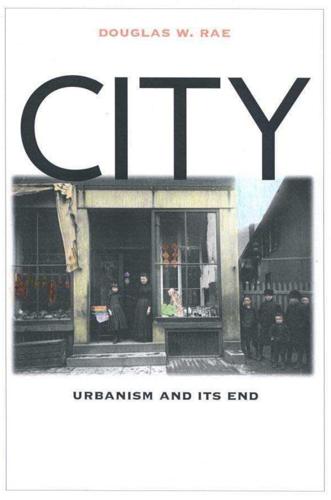
City: Urbanism and Its End
by
Douglas W. Rae
Published 15 Jan 2003
Centered capitalism was much more sensitive to changing energy costs and shifting market opportunities than it was to racial breakdowns in urban neighborhoods (although, as we will see shortly, race came to be a major concern among mortgage bankers). The decline of urban retailing had a logic that required little attention to race. White flight and decentralized living were sometimes accelerated by racial tension in the central city, but their dynamic was in motion decades before people of color arrived in large numbers. As late as 1961, Robert Dahl would write Who Governs? about New Haven and its politics with only very minor notice of what was then its “Negro” population.10 One historical fact about race asserts itself in every aspect of New Haven’s history after about 1950.
…
But, most of all, a large number of mainly Italian-American whites were lost to the neighborhood in a very short period of time.44 A major residential story in late twentieth-century New Haven is the decentralization of white households and their replacement by people of color—but on a rough two-for-three basis, two new families of color for three departed white families basis—so that total population in the central city diminished pretty steadily over the decades. Did urban renewal and highway construction cause these shifts? I do not think so, at least not in any simple way. These changes were 342 E X T R A O R D I N A R Y P O L I T I C S under way long before Lee came to power in 1954, and they have continued since. The earliest instances of “white flight” trace to the 1920s, long before blacks arrived in numbers and long before urban renewal began.45 One could say that the visibility of urban renewal, reinforcing the certification of workingclass neighborhoods as slums, may have sent a signal that encouraged departure. And, certainly, the highways made it easier to move into relatively distant suburbs and still hold on to a city job.
…
One respected analysis of American urban life expresses that consensus thus: “Overall, urban renewal did little to stem the movement of people and businesses to the suburbs or to improve the economic and living conditions of inner-city neighborhoods. To the contrary, it destabilized many of them, promoting unmanaged racial transition and white flight.”77 The difficulty one faces in evaluating Lee, and which he faced in governing the city, is an extreme case of shifting expectations. A more passive mayor, like Rice, Murphy, or Celentano, would have won great praise on Lee’s administrative performance, precisely because nobody would have expected those mayors to solve problems beyond the routine ken of local government.

Migrant City: A New History of London
by
Panikos Panayi
Published 4 Feb 2020
After the Second World War the global post-war economic boom, fuelled by the need to rebuild war-ravaged economies lasting until the middle of the 1970s, meant there was a demand for migrant labour not simply in London but in the rest of the United Kingdom as well as on the European continent. Western Europe became a net importer of population, moving away from its status as a net exporter of people during the nineteenth century.5 Because of its size as the largest European city and the process of white flight, London became the centre of this system, as migrants arrived initially from Europe and then, when their supply dried up, from the Empire and Commonwealth, as a racist British government accepted, at least temporarily, the need to allow black and Asian people to fill labour shortages on a national scale.6 The overwhelming majority of these new arrivals undertook manual work which the mainstream population increasingly shunned but from which they had certainly not disappeared, meaning that immigrants worked side by side with Londoners of all ethnic groups.
…
This proved a false dawn, at least in the short run, but during the early twenty-first century the BNP won council seats in a variety of locations including Dagenham and Barking,47 as well as a London Assembly seat in 2008.48 The success at the 2009 European elections may have represented a more significant breakthrough when the BNP took two northern seats,49 but this was not reflected in London, where it gained just 4.9 per cent of the vote.50 This represented the high point of BNP activity, whose voters moved to supporting UKIP, pointing the way to the EU referendum when the anti-EU immigration north voted much more heavily in favour of leave than London, with the exception of white areas which had developed in the post-war period as a result of white flight such as Barking and Dagenham, and Havering.51 During the 1970s the East End as a centre of far right politics in Britain had come back to life, replicating the activities of the British Union of Fascists, with the victims now consisting of the Bangladeshi community rather than Jews and the National Front as the racist agitators.
…
The latter flirted and worked with a series of groupings including Black Power, far left ideologies, with roots in Britain, Pakistan and Bangladesh, and trade unionism, before finally entering the local council chamber as Labour Party representatives from the 1980s.55 In addition, a series of semi-political organizations such as women’s groups and youth organizations surfaced, turning the East End from a hostile environment into Banglatown,56 although, as we have seen, violence against this ethnic group continued into the 1990s. The final elimination of fascism from East London, mirroring the death of racial violence, which it provoked, took a century from its first nascent appearance in the late Victorian period. Its demise appears to symbolize the move from racist to multicultural London, as white flight took away any potential support for such groups. However, we need to accept the fact that racist groupings have profoundly transformed the nature of political discourse in Britain so that multicultural London has developed at the same time as anti-immigrant discourse has entered the mainstream.
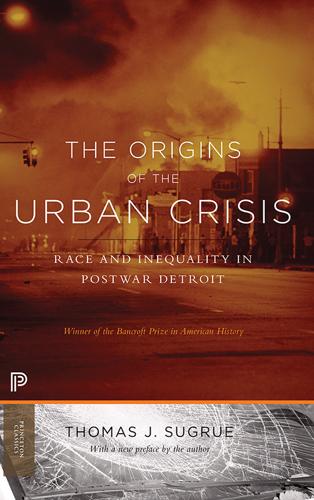
The Origins of the Urban Crisis
by
Sugrue, Thomas J.
The decline in population has gutted the fabric of many already struggling neighborhoods, leaving shuttered stores, churches, restaurants, bars, and even libraries, police stations, and schools, behind.3 Those who have remained within the city’s boundaries are overwhelmingly working-class and poor, mostly African American (82.2 percent of the city’s 717,000 residents in 2010 census). The long process of white flight that began in the 1950s is now nearly complete. Only 7.8 percent of Detroiters are white. The remaining residents are mostly Latino or mixed race, with Mexican Americans about 33,000 strong, the largest ethnic group, most of them concentrated in neighborhoods southwest of downtown.4 A few years ago, The Onion ran a headline “Detroit Sold for Scrap.”
…
City Limits: African American Los Angeles from the Great Depression to the Present (Berkeley: University of California Press, 2003); Deirdre L. Sullivan, “Letting Down the Bars: Race, Space, and Democracy in San Francisco, 1936–1964” (Ph.D. diss., University of Pennsylvania, 2003). 8. Kevin Kruse, White Flight: Atlanta and the Making of Modern Conservatism (Princeton, N.J.: Princeton University Press, forthcoming); Matthew Lassiter, “The Suburban Origins of ‘Color-Blind’ Conservatism: Middle-Class Consciousness in the Charlotte Busing Crisis,” Journal of Urban History (May 2004): 549–82, and Lassiter, The Silent Majority: Suburban Politics in the Sunbelt South (Princeton, N.J.: Princeton University Press, forthcoming); James N.
…
Despite the supposedly liberal mores of the North, despite successful court challenges to housing market discrimination, despite open housing advocacy and legislation, northern cities experienced rates of segregation that barely changed between the 1940s and the present. Segregated housing compounded the urban crisis. The combination of deindustrialization, white flight, and hardening ghettoization proved devastating. Residence in the inner city became a self-perpetuating stigma. Increasing joblessness, and the decaying infrastructure of inner-city neighborhoods, reinforced white stereotypes of black people, families, and communities.14 Racial conflict and tension surfaced as a persistent refrain in the lives of urban Americans in the postwar era.
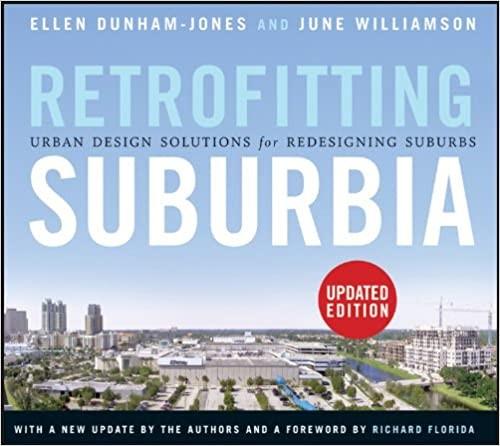
Retrofitting Suburbia, Updated Edition: Urban Design Solutions for Redesigning Suburbs
by
Ellen Dunham-Jones
and
June Williamson
Published 23 Mar 2011
White buyers were then offered choice lots adjacent to an African American family, or less desirable lots in more central locations.11 But in the end, many white families left as black families moved in. In 1970 African Americans comprised 11% of the population; that number had nearly doubled by the mid-1970s. An effort to stem the tide of white flight and prevent blockbusting by banning “For Sale” signs was struck down in court. A rash of fraudulent loans to African Americans fleeing central Philly and Camden led to widespread foreclosures (sadly echoed in the subprime mortgage fiasco of 2007) that accelerated white flight and led to home vacancies and drastic reductions in the township’s overall population. By 1990 Willingboro was majority African American and the trend has continued.
…
The portion of Buford Highway considered “in town” (just inside the border established by Atlanta’s peripheral highway, Route 285) varies from five to seven lanes and is mostly lined with garden apartment complexes and strip malls from the 1970s. Originally oriented toward young single people (many of whom were leaving the central parts of the city as part of “white flight”), the apartment complexes have housed waves of different immigrant groups for the past two decades. The highway’s wellworn dirt paths on the side of the road have only recently been replaced with streetlight-lined sidewalks along limited portions—despite the fact that it is home to Atlanta’s largest percentage of non-carowning inhabitants.
…
There are many factors that contributed to the high demand for suburban office space, including the tremendous expansion in office services jobs as American companies differentiated their products and expanded overseas. Advances in telecommunications, from fax machines to computing, enabled corporations to spin off back office work to cheaper space in the suburbs. Civil rights conflicts and reduced federal spending for inner-city social programs precipitated “white flight” from both central business districts and city neighborhoods. Corporate personnel departments at the time reported that they considered the workforce in the suburbs to be more educated and more reliable at lower wages. Increased suburban populations, high levels of automobile ownership, and the new interstate highway system all facilitated suburban commuting.
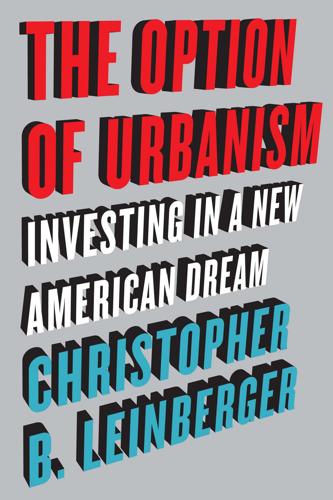
The Option of Urbanism: Investing in a New American Dream
by
Christopher B. Leinberger
Published 15 Nov 2008
“Redlining” of 40 | THE OPTION OF URBANISM predominantly black, poor areas in the city became common practice as growth spiraled outward and banks and federal insurance programs refused to support redevelopment or business investment in the cities. The desegregation of public schools mandated in 1954 hastened white flight to the suburbs, leaving city schools to cope with a disproportionately poor student body. The civil rights movement may have been launched with the successful bus boycott in Montgomery, Alabama, but low-income AfricanAmericans ultimately lost the war for better transportation services. As white middle-class riders abandoned bus transit and other public transit systems, the decreasing ridership, political support, and funding meant that there was nominal service to the new suburbs.
…
The resistance in the early twenty-first century to this kind of change will probably be even more substantial and well organized, due in part to the politically organized nature of the places where these houses are located. The owners of these fringe houses will take a substantial financial loss, just as those engaging in white flight from the cities did in the 1960s. But there are other problems with the scenario of large homes being sold to lower income families or broken up into apartments. The first concerns the cost of energy. Let’s assume that a gasoline-powered vehicle is the probable way to get to this housing in the near and midterm future and that the price of oil will continue to increase faster than inflation, due to both lower production (caused by declining supplies, dislocation due to terrorism, or manipulation by supplier nations) and higher worldwide demand.
…
Department of Transportation, see Department of Transportation Value latching, 143–144, 196n6 Veterans Administration (VA), 26, 31 Walkable urbanism, 3–10, 18, 21, 27, 58–59, 63, 76–79, 86–176, 191n3, 195n22 commercial, 101 financing, 160–162 infrastructure, 163–171 moral imperative, 175–176 regional-serving, 118, 124–128, 135–139, 173–174, 195n22 rise of, 3–5 Santa Fe, NM, 27, 148, 163, 175 unintended consequences, 138 inclusionary zoning, 141–143 lack of affordable housing, 138–141 value latching, 143–144 zoning, 151–153 Wall Street, 47–50, 58–62, 106, 111–112, 124, 159–162 Washington, D.C., 18, 37, 43, 52, 59, 61, 71, 100–107, 119–123, 128, 132, 135–139, 141, 146, 157, 166, 172–173, 192n8 Wendling, R., 188n56 White, E. B., 18, 178n11 White flight, 40, 145 Wilson, J., 177n4 Wolfe, T., 52, 183n11 Workforce housing, 138–141 Zoning, 5, 10, 26–29, 31, 66, 71, 105, 112, 127, 143–144, 150–152, 156–158, 174 Euclidean zoning, 151, 196n2 A BOUT I SLAND P RESS Island Press is the only nonprofit organization in the United States whose principal purpose is the publication of books on environmental issues and natural resource management.
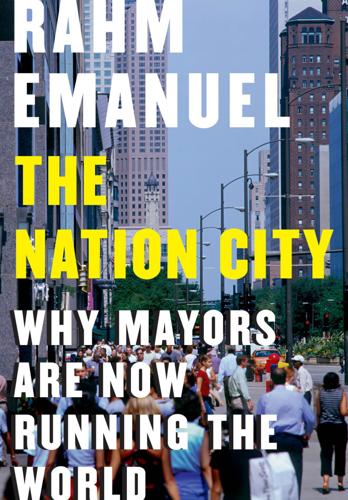
The Nation City: Why Mayors Are Now Running the World
by
Rahm Emanuel
Published 25 Feb 2020
It didn’t help, of course, that the riots left some already blighted neighborhoods in far worse shape. The riots, the rising crime rate, and the loss of jobs “helped create a sense that civilization had fled the cities,” Edward Glaeser wrote in his 2011 book, Triumph of the City. So, many city-dwellers themselves fled, in what became known as “white flight,” and businesses—even those outside the manufacturing industry—began to follow them. The great escape was made easier by the concurrent growth of planned suburbs and the completion of a federal highway system. Cleveland’s population fell 37 percent from 1950 to 1980. Boston’s dropped 30 percent, and Chicago’s 17 percent.
…
Many of them, seeking employment and potential partners, have moved to cities, where they can find both. And many of those who move to cities decide to stay even after settling down to have children, because the cities have become better places to live. That act, of course, reinforces this livability. In Chicago, where in the past decades we saw white flight, we have now seen our populations of white, Hispanic, and Asians increase. (That is not true for African Americans, where we have much more work to do, as I will explain later on.) Cities have also become attractive because of what they stand for. Minorities and the LGBTQ+ community, to name just two groups, have come to cities because of their inclusivity and progressivism.
…
What Washington Park, Woodlawn, and Bronzeville all have in common is that coordinated investments in housing, transportation, schools, libraries, and recreational facilities have spurred investments in new grocery stores, coffee shops, restaurants, and community art centers—a sustainable economic model that moves beyond urban policy as merely housing policy. It is also a more holistic approach to struggling neighborhoods. Rather than spreading the peanut butter too thin, a housing project here, a train station over there, it concentrates your investments to a single neighborhood. Chicago has succeeded in reversing decades of white flight, and has vibrant and growing Hispanic and Asian communities. For decades, however, it has been losing African American families to the suburbs. Bronzeville, Woodlawn, and Washington Park show a new way forward for all of us. * * * One of the most important building blocks we installed in Woodlawn, though, was a modernized L station.
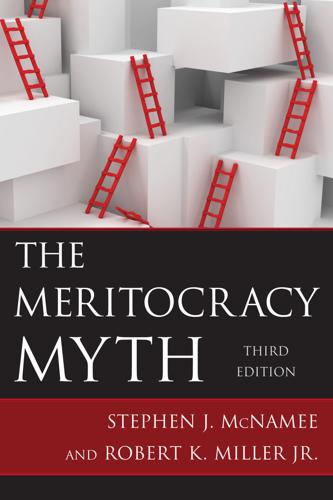
The Meritocracy Myth
by
Stephen J. McNamee
Published 17 Jul 2013
For many, the ranch house in the suburbs with the two-car garage and meticulously maintained lawn symbolized the fulfillment of the dream. Commuters in these bedroom communities, who worked in the urban areas and had access to their cultural amenities, felt shielded from the problems of central cities. For them, it was the best of both worlds. Economic success, resulting in white flight to the suburbs in the postwar period, however, exacerbated the problems of central cities and, in many cases, increased rates of segregation and racial tension. The tax base of urban areas eroded along with public services, including schools, police and fire protection, and urban sanitation. The fulfillment of the dream for some was for others a nightmare of inner-city crime, drugs, unemployment, poverty, and despair.
…
And even when resorting to more commercial forms of transportation, there is always the more isolated and pampered option of traveling “first class.” The upper-class tendency to isolate itself geographically from the rest of society has been emulated by the upper middle classes. The overall trend is toward greater socioeconomic residential segregation in American society as a whole (Massey, Rothwell, and Domina 2009). The creation of white-flight suburbs in the post–World War II era began a trend that has now extended to the rising popularity of “gated” communities (Blakely and Snyder 1997). Once restricted to the superwealthy and some retirement villages, gated communities are now for the merely privileged. One reason for this self-imposed isolation is security.
…
W., 1 , 2 Bush, George W., 1.1-1.2 , 2 , 3 C Calvinism, 1 , 2 capitalism as a continuum, 1 entrepreneurial capitalists, 1 , 2 , 3 free-market expression, 1 , 2 hard work and self-denial as aspects of, 1 human capital, 1 risk, 1 , 2 , 3 turn-of-the-century capitalists, 1 , 2 venture capitalists, 1 wealth inequality in capitalist societies, 1 Carnegie, Andrew, 1 , 2 Catholics and Catholicism, 1 , 2 , 3 , 4.1-4.2 , 5 Chambliss, William, 1 charitable giving, 1 , 2 , 3 , 4 , 5.1-5.2 children American Dreams for, 1 , 2.1-2.2 cost of raising, 1 cultural capital and, 1 , 2.1-2.2 , 3.1-3.2 , 4 , 5 , 6 , 7 , 8 in culture-of-poverty theory, 1.1-1.2 discrimination and, 1 , 2.1-2.2 , 3 , 4 , 5 downward mobility, insulation from, 1.1-1.2 education and parental influence, 1.1-1.2 , 2 , 3 , 4 , 5.1-5.2 , 6 , 7 , 8 health issues, 1 , 2 as heirs, 1 , 2.1-2.2 , 3.1-3.2 , 4.1-4.2 , 5 , 6 , 7.1-7.2 , 8 , 9 , 10 , 11 of immigrants, 1 numbers, declining, 1.1-1.2 , 2 , 3.1-3.2 , 4 parental occupation, effects on, 1 of the privileged, 1 , 2 , 3 , 4 , 5 , 6 , 7 proposed reforms benefiting, 1 , 2.1-2.2 in a pure meritocratic system, 1 social class, education affected by, 1 social mobility and, 1 , 2 Clinton, Hillary, 1 , 2 cognitive elite, 1 , 2 Coleman, James S., 1 , 2 college American dream, as part of, 1 , 2 aptitude tests, 1 , 2 cognitive elect sorted out by, 1 credentialism, 1.1-1.2 , 2.1-2.2 employment during attendance, 1 enrollment, 1.1-1.2 , 2 funding accounts, 1 hiring practices, 1.1-1.2 income, effects on completion, 1.1-1.2 job prospects, 1.1-1.2 legacy admissions, 1.1-1.2 , 2 student debt, 1 , 2.1-2.2 tracking, effects of, 1.1-1.2 types of colleges and social standing, 1.1-1.2 , 2 the wealthy and, 1 , 2 , 3 Collins, Randall, 1 , 2 , 3 Coming Apart: The State of White America, 1960–2010 (Murray), 1.1-1.2 competition capitalism and, 1 , 2 destructive vs. constructive forms, 1.1-1.2 discrimination reducing, 1 , 2 , 3 at elite colleges, 1 , 2 foot race metaphor, 1 foreign business competition, 1.1-1.2 large corporations discouraging, 1 , 2 , 3 , 4 , 5 reforms enhancing, 1 , 2 women and, 1 , 2 , 3 , 4 T The Competition Paradigm (Rosenau), 1.1-1.2 C conflict theory of inequality, 1.1-1.2 , 2 corporations, large American economy, dominating, 1 , 2 ascent of, 1.1-1.2 competition, discouraging, 1 , 2 , 3 , 4 , 5 highly concentrated industries, 1 , 2 , 3 labor unions and, 1 , 2 megamergers, 1.1-1.2 , 2 reform suggestions, 1 restructuring, 1.1-1.2 , 2 self-employment affected by, 1 , 2 , 3 small businesses, vs., 1.1-1.2 , 2.1-2.2 , 3 Countrywide financial corporation, 1 , 2 Creating a Class: College Admissions and the Education of Elites (Stevens), 1 credentials credential underemployment, 1 cultural credentials, 1 , 2 , 3 , 4 , 5 , 6 importance of, 1.1-1.2 , 2 , 3 inflation of, 1 , 2.1-2.2 , 3 nonvalidated, 1 opportunities to earn, 1 cultural capital acquisition of, 1.1-1.2 defined, 1 , 2 , 3 discrimination and, 1 , 2 educational inequalities, 1 , 2 , 3.1-3.2 , 4 , 5 , 6 , 7 elite circles, acceptance into, 1 employers impressed with, 1.1-1.2 government programs leveling field, 1 information access, 1 inheritance and, 1 , 2 media portrayals, 1 nouveau riche, 1 right attitude, 1 social climbing, 1.1-1.2 , 2 transmission settings, 1.1-1.2 U.S. presidents, exemplifying, 1.1-1.2 culture-of-poverty theory, 1.1-1.2 , 2 D debt as a coping strategy, 1.1-1.2 Great Recession, during, 1 , 2 , 3 housing/mortgage debt, 1 , 2 as a liability, 1 student loans, 1 , 2.1-2.2 democracy, 1 , 2.1-2.2 , 3.1-3.2 , 4 , 5 , 6 , 7 , 8.1-8.2 Democracy in America (de Tocqueville), 1.1-1.2 disabled Americans, 1.1-1.2 , 2 , 3 discrimination affirmative action as a remedy, 1.1-1.2 ageism, 1.1-1.2 , 2 American Dream, affecting, 1.1-1.2 , 2 , 3.1-3.2 , 4 , 5 , 6 , 7 , 8.1-8.2 , 9.1-9.2 , 10.1-10.2 , 11 continuing effects of, 1.1-1.2 , 2 the disabled, experiences of, 1.1-1.2 , 2 , 3 in education, 1 , 2.1-2.2 , 3.1-3.2 , 4.1-4.2 , 5 , 6 expansion of opportunity and, 1 heterosexist prejudices, 1.1-1.2 , 2 , 3 in-group solidarity, 1.1-1.2 institutional favoritism, 1.1-1.2 , 2 , 3.1-3.2 legal and political injustice, 1.1-1.2 , 2 , 3.1-3.2 occupational unfairness, 1 , 2 , 3.1-3.2 , 4 , 5 , 6 , 7 , 8 the physically attractive as favored, 1.1-1.2 racial bigotry, 1 , 2.1-2.2 , 3.1-3.2 , 4 , 5.1-5.2 , 6 , 7 , 8 reform movements combating, 1.1-1.2 , 2 religious intolerance, 1.1-1.2 , 2 , 3 , 4 residential inequity, 1.1-1.2 , 2 women, experiences of, 1 , 2 , 3 , 4 , 5.1-5.2 , 6.1-6.2 , 7.1-7.2 , 8.1-8.2 , 9.1-9.2 Domhoff, William, 1 , 2 Duncan, Otis Dudley, 1 E education affirmative action and, 1 , 2 African Americans, educational issues of, 1.1-1.2 , 2.1-2.2 , 3 American Dream, as part of, 1 , 2.1-2.2 , 3 , 4 , 5 , 6 cognitive elite and educational attainment, 1 credentials, importance of, 1.1-1.2 , 2 , 3 , 4.1-4.2 discrimination affecting, 1 , 2.1-2.2 , 3.1-3.2 , 4.1-4.2 , 5 , 6 educational endogamy, 1 government spending on, 1.1-1.2 , 2 human capital theory, 1 , 2 income affected by, 1 individualism, aiding in, 1 inequalities and, 1 , 2.1-2.2 , 3.1-3.2 , 4 , 5 , 6 , 7 , 8 , 9 occupational opportunities, linked to, 1 , 2.1-2.2 , 3.1-3.2 , 4.1-4.2 , 5 , 6.1-6.2 , 7.1-7.2 , 8.1-8.2 , 9.1-9.2 , 10 , 11.1-11.2 , 12 , 13.1-13.2 parental circumstances affecting, 1 , 2 , 3 , 4 , 5 , 6 school completion, 1 school quality and school funding, 1.1-1.2 social/cultural capital and, 1 , 2 , 3 , 4 , 5 , 6 , 7.1-7.2 , 8 , 9 , 10 , 11 success, as a factor in, 1 , 2 , 3 , 4 teacher salary discrepancies, 1 , 2 women and, 1.1-1.2 , 2 See also college T The Education-Jobs Gap (Livingstone), 1 E employment See occupations endogamy, 1.1-1.2 entrepreneurs and entrepreneurialism American respect for, 1 , 2 , 3 , 4 education vs., 1 , 2.1-2.2 entrepreneurial capitalists, 1 , 2 , 3 entrepreneurial traits, 1 , 2 franchisees not considered as entrepreneurs, 1 irregular economy, participation in, 1.1-1.2 luck as part of success, 1 , 2 random-walk hypothesis, 1 social capital, use of, 1 , 2 , 3 upward mobility, aiming for, 1 , 2 See also self-employment Etcoff, Nancy, 1.1-1.2 ethics See moral character F Forbes magazine income listings, 1.1-1.2 , 2.1-2.2 , 3 franchises, 1.1-1.2 , 2 free-market economy, 1.1-1.2 , 2 T The Frontier in American History (Turner), 1.1-1.2 F frontier influence in America, 1 , 2 , 3 , 4 functional theory of inequality, 1 G gambling, 1 , 2 , 3 , 4.1-4.2 , 5 Gates, Bill, 1 , 2 , 3 , 4.1-4.2 , 5 Gendall, Murray, 1 Gilded Age, 1 , 2 , 3 Gini coefficient, 1.1-1.2 Gladwell, Malcolm, 1 , 2 glass ceiling, 1 , 2 , 3.1-3.2 , 4 government programs education funding, 1 , 2 , 3 health care, 1 , 2 highway subsidies and suburb development, 1 , 2 home ownership, encouraging, 1 , 2 land giveaways, 1 the poor as targets of, 1 , 2 , 3 proposed asset-building policies, 1.1-1.2 “thousand points of light” as alternative, 1 transfer payment, 1 Granovetter, Mark, 1.1-1.2 Great Depression, 1 , 2 , 3 Great Recession African Americans affected by, 1 , 2 age discrimination during, 1 class issues resulting from, 1 debt and bankruptcies, rise of, 1.1-1.2 factors leading to, 1.1-1.2 home ownership during, 1.1-1.2 , 2 mortgage debt as contributor, 1 retirement delays caused by, 1 self-employment increase, 1 white-collar crime leading to, 1 H Hamermesh, Daniel S., 1.1-1.2 , 2 hard work beauty achieved through, 1 capitalism, associated with, 1 , 2 consumption as reward, 1 as determinant of inequality, 1 increased work hours as a coping strategy, 1.1-1.2 modest effects of, 1 self-made men and, 1 as a success factor, 1 , 2 , 3.1-3.2 , 4 , 5 , 6 health health care plans, 1.1-1.2 , 2 , 3 , 4.1-4.2 , 5 , 6 older workers, 1 wealth affecting, 1 , 2 , 3.1-3.2 , 4 , 5 Herrnstein, Richard, 1.1-1.2 , 2 hierarchy-of-needs theory, 1 , 2 higher education See college hiring practices, 1.1-1.2 , 2 , 3 Hispanics, 1 , 2 , 3 , 4 , 5 , 6 , 7 Hochschild, Jennifer, 1 hockey player success, 1.1-1.2 Home Advantage (Lareau), 1.1-1.2 home ownership, 1.1-1.2 , 2.1-2.2 , 3 , 4.1-4.2 homosexuality and discriminatory practices, 1.1-1.2 , 2 human capital, 1 , 2.1-2.2 , 3 , 4 , 5 , 6 I IBM, 1.1-1.2 immigrants, 1.1-1.2 , 2 , 3 , 4 , 5 , 6 , 7 individualism as culturally dominant, 1 democracy, expressed through, 1 , 2.1-2.2 as greatly valued, 1 , 2 immigrants and, 1.1-1.2 as part of the entrepreneurial personality, 1 pioneer spirit reinforcing, 1 through self-employment, 1 self-help books promoting, 1 inequalities charitable giving as a means of reducing, 1.1-1.2 conflict and functional theories of, 1.1-1.2 economic inequalities, 1 , 2 , 3 , 4.1-4.2 , 5 , 6 , 7 , 8 educational system and, 1 , 2.1-2.2 , 3.1-3.2 , 4 , 5 , 6 , 7 , 8 , 9 gender inequality, 1.1-1.2 government spending as a factor, 1 , 2 ideologies of, 1.1-1.2 labor unions working to reduce, 1 matrix of domination, 1 residential inequalities, 1 , 2 taxes and, 1.1-1.2 , 2 in wages and income, 1.1-1.2 , 2.1-2.2 , 3.1-3.2 , 4 , 5 , 6.1-6.2 in wealth, 1 , 2 , 3.1-3.2 , 4 , 5 , 6 , 7 , 8 , 9 inheritance advantages of wealth inheritance, 1 , 2.1-2.2 , 3 attitudes towards, 1 , 2 baby boomers and, 1.1-1.2 , 2 conflict theories, within, 1 cultural capital and, 1 , 2.1-2.2 , 3 , 4 domestic partnerships and, 1 estate and inheritance taxes, 1.1-1.2 , 2 of estates, 1 , 2 Forbes magazine, heirs listed in, 1.1-1.2 inequalities, perpetuating, 1 , 2 , 3 luck and, 1 as a natural right, 1 nepotism and, 1.1-1.2 as a nonmerit factor, 1.1-1.2 , 2 , 3 , 4 , 5 , 6 , 7 , 8 old money and, 1.1-1.2 parental motivation, 1.1-1.2 , 2 primogeniture, 1 relay race, compared to, 1 , 2.1-2.2 , 3 , 4 , 5 wealth distribution through, 1 women and inheritance of wealth, 1 In Praise of Nepotism: A Natural History (Bellow), 1.1-1.2 A An Inquiry into the Nature and Causes of the Wealth of Nations (Smith), 1 I integrity, 1 , 2.1-2.2 inter vivo transfers, 1.1-1.2 , 2 , 3 , 4 investments, economic, 1 , 2 , 3 , 4 , 5 , 6 , 7 , 8 , 9 , 10 , 11.1-11.2 , 12 , 13 IQ and IQ tests, 1.1-1.2 , 2.1-2.2 , 3 , 4 , 5 , 6 irregular economy, 1 , 2.1-2.2 , 3 , 4 J Jencks, Christopher, 1 , 2 jobs See occupations Jones, Janelle, 1.1-1.2 K Kildall, Gary, 1.1-1.2 Kozol, Jonathan, 1 L labor unions, 1 , 2 , 3.1-3.2 Lareau, Annette, 1.1-1.2 Lears, Jackson, 1 Lewis, Oscar, 1.1-1.2 Livingstone, David W., 1 , 2 lookism, 1 , 2 , 3 , 4 , 5 , 6 lottery, 1 , 2 , 3.1-3.2 , 4 lower class See working class luck denial of, 1.1-1.2 , 2 with gambling, 1 getting ahead, as a factor in, 1 , 2 , 3.1-3.2 lottery and, 1 , 2 as a nonmerit factor, 1 as part of capitalism, 1 in striking it rich, 1 , 2 wealth attainment and, 1 , 2.1-2.2 , 3 M marriage career interruptions due to, 1 marrying into money, 1 , 2 the poor and, 1 , 2.1-2.2 sexual discrimination and, 1.1-1.2 , 2 trailing partners and hiring practices, 1 upper class and, 1 , 2 , 3 , 4.1-4.2 , 5 Marx, Karl, 1 Maslow, Abraham, 1 , 2 Massey, Douglas S., 1 , 2 Matthew effect, 1 , 2 matrix of domination, 1.1-1.2 Medicare, 1 , 2.1-2.2 mentors, 1 , 2.1-2.2 , 3 , 4 , 5.1-5.2 meritocracy affirmative action and, 1 American promotion of merit, 1.1-1.2 , 2 , 3.1-3.2 , 4 , 5 , 6 coping strategies, 1 , 2 credentials, lack of as a barrier, 1.1-1.2 as a desired outcome, 1 discrimination as the antithesis of merit, 1.1-1.2 , 2.1-2.2 , 3 , 4 , 5 , 6 , 7.1-7.2 , 8 , 9.1-9.2 , 10 , 11 education as a merit filter, 1 , 2 , 3 , 4 , 5 , 6 , 7 , 8 , 9 , 10 , 11 , 12 employment opportunities, 1.1-1.2 , 2.1-2.2 , 3 entrepreneurial success, 1 fairness of the system, 1 , 2.1-2.2 , 3 , 4 , 5 folklore of, 1 government spending and, 1.1-1.2 , 2 in the hiring process, 1.1-1.2 , 2 human capital factors, 1 , 2 , 3 income based on merit, 1 inheritance as a nonmerit factor, 1 , 2.1-2.2 , 3 , 4 , 5.1-5.2 , 6 , 7.1-7.2 , 8 , 9 , 10 , 11 , 12 , 13.1-13.2 intergenerational wealth transfers, 1.1-1.2 legacy preferences as nonmerit based, 1.1-1.2 , 2 luck as a nonmerit factor, 1 , 2 , 3 , 4 , 5.1-5.2 market trends, 1.1-1.2 meritocratic aristocracy, 1.1-1.2 nepotism as nonmeritorious, 1.1-1.2 the new elite as extra-meritorious, 1 noblesse oblige increasing potential for, 1 nonmerit factors suppressing merit, 1 , 2 , 3 , 4 , 5 Barack Obama as example of, 1.1-1.2 , 2 the past, reverence for, 1 physical attractiveness as a nonmerit factor, 1 , 2 pure merit system, 1.1-1.2 reform movements and, 1 , 2 self-employment as an expression of, 1 social and cultural capital as nonmerit factors, 1.1-1.2 , 2 , 3 , 4.1-4.2 , 5.1-5.2 , 6 , 7 , 8.1-8.2 , 9 , 10 , 11 structural mobility and, 1.1-1.2 talents and abilities of the merit formula, 1 , 2 , 3 , 4 , 5 , 6 taxes and nonmerit advantages, 1.1-1.2 Mexican Americans and Mexican immigrants, 1 , 2 , 3 , 4 Microsoft, 1.1-1.2 middle class America as not middle class, 1 asset building, 1 cultural capital, 1.1-1.2 deferment of gratification, 1 education and, 1 , 2 , 3 Great Recession affecting, 1 home ownership, 1 inner cities, flight from, 1 , 2 Barack Obama, background of, 1.1-1.2 old class vs. new, 1.1-1.2 precarious status of, 1.1-1.2 sports choices of, 1 upper-middle class, 1 , 2 T The Millionaire Mind (Stanley), 1 M millionaires, 1 , 2 , 3 minority groups affirmative action, 1.1-1.2 , 2.1-2.2 asset accumulation, 1.1-1.2 core employment, underrepresentation in, 1 disadvantages of, 1 discrimination experiences, 1 , 2.1-2.2 , 3 , 4.1-4.2 , 5 , 6.1-6.2 , 7 , 8 , 9 , 10 education issues, 1.1-1.2 as inner city dwellers, 1 opportunities expanding, 1 , 2 , 3 self-employment and, 1 social capital, lack of, 1 , 2 , 3 moral character, 1.1-1.2 , 2 Mormons, 1 Murray, Charles, 1.1-1.2 , 2 , 3.1-3.2 Muslims, 1.1-1.2 N National College Athletic Association (NCAA), 1 nepotism, 1.1-1.2 , 2 net worth affirmative action and, 1 defined, 1 by income group, 1 of minority groups, 1 of Barack Obama family, 1 of one percenters, 1 , 2 , 3 of Walton heirs, 1.1-1.2 wealth scale, 1.1-1.2 new elite, 1 , 2.1-2.2 noblesse oblige, 1.1-1.2 O Obama, Barack, 1.1-1.2 , 2 , 3 , 4 Obama, Michelle, 1.1-1.2 occupations attitude as a factor, 1 , 2 blue-collar jobs, 1 , 2 , 3 , 4 , 5 CEO salaries, 1.1-1.2 , 2 changes in opportunities, 1.1-1.2 , 2 cultural capital and, 1.1-1.2 , 2 the disabled and employment difficulties, 1 discrimination, 1 , 2 , 3.1-3.2 , 4 , 5 , 6 , 7 downsizing, 1.1-1.2 , 2 , 3 , 4 , 5 , 6 education linked to, 1 , 2.1-2.2 , 3.1-3.2 , 4.1-4.2 , 5 , 6.1-6.2 , 7.1-7.2 , 8 , 9.1-9.2 , 10.1-10.2 , 11 , 12.1-12.2 , 13 , 14.1-14.2 fastest growing jobs, 1.1-1.2 , 2.1-2.2 health hazards, 1 nepotism and, 1 , 2 occupational mobility, 1.1-1.2 , 2 occupational segregation, 1 , 2.1-2.2 outsourcing, 1.1-1.2 , 2 , 3 , 4 , 5 , 6 physical attraction and occupational success, 1 self-employment and, 1 self-made men, 1.1-1.2 social capital and occupational opportunities, 1 , 2 , 3 , 4 wages, 1.1-1.2 , 2 , 3 , 4 , 5.1-5.2 , 6.1-6.2 , 7.1-7.2 , 8 white-collar jobs, 1 , 2 , 3 , 4 , 5 , 6 Occupy Wall Street (OWS), 1 old boy networks, 1 , 2 , 3.1-3.2 old money, 1.1-1.2 , 2.1-2.2 Outliers: The Story of Success (Gladwell), 1 , 2 outsourcing, 1.1-1.2 , 2 , 3 , 4 , 5 , 6 ownership class, 1 , 2 , 3 , 4 P Paterson, Tim, 1 Peale, Norman Vincent, 1.1-1.2 pensions, 1.1-1.2 , 2 , 3 , 4 , 5 , 6 pink-collar ghetto, 1.1-1.2 poverty children affected by, 1 , 2 culture-of-poverty theory, 1.1-1.2 , 2 full-time work below poverty level, 1 as a matter of attitude, 1 meritocracy and, 1 , 2 minority rates of, 1 , 2 poverty threshold, 1 regional variations in poverty rates, 1.1-1.2 , 2 senior citizens and poverty rates, 1 U.S. poverty rates, 1 T The Power of Positive Thinking (Peale), 1.1-1.2 P Protestants and the Protestant ethic, 1.1-1.2 , 2 , 3 , 4 , 5 Puritan values, 1.1-1.2 R racism and racial issues affirmative action, 1.1-1.2 athletes and, 1 crime and the legal system, 1.1-1.2 disabilities, disproportionate experience of, 1 discrimination and, 1 , 2.1-2.2 , 3.1-3.2 , 4 , 5.1-5.2 , 6 , 7 , 8 in education, 1.1-1.2 employment, affecting, 1 Great Recession worsening racial equality, 1 home ownership, 1 ideologies of inequality, as part of, 1 income gaps, 1 language skills and, 1 Obama, election of, 1 , 2 scientific racism, 1.1-1.2 segregation, 1 , 2.1-2.2 , 3 social capital and, 1 , 2 , 3 , 4 white flight, 1 , 2 random-walk hypothesis, 1 recession See Great Recession references, 1 , 2 , 3 retirement as part of the American Dream, 1 , 2 delayment as a coping strategy, 1 , 2.1-2.2 , 3 home ownership and funding of, 1 as jeopardized, 1 , 2.1-2.2 proposed supplementation, 1 self-employment and, 1 , 2 , 3 right attitude, 1 , 2.1-2.2 , 3 , 4 , 5 , 6 , 7 T The Rise of Meritocracy, 1870–2033:An Essay on Education and Equality (Young), 1 , 2 R Rivera, Lauren, 1 Rosenau, Pauline Vaillancourt, 1.1-1.2 S Schmitt, John, 1.1-1.2 schools See education segregation educational, 1 , 2 , 3 occupational, 1 , 2 , 3 , 4.1-4.2 racial, 1 , 2.1-2.2 , 3 , 4 , 5 residential, 1 , 2 , 3.1-3.2 of the wealthy, 1.1-1.2 white flight, 1 See also discrimination self-employment American Dream, as exemplifying, 1 franchises, 1 freelancing, 1 , 2 income, 1.1-1.2 irregular economy and, 1.1-1.2 , 2 , 3 , 4 petty bourgeoisie and, 1 psychological characteristics, 1 rates of, diminished, 1 , 2 , 3 , 4.1-4.2 , 5 , 6 , 7.1-7.2 , 8 risk, 1 , 2 , 3.1-3.2 , 4 subcontractors, 1 taxes, 1.1-1.2 , 2 women and minorities, 1.1-1.2 self-help books, 1 , 2 self-made individuals, 1 , 2 , 3 , 4.1-4.2 , 5 , 6 sexual harassment, 1.1-1.2 Shapiro, Thomas, 1 , 2.1-2.2 slaves and slavery, 1 , 2 , 3 , 4 , 5 , 6 , 7 small businesses, 1 , 2 , 3 , 4 , 5.1-5.2 , 6 , 7.1-7.2 , 8 , 9 Smith, Adam, 1 social capital benefits of, 1.1-1.2 , 2 defined, 1 , 2 , 3 discrimination and, 1 , 2 economic opportunities, having access to, 1 , 2 , 3 education and, 1 , 2 , 3 , 4 , 5 , 6 , 7 , 8 , 9 , 10 mentorship as a form of, 1 nepotism and, 1.1-1.2 , 2 racism and lack of, 1 , 2 , 3 , 4 restricted access, effects of, 1.1-1.2 , 2.1-2.2 social climbing, 1 , 2 , 3.1-3.2 , 4 of U.S. presidents, 1.1-1.2 weak ties, 1.1-1.2 social climbing, 1 , 2 , 3.1-3.2 , 4 social clubs, 1 , 2 , 3.1-3.2 social mobility athletic and artistic abilities, associated with, 1 , 2.1-2.2 , 3 cultural capital as a factor in, 1 education link, 1 , 2 , 3 hard work as a factor, 1 individual merit, 1 integrity hindering, 1.1-1.2 marrying for money, 1 reduction of opportunities, 1 , 2 during Republican administrations, 1 role of government, 1 , 2 social climbing, 1.1-1.2 , 2 status attainment, 1 through self-employment, 1 social reform movements, 1.1-1.2 Social Register, 1 social reproduction theory, 1.1-1.2 , 2 Social Security, 1.1-1.2 , 2 , 3 , 4 , 5.1-5.2 Something for Nothing: Luck in America (Lears), 1.1-1.2 T the South, 1 , 2.1-2.2 , 3 , 4 , 5 S Stanley, Thomas, 1 status-attainment theory, 1.1-1.2 Stevens, Mitchell, 1 stock market, 1 , 2 , 3 , 4 student loans, 1 , 2.1-2.2 success athletic success, 1 , 2.1-2.2 attitudes associated with, 1 , 2 , 3.1-3.2 birth timing and, 1.1-1.2 , 2 cultural capital, 1 , 2 , 3 , 4 discrimination, achieving success through, 1 education, as a factor in, 1 , 2 , 3 , 4 , 5 entrepreneurial success, 1 , 2 , 3 God’s grace, success as sign of, 1 , 2 hard work and, 1 , 2 , 3.1-3.2 , 4 , 5 human capital factors, 1 individualism as key to, 1 intelligence as a determinant, 1 luck as important, 1 meritocracy myth and, 1 mind-power ethic as success formula, 1.1-1.2 moral character and, 1 , 2 , 3.1-3.2 , 4 parental involvement, 1.1-1.2 , 2 , 3.1-3.2 the right stuff, being made of as key, 1.1-1.2 , 2.1-2.2 , 3 , 4 small businesses and, 1 social capital increasing likelihood of, 1 , 2 , 3 suburban living as marker of, 1 10,000 hour rule, 1 women and, 1 , 2 supply side, 1 , 2 , 3 , 4 , 5 , 6.1-6.2 Survival of the Prettiest (Etcoff), 1.1-1.2 Swift, Adam, 1.1-1.2 T talent and abilities American aristocracy, 1 American Dream, leading to, 1 of athletes and celebrities, 1 education enhancing, 1 , 2 , 3.1-3.2 functional theory of inequality, 1 jobs matched to talent, 1 success achieved through, 1 , 2 , 3 , 4 , 5 , 6 talent-use gap, 1 upward mobility and, 1 , 2.1-2.2 , 3.1-3.2 taxes capital gains, 1.1-1.2 estate taxes, 1 , 2 , 3.1-3.2 government policies linked with, 1 , 2 incentives and credits, 1.1-1.2 income taxes, lowered by Republicans, 1 irregular economy, avoiding, 1.1-1.2 progressive taxation, 1.1-1.2 , 2 , 3 , 4 property taxes and school funding, 1.1-1.2 self-employment and, 1.1-1.2 , 2 Social Security affected by, 1 , 2 the South and lower taxes, 1 tax breaks for the wealthy, 1 , 2 , 3 , 4.1-4.2 of urban areas, 1 , 2 Thurow, Lester, 1 , 2.1-2.2 Tocqueville, Alexis de, 1.1-1.2 , 2 tracking, 1 , 2.1-2.2 , 3 , 4 Turner, Frederick Jackson, 1.1-1.2 U Unequal Childhoods (Lareau), 1 upper class charitable giving and, 1 cultural capital, holders of, 1 , 2 , 3.1-3.2 , 4.1-4.2 , 5 deferred gratification, capability of, 1 distinctive lifestyle, 1.1-1.2 , 2 education, 1 , 2 endogamy, tendency towards, 1.1-1.2 as exclusive, 1.1-1.2 , 2 as isolated, 1.1-1.2 one percenters as members, 1 Plymouth Puritans as wellspring, 1 political power, 1.1-1.2 social clubs, frequenting, 1.1-1.2 virtues found in, 1 WASP background of, 1 women of, 1 , 2 , 3 upward mobility attitudes as affecting, 1 barriers to, 1 through college education, 1 credentialism and, 1 downward mobility, vs., 1 through entrepreneurialism, 1 glass ceiling as limiting, 1 integrity as suppressing, 1.1-1.2 irregular economy, as avenue, 1 marriage as a means of, 1.1-1.2 Michelle Obama as example, 1 slowing rates of, 1 See also social climbing See also social mobility V Vedder, Richard, 1 , 2 virtue, 1.1-1.2 , 2 , 3 , 4 , 5 , 6 , 7 W Walmart, 1 Walton, Sam, 1 , 2 , 3 wealth accumulation gaps, 1 , 2 , 3 advantages of wealth inheritance, 1 , 2.1-2.2 capital investments, 1 charitable giving and the wealthy, 1 , 2.1-2.2 culture of, 1 , 2 discrimination and, 1 , 2 distribution as skewed, 1.1-1.2 Forbes magazine listings, 1.1-1.2 gambling, attainment through, 1 government intervention, 1.1-1.2 , 2 Great Recession affecting, 1 guilt feelings, 1.1-1.2 hard work as negligible, 1 inequalities of, 1 , 2 , 3.1-3.2 , 4 , 5 , 6 , 7 , 8 , 9 lottery, wealth attainment through, 1 luck as a factor, 1 , 2.1-2.2 , 3 marriage rates, affecting, 1 nepotism aiding in transference of, 1 old money, 1.1-1.2 , 2.1-2.2 one percenters, 1 , 2 , 3 , 4 , 5 ostentatious displays of, 1 political power, 1.1-1.2 property ownership producing, 1 , 2 pursuit of as a moral issue, 1.1-1.2 , 2 race affecting, 1 social and cultural capital, converted to, 1 , 2 the superwealthy, 1 , 2 , 3 , 4.1-4.2 tax breaks for the wealthy, 1 taxes on, 1.1-1.2 transfers of, 1.1-1.2 , 2 , 3.1-3.2 women and, 1 See also inheritance See also self-employment Weber, Max, 1.1-1.2 welfare, 1 , 2 , 3 , 4 , 5 , 6 , 7 white Anglo-Saxon Protestants (WASPs), 1.1-1.2 , 2 white-collar crime, 1.1-1.2 , 2 Wilson, William Julius, 1 , 2 Winfrey, Oprah, 1.1-1.2 Wisconsin school, 1.1-1.2 women attractiveness as a success factor, 1 , 2 , 3.1-3.2 discrimination against, 1 , 2 , 3 , 4 , 5.1-5.2 , 6.1-6.2 , 7.1-7.2 , 8.1-8.2 , 9.1-9.2 , 10 economic disparities, 1 , 2 , 3.1-3.2 educational attainment, 1.1-1.2 , 2 family concerns, 1.1-1.2 , 2.1-2.2 , 3.1-3.2 glass ceiling, experiencing, 1 , 2 , 3.1-3.2 , 4 inferiority, feelings of, 1.1-1.2 labor force participation, increasing, 1.1-1.2 , 2 mentorships, access to, 1 , 2.1-2.2 occupational disparities, 1 , 2 , 3.1-3.2 , 4.1-4.2 , 5.1-5.2 political underrepresentation, 1.1-1.2 self-employment and, 1.1-1.2 as trailing partners, 1 of the upper class, 1 , 2 , 3 working class American Dream and, 1 cultural capital, lack of, 1.1-1.2 , 2 economic instability, 1.1-1.2 education issues, 1 , 2 , 3 hard work and, 1 health risks, 1 home ownership, 1 lower class value stretch, 1 nepotism, effect of, 1 the new lower class, 1 women and incomes, 1 work See hard work See occupations Y Young, Michael, 1 , 2 About the Authors Stephen J.

The Color of Money: Black Banks and the Racial Wealth Gap
by
Mehrsa Baradaran
Published 14 Sep 2017
He explained that his greatest asset in business was exploiting the discrimination of white businessmen. “It was partly the disposition of the average white man to underestimate my knowledge of real estate values. They wouldn’t believe that a colored man could take almost any old building and whip it into shape."16 Just as discrimination and white flight led to his real estate success, he turned the white banks’ refusal to lend to his real estate clients into another source of profit. When the white-owned McCarthy Bank on 35th and State failed in 1907, Binga purchased the building and chartered “Binga State Bank." In 1911, the Defender called Binga “Our Only Banker" and lauded his accomplishments, stating, “He was the pioneer in securing good houses and flats for the race and the beginning of his remarkable business along that line has been one of the main factors in the wonderful growth of the citizens of color in Chicago."
…
The act allowed the country to publicly denounce segregation while never actually pursuing integration.20 In a testament to how permanent segregation had become, major U.S. cities responded to overcrowding and housing shortages in the ghetto by constructing large-scale public housing projects, which maintained and bolstered segregation patterns. By 1980, the isolation index for the black ghetto was the same as it was during the pre-Depression era of bombings and racial covenants, despite the passage of laws outlawing discrimination.21 Segregation, white flight, and declining home values continued to hamper black families’ ability to grow wealth.22 In 1984, black middle-class families had only twenty cents of wealth for every dollar of wealth held by white middle-class families.23 Half of black children were growing up in poverty. Wherever poverty was concentrated, education was subpar, and crime replaced legitimate institutions.24 While de jure racism was now illegal, economic forces set in motion by years of segregation and discrimination were still perpetuating black disadvantage.
…
All free enterprise needed was a nudge from the tax code.69 Clinton’s “community capitalism" program as applied to banks was embodied in the Riegle Community Development and Regulatory Improvement Act of 1994, commonly known as the Community Development Banking Act (CDBA).70 The act provided tax incentives for banks, or Community Development Financial Institutions (CDFIs), that served underprivileged areas.71 President Clinton said that the bill was inspired by a living bank that was putting the theory of community capitalism into practice. South Side Chicago’s Shore-Bank was the country’s most famous “black bank," even though it was not black-owned. As white flight accelerated in Chicago after the 1960s, the remaining South Side banks followed their white customers out.72 ShoreBank was one of the few remaining banks, but only because their request to move was denied by its regulators. A group of civil rights activists—Ronald Grzywinski, Milton Davis, James Fletcher, and Mary Houghton—acquired the bank in 1973.73 ShoreBank’s motto—“Let’s Change the World"—was not an empty marketing pitch.
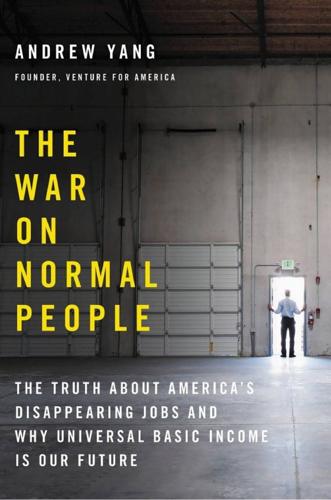
The War on Normal People: The Truth About America's Disappearing Jobs and Why Universal Basic Income Is Our Future
by
Andrew Yang
Published 2 Apr 2018
“I thought we were rich”: PBS News Hour, “How Rust Belt City Youngstown Plans to Overcome Decades Of Decline,” https://www.youtube.com/watch?v=IKuGNt1w0tA. “I started off working with a shovel and pick…”: Chris Arnade, “White Flight Followed Factory Jobs out of Gary, Indiana. Black People Didn’t Have a Choice,” The Guardian, March 28, 2017. “I really would like to move someplace more beautiful…”: Chris Arnade, “White Flight Followed Factory Jobs out of Gary, Indiana. Black People Didn’t Have a Choice,” The Guardian, March 28, 2017. “Between 1950 and 1980… patterns of social pathology emerged…”: Howard Gillette, Jr., Camden after the Fall: Decline and Renewal in a Post-Industrial City (Philadelphia: University of Pennsylvania Press, 2006), pp. 12–13.
…
The county took over policing later in 2013 and installed a $4.5 million security center as well as 121 security cameras and 35 microphones to detect gunshots and other incidents, which has brought some degree of stability and a decline in violence. These brief descriptions are by no means full histories of these communities. For example, they gloss over the racial dynamics that each city experienced, as each underwent “white flight” during their declines. They also pay short shrift to the many heroic efforts to improve matters on the ground on a daily basis—I naturally root for the people who stuck around. The central point is this: In places where jobs disappear, society falls apart. The public sector and civic institutions are poorly equipped to do much about it.

Age of the City: Why Our Future Will Be Won or Lost Together
by
Ian Goldin
and
Tom Lee-Devlin
Published 21 Jun 2023
Desegregation in schooling profoundly altered the lives of Black students who were able to attend mixed schools, with higher rates of high school graduation and a better chance of escaping from poverty.20 Mixed schools also helped to foster mutual understanding and acceptance among pupils of different races. But the contribution of these policies to further ‘white flight’ from inner city areas, and the resulting entrenchment of racial poverty, was also real.21 This story is not unique to the US. In Britain, settlement of non-White populations from former colonies in the decades after the Second World War led to a similar pattern, as landlords and lenders excluded these migrants from affluent suburban areas.22 Neighbourhoods like Brixton and Dalston in London became mired in poverty and relative deprivation.
…
(eds), Imagining the Future City: London 2062 (Ubiquity Press). 15 de Vise, P., 1976, ‘The suburbanization of jobs and minority employment’, Economic Geography, Vol. 52, No. 4. 16 Hobbs, F. and Stoops, N., 2002, ‘Demographic trends in the 20th century’, US Census Bureau (census.gov). 17 Cited in Wilkerson, I., 2016, ‘The long-lasting legacy of the Great Migration’, Smithsonian Magazine. 18 Wilson, W., 1987, The Truly Disadvantaged (University of Chicago Press). 19 Rajan, R., 2019, The Third Pillar (William Collins). 20 Hannah-Jones, N., 2019, ‘It was never about busing’, New York Times. 21 Clark, W., ‘School desegregation and white flight: a re-examination and case study’, Social Science Research, Vol. 16, No. 3. 22 Rhodes, J. and Brown, L., 2019, ‘The rise and fall of the “inner city”: race, space, and urban policy in postwar England’, Journal of Ethnic and Migration Studies, Vol. 45, No. 17. 23 Ehrenhalt, A., 2013, The Great Inversion (Vintage). 24 Edlund, L., et al., ‘Gentrification and the rising returns to skill’, NBER working paper. 25 Authors’ calculations based on Zillow data and US Census population weightings. 26 Autor, D., et al., 2017, ‘Gentrification and the amenity value of crime reductions’, NBER working paper. 27 Gropius, W., 1969, ‘Principles of Bauhaus production’, in Wingler, H.
…
Cintu, A., 2021, ‘Record apartment conversions make 2021 most successful year in adaptive reuse’, RentCafe (rentcafe.com). Citi GPS, 2020, ‘Technology at work v5.0: a new world of remote work’ (oxfordmartin.ox.ac.uk). Clark, D., 2022, ‘Average age of mothers at childbirth in the United Kingdom from 1938 to 2020’, Statista (statista.com). Clark, W., ‘School desegregation and white flight: a re-examination and case study’, Social Science Research, Vol. 16, No. 3. Cline, E., 2014, 1177 B.C.: The Year Civilization Collapsed (Princeton University Press). Clossick, J., 2014, ‘The industrial city’, in Knox, P. (ed.), Atlas of Cities (Princeton University Press). Cohen, B., 2022, ‘Yes, Zoom has an office.
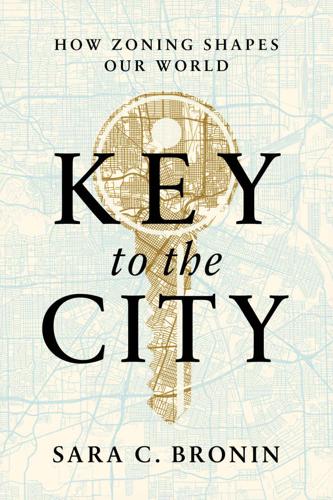
Key to the City: How Zoning Shapes Our World
by
Sara C. Bronin
Published 30 Sep 2024
The dawn of the automobile led to the rise of the suburbs and a shift at multiple levels of policy priorities that favored those suburbs over cities. In Hartford as in other American cities, civil-rights protests in 1968 after the death of Martin Luther King created lacerating images of inner-city damage, images that accelerated White flight, leaving behind neighborhoods that were increasingly segregated. Banks refused to lend. Businesses closed. More people moved away. Urban residents suffered from decisions that favored commuters. On Albany Avenue, property owners demolished three- and four-story ornate brick or wood buildings with abandon, putting gas stations, car washes, strip malls, and drive-throughs in their places.
…
accessory dwelling units, 81–83 accessory structures, 44 accessory uses, 56, 113, 186 Ace of Cakes TV show, 29–30 Act 34 (VT), 139–41 “activation elements,” 26 active transportation, 101, 104 adult use, 53–68 amortization of, 67, 179 “childhood exposure” effects of, 78–80 in Detroit, 189 in Hartford, 188 overlay districts for, 188 red-light districts, 10–11, 68 See also nightlife affordability gap, 93 African American communities the African diaspora and, 2, 42 agricultural entrepreneurship and, 114, 116, 195 in Chicago, 39–45, 80, 151, 185 discrimination against, 17, 81, 92 in the diverse makeup of the postwar city, 55 food insecurity among, 195 in Georgetown, 168 Great Migration to the North, 39–40 in Hartford, 4–5, 116 homeownership gap and, 81 in Houston, 79–80 redlining, 92 in the Twin Cities, 81 unemployment among, 41, 185 agricultural use aquaculture, 115 bans against, 111, 114–15, 189 composting, 109, 112–16 food deserts, 110, 114–15 food production in cities, 109–20 “right-to-farm” laws, 118, 120 small-scale artisanal production, 29–38, 100, 116, 120, 170 urban farms, 112–15, 170 Airbnb, 88 airport, Austin’s new, 56, 186–87 Albany Avenue area of Hartford, 2–5, 110, 173 algal blooms, 117 “alley clearance” of the 1910s and 1920s, 168 American Community Survey, 180 Ames, IA, 88 Ames, Walter, 24, 25 amortization of adult uses, 67, 179 Amsterdam, 68 Anaheim, CA, 90–91 antibiotic-resistant bacteria, 117 aquaculture, 115 architecture, 152–65 from ancient Greece and Rome, 6, 172 Art Deco, 155 Beaux Arts architecture, 158 Florida Vernacular, 155 “form-based” zoning and, 152–57 Googie, 161 Gothic, 158 historic, 3, 9–10, 42, 99, 143, 158–62 incongruent or lackluster, 48, 50 intention and, 164–65 modernist, 91 “redemptive,” 46 utilitas, venustas, and firmitas (utility, delight, and firmness), 172 See also Wright, Frank Lloyd Archive House, Chicago, 42–43, 185 area median income, 76, 191, 194 Arizona McDowell Mountains, 128 Phoenix, 129–30, 134 Scottsdale, 129–32, 134, 201, 202 Sonoran Desert, 129, 201 Taliesin West, 128–30 Tucson, 11, 130, 131, 132, 134–35, 202 Art Deco architecture, 155 Article 89 (Boston’s urban farms), 112–15 Art Institute of Chicago, 43 Artists Collective, Hartford, CT, 2 Aspen, CO, 88 asphalt, 1, 2, 4, 98, 107, 129, 137, 141 Association of State Highway and Transportation Officials, 147 asthma, 4, 178 Atlanta, 104 Atlantic City, NJ, 161 Atlantic Crossing, FL, 156–57 Atlantic Plaza mall, Delray Beach, FL, 153 Austin, 54–59, 60, 62, 65, 67, 68, 133, 134 building a new airport in, 56, 186–87 building a new city hall, 133 city council, 187 downtown, 55, 57–59 Downtown Austin Alliance, 59 Driskill Hotel, 55, 57 rezoning in, 186 Sixth Street, 54–59, 80, 187 South by Southwest festival, 55–57, 68 automobiles, 3, 55, 91, 99–100, 107 car dealers, 198 carpooling, 101, 197 dependency on, 25, 183 self-driving autonomous vehicles, 108 the U.S. interstate highway system, 35, 57, 72, 75, 92 vehicle miles traveled, 93, 101 See also parking; streets and roads; suburbs aviation service zones, 186 Avon, a suburb of Hartford, 4–5 Baja California, 129 Baltimore, MD, 29–34, 37, 39, 188 adult nightlife in, 62–68 “Black Friday flood,” 63 “the Block,” 64 Charm City Cakes, 29–34, 183 city council, 37, 63 downtown, 30–31, 63–65 Great Fire of, 63 Inner Harbor, 63–64 Jones Falls, 30, 62–64 minimum parking mandates in, 184 mixed-use districts in, 31–34, 65 Remington neighborhood of, 30–34, 39, 63 rezoning in, 32–33, 184 White flight from, 47 barrier islands, 152, 157 Beaux Arts architecture, 158 “bedroom” communities, 28 bedrooms, number of, 19, 98, 106, 154, 170 beekeeping, 112–13, 115 Bender, Lisa, 81–82 Bermuda grass, 130 Bermuda shutters, 153, 156 Best, Denise, 1–4, 9, 110, 172–73 bicycling “bike score,” 33 bike-sharing services and facilities, 197 parking for, 101, 102–3, 197 road access and, 140, 141–42 Black Americans.
…
See also White communities Census data, 19, 77, 101, 110, 180, 194 charging stations, 108 Charles II of England, 123 Charles, Ray, 48 Charm City Cakes, Baltimore, 29–34, 183 Charter Oak, Hartford, 123–25, 127 Chesapeake and Ohio Canal, 168 Chesapeake Bay, 117 Chicago, 39–41 city council, 42 downtown, 43 Jackson Park, 45 Lake Michigan waterfront, 43 “most dangerous block” in, 41 Parkway Garden Homes, 41, 185 South Side, 39–45, 80, 151, 185 White flight from, 47 Woodlawn, 39, 41, 184, 185 Chicago Metropolitan Agency for Planning (CMAP), 185 “childhood exposure” effects, 78–80 Chinese Americans, 6, 55, 179 Church, Frederic, 124, 126 Church Street Marketplace, Burlington, 136–39, 142 cities, 1–11, 166–73 the architecture of, 152–65 art and culture in the city, 39–52 European cities, 39, 68 “urban renewal,” 137, 369 See also communities; downtown districts; governance; specific cities in the U.S.
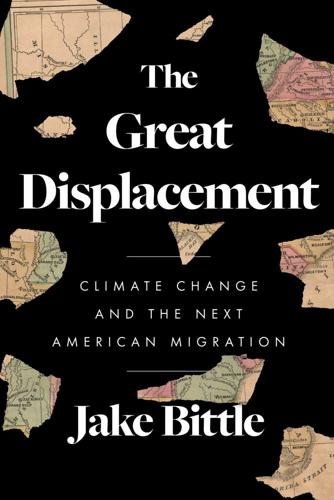
The Great Displacement: Climate Change and the Next American Migration
by
Jake Bittle
Published 21 Feb 2023
They took place in an unequal city, in an unequal economy, and they did not resolve that inequality so much as perpetuate it. The demographic makeup of Woodland Trails West when the buyouts began in 2000 was very different than it had been when the neighborhood first opened. Over the previous thirty years, northwest Houston had experienced a prolonged episode of white flight: when the price of oil cratered in the mid-eighties, it plunged the city into a recession, which in turn triggered a wave of foreclosures in middle-class havens like Woodland Trails West. By the time the recession ebbed, another wave of new suburban housing had already been built farther out from the downtown core, drawing wealthy white families away.
…
The city had become a Frankenstein’s monster, a patchwork creature ripping off pieces of itself and grafting them onto other parts in an effort to adapt to the constant risk of flooding. Thousands of buyout families, meanwhile, had slipped into Houston’s larger currents of development and demography, following larger patterns of white flight and sprawl. The same rain had fallen on all of them, but they lived in an unequal city, and had met unequal fates. II. Squeezing the Lemon Just as every boom is followed by a bust, so every bust is followed by a boom. The oil crash of the eighties had shocked Houston’s economy, but the city roared back to life as it entered the new millennium, buoyed by the fracking revolution and droves of new arrivals from other states and countries.
…
The residents of the neighborhood before the storm had for the most part been older, white, established families who had moved to the neighborhood on the tail end of Houston’s first boom; young couples like Sergio and Becca Fuentes were the exception, but they were getting more common as older residents moved away. Bear Creek was farther out on Houston’s pinwheel of sprawl, and about a decade behind on the white-flight timeline, but it was following the same trajectory. The swarm of investor activity sped up the process, bringing about a decade of demographic change in the space of a few months. New arrivals tended to be younger and lower income than the former owners, and they were far more likely to be Black or Hispanic.
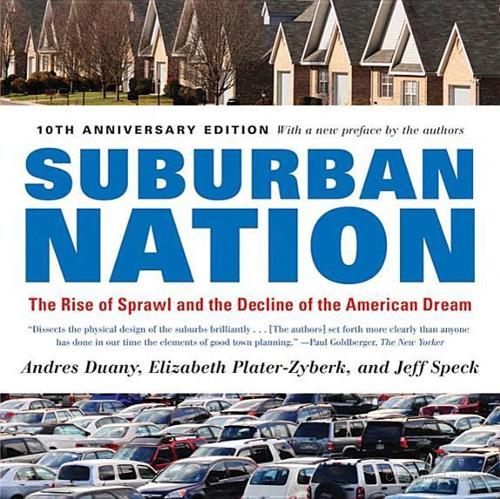
Suburban Nation
by
Andres Duany
,
Elizabeth Plater-Zyberk
and
Jeff Speck
Published 14 Sep 2010
To the contrary, our suburban expansion was largely government-driven, and completely lacking in incentives to integrate different housing types or incomes among the new construction. In a sense, our government did half its job: it provided the means of escape from the city—highways and cheap home loans—while neglecting to allocate those means fairly. The resulting social stratification of suburban development—compounded by racially based white flight—continues today. Inevitable or not, the fact remains that the inner city is now where America’s least privileged are most concentrated, a condition exacerbated by sprawl. Two aspects of suburbanization contribute dramatically to the plight of the urban poor: government investment in suburb-serving highways has left many inner-city neighborhoods sundered by high-speed traffic, and disinvestment by fleeing corporations robs city residents of adequate access to jobs.
…
Postal Service Utah utilities, underground Ventura, Michael Vermont Vero Beach (Florida) Veterans Administration (VA) villages, new, see new towns and villages Virginia Beach (Virginia) Virginia Department of Transportation Visual Preference Survey walkable neighborhoods, see pedestrian-friendly design Wall Street Journal, The Warwick (New York) Washington, George Washington, D.C.; Georgetown; L’Enfant plan for; Rock Creek Park Washington State; see also Seattle welfare reform West Hollywood (California) West Palm Beach (Florida) wetlands white flight White Mountain Survey, Inc. Whiz Kids Who Framed Roger Rabbit (film) Whyte, William Williamsburg (Virginia) Wilson, Woodrow Winter Park (Florida) work centers, neighborhood Wright, Frank Lloyd Wyndcrest (Maryland) yield streets zoning; of building types; crime control and; developers and; gentrification and; history of; inner-city; mixed-use, see mixed-use development; public transit and; regional planning and; rewriting ordinances; single-use, see single-use zoning Notes a Bill Morrish and Catherine Brown have done much to document this new frontier of decline, the “inner ring,” at the Design Center for American Urban Landscape at the University of Minnesota.
…
The exact identity of Them varied a bit around the country. Blacks, Latinos and poor people qualified. Catholics, Jews and Orientals were targets in many places” (Peter Hall, Cities of Tomorrow, 60). It has been well documented by Robert Fishman and others how racism was a large factor in the disappearance of the middle class from the center city (“white flight”), and how zoning law clearly manifests the desire to keep away what one has left behind. f Data given by Nelson Rising at the second Congress for the New Urbanism, Los Angeles, May 21, 1994. From 1970 to 1990, Los Angeles grew 45 percent in population and 300 percent in size (Christopher Leinberger, Robert Charles Lesser & Co. original research).
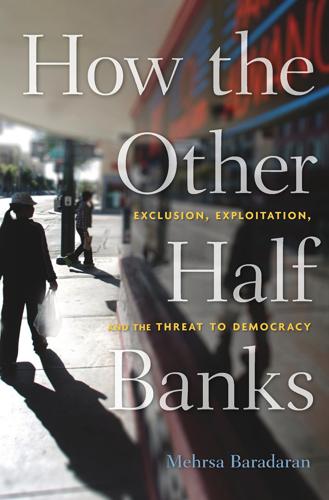
How the Other Half Banks: Exclusion, Exploitation, and the Threat to Democracy
by
Mehrsa Baradaran
Published 5 Oct 2015
Both the private and public sectors used these maps for years and prevented minorities from benefiting from the subsidized mortgage loans used to grow the capital and wealth of the lower and middle classes. Redlining not only blocked the flow of beneficial credit to nonwhites, but it also led to the deterioration of many inner-city neighborhoods. The eventual downturn that “white flight” created in these urban areas also resulted in “bank flight” as private business followed the white customers out. The social contract forged during the Great Depression stabilized U.S. banking for several decades. For fifty years, the banking sector experienced measured growth and success while the rest of the economy generally thrived.
…
As the banking sector suffered competition from the capital markets in the 1970s and 1980s, banks increasingly shed lower-income and minority customers and closed branches in low-income neighborhoods in order to cut costs—a rebirth of redlining, but this time, not as obviously discriminatory. The “white flight” started in the 1930s increased in the 1970s and 1980s as many more banks abandoned these areas for those more profitable.92 Businesses left, people lost jobs, banks continued to close, and crime increased, accelerating the downward spiral. Many of these communities have yet to recover from the exodus of businesses caused by the bank departures during that era.
…
Martin Luther King Jr., “I Have a Dream,” accessed March 19, 2015, www.thekingcenter.org/archive/document/i-have-dream-1. 91. Richard Scott Carnell, Jonathan R. Macey, and Geoffrey P. Miller, The Law of Banking and Financial Institutions, 350 (New York: Aspen Publishers, 2009). 92. Jan Blakeslee, “ ‘White Flight’ to the Suburbs: A Demographic Approach,” University of Wisconsin Institute for Research on Poverty Newsletter Vol. 3, No. 2 (1978–1979), 1. 93. Warren L. Dennis, “The Community Re-investment Act of 1977: Its Legislative History and Its Impact on Applications for Changes in Structure Made by Depository Institutions to the Four Federal Financial Supervisory Agencies” (working paper no. 24, Purdue University, 1978), accessed March 19, 2015, faculty.msb.edu/prog/CRC/pdf/wp24.pdf, 4 (quoting Congressional Record, daily ed.

The Optimist: Sam Altman, OpenAI, and the Race to Invent the Future
by
Keach Hagey
Published 19 May 2025
Washington also tapped Altman’s consultancy for a task force to stop landlords from walking away from their buildings in poor parts of town.6 A failed romance had brought Jerry to Chicago, but there he found a home in the country’s mecca of community organizing. This was the city that had given rise to activists like Gale Cincotta, a mother of six from a neighborhood beset by white flight. The horror she felt over her children’s underfunded schools led to a national crusade against redlining and then the 1977 Community Reinvestment Act.7 Jerry forged alliances with Cincotta and her organizing partner, Shel Trapp, who were famous for antics like nailing a rat to an alderman’s door to protest the city’s slow response to its rodent problem.
…
Louis and co-founded Haffner & Gibstine Real Estate on the bustling commercial corridor of Easton Avenue, since renamed Martin Luther King Drive, selling bungalows in neighborhoods like Richmond Heights, Hamilton Heights, and The Ville. He changed partners over the years, but continued to trade in districts that, decades later, white flight would hollow out and his grandson-in-law, Jerry Altman, would try to revitalize. MARVIN, HERMAN’S son, had a brain for math and science. He attended Soldan High—a St. Louis public school with a largely wealthy and Jewish student body—enrolled in Washington University in 1940, and went on to Washington University’s school of medicine, obtaining his medical degree in 1946.26 That year, he married Peggy Francis, the daughter of a real estate executive from Clayton, when she was midway through the University of Illinois.
…
Louis, 27 Puck (magazine), 297–98 Puerto Rico conference on AI safety (2015), 167–70, 207, 211 Qualcomm subsidiary, 120 Quora, 220, 234, 278 race and racism antisemitism in chatbots, 270 first Black mayor of Chicago, 21–22, 33, 37 Latino people and communities, 21, 35 racism among tech bros, 164–65 redlining, racially restrictive covenants, and slum clearance, 22, 26–27, 29, 40 white flight, 22, 26, 32 see also affordable housing; Black people and communities Radford, Alec, 218–21, 241–43 Radiate (formerly Viendo), 76, 77–82, 85, 88–90, 93–94, 96–101 Raimondo, Gina, 273 Rain Neuromorphics AI chip startup, 232 Rainert, Alex, 118 Ralston, Geoff, 170, 235–36 Ramsay, Mike, 121–22 RAND Corporation, 267, 299, 300, 301 Rap Genius (later Genius), 133 Rashid Al Maktoum, Maktoum bin Mohammed bin, 274 “rationalism,” 143, 176, 210, 212, 225, 264 reality distortion field (RDF), 61 Rechter, Joe, 27 Reconstruction, 26 recurrent neural networks (RNNs), 219 Recurse Center, 176 Reddit, 70, 76, 81, 160–63, 171, 203, 218, 241, 251–52 Reed Hastings, 204 Reform Judaism, 15–16, 24, 44, 31, 43, 227 reinforcement learning, 147, 185, 191–93, 264, 265, 284 Renewing Cities (Gittell), 35 rent strikes, 27 Republican Party, 21, 203, 207, 266, 278 RescueTime time-tracking app, 245 Resident Evil (video game), 97 Retro Biosciences, 257, 259 Reynolds, Malvina, 162 Rhodes, Elizabeth, 195 “RIP Good Times” deck, 117, 123 Rippling (startup), 250 Rizzo, Frank, 28 Roberts, Steve, 42–43, 53–54, 59 Roble, Jim, 202 Roedinger, Kurt, 46–47, 51–53 Rolling Stone article alleged gang rape at the University of Virginia, 204 Roosevelt, Theodore, 46 Rosewood resort, Menlo Park, CA, 177, 183 Ross, Blake, 56, 63 Rostenkowski, Dan, 34–35 Rowghani, Ali, 3, 158–59 RSS-feed format, 63 Rubik’s cube–solving robot hand, 218 Rusenko, David, 157 Russell, Stewart, 305–6 Russia, 23, 27n Russian Hill neighborhood of San Francisco, 86, 260, 293, 315 Rutkowski, Greg, 263 Ryan, Jim, 104 Sacks, David, 139–40 Safari web browser, 111 SAFE (Simple Agreement for Future Equity) convertible notes, 94–95 Safe Superintelligence Inc.
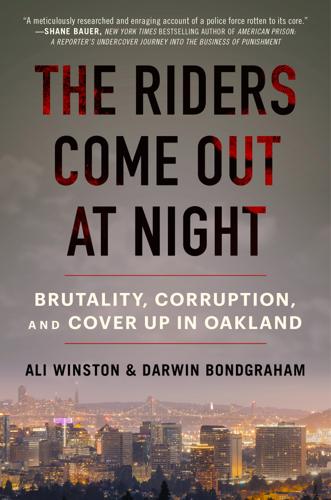
The Riders Come Out at Night: Brutality, Corruption, and Cover-Up in Oakland
by
Ali Winston
and
Darwin Bondgraham
Published 10 Jan 2023
Ultimately hundreds of cases would be dismissed or reversed due to the Riders’ misconduct. 2 NOBODY WILL LISTEN TO JERRY AMARO To understand the corruption and brutality that Keith Batt witnessed during his seventeen days as an Oakland police officer, one has to step back and look at the entire city, its deeply rooted problems, and the dreams of its political leaders around the turn of the millennium. As in many American cities, the 1990s were a turbulent time in Oakland. Deindustrialization and white flight ravaged its economy, starting in the 1970s and culminating in the 1980s with the bankruptcy and dissolution of several big employers, including the headquarters of the industrial metals manufacturer Kaiser Steel and the closure of factories such as the Del Monte cannery. Perhaps the biggest hit was the demise of Oakland’s retail economy.
…
He absorbed these conversations and the fears many conveyed to him about street violence and the drug trade.5 For much of the twentieth century, Oakland’s leaders, mostly white Republicans, had addressed crime by putting more police on the streets. And crime had been lower before the 1990s. However, conservatives had run the city at the peak of postwar prosperity, before heavy industry withered away, mass white flight, and the explosion of the crack cocaine trade. Now the economy was in tatters. Residents had lived through two decades of Black mayors and Black-led city councils that proved powerless to stop the economic collapse while the violence metastasized. In an interview with historians from the University of California, Berkeley, two decades after his successful first run for mayor, Brown acknowledged that his initial green dreams for Oakland fell flat.
…
The firestorm killed twenty-five and destroyed more than three thousand homes and apartments.71 Reagan-era austerity and the city’s continued commercial decline took a toll: one in six Oaklanders were on welfare, including more than half of public school students. A quarter of high school students dropped out annually. Black infant mortality rose 22 percent in a decade.72 White flight and disinvestment reached a nadir: by 1990, fewer than 9 percent of the Oakland Unified School District’s fifty thousand students were white. Families that declined to join the white suburban exodus opted increasingly for private hills schools such as Bishop O’Dowd and Head-Royce. Approximately one in five Oakland residents lived below the poverty level, rising to two in five in sections of East Oakland.73 In 1991 J.C.
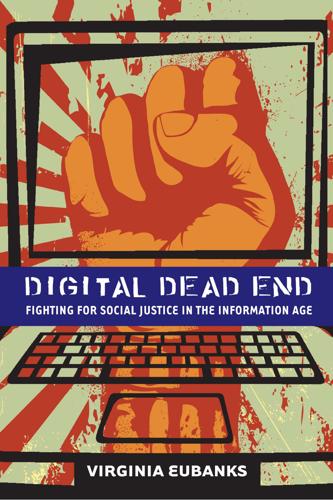
Digital Dead End: Fighting for Social Justice in the Information Age
by
Virginia Eubanks
Published 1 Feb 2011
In 2000, the population dipped below 50,000 for the first time in the twentieth century (to a mere 49,107, only 60 percent of its record high in 1925). It is projected to decrease still further. 3. In the early 2000s, we began to see the first appreciable reverse in the decades old trend of white flight from cities and metropolitan areas across the United States. Reverse white flight is particularly pronounced in Manhattan, 150 miles south of Troy, where the African American and Hispanic populations have stagnated or declined and median family incomes and house values have skyrocketed since 2000. Many individuals and families have been priced out of the New York City metropolitan area, and more were unsettled by the events of September 11, 2001.
…
Word among homeowners, downtown businesses, commercial developers, and local government officials was that Troy, long challenged by a stagnant economy1 and declining population base,2 was turning itself around, injecting new life into its downtown and revitalizing the local economy by attracting out-of-town property buyers, shoppers, businesses, and tourists. These claims were buoyed by a number of factors that converged right around the turn of the millennium. Reverse white flight, the impacts of the events of 50 Chapter 4 September 11, and the skyrocketing cost of living in the New York City metropolitan area combined to usher white, middle-class individuals and families back into the small historic cities that line the Hudson River between Manhattan and Albany.3 There was a nationwide speculative real estate boom, one that whipped the property markets of small, riverfront cities like Troy into a particularly remarkable frenzy.4 New economy boosters saw the city as a centerpiece for the region’s broader revitalization strategy: high-technology economic development.
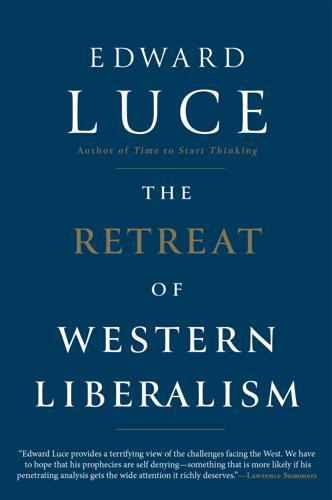
The Retreat of Western Liberalism
by
Edward Luce
Published 20 Apr 2017
Little wonder the tone of our politics has shifted so markedly from hope to nostalgia.37 Unlike during the early Industrial Revolution, today’s poor are not intentionally being displaced. Instead they are being silently priced out of their homes. They are falling victim to creeping gentrification, or what Spike Lee, the American film-maker, calls ‘the motherfuckin’ Christopher Columbus Syndrome’.38 In the US they call this reverse white flight, as the offspring of the suburban well-to-do reclaim the downtown wards and boroughs their parents and grandparents fled in the post-war era. The term gentrification was coined by Ruth Glass, a British academic, who was commenting on an early version of the trend in 1960s London. Today, no single London borough has a working-class majority.
…
R., 149 media: exposure of Nixon, 131–2; fake news, 130, 148, 178–9; falling credibility in US, 130; in Russia, 129–31, 172–3; television, 84, 128, 129, 130 medicine and healthcare, 35, 36, 42, 58, 59, 60, 62, 102, 103, 198 Medvedev, Dimitry, 79 Meiji Restoration in Japan, 78 mercantilism, 78 ‘meritocracy’, 43, 44–6 Merkel, Angela, 15, 180 Mexico, 29, 114 Middle East, 181, 183 Middle East and North Africans (MENAs, US ethnic category), 95 Midland, Michigan, 194–5 migration, 41, 99–100, 196, 198; current crisis, 70, 100, 140, 180–1; and welfare systems, 101, 102 Milanovic, Branko, 31, 32, 33 Mill, John Stuart, 161, 162 Mineta, Norman, 134 Mitterrand, François, 90, 107 Modi, Narendra, 201 Moldova, Grape Revolution (2009), 79 Mongol China, 25 Monroe Doctrine (1823), 164–5 Moore, Barrington, 12 Morozov, Evgeny, The Net Delusion, 129 Mounk, Yascha, 68, 123 Müller, Jan-Werner, 90, 118, 139 multinational companies, 26–7, 69–70 multipolarity, 6–8, 70 Musharraf, Pervez, 80 Muslim Brotherhood in Egypt, 82 Napoleonic Wars, 156 Nathan, Andrew, 84 National Endowment for Democracy (NED), 82 National Front in France, 15, 102, 108–10 National Health Service, 102 nationalism: comeback of, 11, 97, 102, 108–9, 170, 174; and end of Cold War, 5; European, 10–11, 102, 108–9; and global trilemma, 72–3; Summers’ responsible nationalism, 71–2 Nato alliance, 135, 140, 179 Navarro, Peter, 149, 167, 180 Negroponte, Nicholas, 127 Netherlands, 102 New York, 49–50, 54 New Yorker, 35 Nixon, Richard, 131–2, 134 non-governmental organisations (NGOs), 85 North American Free Trade Agreement, 73 North Korea, 175 nuclear weapons, 5, 167, 174–6 Nuttall, Paul, 90 Obama, Barack: and AIIB, 84; and Arab Spring, 82; Asia pivot policy, 157, 160–1; election of (2008), 97; and financial sector, 193, 199; gay marriage issue, 188; gender identity order (2016), 187–8; on history’s long arc, 190; and Islam, 182; and nuclear weapons, 175–6; trip to China (2009), 159–60; US–Russia relations, 79; and world trade agreements, 73; ‘wrong side of history’ language, 187–8, 190 Occupy Wall Street, 139 oikophobia, 111–12, 117 Opium Wars, 23 Orbán, Viktor, 138–9, 181 Organization for Economic Cooperation and Development, 29 Orwell, George, 69, 128 Oxford University, 4 Paine, Thomas, 126 Pakistan, 175 Philippines, 61, 136–7, 138, 160, 202 Philosophy, Politics and Economics (PPE), 4 Plato, 137 politics in West: 1968 Democratic Convention, 188–9; decline of established parties, 88–90; declining faith in system, 8–9, 12, 14, 88–9, 98–100, 103–4, 119–23, 202–3; and disappearing growth, 13; falling voter turnout in UK, 99; left embraces personal liberation (1960s), 188–9; and ‘meritocracy’, 43–6; move rightwards of working classes, 95–9, 102, 108–10, 189–91, 194–5; and national identity, 71–3; privatising of risk since late 1970s, 191–3; responses to digital revolution, 52–4, 56–8, 59–61, 67–8; Third Way, 89–92; urban–hinterland split, 46–51, 119, 120, 130, 135; US political system, 131–6; voter disdain for elites, 14, 98–100, 110, 119 Pomerantsev, Peter, Nothing Is True and Everything Is Possible, 79, 130, 140, 172 populist right: ‘alt-right’ fringe, 97, 104; America First movement, 117; and automation, 67; cultural and economic anxieties, 190–6; Davos’s solution, 69, 70–1; in Europe, 139–40; Andrew Jackson’s election (1828), 113–14; and migration crisis, 181; as not democratic, 139; racism as not root cause, 97, 98, 100, 195; Republican Party dog whistles, 190; stealing of the left’s clothes, 103; ‘take back control’ as war cry, 190; and war against truth, 79, 86, 127, 128–31, 172–4, 178–9, 195–6; see also Putin, Vladimir; Trump, Donald Portugal, 77 Primakov, Yevgeny, 6 protectionism, 19–20, 73, 78, 149 Putin, Vladimir: 2012 presidential victory, 130; annexation of Crimea (2014), 8, 173; and fall of Soviet Union, 6; interference in Europe, 179, 180; and Islam, 182; mastery of diversion/confusion, 86, 129, 130–1, 137, 172–3; Medvedev succeeds (2008), 79; replaces Yeltsin as president, 78; Trump’s admiration for, 7, 129, 135; and Trump’s victory, 7, 12, 79; and US ‘war on terror’, 80; and US–China war scenario, 146–7, 152–3 Putnam, Robert, 38 Quadruple Alliance, 7 Quah, Danny, 21 race and ethnicity: and 2016 US Presidential election, 94, 95, 96–7, 98; and ‘identity liberalism’, 14, 96–8; majority-white backlash concept, 12, 14, 96, 102, 104; poor whites in USA, 95–6, 112–13; return of racial politics, 102, 103, 104; US classification data, 94–5; and welfare systems, 101, 102 racism, 97, 98, 99, 100–1, 104, 113–14, 195 Reagan, Ronald, 37 Reagan Democrats, 95, 189 Reeves, Richard, 44 Regional Comprehensive Economic Partnership, 167 remote intelligence, 13, 61–2 Renaissance, 24 Reuther, Walter, 66–7 the rich, 32–3, 50–1, 68, 197; Aristotle on, 200; loss of faith in democracy, 122–3; and rising inequality, 32–3, 43, 46; Trump’s support for, 193, 195, 196, 199–200 robot economy, 34, 51–5, 56, 60–2, 123 Rodrik, Dani, 72, 73 Rome, classical, 25, 128–9 Roosevelt, Eleanor, 10 Roosevelt, Franklin Delano, 128 Rousseau, Jean-Jacques, 126 RT (Russian state TV channel), 84, 85 Rubin, Robert, 71 Russia: conference on ‘polycentric world order’ (Moscow, 2016), 5–8; dissidents’ view of West, 140; expulsion of Western NGOs, 85; as failed democracy, 12, 78, 79, 82, 173; and fake news, 178; media in, 129–31, 172–3; metropolitan elites, 130; and multipolarity, 6–8; and nuclear weapons, 175; privatisation fire sale in, 79; reality-TV politics in, 79, 86, 129–31, 172–3; Revolution (1917), 115; and Trump, 7, 12, 79; and Washington Consensus, 29, 78–9; see also Putin, Vladimir; Soviet Union Sajadpour, Karim, 193, 194–5 Salazar, António de Oliveira, 77 San Bernardino massacre (2015), 182 San Francisco, 49 Sanders, Bernie, 92, 93 Santayana, George, 10 Saudi Arabia, 175, 182 Scandinavia, 43, 101, 197 Schröder, Gerhard, 90 Schwarzman, Stephen, 199–200 science, 72, 171, 172 Scopes Monkey trial, 111 Scruton, Roger, 111–12 Seattle world trade talks (1999), 73 Second World War, 116–17, 163, 169, 170–1 Sessions, Jeff, 151 Shanghai Cooperation Organization, 80 Shultz, George, 132 Shultz, Martin, 15 Singapore, 21 Sino-Indian war (1962), 166 slave trade, African, 23, 55, 56 Smith, Adam, The Theory of Moral Sentiments, 38–9 Social Darwinism, 162 social insurance systems, 42, 101–3, 191, 198 social media, 34, 39, 53, 54, 66, 67, 70, 178 Solow, Robert, 34 South America, 32 South China Sea, 147–8, 160–1 South Korea, 21, 29 Soviet Union, 80, 115, 130, 171, 174; collapse of, 6, 78, 168; see also Russia Spain, 43, 63, 77, 140 Stalin, Joseph, 128, 171 suburban crisis, 46–8 Summers, Lawrence, 71 Sun Tzu, 161 Surkov, Vladislav, 172–3 surveillance technologies, 68 Sweden, 101, 122 Taiwan, 145, 158, 164, 165, 166–7, 168; and US ‘One China’ policy, 145–6, 158; and US–China war scenario, 145, 151–3 Taiwan Strait, 152, 158 Task Rabbit, 63 taxation, 110, 198, 199–200 technology: age of electricity, 58–9; and globalisation, 55–6; leap forward (from 1870), 58–9; steam power, 24, 55–6; the telegraph, 127; as Trump’s friend, 131, 171; and utopian leaps of faith, 127–8; see also digital revolution television, 84, 128, 129, 130 tesobono crisis, Mexican (2005), 29 Thailand, 21, 82 Thatcher, Margaret, 189–90 Thiel, Peter, 34, 53 Thompson, E.P., 201 Thoreau, Henry David, 127–8 Thrower, Randolph, 132 Tillerson, Rex, 147–8, 161 Toil Index, 35–6 Trans-Pacific Trade Partnership, 73, 167 transport, 54, 55, 56–7, 58, 61; self-driving vehicles, 54, 57, 60, 68 Trump, Donald: admiration for Putin, 7, 129, 135; and America First movement, 117; autocratic/authoritarian nature of, 133, 169, 171, 178–9; Bannon as Surkov of, 173; Chinese view of, 85–6, 140; confusion as strategic goal, 79, 86, 127, 128, 130, 131, 173, 178–9, 195–6; foreign policy, 167–70, 178–80, 181–4; ignorance of how other countries think, 161, 167–9; inaugural address, 135, 146; Andrew Jackson comparisons, 113–14; and male voters, 57; as mortal threat to democracy, 97, 104, 111, 126, 133–6, 138, 139, 161, 169–70, 178–84, 203–4; and Muslim ban, 135, 181, 182; narcissism of, 170; need for new Mark Felt/Deep Throat, 136; and nuclear weapons, 175, 176; offers cure worse than the disease, 14, 181; plan to deport Mexican immigrants, 114, 135; poorly educated as base, 103, 123; promised border wall, 94–5; protectionism of, 19–20, 73, 149; and pro wrestling, 124; stealing of the left’s clothes, 101, 103; stoking of racism by, 97; support for plutocracy, 193, 195, 196, 199–200; and Taiwan, 145, 166–7, 168; targeting of Muslims, 135, 181–3, 195–6; and Twitter, 70, 146; and UFC, 126; urban–hinterland split in 2016 vote, 47–8, 119, 120, 130, 135; and US political system, 131, 133–5; US–China war scenario, 145–53, 161; victory in US presidential election, 5, 6–7, 11–12, 15, 28, 47–8, 79, 87, 96–8, 111, 120, 194–5 Trump: The Game (board game), 7 Tsai Ing-Wen, 151 Tunisia, 12, 82 Turkey, 12, 82, 137, 140, 175 Twitter, 34, 53, 70, 146 Uber, 63 UFC (Ultimate Fighting Championship), 125–6, 127 UK Independence Party (UKIP), 90, 98, 100, 101–2, 190; xenophobia during Brexit campaign, 100–1 Ukraine: Orange Revolution (2004), 79; Putin’s annexation of Crimea (2014), 8, 173 United States of America (USA): 1968 Democratic Convention, 188–9; 2016 presidential election, 5, 6–7, 11–12, 15, 28, 47–8, 79, 87–8, 91–8, 119, 130, 133, 135; 9/11 terrorist attacks, 79–80, 81, 182; America First movement, 117; civil rights victories (1960s), 190; ‘complacent classes’ in, 40; Constitution, 112–13, 163; and containment of China, 25–6, 145–6, 157–61, 165; decline of established parties, 89; declining hegemony of, 14, 21–2, 26–8, 140–1, 200–1; domestic terrorist attacks, 182, 183; elite–heartland divide, 47–8, 119, 130, 135; foreign policy since WW2, 183–4; gig economy, 63–5; gilded age, 42–3; growth after 2008 crisis, 30–1; growth of inequality in modern era, 43, 44–8, 49, 50–1; history in popular imagination, 163; Lend-Lease aid to Britain, 169; middle-income problem in, 35–41; Monroe Doctrine (1823), 164–5; murder rate in suburbs, 47; nineteenth-century migration to, 41; Operation Iraqi Freedom, 8, 81, 85, 156; opioid-heroin epidemic, 37–8; Patriot Act, 80; political system, 112–13, 131–6, 163; post-Cold War triumphalism, 6, 71; primacy in Asia Pacific, 26, 157, 160–1; racial/ethnic make-up of, 94–6; relations with Soviet Union see Cold War; relative decline of, 170; ‘reverse white flight’ in, 46; technological leap forward (from 1870), 58–9; vanishing class mobility in, 43–6; ‘war on terror’, 80–1, 140, 183; Washington’s ‘deep state’, 133–4 Universal Basic Income (UBI) proposals, 196–7 Universal Declaration of Human Rights, 8–9, 10 Vance, J.D., 108 Venezuela, 82 Versailles Conference (1919), 154 Vienna, Congress of (1814–15), 7 Vietnam, 166 Wallace, George, 113 Walters, Johnnie M., 132 ‘war on terror’, US, 80–1, 140, 183 Warsh, Kevin, 150 Washington Consensus, 29–30, 71, 77, 78–9, 158–9 Washington Post, 132 Weber, Max, 162 welfare systems, 42, 101–3, 191, 198 Western thought: on China, 158–9, 161–2; conceit of primacy of, 4–5, 8–9, 85, 158–9, 162; declining influence of, 200–1; idea of progress, 4, 8, 11–12, 37; modernity concept, 24, 162; non-Western influences on, 24–5; see also democracy, liberal; liberalism, Western WhatsApp, 54 White, Hugh, 25, 158 Wilders, Geert, 102 Wilentz, Sean, 114 Williamson, John, 29 Wilson, Woodrow, 115 Woodward, Bob, 132 Wordsworth, William, 3 World Bank, 84 World Trade Organization (WTO), 26, 72, 149, 150 Wright, Thomas, 180 WWE (World Wrestling Entertainment), 124–5 Xi Jinping, 19–20, 26, 27, 146, 149, 168, 170; and US–China war scenario, 150, 152 Yellen, Janet, 150 Yeltsin, Boris, 78, 79 Young, Michael, 45–6 YouTube, 54 Zakaria, Fareed, 13, 119
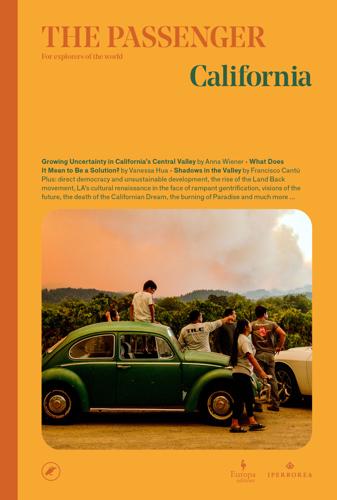
The Passenger
by
AA.VV.
Published 23 May 2022
Food, the essential to living along with unpolluted air to breathe and clean water to drink, has always been the gathering place for community. I spent most every Sunday of my childhood and early teen years at my Panamanian grandmother’s house in the Historic West Adams District, which was one of the many Los Angeles areas to experience white flight until becoming predominantly Black by the time my mother arrived from Panama in the 1950s. The area is now predominantly white, but not without Jamaican, Ethiopian, Soul Food, and barbecue restaurants, a few examples of rich traditions in Black diaspora eating. As LA is one of the ten most culturally diverse cities in the world, the restaurant experience here is naturally a multitude of choices honoring that diversity, even as they have been hit hard by the pandemic and the BIPOC communities even harder.
…
A demonstration in downtown Los Angeles on 5 June 2020 following the death of George Floyd, who was killed on 25 May while being arrested by the Minneapolis police. THE 8 PER CENT The recent history of Black Los Angeles is a story of steep relative demographic decline. From a high of almost 20 per cent in the 1970s, coinciding with the peak of so-called “white flight” from US city centres, the proportion of African Americans in the population now stands at around 8 per cent, the result of the arrival of waves of immigration from Central America in a phenomenon known as “ethnic succession”. This figure of 8 per cent has taken on a symbolic value, celebrating what remains of the Black community whose history forms an integral part of Los Angeles, above all of South Central, where three-quarters of the city’s Black population traditionally lived.
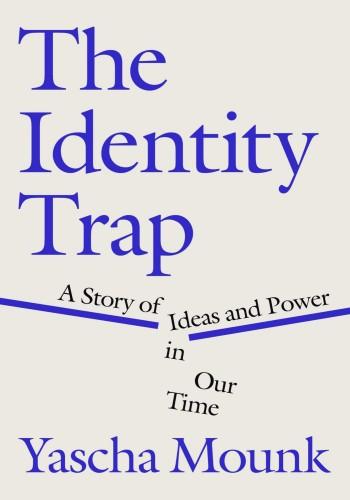
The Identity Trap: A Story of Ideas and Power in Our Time
by
Yascha Mounk
Published 26 Sep 2023
African American legislators make up 12 percent of Congress; meanwhile, African Americans, according to the 2020 census, make up 14 percent of the overall population. GO TO NOTE REFERENCE IN TEXT because of “white flight”: “Wayne County (Detroit) lost 26.6 percent of its white population in the 1970s. Cook County (Chicago) lost 15.5 percent, and Cuyahoga County (Cleveland) 20.1 percent.” Emily Badger, “Mapping 60 Years of White Flight, Brain Drain, and American Migration,” Bloomberg, Nov. 1, 2013, www.bloomberg.com/news/articles/2013-11-01/mapping-60-years-of-white-flight-brain-drain-and-american-migration. Additionally, see Matt Nowlin, Kelly Davila, and Unai Miguel Andres, “Neighborhood Change, 1970–2016,” SAVI, Summer 2018, www.savi.org/feature_report/neighborhood-change-1970-2016; Patrick Reardon, “City About Equal in Terms of Race,” Chicago Tribune, Sept. 23, 1986, www.chicagotribune.com/news/ct-xpm-1986-09-23-8603110287-story.html.
…
And yet it is impossible to understand the present intellectual moment without taking seriously the reasons why a cohort of Black scholars and intellectuals came to feel bitterly disappointed. For, measured against the exalted hopes of the civil rights era, America really did—and does—fall painfully short. In the early 1970s, neighborhoods that had once been entirely white saw Black families move in. But because of “white flight” many quickly became almost entirely Black. Traditionally white public schools finally admitted Black students. But because many white parents responded by taking their children out of these schools, yet another generation of Black pupils languished in segregated classrooms. Even today, the situation remains ambivalent.
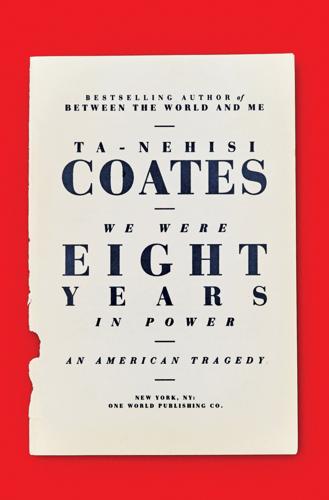
We Were Eight Years in Power: An American Tragedy
by
Ta-Nehisi Coates
Published 2 Oct 2017
A Cook County grand jury declined to charge the rioters—and instead indicted the family’s NAACP attorney, the apartment’s white owner, and the owner’s attorney and rental agent, charging them with conspiring to lower property values. Two years after that, whites picketed and planted explosives in South Deering, about thirty minutes from downtown Chicago, to force blacks out. When terrorism ultimately failed, white homeowners simply fled the neighborhood. The traditional terminology, white flight, implies a kind of natural expression of preference. In fact, white flight was a triumph of social engineering, orchestrated by the shared racist presumptions of America’s public and private sectors. For should any nonracist white families decide that integration might not be so bad as a matter of principle or practicality, they still had to contend with the hard facts of American housing policy: When the mid-twentieth-century white homeowner claimed that the presence of a Bill and Daisy Myers decreased his property value, he was not merely engaging in racist dogma—he was accurately observing the impact of federal policy on market prices.
…
They took you to the museum, the Art Institute. They did all those things, but I don’t know how. I grew up with a grandmother and an aunt. My aunt would do things my mother would not or could not.” In 1948, Chicago’s method of segregating housing—restrictive covenants—was struck down in court, triggering white flight. The South Side suffered, but unlike in other neighborhoods in other cities, the black middle class in Chicago did not follow whites to the suburbs. The result is that while the South Side bears a disproportionate share of the city’s poverty, it also has several steady working- to middle-class neighborhoods.
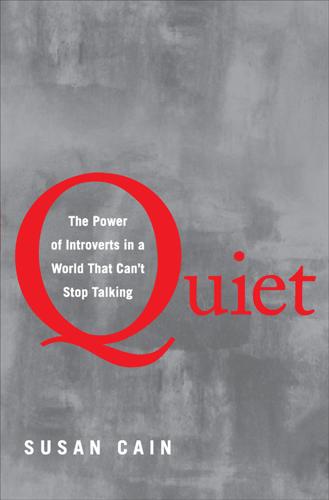
Quiet: The Power of Introverts in a World That Can't Stop Talking
by
Susan Cain
Published 24 Jan 2012
“inner scorecard”: Some psychologists would relate Warren Buffett’s self-direction not necessarily to introversion but to a different phenomenon called “internal locus of control.” CHAPTER 8: SOFT POWER 1. Mike Wei: The interviews with Mike Wei and others from Cupertino, related throughout this chapter, were conducted with the author at various stages between 2006 and 2010. 2. article called “The New White Flight”: Suein Hwang, “The New White Flight,” Wall Street Journal, November 19, 2005. 3. 53 were National Merit Scholarship … 27 percent higher than the nationwide average: Monta Vista High School website, as of May 31, 2010. 4. Talking is simply not a focus: Richard C. Levin, “Top of the Class: The Rise of Asia’s Universities,” Foreign Affairs, May/June 2010. 5. the San Jose Mercury News ran an article: Sarah Lubman, “East West Teaching Traditions Collide,” San Jose Mercury News, February 23, 1998. 6.
…
By all indications, Mike has made his parents proud. His e-mail username is “A-student,” and he’s just won a coveted spot in Stanford University’s freshman class. He’s the kind of thoughtful, dedicated student that any community would be proud to call its own. And yet, according to an article called “The New White Flight” that ran in the Wall Street Journal just six months previously, white families are leaving Cupertino in droves, precisely because of kids like Mike. They are fleeing the sky-high test scores and awe-inspiring study habits of many Asian-American students. The article said that white parents feared that their kids couldn’t keep up academically.
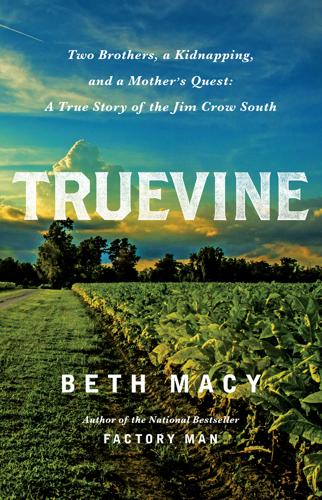
Truevine: Two Brothers, a Kidnapping, and a Mother's Quest: A True Story of the Jim Crow South
by
Beth Macy
Published 17 Oct 2016
There was only one teacher to accommodate scores of black students ranging from grades one through twelve. “I used to cry every day,” she said. When her father died the following year, the family moved to Roanoke. As massive resistance began to collapse, Brenda was one of a handful of blacks in a newly integrated Roanoke County school, where attendance was now booming due to white flight. I told her what Almond and Austin had done for the Muses. That their legal maneuver had ultimately helped the Muse family but that the ploy was also racist, patronizing, and illegal. It was one more of the thousands of stories, told and untold, that illuminated the brutal legacy of 250 years of slavery and a half-century of Jim Crow.
…
Some of her friends and relatives were among the five thousand or more people displaced by urban renewal in Roanoke. Between 1951 and 1955, JoAnne’s family lived in a new housing project called Lincoln Terrace. When school integration triggered white migration to the Roanoke County suburbs, her father bought a house in a nearby neighborhood called Rugby. Just a few years before white flight hit, all Rugby homes had been deemed salable only to whites. Boswell had been the lone dissenting voice against the construction of federally subsidized housing, trying to protect his own bottom line. If his Jordan’s Alley renters could find better, cleaner, and cheaper housing in the projects, he knew he would lose tenants.
…
The porch is not rickety, its latticework fully intact. Compared with the shacks in Jordan’s Alley, it’s draft-free and downright palatial. There’s no gaping hole in the wall, no woodstove to feed. Chances are slim that an elderly woman might freeze to death here in her bathrobe, blouses, and boots. White flight has descended on Rugby, which is fine with Annie Belle Saunders; her daughter, Dot; and Dot’s only child, eleven-year-old Nancy. Dot and Nancy are the latest recipients of the largesse of Uncle Georgie and Uncle Willie, as they call their soon-to-retire uncles and great-uncles. The women in the family have just purchased the house on Mercer, in their uncles’ names.
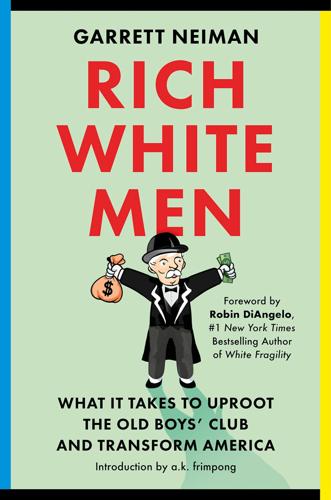
Rich White Men: What It Takes to Uproot the Old Boys' Club and Transform America
by
Garrett Neiman
Published 19 Jun 2023
Jill Rosen, “Teacher Expectations Reflect Racial Biases, Johns Hopkins Study Suggests,” press release, Johns Hopkins University, March 30, 2016, https://hub.jhu.edu/2016/03/30/racial-bias-teacher-expectations-black-white/. 7. Seth Stephens-Davidowitz, “Google, Tell Me. Is My Son a Genius?,” New York Times, January 18, 2014, https://www.nytimes.com/2014/01/19/opinion/sunday/google-tell-me-is-my-son-a-genius.html. 8. Alana Semuels, “White Flight Never Ended,” The Atlantic, July 30, 2015, https://www.theatlantic.com/business/archive/2015/07/white-flight-alive-and-well/399980/. 9. C. E. Clark, “Poverty Kills More People Every Year in the U.S. Than Heart Disease or Cancer,” Soapboxie, April 15, 2021, https://soapboxie.com/social-issues/Poverty-Kills-More-People-than-either-cancer-or-heart-disease. 10.
…
So the issue is not necessarily whether I had gifts—I believe every child has gifts—but rather that an assessment was made to label me “gifted” even though I didn’t meet the criteria that other children were asked to meet. Since the advantaged can sometimes game the system, gifted programs have reproduced America’s legacy of separate and unequal schooling. Similar to how white flight in the 1960s whitened suburban schools and effectively reinstituted segregation,8 gifted programs whitened classrooms within schools. And as elite university admissions have become more competitive, many wealthy parents now spend thousands of dollars not only to help their teenagers succeed on the SATs but to ensure their elementary school–age children meet eligibility requirements for gifted programs.
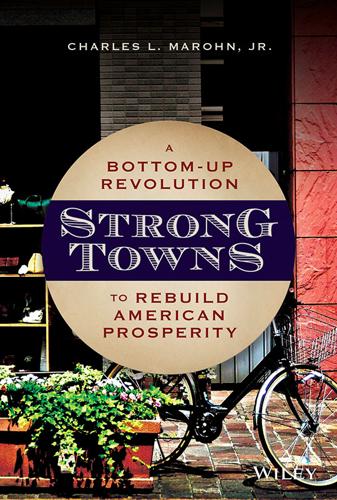
Strong Towns: A Bottom-Up Revolution to Rebuild American Prosperity
by
Charles L. Marohn, Jr.
Published 24 Sep 2019
The collective mental static preventing comprehension is also sometimes referred to as “cognitive dissonance,” a term borrowed from developmental psychology. It helps explain why the American public has been sleepwalking into the future. The Long Emergency is going to be a tremendous trauma for the human race.2 Modern Americans have a track record of explaining away the process of decline. The term white flight is an unnecessarily narrow description applied to the depopulation of core cities and the explosion of horizontal growth following World War II. While there is no question that race was an accelerator in the process, and practices like redlining went beyond class to systematically disenfranchise minorities, affluence was the underlying factor driving the mass migration.
…
Francis Catholic Church (Brainerd, Minnesota), 212–213 Sales tax, 49–50 Samuelson, Paul, 91 San Diego, California, 164–167 San Francisco, California, xi Santa Ana, California, ix–xii “Second ring” suburbs, 94 Sedlacek, Tomas, 104 Shovel-ready building sites, 32 Shreveport, Louisiana, 219–221 Sidewalk maintenance, 183, 203 Silos, in local government, 174–176 Simply Complexity (Johnson), 12 Sinclair, Upton, 50 Single-family housing, 144–145 Site-specific infrastructure, 130 Small businesses: importance of, in wealth creation, 162–163 productivity of, 133–134 Social return on investment, 78–79 Speck, Jeff, 206 Spooky wisdom: defining, 4 of farmers, 85 in human habitats, 5–10 in incremental growth of cities, 26 “Sprawl Repair,” 168 Stagflation, 94 State government: debt taken on by, 113–114 funding of local government by, 95 impact of infrastructure on, 79 limiting of municipal debt by, 191 relationship of local and, 197–198 Stewart, Paul, 152 Strategic retreats, 108–109 Strongest Town competition, 161 Strong Towns (organization), 226 Strong Towns movement, 225–226 Strong Towns Podcast, 152, 214–215 Subsidiarity principle, 195–198 Suburban development, 27–30 as growth, 100 urban infrastructure supporting, 114–115 Suburban Retrofit, 168–169 Summers, Lawrence, 63, 78 Sussman, Ann, 8, 9 Symmetry, 9 Systems: anti-fragile, 4, 6 cities as complicated, 11–14 complex, adaptive, see Complex, adaptive systems critical, 182–183 fragile, 4 maintenance-free, 112–113 maintenance required to continue, 115 noncritical, 182 redundant, 182 T Taco John's, 132–134 Tactical Urbanism, 158–159 Tactical Urbanism (Lydon and Garcia), 158 Taleb, Nassim, 4, 59, 120–121, 193 Taxation, 46–50 Tax subsidies, for redevelopment, 133–134 Team approach, in local governments, 175–176, 179–180 Temporal discounting, 57 Tents, 160–161 Thigmotaxis, 8 “Tiny homes,” 163 Traditional city development: as lead by private investment, 34 as low-risk investments, 149 productivity of, 131–134, 140–141 as series of little bets, 16–18 Transit coordinator, 178t–179t Transit projects, 73–74 Transportation: human habitats build around, 1–3 in Santa Ana, California, xi–xii Triage, 119–120 Tribe (Junger), 216 Trickle-down economics, 101 Trump, Donald, 63, 207 U United States: development pattern in Costa Rica vs., 126–127 Urban3, 138, 140, 142, 161 U.S.dollar, as basis for trade, 90–91 Use-based codes, 193–194 V Value: of infrastructure, 70 Value capture approach, 76–77 Value per acre analysis, 135, 138–144 determining productivity with, 138–142 of high-productivity neighborhoods, 150–151 for Lafayette, Louisiana, 141–144 and personal preferences, 144–145 of small businesses, 162 W Walkability: “General Theory of Walkability,” 206 improving, in Shreveport, 220 Walkable City, How Downtown Can Save America One Step at a Time (Speck), 206 Walking: in communities, 203–206 finding gaps in cities by, 160 human habitats build around, 1, 2 in suburbs, 111–112 Walmart, financial productivity of, 139–140, 139t Walt Disney Corporation, 151 Washington, George, 108 Watches, 11 Wealth: growth vs., 102–104 illusion of, 57–60 Wealth creation, in place-oriented government, 176–180, 177t–179t White flight, 111 Why Liberalism Failed (Deneen), 211 Whyte, William “Holly,” 158 Wikipedia, 196 Women, in workplace, 95–96 The World Until Yesterday (Diamond), 58, 84 World War I, 86–87 World War II: confirmation bias of Pacific Islanders after, 183–185 economic stability following, 89–91 Z Zoning: and changes in building use, 137 as constraint on growth, 167–168 and neighborhoods, 21 neighborhoods atrophied by, 163 and urban renewal, 117 WILEY END USER LICENSE AGREEMENT Go to www.wiley.com/go/eula to access Wiley’s ebook EULA.
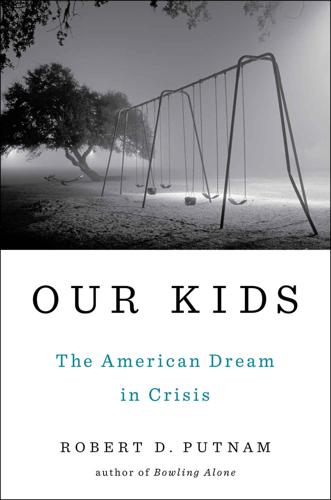
Our Kids: The American Dream in Crisis
by
Robert D. Putnam
Published 10 Mar 2015
Just 15 minutes south along Peachtree Road, virtually in the shadows of Atlanta’s downtown skyscrapers, lies one of the most drug- and crime-ridden ghettos in America—an area of boarded-up houses, barred windows, and concrete playgrounds, where idle men cluster on street corners. Here the population is 95 percent black, with a median household income of $15,000 and a child poverty rate of about 75 percent. Throughout its history, Atlanta has been plagued by racial division.1 By 1970, de jure segregation was gone, but white flight into the suburbs was well under way. Between 1960 and 1980, the white share of the central city’s population plunged from 62 percent to 33 percent, while between 1960 and 2000 the fraction of the metro population living in Atlanta itself fell from 37 percent to 9 percent—the most centrifugal dispersion of any major metropolitan area in America.
…
.: community disparity in, 191–206 life stories of, see Amy; Eleanor; Lisa, Madeline; Marnie; Molly Philadelphia Story, The (film), 191 Philadelphia Youth Orchestra, 204 piano lessons, 86, 139, 178, 194 pluralism, 136 Police Athletic League (PAL), 199–200 politics: class gap and, 237–40 class savvy and, 11, 140 Politics of Mass Society, The (Kornhauser), 240 Port Clinton, Ohio, 1–45 in 1950s, 1–9, 29–30, 270; see also Port Clinton High School (PCHS) in 21st century, 2, 19–30, 270 affluence in, 5–6, 24–26 class gap and, 2, 6–9, 19–30, 270 factory closings in, 20 life stories of, see Cheryl; Chelsea; David; Don; Frank; Jesse; Libby opportunity gap in, 29 poverty in, 22, 23, 26–29 race in, 12–19 Port Clinton High School (PCHS), 3–6, 9–19 class of 1959, 3 Potter, David, 33 poverty: antipoverty programs and, 246–47 in Bend, Oreg., 47–48, 48 child development and, 116 costs of, 231–32 family instability and, 74 in Kensington, 198–206 in neighborhoods, 217–19, 219 in New Orleans, La., 102–3 in Port Clinton, Ohio, 22, 23 in Santa Ana, Calif., 136–38, 138, 170 schools and, 169–71, 171 pregnancy: marital, 203, 205 nonmarital, 61–62, 66–72, 66, 75, 78, 162, 204, 243, 245 teen, 2, 70, 196, 203–5, 245–46 trends in, 64–66, 73–75 premarital sex: family structure and, 62 teens and, 196, 203–5 Pretenders, The (band), 1 prison, see imprisonment, parental private schools, 52, 173, 194 Progressive Era, 244, 253, 256 property taxes, 165 prostitution, 152 public education system: Common School movement and, 160 equal opportunity and, 32 High School movement and, 160 Land-Grant College movement and, 160–61 see also class gap, education and public policy, 75–76 Q qualitative research, 263–74 constraints of, 272–84 life stories as, 263 model for, 265–66 participants and, 265–67 sample and, 270–71 Sandelson and, 265 Silva and, 270–71, 269–71 topics of, 267–68 quantitative research, 274–77 data sets and, 277 life stories as, 274 PCHS class of ’59 survey, 274–75 statistics of, 276–77 survey results, 276 R race: in 1950s, 12–19 in 21st century, 18, 91 affluence and, 84–92 class gap and, 76, 161–62 college scholarships and, 14, 17 in discrimination and segregation, 81–83 socializing and, 16–18 racism, 18–19 reading, 87, 143, 249 real estate: good schools and, 164 in Port Clinton, Ohio, 22 property taxes and, 165 white flight and, 81 Reardon, Sean, 161–62, 280 “rearview mirror” method, 44 relative mobility, 41–42 religion: child development and, 89–90 church attendance and, 224–25, 225 communities and, 197, 201–4, 223–26 see also churches research: field, 264 financial support and, 266 leadership of, 266 undergraduate, 265 see also qualitative research; quantitative research residential segregation: affordable housing and, 251–52 income and, 38–39, 38 schools and, 163–64, 251–52 residential sorting, 163 Ricardo, 137, 139, 141, 143, 146, 148, 165, 229 Riis, Jacob, 41 Rocky (film), 191–92 Rotary Club, 8 row houses, 192 Rust Belt, 30, 73, 264 S Sampson, Robert, 170, 217–18 San Diego, Calif., 135 Santa Ana, Calif.: as America’s most troubled city, 136 gangs in, 136, 170 poverty in, 136–37, 138, 170 Santa Ana High School, 59, 136–38, 148, 153–58, 163–64, 166–67, 169–70 characteristics of, 136 SATs (scholastic aptitude tests): as academic measure, 137, 142, 246 competitive pressure and, 139 preparation for, 144, 147, 197, 206 savvy gap, 213–16 Sawhill, Isabel, 79, 229, 245 Scarcity (Mullainathan and Shafir), 130 scholarships, 8 for black students, 14, 17 for Latino students, 141 school choice, 97, 164–65 school climate, 97, 153–54, 171–73 schools, schooling, 135–90 AP classes and, 39, 143, 168, 168, 173 Catholic, 84, 201, 254–55 class divergence and, 160 class gap and, 137, 138, 160–73 discipline problems in, 171 drugs and violence in, 153–54, 170 educational attainment and, 183–90, 189, 190 extracurricular activities and, 174–83, 177 finances of, 165–66 fund-raising and, 137, 147, 167 government policies and, 251–58 inequality in, 137, 138 Latino communities and, 158–60 opportunity gap and, 251–58 peer influence in, 11, 160-73, 197, 214, 236 poverty in, 169–70, 171 private schools and, 52, 173, 194 public education system and, 160–61 residential segregation and, 163–64, 251–52 solutions for problems in, 251–58 tracking and, 143, 173 see also education; specific schools Science Olympiad, 144 Schlozman, Kay, 236 Scott, Helen Hope Montgomery, 191 seat belts, sociological, 224 SeaWorld, 151 Section 8 housing assistance, 60 security, emotional, 53, 115 segregation, residential, 38–39, 38, 163–64, 251–52 “Self-Reliance” (Emerson), 261 serve-and-return interactions, 110, 123, 126 sexual norms, 73 Shafir, Eldar, 130 Shonkoff, Jack, 109–12 shotgun marriages, 62 Silva, Jennifer: field research and, 264 research methods appendix and, 263–74 Simone, 83, 84–92, 101, 110, 117–19, 122, 128, 143, 164, 166, 174, 206 single-parent families: changing family structure and, 69–71, 70, 92–101 in 1970s, 21, 62 nonmarital births and, 66–68, 66 parental imprisonment and, 76 social class: education and, 44–45 language and, 29, 116 parenting style and, 119–22, 120 see also class gap social isolation, 16–17, 28, 211 social mobility, 31–34, 43–44 social networks: affluence and, 209–10, 209 churches as, 4, 10, 89–90, 201, 206 class gap and, 207–10, 208 communities and, 207–13 Internet and, 211–12, 269 social safety net, and communities, 132, 206, 229, 246–47, 254, 258–59, 261, 264, 265 social trust, 95, 201, 219–20 socioeconomic status (SES), 189–90 Sofia, 132, 137, 148–58, 160–61, 165, 168, 171, 172, 175, 178, 182, 185, 188, 216, 234, 256, 269 soft skills, 174–76 spending, parental, 125–26, 126 Spock, Benjamin, 117 sports: class gap and, 178, 179 as equalizer, 4, 97 pay-to-play policies and, 180–81, 258 Title IX and, 175 Stephanie, 83, 92–101, 110–11, 114, 117, 120–21, 123, 128, 163, 167, 263, 267 step-parents, 63, 93 step-siblings, 57, 63 stress: competitive, 144–45 financial, 130–31, 131 parental, 130–32 toxic, 111–14 suburbs, 261, 265 summer learning gap, 86–87, 143, 162 Sun Belt, 80 Supporting Healthy Marriage program, 244 T teachers: Talent Transfer Initiative and, 253 teacher flight and, 253 teacher quality and, 137 teacher salaries and, 165–66 team sports, see sports technology, 143, 212, 257, 265 see also computers; Internet teen pregnancy, 203–5, 245–46 television, 3, 57, 89, 91, 93, 117, 119, 123, 128, 162 test scores: K-12 education and, 161–62 see also SATs Tiger Moms, 145, 159 time, child-parent relationships and, 126–28, 127 Tolstoy, Leo, 61 tough love, 88, 96, 100–101, 120, 195 toxic stress, 111–14 tracking, 143, 173 traditional families, 61–62 traditional marriage, 7, 12, 62, 72 trailer parks, 22, 57 travel, 53 Troy High School, 137, 142, 143–48, 163, 165 characteristics of, 138 competitive pressure at, 139, 144–45 curriculum of, 143–44, 213 extracurricular activities in, 145–47 fund-raising and, 147 Newsweek ranking of, 143 Tiger Moms and, 145 trust: building of, 270 social, 95, 201, 219–21 trust funds, 6 U unemployment, 20, 136 United Auto Workers (UAW), 8 upward mobility: gender and, 11 parental spending and, 125 PCHS class of ’59 and, 4, 7 race and, 18 2nd generation immigrants and, 141 trends in, 228–29 V values, 75, 240 Verba, Sidney, 236 verbal parenting, 120 veterans, 160–61 violence: in New Orleans, La., 102–3 in Santa Ana, Calif., 136 in schools, 153–54, 170 in South, 13 vocabulary gap, 92 vocational education, 255–56 volunteer work, 157, 259 voting, 235–37, 235 W Waldfogel, Jane, 122, 248 Waltham, Mass., 270, 272 War on Drugs, 76 Washbrook, Elizabeth, 122 weak ties, 198, 208–10, 208, 209 wealth gap, 31, 37 welfare system: costs of, 232 family structure and, 75 medical insurance and, 202 reforms of, 244 Wendy, 24–25, 29, 92, 143, 266 Weston, Mass., 270 white flight, 81 Y youth: church programs for, 202–4 Facebook and, 205, 269 recreation, 199 voting and, 235–37, 235 YouthBuild network, 256 Simon & Schuster 1230 Avenue of the Americas New York, NY 10020 www.SimonandSchuster.com Copyright © 2015 by Robert D.
…
.: as America’s most troubled city, 136 gangs in, 136, 170 poverty in, 136–37, 138, 170 Santa Ana High School, 59, 136–38, 148, 153–58, 163–64, 166–67, 169–70 characteristics of, 136 SATs (scholastic aptitude tests): as academic measure, 137, 142, 246 competitive pressure and, 139 preparation for, 144, 147, 197, 206 savvy gap, 213–16 Sawhill, Isabel, 79, 229, 245 Scarcity (Mullainathan and Shafir), 130 scholarships, 8 for black students, 14, 17 for Latino students, 141 school choice, 97, 164–65 school climate, 97, 153–54, 171–73 schools, schooling, 135–90 AP classes and, 39, 143, 168, 168, 173 Catholic, 84, 201, 254–55 class divergence and, 160 class gap and, 137, 138, 160–73 discipline problems in, 171 drugs and violence in, 153–54, 170 educational attainment and, 183–90, 189, 190 extracurricular activities and, 174–83, 177 finances of, 165–66 fund-raising and, 137, 147, 167 government policies and, 251–58 inequality in, 137, 138 Latino communities and, 158–60 opportunity gap and, 251–58 peer influence in, 11, 160-73, 197, 214, 236 poverty in, 169–70, 171 private schools and, 52, 173, 194 public education system and, 160–61 residential segregation and, 163–64, 251–52 solutions for problems in, 251–58 tracking and, 143, 173 see also education; specific schools Science Olympiad, 144 Schlozman, Kay, 236 Scott, Helen Hope Montgomery, 191 seat belts, sociological, 224 SeaWorld, 151 Section 8 housing assistance, 60 security, emotional, 53, 115 segregation, residential, 38–39, 38, 163–64, 251–52 “Self-Reliance” (Emerson), 261 serve-and-return interactions, 110, 123, 126 sexual norms, 73 Shafir, Eldar, 130 Shonkoff, Jack, 109–12 shotgun marriages, 62 Silva, Jennifer: field research and, 264 research methods appendix and, 263–74 Simone, 83, 84–92, 101, 110, 117–19, 122, 128, 143, 164, 166, 174, 206 single-parent families: changing family structure and, 69–71, 70, 92–101 in 1970s, 21, 62 nonmarital births and, 66–68, 66 parental imprisonment and, 76 social class: education and, 44–45 language and, 29, 116 parenting style and, 119–22, 120 see also class gap social isolation, 16–17, 28, 211 social mobility, 31–34, 43–44 social networks: affluence and, 209–10, 209 churches as, 4, 10, 89–90, 201, 206 class gap and, 207–10, 208 communities and, 207–13 Internet and, 211–12, 269 social safety net, and communities, 132, 206, 229, 246–47, 254, 258–59, 261, 264, 265 social trust, 95, 201, 219–20 socioeconomic status (SES), 189–90 Sofia, 132, 137, 148–58, 160–61, 165, 168, 171, 172, 175, 178, 182, 185, 188, 216, 234, 256, 269 soft skills, 174–76 spending, parental, 125–26, 126 Spock, Benjamin, 117 sports: class gap and, 178, 179 as equalizer, 4, 97 pay-to-play policies and, 180–81, 258 Title IX and, 175 Stephanie, 83, 92–101, 110–11, 114, 117, 120–21, 123, 128, 163, 167, 263, 267 step-parents, 63, 93 step-siblings, 57, 63 stress: competitive, 144–45 financial, 130–31, 131 parental, 130–32 toxic, 111–14 suburbs, 261, 265 summer learning gap, 86–87, 143, 162 Sun Belt, 80 Supporting Healthy Marriage program, 244 T teachers: Talent Transfer Initiative and, 253 teacher flight and, 253 teacher quality and, 137 teacher salaries and, 165–66 team sports, see sports technology, 143, 212, 257, 265 see also computers; Internet teen pregnancy, 203–5, 245–46 television, 3, 57, 89, 91, 93, 117, 119, 123, 128, 162 test scores: K-12 education and, 161–62 see also SATs Tiger Moms, 145, 159 time, child-parent relationships and, 126–28, 127 Tolstoy, Leo, 61 tough love, 88, 96, 100–101, 120, 195 toxic stress, 111–14 tracking, 143, 173 traditional families, 61–62 traditional marriage, 7, 12, 62, 72 trailer parks, 22, 57 travel, 53 Troy High School, 137, 142, 143–48, 163, 165 characteristics of, 138 competitive pressure at, 139, 144–45 curriculum of, 143–44, 213 extracurricular activities in, 145–47 fund-raising and, 147 Newsweek ranking of, 143 Tiger Moms and, 145 trust: building of, 270 social, 95, 201, 219–21 trust funds, 6 U unemployment, 20, 136 United Auto Workers (UAW), 8 upward mobility: gender and, 11 parental spending and, 125 PCHS class of ’59 and, 4, 7 race and, 18 2nd generation immigrants and, 141 trends in, 228–29 V values, 75, 240 Verba, Sidney, 236 verbal parenting, 120 veterans, 160–61 violence: in New Orleans, La., 102–3 in Santa Ana, Calif., 136 in schools, 153–54, 170 in South, 13 vocabulary gap, 92 vocational education, 255–56 volunteer work, 157, 259 voting, 235–37, 235 W Waldfogel, Jane, 122, 248 Waltham, Mass., 270, 272 War on Drugs, 76 Washbrook, Elizabeth, 122 weak ties, 198, 208–10, 208, 209 wealth gap, 31, 37 welfare system: costs of, 232 family structure and, 75 medical insurance and, 202 reforms of, 244 Wendy, 24–25, 29, 92, 143, 266 Weston, Mass., 270 white flight, 81 Y youth: church programs for, 202–4 Facebook and, 205, 269 recreation, 199 voting and, 235–37, 235 YouthBuild network, 256 Simon & Schuster 1230 Avenue of the Americas New York, NY 10020 www.SimonandSchuster.com Copyright © 2015 by Robert D. Putnam All rights reserved, including the right to reproduce this book or portions thereof in any form whatsoever.
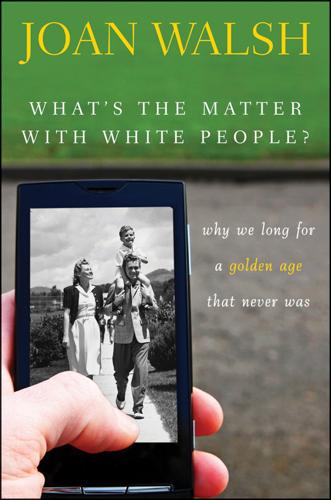
What's the Matter with White People
by
Joan Walsh
Published 19 Jul 2012
Undoing the legacy of racism and segregation required big change in the North as well. Fair housing laws and school busing orders provoked a huge backlash, as whites resisted integration—sometimes violently, as in Chicago, and sometimes stealthily, with the destructive guerrilla tactic known as “white flight.” Those efforts at integration were necessary, however painful. Once again, though, they had the greatest impact on the whites who had the least, who felt that their piece of the American Dream was already so small, they shouldn’t be asked to share it. For the most part, the politicians and the judges who imposed housing and busing laws didn’t live in the neighborhoods they were changing.
…
Bush on Moynihan on Obama on War on Poverty and Wilson on Union League Club United Association of Colored Waiters United Auto Workers United Farm Workers United Federation of Teachers (UFT) University of California, enrollment of University of Wisconsin–Madison Urban Strategies Council US Chamber of Commerce USDA, Sherrod and “vast right-wing conspiracy” Vietnam War Virginia, slave codes of Volcker, Paul Von Brunn, James Von Drehle, David voter registration, same-day Voting Rights Act Wages of Whiteness, The (Roediger) Wagner, Robert Waldman, Michael Walker, Scott Wallace, George Wallace, Gerald Wall Street Journal Walsh, Connie (uncle) Walsh, John Patrick (“Cosmas Maurice”) (father) alcoholism of biographical information death of on Hard Hat Riots Long Island lifestyle of marriage of on New York City of 1960s/1970s views on Carter views on Nixon Walsh, Gene (uncle) Walsh, Joan biographical information Human Services Committee (California State Assembly) work of marriage of Salon television appearances by (See also individual names of television programs and networks) Urban Strategies Council work of writing career of See also individual names of family members Walsh, Joan (black Jamaican woman) Walsh-DeVries, Nora (daughter) Walters, Ron War on Poverty funding for The Other America (Harrington) and poverty rate change from 1970s to present Washington, George Washington, Harold Washington Post Waters, Maxine Watts (Los Angeles race riots, 1960s) Webster, Jack Weinstein, James West, Cornel West, Kanye West Indies, slavery and Weyrich, Paul White, Walter White, William Allen whites critics of Obama poverty rates and projected as minority population “white flight” “whiteness studies” “white privilege” See also race relations William H. Sadlier Williams, Maggie Wilson, Joe Wilson, William Julius Winner Take All Politics (Hacker, Pierson) Wirtz, W. Willard Wisconsin 1970s lifestyle in Walker and public workers Wolfe, Tom Wood, Fernando Wright, Rev.
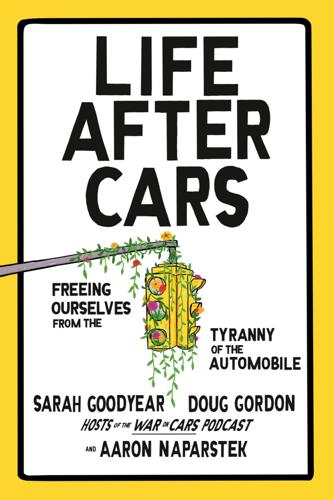
Life After Cars: Freeing Ourselves From the Tyranny of the Automobile
by
Sarah Goodyear
,
Doug Gordon
and
Aaron Naparstek
Published 21 Oct 2025
Our society routinely and systematically disinvests from these same communities, leaving their residents to endure neglected infrastructure and cuts to all kinds of services, including transit—although there always seems to be money for hiring more cops. First, huge swaths of urban neighborhoods were demolished for highway construction that enabled white flight, with millions of Black and brown people displaced and hundreds of majority-minority business districts gutted. Then those cities were systematically starved of the funds they needed to maintain services. When white people decided to come back, part of the much-touted twenty-first-century trend of the “creative class” revitalizing long-disinvested neighborhoods, Black communities were the last to see improvements in the public realm—and Black residents were often priced out when basic services and amenities did show up.
…
See tactical urbanism US Department of Transportation, 31, 58, 113 US Justice Department, 140 US Supreme Court, 142 USA Today, 53 Utrecht, NL, 181 V van Putten, Maartje, 64 Vance, JD, 101, 130 vehicle miles traveled (VMT), 97, 98, 122 Velo magazine, 192 Vic, ES, 51 View, The (2019), 36 violence, 30, 101, 131–32 Virginia, 131 visibility, road, 103, 172 Vision Zero, 112 Volkswagen, 129 W Walden, Jim, 32–33 Walk: Slow Down, Wake Up, and Connect at 1-3 Miles Per Hour (Stalls), 133, 134 Walker, Ian, 124–26, 135 walking inequitable access to, 135–36 in Japan, 170 learning from, 132–34 in “The Pedestrian,” 223–25 See also pedestrians war fatalities, 9–10 “war on cars,” 3–5 War on Cars, The podcast, 21–22, 129–30, 230 warrants, police, 142 See also police Washington, D.C., 9, 20, 38–39 Washington Conservation Action, 80 Washington Post, The, 38, 53 water pollution, 80–83 Watteeuw, Filip, 180, 181, 184, 185, 186, 187–88, 191 Waymo cars, 228 Weil, Ari, 131–32 wheelchairs, 158–60 When Driving Is Not an Option: Steering Away from Car Dependency (Zivarts), 161 White, E. B., 18 white flight, 148–49 Wichita, KS, 208 Wiens, Patty, 230 wildlife documenting road deaths of, 73 habitat fragmentation from roads, 85–88 impact of road noise on, 83–85 impact of tires on, 79–83 impact of traffication on, 75–77 number of deaths of by vehicles, 74 owls, 71–72 road structures to protect, 77–79, 87 Wills, Garry, 11 Winnipeg, MB, 230 Wisconsin, 20–21 women, transportation needs of, 149–52 World Health Organization (WHO), 105, 107 World War I, 9 Wuhan, CN, 108 Y Ypsilanti, MI, 127 Yurok Tribe, 82 Z Zipper, David, 113–14 Zivarts, Anna, 161 zones, travel in cities, 183–85, 195, 229 A B C D E F G H I J K L M N O P Q R S T U V W X Y Z About the Authors Sarah Goodyear is a journalist and author who has covered cities and transportation for publications such as Grist, CityLab, and Streetsblog.

Goddess of the Market: Ayn Rand and the American Right
by
Jennifer Burns
Published 18 Oct 2009
Rand’s views may be taken as an early iteration of a race-neutral discourse about individual rights that nonetheless had important consequences for federal and state racial policy, particularly in suburbia. Books that explore the discourse surrounding racial issues include Matthew Lassiter, The Silent Majority: Suburban Politics in the Sunbelt South (Princeton, NJ: Princeton University Press, 2006); Kevin Kruse, White Flight: Atlanta and the Making of Modern Conservatism (Princeton, NJ: Princeton University Press, 2007); Donald T. Critchlow and Nancy MacLean, Debating the American Conservative Movement: 1945 to the Present (New York: Rowman and Little. eld, 2009). 43. For details on the JBS, see Donald T. Critchlow, The Conservative Ascendancy: How the GOP Right Made Political History (Cambridge, MA: Harvard University Press, 2007), 56–59; Jonathan M.
…
Goldwater’s success was once understood to have inspired Richard Nixon’s Southern Strategy, . first articulated in Kevin Phillips, The Emerging Republican Majority (New Rochelle, NY: Arlington House, 1969), but the importance of the Southern Strategy has been questioned by Matthew Lassiter, who suggests it is better understood as a suburban strategy (Lassiter, The Silent Majority: Suburban Politics in the Sunbelt South). Byron Schafer and Richard Johnston, The End of Southern Exceptionalism: Class, Race, and Partisan Change in the Postwar South (Cambridge, MA: Harvard University Press, 2007), make a similar argument. Other books that engage this critical question include Kruse, White Flight, 252–55; Thomas B. Edsell and Mary Edsell, Chain Reaction: The Impact of Race, Rights, and Taxes on American Politics (New York: Norton, 1991); Jason Sokol, There Goes My Everything: White Southerners in the Age of Civil Rights 1945–1975 (New York: Knopf, 2006), 272–75; Dan Carter, The Politics of Rage: George Wallace, The Origins of the New Conservatism, and The Transformation of American Politics (Baton Rouge: Louisiana State University Press, 2000); Michael Flamm, Law and Order: Street Crime, Civil Unrest, and the Crisis of Liberalism in the 1960s (New York: Columbia University Press, 2005); Joseph Lowndes, From the New Deal to the New Right: Race and the Southern Origins of Modern Conservatism (New Haven, CT: Yale University Press, 2008); Joseph Crespino, In Search of Another Country: Mississippi and Conservative Counterrevolution (Princeton, NJ: Princeton University Press, 2007); Rick Perlstein, Nixonland: The Rise of a President and the Fracturing of America (New York: Scribner, 2008). 48.
…
PhD diss., University of Virginia, 2001. Kresge, Stephen, and Leif Wenar, eds. Hayek on Hayek: An Autobiographical Dialogue. Chicago: University of Chicago Press, 1994. Kripal, Jeffrey J. Esalen: America and the Religion of No Religion. Chicago: University of Chicago Press, 2007. Kruse, Kevin. White Flight: Atlanta and the Making of Modern Conservatism. Princeton, NJ: Princeton University Press, 2007. Kuklick, Bruce. The Rise of American Philosophy: Cambridge, Massachusetts, 1860–1930. New Haven, CT: Yale University Press, 1977. Kyle, Richard. The New Age Movement in American Culture. Lanham, MD: University Press of America, 1995.
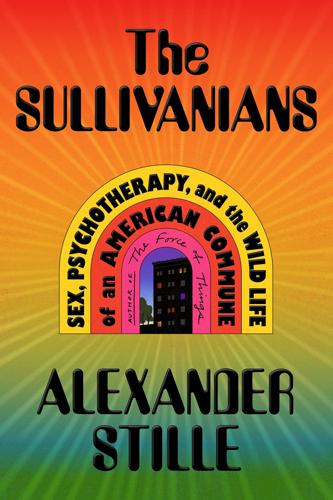
The Sullivanians: Sex, Psychotherapy, and the Wild Life of an American Commune
by
Alexander Stille
Published 19 Jun 2023
The apartments are vast, with high ceilings, elaborate architectural details, six or seven generously sized rooms, formal dining rooms, and, of course, a maid’s room. The surrounding neighborhood was very mixed—drug and crime blocks alternating with handsome prewar apartment buildings that, because of white flight and rent control, had become ridiculously cheap, inhabited by less affluent folks like members of the Sullivanian training program. One of the women living in this apartment was Deedee Agee’s younger sister, Andrea, a young training analyst. Cohen’s new Sullivanian friends welcomed him into their lives and their beds and helped him find a permanent place to live in another Sullivan apartment with a group of men.
…
The availability of cheap therapy and the stock of large, inexpensive apartments on the Upper West Side in this period led to a rapid expansion of the community of Sullivanian patients living together in group apartments. New York City was in crisis, hemorrhaging jobs and tax revenues, its government on the edge of bankruptcy, its services in decline, crime on the rise. It lost nearly a million inhabitants in the 1970s alone, driven by a huge demographic change, massive white flight. Manhattan was particularly hard hit: its population fell by more than half a million between 1950 and 1980—a quarter of its population. This exodus from the city left hundreds of large, cavernous apartments—beautiful if a bit run-down—renting for prices even a student (or five or six students) could afford.
…
At a large meeting of high-ranking group members, Cohen was subjected to a long, blistering summary that seemed to last for hours, excoriating him as a dangerous and subversive figure who was in desperate need of reform. The former heir apparent was now viewed as a potential Leon Trotsky. * * * In 1982, the Fourth Wall—or several dozen members of it—arranged to buy an entire building where about ninety people could live. After more than two decades of white flight, the Upper West Side was being rapidly gentrified, which meant that some people’s rents were going way up but also that many longtime tenants with lower rents, including many in the Fourth Wall, had opportunities to buy their apartments at very reasonable prices or were even being offered money to move out.

The Quiet Coup: Neoliberalism and the Looting of America
by
Mehrsa Baradaran
Published 7 May 2024
Powell’s tactic as a member of the Richmond School Board after Brown was to remain “steadfastly silent,” according to his biographer.13 He would not openly defy the Court’s orders, as the proponents of massive resistance, a strategy Virginia politicians designed to prevent school desegregation, had urged, taking a more measured tone that focused on practicalities and timing rather than obstipant refusal to integrate. Powell wrote a memo on behalf of the attorney general of Virginia opposing school integration plans, arguing that they imposed the “stigma of legal apartheid” on the South. Instead of pushing for integration “now,” which Powell believed would accelerate white flight and diminish the quality of schools, the Court should wait until residential segregation simply petered out.14 Yet Powell’s diplomatic and genteel resistance reached the same results without the controversy, presaging his tenure on the Court. Rather than oppose the desegregation orders, he found a route around them through a series of legal procedures that drew district lines using neighborhood maps which were conveniently racially segregated, ensuring that Richmond schools remained segregated “within legal bounds.”15 By the time he stepped down from the school board, he had avoided any real protests, and “only 2 of 23,000 black children in Richmond attended schools with whites.”16 Powell remained steadfastly opposed to school integration through busing and worked—including during his time on the Court—to place all decision-making power in the hands of local school boards.
…
Marshall’s dissent apparently “infuriated Powell.”43 Perhaps it was because, despite the careful effort Powell made to couch his reactionary position in a technical and scholarly opinion, Marshall saw through it, calling the holding “a reflection of a perceived public mood that we have gone far enough in enforcing the Constitution’s guarantee of equal justice than it is the product of neutral principles of law.”44 The upshot of Milliken was a hamstrung school integration movement. Redlining and white flight had created residential segregation—and, thus, de facto school segregation. Milliken foreclosed remedies to address this type of inequity. Powell’s most consequential ruling was in 1973, through San Antonio Independent School District v. Rodriguez, where he once again cast the crucial swing vote.
…
Davis, 117–19 Watergate scandal, 28, 62, 109 Waters, Maxine, 315 Watts riots (1965), 5 wealth, 36, 188, 189, 231, 240, 249, 254, 265, 266, 270, 275–76, 316, 349–50 wealth gap, 21, 103, 329, 347 wealth maximization, 164, 170, 174 Wealth of Nations (Smith), 192–93, 353, 364 wealth redistribution, 32, 57, 170, 175, 206 wealth transfer, xxvi, 29, 257 weapons manufacturers, 37, 89–91 Web 3.0, 324, 337, 339, 340 Weber, Max, 195 “The Social Psychology of the World’s Religions,” 219 Welch, Jack, 269 welfare (welfare laws), 9, 205, 228, 231, 277, 316 welfare state, 24, 32, 57–59 Wells Fargo, 268, 290 West Coast Hotel Co. v. Parrish, 103, 155 WeWork, 324–25, 326 Weyrich, Paul, 187 “whales,” 335 “What If You Could Get Your Own Immigrant?” (Posner), 165 WhatsApp, 320 White, Byron, 110, 112, 124 white flight, 104, 121 white identity politics, 17–18 White Lotus, The (television series), xxxix white men, 35, 132–33, 175, 362 White Plains, N.Y., xx white supremacy, xxxi, xxxii, 35, 42, 69, 70 Whitman, Christina B., 118 “Why the South Must Prevail” (Buckley), 27 wildfires, xiii–xiv, xviii, xx, 321 Wilks brothers, 187 Williams, Barbara, 78 Williams v.
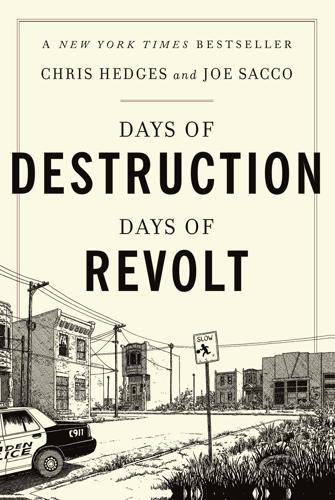
Days of Destruction, Days of Revolt
by
Chris Hedges
and
Joe Sacco
Published 7 Apr 2014
And then, little by little, the city, like the nation, was strangled and slain. Manufacturers left to find cheaper labor in the South and then overseas. Hurley’s Department Store, the Stanley Theater, the Towers Theater, and the Camden Courier-Post closed or moved by the 1960s. Neighborhoods began to decay. Community cohesion broke down. White flight from Camden became a stampede following riots that erupted in August 1971 after city police beat a Puerto Rican motorist to death.22 Swaths of the city were looted and burned. Less than five percent of the city today is Caucasian, and the city’s population has declined by thirty-six percent since 1950.23,24 Camden, which once had eighteen movie theaters, numerous churches and synagogues, and the grand, eight-story Walt Whitman Hotel with its two hundred guest rooms, ballroom, and banquet halls, fell into a death spiral.
…
.: death of, 175 Wakan Tanka, 55 Wall Street, 236, 260 crimes of, 233 occupation of, 226, 233 Walmart, 65, 160, 182, 206 War on terror, 240, 263 “Warrior Waits for Death, A” (Brewer), text of, 53 Washington Examiner, 234 Washington Post, 235 Washington Square Park, illustration of, 254 Washington Times, 235 Washita raid, 8–9 Water, 148 contaminated, 125, 128, 150, 164, 168–169 Wealth, redistribution of, 10, 65 Webb Coal Mining Company, strike against, 160–161 Weber, Max: on disenchantment of the World, 10 Welch Community Hospital, 155, 159 Welch Methodist church, 133 Wells, Hawey: challenge by, 172 Wenceslas Square, 229, 230 West Virginia Coal Association, 152 West Virginia Department of Environmental Protection (DEP), 148, 161 coal dust and, 162, 163, 164 “Where Do We Go from Here: Chaos or Community” (King), quote from, 60 Whistle-blowers, 234 White, Harry, 159 White flight, 75 Whiteclay, Nebraska, 53 described, 2–3, 4, 7 main street of, 3 (illus.) Whitman, Walt, 112 quote of, 59 Wikipedia, 252 Williams, Ronald A., 18, 51 Williams Mountain, 125 Wilson, August, 64 Wilson, Dick, 16, 46, 50 Wobblies, 160 Wolin, Sheldon: inverted totalitarianism and, 238 Work groups, 253, 255 Worker Health and Safety Committee, 222 Workers, 199, 206 undocumented, 62, 78, 205 Working class, disenfranchised, 252, 253 World Trade Center, 120 Wounded Knee, 13, 22, 47 occupation of, 40, 46, 50, 56 Wright, Richard: quote of, 60 Wright, Ronald, 150 Xerox, 52 Yablonski, Jock: murder of, 171 Yellow Thunder, Raymond, 46 Young Bear, Steven, 56 Zapatista Army of Liberation, 250 Zeese, Kevin, 234, 235, 236, 237 Zinn, Howard, 94, 245 Zuccotti Park, 226, 231, 245, 247, 248, 266 Chris Hedges is a senior fellow at The Nation Institute and a columnist for Truthdig.

Stealth
by
Peter Westwick
Published 22 Nov 2019
Palmer, Dictatorship of the Air: Aviation Culture and the Fate of Modern Russia (Cambridge, UK: Cambridge University Press, 2006), and Leon Trilling, “Styles of Military Technical Development: Soviet and U.S. Jet Fighters, 1945–1960,” in Science, Technology, and the Military, ed. Everett Mendelsohn, Merritt Roe Smith, and Peter Weingart (Dordrecht: Springer, 1988), 155–85. 20 Eric Avila, Popular Culture in an Age of White Flight: Fear and Fantasy in Suburban Los Angeles (Berkeley: University of California Press, 2004), 106–44, quote on 115. 21 Neal Gabler, Walt Disney: The Triumph of the American Imagination (New York: Knopf, 2006), 580; James D. Skee, “By the Numbers: Confidence, Consultants, and the Construction of Mass Leisure, 1953–1975” (PhD diss., UC Berkeley, 2016).
…
Post, High Performance: The Culture and Performance of Drag Racing, 1950–2000 (Baltimore: Johns Hopkins University Press, 2001), 81–82, 172. 25 On the history of Arrow and Disneyland: Robert Reynolds, Roller Coasters, Flumes and Flying Saucers (Minneapolis: Northern Lights, 1999). 26 Scherrer email. 27 Carey McWilliams, Southern California: An Island on the Land (Salt Lake City: Gibbs Smith, 1946); Starr, Golden Dreams, and other books in Starr’s Americans and the California Dream series; Mike Davis, City of Quartz: Excavating the Future in Los Angeles (New York: Verso, 1992); Avila, Popular Culture in an Age of White Flight, 106–44. 28 Aviation Week quoted in David Beers, Blue Sky Dream: A Memoir of America’s Fall from Grace (New York: Doubleday, 1996), 135; job statistics from fig. 1 in Gavin Wright, “World War II, the Cold War, and the Knowledge Economies of the Pacific Coast,” paper for conference “World War II and the West It Wrought,” Stanford University, April 4–5, 2017.
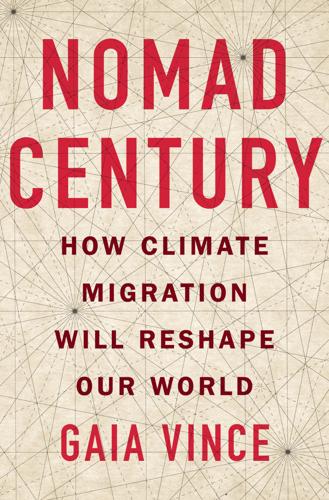
Nomad Century: How Climate Migration Will Reshape Our World
by
Gaia Vince
Published 22 Aug 2022
Gross inequality isn’t an inevitable result of technological progress or capitalism (or any other economic system), but a failure of social policy, including a failure to tax wealth and prevent tax evasion. Smart policy will be needed to target prejudice and promote inclusion during our rapid mass migration. Inclusion is key. So is it better to house migrants with others from their country of origin, risking creating ghettoes and triggering an exodus by natives (sometimes called ‘white flight’)? Or to do as in Singapore, where 80 per cent of the population lives in public housing and strict quotas ensure that each building has an ethnic mix? From global studies, the answer is a bit of both: the way to prevent segregation is build public housing for low-income residents and make sure they are dispersed throughout the city so there are no ‘pure’ rich-only or native-only neighbourhoods, and also to recognize that migrants gain network benefits from a certain degree of social clustering – so enabling people of similar origin to migrate to the same cities can help hugely with social and economic well-being.
…
Germany is also changing its laws to allow immigrants to apply for citizenship far earlier – within three years of arrival in cases where there has been shown to be an ‘exceptional degree of integration’ – and to permit dual nationality. Neighbourhoods need to be integrated into the wider community – this means ensuring that schools don’t end up segregated through ‘white flight’, for instance by proactively creating excellent schools in the poorest neighbourhoods that attract all communities. But migrant residents also need agency to manage their own affairs, security, commerce and opportunity. Devolving power to communities is now recognized as a key catalyst for economic and social development – people already have a stake in their welfare; they need to be granted agency to become stakeholders in their cities.
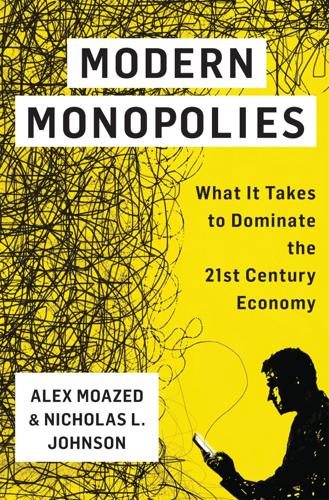
Modern Monopolies: What It Takes to Dominate the 21st Century Economy
by
Alex Moazed
and
Nicholas L. Johnson
Published 30 May 2016
In contrast, Facebook “set this tone where there’s a lot of clean data on Facebook,” Zuckerberg said. “You can rely on it.” Because networks are path dependent, this effect compounded over time. In one study, Microsoft researcher danah boyd (who spells her name without capital letters) even compared Myspace’s demise to the phenomenon of white flight in U.S. cities.42 boyd suggested that Myspace developed a reputation as a “digital ghetto,” which drove away users, many of them into Facebook’s waiting arms. In contrast, Facebook’s exclusivity, Ivy League pedigree, and cleaner reputation helped drive its early growth with the college audience.
…
You can find videos of the events online here: https://www.youtube.com/user/siwuzzz/videos. 41. Nick Summers, “Facebook’s ‘Porn Cops’ Are Key to Its Growth,” Newsweek, April 30, 2009, http://www.newsweek.com/facebooks-porn-cops-are-key-its-growth-77055. 42. For more, see danah boyd, “White Flight in Networked Publics? How Race and Class Shaped American Teen Engagement with MySpace and Facebook,” in Race after the Internet, ed. Lisa Nakamura and Peter A. Chow-White (New York: Routledge, 2011). 43. Tim Arango, “Hot Social Networking Site Cools as Facebook Grows,” New York Times, January 11, 2011, http://www.nytimes.com/2011/01/12/technology/internet/12myspace.html?

Failure Is Not an Option: Mission Control From Mercury to Apollo 13 and Beyond
by
Gene Kranz
Published 7 Jan 2000
ISBN 0-7432-1447-1 With love to my wife, Marta, and our children, Carmen, Lucy, Joan, Mark, Brigid, and Jean Contents 1 | The Four-Inch Flight 2 | "Liftoff; the Clock Is Running" 3 | "God Speed, John Glenn" 4 | The Brotherhood 5 | The Making of a Rocket Man 6 | Gemini—The Twins 7 | White Flight 8 | The Spirit of 76 9 | The Angry Alligator 10 | A Fire on the Pad 11 | Out of the Ashes 12 | The X Mission 13 | The Christmas Story 14 | 1969—The Year of Apollo 15 | SimSup Wins the Final Round 16 | "We Copy You Down, Eagle" 17 | "What the Hell Was That?"
…
Slayton sent his astronauts to the remote sites as observers for one final mission. Hunter transferred to Goddard Space Flight Center and performed as the Madrid tracking station manager during Apollo. Hunter had fought the battle and lost, but he helped to win the war for Flight Control. 7 WHITE FLIGHT As we celebrated the success of Grissom and Young on Gemini 3, the Russians were also celebrating. We would soon learn that five days earlier, Lieutenant Colonel Aleksei Leonov had become the world’s first space walker, venturing outside the cabin and stepping into the void. On his return Leonov delivered a speech from the top of Lenin’s tomb, flanked by the Kremlin leadership.
…
Mine read, Whereas his leadership and inspiration molded the flight control team, which was vital to the first rendezvous, manned lunar exploration, and the study of man, Earth, stars, and technology. Be it resolved that on behalf of the personnel of the Flight Control Division, the color “White” be retired from the list of active flight control teams to forever stand in tribute to “White Flight,” Eugene F. Kranz. My proclamation now joined with those of the pioneer flight directors on the wall of the third-floor Mission Control room at the Johnson Space Center. Over the years other proclamations would be added, including one recognizing the honorary Gray flight director, Bill Tindall.
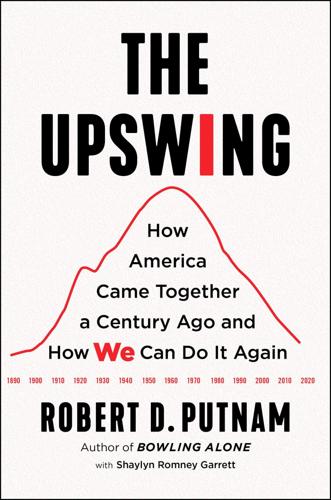
The Upswing: How America Came Together a Century Ago and How We Can Do It Again
by
Robert D. Putnam
Published 12 Oct 2020
White residents used a variety of tools to preserve the racial character of their neighborhoods and confine black residents to ghettoized enclaves, including restrictive housing covenants, violence, and such real estate practices as racial steering. When black residents did manage to successfully relocate, block-busting and white flight ensued, causing entire neighborhoods to flip their racial makeup in an incredibly short period of time. This process began the expansion of systematic residential segregation between 1920 and 1940. Indeed, some recent research, using more fine-grained measures of segregation, suggests that in all areas of the country, North and South, urban and rural, segregation doubled nationally from 1880 to 1940.66 But residential segregation truly accelerated and consolidated between 1940 and 1970, thanks to overlapping federal policies,67 discriminatory realtor practices, and organized white resistance to the second wave of the Great Migration—a phenomenon one group of scholars has termed “collective action racism.”68 In the process, financial considerations came to further strengthen white homeowners’ opposition to residential integration, even when they otherwise harbored no racial animosity.
…
The authors suggest that there are basically three possible ways that segregation can develop: a “port of entry” model, in which black residents prefer to live in majority-black neighborhoods; “collective action racism,” in which white residents use formal barriers to restrict black access to certain neighborhoods; and “decentralized racism,” in which white residents pay a premium to live in majority-white neighborhoods, generating white flight and pricing black residents out. Using data on average housing costs, they find that the collective action racism model best explains mid-century segregation, on the grounds that black residents paid more for equivalent housing than white residents (we would expect them to pay less if they were being priced out of white neighborhoods) and that new black migrants paid no more than longtime residents (we would expect them to pay more in the port of entry model).
…
Jackson, Crabgrass Frontier: The Suburbanization of the United States (New York: Oxford University Press, 1985); Sugrue, The Origins of the Urban Crisis; Robert O. Self, American Babylon: Race and the Struggle for Postwar Oakland, Politics and Society in Twentieth-Century America (Princeton: Princeton University Press, 2003); and Kevin Michael Kruse, White Flight: Atlanta and the Making of Modern Conservatism, Politics and Society in Twentieth-Century America (Princeton: Princeton University Press, 2005). 71 Sources for Figure 6.8: Admission rates are from Patrick A. Langan, Race of Prisoners Admitted to State and Federal Institutions, 1926–86, NCJ-125618 (Washington, DC: US Department of Justice, Bureau of Justice Statistics, 1999).

Future Files: A Brief History of the Next 50 Years
by
Richard Watson
Published 1 Jan 2008
Home alone The number of urban singles is driving everything from a growth in late-night convenience retailing (for example buying a single portion of chicken fillet at 1 a.m.) to how the tables and chairs are laid out in your local McDonald’s. Reasons for this urban renaissance are various. Twenty years ago it seemed as though everyone was moving out of the cities. In the US the term “white flight” was coined to describe white, middle-class families fleeing inner-city crime and grime to start new lives in the suburbs. Nowadays the reverse is happening. Known as boomerang migration, singles and childless couples are flooding back into cities like New York, London and Melbourne because that’s where the action is and the commute isn’t.
…
A 311 Index ‘O’ Garage 170 3D printers 56 accelerated education 57 accidents 159, 161–6, 173, 246 ACNielsen 126 adaptive cruise control 165 Adeg Aktiv 50+ 208 advertising 115–16, 117, 119 Africa 70, 89, 129, 174, 221, 245, 270, 275, 290, 301 ageing 1, 10, 54, 69, 93, 139, 147–8, 164, 188, 202, 208, 221, 228–9, 237, 239, 251, 261, 292, 295, 297–8 airborne networks 56 airlines 272 allergies 196–7, 234, 236 Alliance Against Urban 4x4s 171 alternative energy 173 alternative futures viii alternative medicine 244–5 alternative technology 151 amateur production 111–12 Amazon 32, 113–14, 121 American Apparel 207 American Express 127–8 androids 55 Angola 77 anti-ageing drugs 231, 237 anti-ageing foods 188 anti-ageing surgery 2, 237 antibiotics 251 anxiety 10, 16, 30, 32, 36, 37, 128, 149, 179, 184, 197, 199, 225, 228, 243, 251, 252, 256, 263, 283–4, 295–6, 300, 301, 305 Apple 61, 115, 121, 130, 137–8, 157 Appleyard, Bryan 79 Argentina 210 Armamark Corporation 193 artificial intelliegence 22, 40, 44, 82 131, 275, 285–6, 297, 300 Asda 136, 137 Asia 11, 70, 78, 89, 129, 150, 174, 221, 280, 290, 292 Asimov, Isaac 44 Asos.com 216 asthma 235 auditory display software 29 Australia 20–21, 72–3, 76, 92, 121, 145, 196, 242, 246, 250, 270, 282 Austria 208 authenticity 32, 37, 179, 194, 203–11 authoritarianism 94 automated publishing machine (APM) 114 automation 292 automotive industry 154–77 B&Q 279 baby boomers 41, 208 bacterial factories 56 Bahney, Anna 145 Bahrain 2 baking 27, 179, 195, 199 Bangladesh 2 bank accounts, body double 132 banknotes 29, 128 banks 22, 123, 135–8, 150, 151 virtual 134 Barnes and Noble 114 bartering 151 BBC 25, 119 Become 207 Belgium 238 313 314 benriya 28 Berlusconi, Silvio 92 Best Buy 223 biofuel 64 biomechatronics 56 biometric identification 28, 35, 52, 68, 88, 132 bionic body parts 55 Biosphere Expeditions 259 biotechnology 40, 300 blended families 20 blogs 103, 107, 109, 120 Blurb 113 BMW 289 board games 225 body double bank accounts 132 body parts bionic 55 replacement 2, 188, 228 Bolivia 73 Bollywood 111 books 29, 105, 111–25 boomerang kids 145 brain transplants 231 brain-enhancing foods 188 Brazil 2, 84, 89, 173, 247, 254, 270, 290 Burger King 184 business 13, 275–92 Bust-Up 189 busyness 27, 195, 277 Calvin, Bill 45 Canada 63, 78, 240 cancer 251 car sharing 160, 169, 176 carbon credits 173 carbon footprints 255 carbon taxes 76, 172 cars classic 168–9 driverless 154–5 flying 156, 165 hydrogen-powered 12, 31, 157, 173 pay-as-you-go 167–8 self-driving 165 cascading failure 28 cash 126–7, 205 cellphone payments 129, 213 cellphones 3, 25, 35, 51, 53, 120, 121, FUTURE FILES 129, 156, 161, 251 chicken, Christian 192 childcare robots 57 childhood 27, 33–4, 82–3 children’s database 86 CHIME nations (China, India, Middle East) 2, 10, 81 China 2, 10, 11, 69–72, 75–81, 88, 92–3, 125, 137, 139–40, 142, 151, 163, 174–5, 176, 200, 222, 228, 247, 260, 270–71, 275, 279, 295, 302 choice 186–7 Christian chicken 192 Christianity, muscular 16, 73 Chrysler 176 cinema 110–11, 120 Citibank 29, 128 citizen journalism 103–4, 108 City Car Club 168 Clarke, Arthur C. 58–9 Clarke’s 187 classic cars 168–9 climate change 4, 11, 37, 43, 59, 64, 68, 74, 77–9, 93, 150, 155, 254, 257, 264, 298–9 climate-controlled buildings 254, 264 cloning 38 human 23, 249 CNN 119 coal 176 Coca-Cola 78, 222–3 co-creation 111–12, 119 coins 29, 128, 129 collective intelligence 45–6 Collins, Jim 288 comfort eating 200 Comme des Garçons 216 community 36 compassion 120 competition in financial services 124–5 low-cost 292 computers disposable 56 intelligent 23, 43 organic 56 wearable 56, 302 computing 3, 33, 43, 48, 82 connectivity 3, 10, 11, 15, 91, 120, Index 233, 261, 275–6, 281, 292, 297, 299 conscientious objection taxation 86 contactless payments 123, 150 continuous partial attention 53 control 36, 151, 225 convenience 123, 178–9, 184, 189, 212, 223, 224 Coren, Stanley 246 corporate social responsibility 276, 282, 298 cosmetic neurology 250 Costa Rica 247 Craig’s List 102 creativity 11, 286; see also innovation credit cards 141–3, 150 crime 86–9 forecasting 86–7 gene 57, 86 Croatia 200 Crowdstorm 207 Cuba 75 cultural holidays 259, 273 culture 11, 17–37 currency, global 127, 151 customization 56, 169, 221–2, 260 cyberterrorism 65, 88–9 Cyc 45 cynicism 37 DayJet 262 death 237–9 debt 123–4, 140–44, 150 defense 63, 86 deflation 139 democracy 94 democratization of media 104, 108, 113 demographics 1, 10, 21, 69, 82, 93, 202, 276, 279–81, 292, 297–8 Denmark 245 department stores 214 deregulation 11, 3 Destiny Health 149 detox 200 Detroit Project 171 diagnosis 232 remote 228 digital downloads 121 evaporation 25 315 immortality 24–5 instant gratification syndrome 202 Maoism 47 money 12, 29, 123, 126–7, 129, 132, 138, 150, 191 nomads 20, 283 plasters 241 privacy 25, 97, 108 readers 121 digitalization 37, 292 Dinner by Design 185 dirt holidays 236 discount retailers 224 Discovery Health 149 diseases 2, 228 disintegrators 57 Disney 118–19 disposable computers 56 divorce 33, 85 DNA 56–7, 182 database 86 testing, compulsory 86 do-it-yourself dinner shops 185–6 dolls 24 doorbells 32 downshifters 20 Dream Dinners 185 dream fulfillment 148 dressmaking 225 drink 178–200 driverless cars 154–5 drugs anti-ageing 231, 237 performance-improving 284–5 Dubai 264, 267, 273 dynamic pricing 260 E Ink 115 e-action 65 Earthwatch 259 Eastern Europe 290 eBay 207 e-books 29, 37, 60, 114, 115, 302 eco-luxe resorts 272 economic collapse 2, 4, 36, 72, 221, 295 economic protectionism 10, 15, 72, 298 economy travel 272 316 Ecuador 73 education 15, 18, 82–5, 297 accelerated 57 lifelong learning 290 Egypt 2 electricity shortages 301 electronic camouflage 56 electronic surveillance 35 Elephant 244 email 18–19, 25, 53–4, 108 embedded intelligence 53, 154 EMF radiation 251 emotional capacity of robots 40, 60 enclosed resorts 273 energy 72, 75, 93 alternative 173 nuclear 74 solar 74 wind 74 enhancement surgery 249 entertainment 34, 121 environment 4, 10, 11, 14, 64, 75–6, 83, 93, 155, 171, 173, 183, 199, 219–20, 252, 256–7, 271, 292, 301 epigenetics 57 escapism 16, 32–3, 121 Estonia 85, 89 e-tagging 129–30 e-therapy 242 ethical bankruptcy 35 ethical investing 281 ethical tourism 259 ethics 22, 24, 41, 53, 78, 86, 132, 152, 194, 203, 213, 232, 238, 249–50, 258, 276, 281–2, 298–9 eugenics 252 Europe 11, 70, 72, 81, 91, 141, 150, 174–5, 182, 190, 192, 209 European Union 15, 139 euthanasia 238, 251 Everquest 33 e-voting 65 experience 224 extended financial families 144 extinction timeline 9 Facebook 37, 97, 107 face-recognition doors 57 fakes 32 family 36, 37 FUTURE FILES family loans 145 fantasy-related industries 32 farmaceuticals 179, 182 fast food 178, 183–4 fat taxes 190 fear 10, 34, 36, 38, 68, 150, 151, 305 female-only spaces 210–11, 257 feminization 84 financial crisis 38, 150–51, 223, 226, 301 financial services 123–53, 252 trends 123–5 fish farming 181 fixed-price eating 200 flashpacking 273 flat-tax system 85–6 Florida, Richard 36, 286, 292 flying cars 165 food 69–70, 72, 78–9, 162, 178–201 food anti-ageing 188 brain-enhancing 188 fast 178, 183–4 functional 179 growing your own 179, 192, 195 history 190–92 passports 200 slow 178, 193 tourism 273 trends 178–80 FoodExpert ID 182 food-miles 178, 193, 220 Ford 169, 176, 213, 279–80 forecasting 49 crime 86–7 war 49 Forrester Research 132 fractional ownership 168, 175, 176, 225 France 103, 147, 170, 189, 198, 267 Friedman, Thomas 278–9, 292 FriendFinder 32 Friends Reunited 22 frugality 224 functional food 179 Furedi, Frank 68 gaming 32–3, 70, 97, 111–12, 117, 130, 166, 262 Gap 217 Index gardening 27, 148 gas 176 GE Money 138, 145 gendered medicine 244–5 gene silencing 231 gene, crime 86 General Motors 157, 165 Generation X 41, 281 Generation Y 37, 41, 97, 106, 138, 141–2, 144, 202, 208, 276, 281, 292 generational power shifts 292 Genes Reunited 35 genetic enhancement 40, 48 history 35 modification 31, 182 testing 221 genetics 3, 10, 45, 251–2 genomic medicine 231 Germany 73, 147, 160, 170, 204–5, 216–17, 261, 267, 279, 291 Gimzewski, James 232 glamping 273 global currency 127 global warming 4, 47, 77, 93, 193, 234 globalization 3, 10, 15–16, 36–7, 63–7, 72–3, 75, 81–2, 88, 100, 125, 139, 143, 146, 170, 183, 189, 193–5, 221, 224, 226, 233–4, 247–8, 263, 275, 278–80, 292, 296, 299 GM 176 Google 22, 61, 121, 137, 293 gout 235 government 14, 18, 36, 63–95, 151 GPS 3, 15, 26, 50, 88, 138, 148, 209, 237, 262, 283 Grameen Bank 135 gravity tubes 57 green taxes 76 Greenpeace 172 GRIN technologies (genetics, robotics, internet, nanotechnology) 3, 10, 11 growing your own food 178, 192, 195 Gucci 221 Gulf States 125, 260, 268 H&M 217 habitual shopping 212 Handy, Charles 278 317 Happily 210 happiness 63–4, 71–2, 146, 260 health 15, 82, 178–9, 199 health monitoring 232, 236, 241 healthcare 2, 136, 144, 147–8, 154, 178–9, 183–4, 189–91, 228–53, 298; see also medicine trends 214–1534–7 Heinberg, Richard 74 Helm, Dieter 77 Heritage Foods 195 hikikomori 18 hive mind 45 holidays 31, 119; see also tourism holidays at home 255 cultural 259 dirt 236 Hollywood 33, 111–12 holographic displays 56 Home Equity Share 145 home baking 225 home-based microgeneration 64 home brewing 225 honesty 152 Hong Kong 267 hospitals 228, 241–3, 266 at home 228, 238, 240–42 hotels 19, 267 sleep 266 human cloning 23, 249 Hungary 247 hybrid humans 22 hydrogen power 64 hydrogen-powered cars 12, 31, 157, 173 Hyperactive Technologies 184 Hyundai 170 IBM 293 identities, multiple 35, 52 identity 64, 71 identity theft 88, 132 identity verification, two-way 132 immigration 151–2, 302 India 2, 10, 11, 70–72, 76, 78–9, 81, 92, 111, 125, 135, 139, 163, 174–5, 176, 247, 249–50, 254, 260, 270, 275, 279, 302 indirect taxation 86 318 individualism 36 Indonesia 2, 174 industrial robots 42 infinite content 96–7 inflation 151 information overlead 97, 120, 159, 285; see also too much information innovation 64, 81–2, 100, 175, 222, 238, 269, 277, 286–8, 291, 297, 299 innovation timeline 8 instant gratification 213 insurance 123, 138, 147–50, 154, 167, 191, 236, 250 pay-as-you-go 167 weather 264 intelligence 11 embedded 53, 154 implants 229 intelligent computers 23, 43 intelligent night vision 162–3 interaction, physical 22, 25, 97, 110, 118, 133–4, 215, 228, 243, 276, 304 interactive media 97, 105 intergenerational mortgages 140, 144–5 intermediaries 123, 135 internet 3, 10, 11, 17–18, 25, 68, 103, 108, 115–17, 124, 156, 240–41, 261, 270, 283, 289, 305 failure 301 impact on politics 93–4 sensory 56 interruption science 53 iPills 240 Iran 2, 69 Ishiguro, Hiroshi 55 Islamic fanaticism 16 Italy 92, 170, 198–9 iTunes 115, 130; see also Apple Japan 1, 18, 26, 28–9, 54–5, 63, 80–81, 114, 121, 128–9, 132, 140, 144–5, 147, 174, 186, 189, 192, 196, 198, 200, 209–10, 223, 240, 260, 264, 271, 279, 291 jetpacks 60 job security 292 journalism 96, 118 journalism, citizen 103–4, 107 joy-makers 57 FUTURE FILES Kaboodle 207 Kapor, Mitchell 45 Kenya 128 keys 28–9 Kindle 60, 121 Kramer, Peter 284 Kuhn, Thomas 281 Kurzweil, Ray 45 Kuwait 2 labor migration 290–91 labor shortages 3, 80–81, 289–90 Lanier, Jaron 47 laser shopping 212 leisure sickness 238 Let’s Dish 185 Lexus 157 libraries 121 Libya 73 life-caching 24, 107–8 lighting 158, 160 Like.com 216 limb farms 249 limited editions 216–17 live events 98, 110, 304 localization 10, 15–16, 116, 128, 170, 178, 189, 193, 195, 215, 220, 222–3, 224, 226, 255, 270, 297 location tagging 88 location-based marketing 116 longevity 188–9, 202 Longman, Philip 71 low cost 202, 219–22 luxury 202, 221, 225, 256, 260, 262, 265–6, 272 machinamas 112 machine-to-machine communication 56 marketing 115–16 location-based 116 now 116 prediction 116 Marks & Spencer 210 Maslow, Abraham 305–6 masstigue 223 materialism 37 Mayo Clinic 243 McDonald’s 130, 168, 180, 184 McKinsey 287 Index meaning, search for 16, 259, 282, 290, 305–6 MECU 132 media 96–122 democratization of 104, 108, 115 trends 96–8 medical outsourcing 247–8 medical tourism 2, 229, 247 medicine 188, 228–53; see also healthcare alternative 243–4 gendered 244–5 genomic 231 memory 229, 232, 239–40 memory loss 47 memory pills 231, 240 memory recovery 2, 228–9, 239 memory removal 29–30, 29, 240 Menicon 240 mental health 199 Meow Mix 216 Merriman, Jon 126 metabolomics 56 meta-materials 56 Metro 204–5 Mexico 2 micromedia 101 micro-payments 130, 150 Microsoft 137, 147, 293 Middle East 10, 11, 70, 81, 89, 119, 125, 129, 139, 174–5, 268, 301 migration 3, 11, 69–70, 78, 82, 234, 275, 290–91 boomerang 20 labor 290–91 Migros 215 military recruitment 69 military vehicles 158–9 mind-control toys 38 mindwipes 57 Mitsubishi 198, 279 mobile payments 123, 150 Modafinil 232 molecular biology 231 monetization 118 money 123–52 digital 12, 29, 123, 126–7, 129, 132, 138, 150, 191 monitoring, remote 154, 168, 228, 242 monolines 135, 137 319 mood sensitivity 41, 49, 154, 158, 164, 187–8 Morgan Stanley 127 mortality bonds 148 Mozilla Corp. 289 M-PESA 129 MTV 103 multigenerational families 20 multiple identities 35, 52 Murdoch, Rupert 109 muscular Christianity 16, 73 music industry 121 My-Food-Phone 242 MySpace 22, 25, 37, 46, 97, 107, 113 N11 nations (Bangladesh, Egypt, Indonesia, Iran, South Korea, Mexico, Nigeria, Pakistan, Philippines, Turkey, Vietnam) 2 nanoelectronics 56 nanomedicine 32 nanotechnology 3, 10, 23, 40, 44–5, 50, 157, 183, 232, 243, 286, 298 napcaps 56 narrowcasting 109 NASA 25, 53 nationalism 16, 70, 72–3, 139, 183, 298, 302 natural disasters 301 natural resources 2, 4, 11, 64, 298–9 Nearbynow 223 Nestlé 195 Netherlands 238 NetIntelligence 283 networkcar.com 154 networks 28, 166, 288 airborne 56 neural nets 49 neuronic whips 57 neuroscience 33, 48 Neville, Richard 58–9 New Economics Foundation 171 New Zealand 265, 269 newspapers 29, 102–9, 117, 119, 120 Nigeria 2, 73 Nike 23 nimbyism 63 no-frills 224 Nokia 61, 105 Norelift 189 320 Northern Rock 139–40 Norwich Union 167 nostalgia 16, 31–2, 51, 169–70, 179, 183, 199, 203, 225, 303 now marketing 116 nuclear annihilation 10, 91 nuclear energy 74 nutraceuticals 179, 182 Obama, Barack 92–3 obesity 75, 190–92, 199, 250–51 oceanic thermal converters 57 oil 69, 72–3, 93, 151, 174, 176, 272, 273, 301 Oman 2, 270 online relationships 38 organic computers 56 organic food 200, 226 osteoporosis 235 outsourcing 224, 292 Pakistan 2 pandemics 4, 10, 16, 59, 72, 128, 232, 234, 272, 295–7, 301 paper 37 parasite singles 145 passwords 52 pictorial 52 pathogens 233 patient simulators 247 patina 31 patriotism 63, 67, 299 pay-as-you-go cars 167–8 pay-as-you-go insurance 167 payments cellphone 129, 213 contactless 123, 150 micro- 130, 150 mobile 123, 150 pre- 123, 150 PayPal 124, 137 Pearson, Ian 44 performance-improving drugs 284–5 personal restraint 36 personal robots 42 personalization 19, 26, 56, 96–8, 100, 102–3, 106, 108–9, 120, 138, 149, 183, 205–6, 223, 244–5, 262, 267, 269 Peru 73 FUTURE FILES Peters, Tom 280 Pharmaca 244 pharmaceuticals 2, 33, 228, 237 Philippines 2, 212, 290 Philips 114 Philips, Michael 232–3 photographs 108 physical interaction 22, 25, 97, 110, 118, 133–4, 215, 228, 243, 276, 304 physicalization 96–7, 101–2, 106, 110, 120 pictorial passwords 52 piggy banks 151 Pink, Daniel 285 plagiarism 83 polarization 15–16, 285 politics 37, 63–95, 151–2 regional 63 trends 63–5 pop-up retail 216, 224 pornography 31 portability 178, 183–4 power shift eastwards 2, 10–11, 81, 252 Prada 205–6, 216 precision agriculture 181–2 precision healthcare 234–7 prediction marketing 116 predictions 37, 301–2 premiumization 223 pre-payments 123, 150 privacy 3, 15, 41, 50, 88, 154, 165–7, 205, 236, 249, 285, 295 digital 25, 97, 108 Procter & Gamble 105, 280 product sourcing 224 Prosper 124, 135 protectionism 67, 139, 156, 220, 226, 301 economic 10, 15, 72, 299 provenance 178, 193, 226 proximity indicators 32 PruHealth 149 psychological neoteny 52 public ownership 92 public transport 171 purposeful shopping 212 Qatar 2 quality 96–7, 98, 101, 109 Index quantum mechanics 56 quantum wires 56 quiet materials 56 radiation, EMF 251 radio 117 randominoes 57 ranking 34, 83, 109, 116, 134, 207 Ranking Ranqueen 186 reality mining 51 Really Cool Foods 185 rebalancing 37 recession 139–40, 202, 222 recognition 36, 304 refrigerators 197–8 refuge 121 regeneration 233 regional food 200 regional politics 63 regionality 178, 192–3 regulation 124, 137, 143 REI 207 Reid, Morris 90 relationships, online 38 religion 16, 58 remote diagnosis 228 remote monitoring 154, 168, 228, 242 renting 225 reputation 34–5 resistance to technology 51 resorts, enclosed 273 resource shortages 11, 15, 146, 155, 178, 194, 254, 300 resources, natural 2, 4, 11, 64, 73–4, 143, 298–9 respect 36, 304 restaurants 186–8 retail 20–21, 202–27, 298 pop-up 216, 224 stealth 215 theater 214 trends 202–3 Revkin, Andy 77 RFID 3, 24, 50, 121, 126, 149, 182, 185, 192, 196, 205 rickets 232 risk 15, 124, 134, 138, 141, 149–50, 162, 167, 172, 191, 265, 299–300, 303 Ritalin 232 321 road pricing 166 Robertson, Peter 49 robogoats 55 robot department store 209 Robot Rules 44 robotic assistants 54, 206 concierges 268 financial advisers 131–2 lobsters 55 pest control 57 soldiers 41, 55, 60 surgery 35, 41, 249 robotics 3, 10, 41, 44–5, 60, 238, 275, 285–6, 292, 297 robots 41, 54–5, 131, 237, 249 childcare 57 emotional capacity of 40, 60 industrial 42 personal 42 security 209 therapeutic 41, 54 Russia 2, 69, 72, 75, 80, 89, 92–3, 125, 174, 232, 254, 270, 295, 302 safety 32, 36, 151, 158–9, 172–3, 182, 192, 196 Sainsbury’s 215 Salt 187 sanctuary tourism 273 satellite tracking 166–7 Saudi Arabia 2, 69 Schwartz, Barry 186 science 13, 16, 40–62, 300 interruption 53 trends 40–42 scramble suits 57 scrapbooking 25, 108, 225 Sears Roebuck 137 seasonality 178, 193–4 second-hand goods 224 Second Life 133, 207–8 securitization 124, 140 security 16, 31, 151 security robots 209 self-driving cars 165 self-medication 242 self-publishing 103, 113–14 self-reliance 35, 75 self-repairing roads 57 322 self-replicating machines 23, 44 Selfridges 214 sensor motes 15, 50, 196 sensory internet 56 Sharia-based investment 125 Shop24 209 shopping 202–27 habitual 212 laser 212 malls 211–5 purposeful 212 slow 213 social 207 Shopping 2.0 224 short-wave scalpels 57 silicon photonics 56 simplicity 169–70, 179, 186, 202, 218, 224, 226, 272 Singapore 241 single-person households 19–20, 202–3, 208–9, 221, 244, 298, 304 skills shortage 293, 302 sky shields 57 sleep 159–60, 188, 228, 231, 246–7, 265 sleep debt 96, 266 sleep hotels 266 sleep surrogates 57 slow food 178, 193 slow shopping 213 slow travel 273 smart devices 26–7, 28, 32, 35, 44, 50, 56, 57, 164, 206, 207 smart dust 3, 15, 50, 196 smartisans 20 Smartmart 209 snakebots 55 social networks 97, 107, 110, 120, 133, 217, 261 social shopping 207 society 13, 15–16, 17–37 trends 15–16 Sodexho 193 solar energy 74 Sony 114, 121 South Africa 84, 149, 242 South America 82, 270 South Korea 2, 103, 128–9 space ladders 56 space mirrors 47 space tourism 271, 273 FUTURE FILES space tugs 57 speed 164, 202, 209, 245, 296–7 spirituality 16, 22, 282, 298, 306 spot knowledge 47 spray-on surgical gloves 57 St James’s Ethics Centre 282 stagflation 139 starch-based plastics 64 stealth retail 215 stealth taxation 86 Sterling, Bruce 55 storytelling 203 Strayer, David 161 street signs 162–3 stress 32, 96, 235, 243, 245–6, 258–9, 265, 257–9, 275, 277, 283–5 stress-control clothing 57 stupidity 151, 302 Stylehive 207 Sudan 73 suicide tourism 236 Super Suppers 185 supermarkets 135–6, 184–6, 188, 191–2, 194, 202–3, 212, 215, 218–19, 224, 229 surgery 2, 31 anti-ageing 2, 237 enhancement 249 Surowiecki, James 45 surveillance 35, 41 sustainability 4, 37, 74, 181, 193–5, 203, 281, 288, 298–9 Sweden 84 swine flu 38, 251, 272 Switzerland 168, 210, 215 synthetic biology 56 Taco Bell 184 Tactical Numerical Deterministic Model 49 tagging, location 86, 88 Taiwan 81 talent, war for 275, 279, 293; see also labor shortages Target 216 Tasmania 267 Tata Motors 174, 176 taxation 85–6, 92, 93 carbon 76, 172 conscientious objection 86 Index fat 190 flat 85–6 green 76 indirect 86 stealth 86 Tchibo 217 technology 3, 14–16, 18, 22, 26, 28, 32, 37, 40–62, 74–5, 82–3, 96, 119, 132, 147–8, 154, 157, 160, 162, 165–7, 178, 182, 195–8, 208, 221, 229, 237, 242–3, 249, 256, 261, 265–6, 268, 275–6, 280, 283–4, 292, 296–7, 300 refuseniks 30, 51, 97 trends 40–42 telemedicine 228, 238, 242 telepathy 29 teleportation 56 television 21, 96, 108, 117, 119 terrorism 67, 91, 108, 150, 262–3, 267, 272, 295–6, 301 Tesco 105, 135–6, 185, 206, 215, 219, 223 Thailand 247, 290 therapeutic robots 41, 54 thermal imaging 232 things that won’t change 10, 303–6 third spaces 224 ThisNext 207 thrift 224 Tik Tok Easy Shop 209 time scarcity 30, 96, 102, 178, 184–6, 218, 255 time shifting 96, 110, 116 time stamps 50 timeline, extinction 9 timeline, innovation 8 timelines 7 tired all the time 246 tobacco industry 251 tolerance 120 too much choice (TMC) 29, 202, 218–19 too much information (TMI) 29, 51, 53, 202, 229; see also information overload tourism 254–74 cultural 273 ethical 259 food 273 323 local 273 medical 2, 229, 247 sanctuary 273 space 271, 273 suicide 238 tribal 262 Tourism Concern 259 tourist quotas 254, 271 Toyota 48–9, 157 toys, mind-control 38 traceability 195 trading down 224 transparency 3, 15, 143, 152, 276, 282, 299 transport 15, 154–77, 298 public 155, 161 trends 154–6 transumerism 223 travel 2, 3, 11, 148, 254–74 economy 272 luxury 272 slow 273 trends 254–6 trend maps 6–7 trends 1, 5–7, 10, 13 financial services 123–5 food 178–80 healthcare 228–9 media 96–8 politics 63–5 retail 202–3 science and technology 40–42 society 15–16 transport 154–6 travel 254–6 work 275–7 tribal tourism 262 tribalism 15–16, 63, 127–8, 183, 192, 220, 260 trust 82, 133, 137, 139, 143, 192, 203, 276, 282–3 tunnels 171 Turing test 45 Turing, Alan 44 Turkey 2, 200, 247 Twitter 60, 120 two-way identity verification 132 UAE 2 UFOs 58 324 UK 19–20, 72, 76, 84, 86, 90–91, 100, 102–3, 105, 128–9, 132, 137, 139–42, 147–9, 150, 163, 167–8, 170–71, 175, 185, 195–6, 199, 200, 206, 210, 214–16, 238, 259, 267–8, 278–9, 284, 288 uncertainty 16, 30, 34, 52, 172, 199, 246, 263, 300, 303 unemployment 151 Unilever 195 University of Chicago 245–6 urban rental companies 176 urbanization 11, 18–19, 78, 84, 155, 233 Uruguay 200 US 1, 11, 19–21, 23, 55–6, 63, 67, 69, 72, 75, 77, 80–83, 86, 88–90, 92, 104–5, 106, 121, 129–33, 135, 139–42, 144, 147, 149, 150, 151, 162, 167, 169–71, 174, 185, 190–3, 195, 205–6, 209, 211, 213, 216, 218, 220, 222–3, 237–8, 240–8, 250, 260, 262, 267–8, 275, 279–80, 282–4, 287, 291 user-generated content (UGC) 46, 97, 104, 289 utility 224 values 36, 152 vending machines 209 Venezuela 69, 73 verbal signatures 132 VeriChip 126 video on demand 96 Vietnam 2, 290 Vino 100 113 Virgin Atlantic 261 virtual adultery 33 banks 134 economy 130–31 protests 65 reality 70 sex 32 stores 206–8 vacations 32, 261 worlds 157, 213, 255, 261, 270, 305 Vocation Vacations 259–60 Vodafone 137 voice recognition 41 voice-based internet search 56 voicelifts 2, 237 FUTURE FILES Volkswagen 175 voluntourism 259 Volvo 164 voting 3, 68, 90–91 Walgreens 244 Wal-Mart 105, 136–7, 215, 219–20, 223, 244, 282 war 68–9, 72 war for talent 275, 279; see also labor shortages war forecasting 49 water 69–70, 74, 77–9, 199 wearable computers 55 weather 64 weather insurance 264 Web 2.0 93, 224 Weinberg, Peter 125 wellbeing 2, 183, 188, 199 white flight 20 Wikipedia 46, 60, 104 wild swimming 273 Wilson, Edward O. 74 wind energy 74 wine producers 200 wisdom of idiots 47 Wizard 145 work 275–94 trends 275–94 work/life balance 64, 71, 260, 277, 289, 293 worldphone 19 xenophobia 16, 63 YouTube 46, 103, 107, 112 Zara 216–17 Zipcar 167 Zopa 124, 134

Streetfight: Handbook for an Urban Revolution
by
Janette Sadik-Khan
Published 8 Mar 2016
“There is no logic that can be superimposed on the city,” Jacobs wrote more than half a century ago; “people make it, and it is to them, not buildings, that we must fit our plans.” But instead of launching an urban renaissance, Death and Life was accompanied by years of urban decay and depopulation. White flight brought urban disinvestment as millions of city dwellers fled to suburbs, taking their taxes with them. Combined with the loss of industry and manufacturing within cities, the mass abandonment starved transportation infrastructure and slowed development within cities. Some cities fought back against highway projects as New York did and created new transit systems—and called on the federal government to take a bigger role in fostering public transportation.
…
See Traffic fatalities Walking lanes, 76, 77, 77 WalkNYC, 129, 130, 130, 131, 131–32, 133, 134 Wall Street, 73, 137 Wall Street Journal, 178, 201–2 Washington Post, 146 Washington Square Park, 12, 281 Wayfinding maps, in New York City, 129–32, 130, 131, 133, 134 Weekend Walks, 123 Weiner, Anthony, 174 Weinshall, Iris, 168, 171–72, 265 Wenceslas Square (Prague), 3 West Side Highway, 14–15 White, Paul Steely, 8, 177, 230 White flight, 10 Wickquasgeck Path, 73 Wider roads, 50–52, 54, 63–64 Wiley-Schwartz, Andy, 38, 89, 124 Williamsburg Bridge, 44 Willis Avenue Bridge, 144–45 Wolfson, Howard, 176, 181 Woloch, David, 163 Working Families Party, 238 Works Progress Administration (WPA), 15 World Health Organization (WHO), 228 World’s Fair (1939), 17 World’s Fair (1964), 233 Y Yanev, Bojidar, 271 Z Zipcar, 184, 284–85 “Zip” generation, 183–84, 284–85 Zip lines, during Summer Streets, 122 Looking for more?

The Undertow: Scenes From a Slow Civil War
by
Jeff Sharlet
Published 21 Mar 2023
No politician could perform that resurrection, but at least Trump said he would. “Don’t it feel good, at least, to believe?” asked Shawn. ›‹ “He takes what we all say on the back porch and puts it on the front page,” a White woman named Kate Worthington told me at a Trump rally in Fountain Hills, Arizona, a wealthy White-flight refuge of gated communities forty minutes from Phoenix. She was a designer of women’s bicycling fashions, dressed in a flowery skirt and a breezy white top as if for a Sunday brunch. We met when she inserted herself into my conversation with a White man named Nohl Rosen, who’d come to the rally strapped with a Glock on his thigh to fly the “thin blue line” flag of police solidarity.
…
Soon, he predicted, they will try to make us all speak one language, a one-world government tongue, an evil Esperanto that will rob us of that which is particular to our lives, our places, our pasts. It’s coming, he said. No, he said, it’s here. There will be no civil war, he said; he will never bring out his guns, though he, too, was armed, well-armed, he too had prepared his children—because we have already lost. All that remains is our accommodation. ›‹ To Waukesha, then, dense White-flight suburb of Milwaukee, where in 2021 a man who called himself Mathboi Fly plowed through a Christmas parade, killing six. Where, in 2014, two twelve-year-old girls took a third to the woods and stabbed her nineteen times. They wanted to ingratiate themselves with Slender Man, an Internet meme made real, or real enough, through the knives of children who believed what they read online.

Merchants of the Right: Gun Sellers and the Crisis of American Democracy
by
Jennifer Carlson
Published 2 May 2023
Accessed August 12, 2021. https://www.newyorker.com/news/news-desk/trumps-anti-science-campaign. Kraychik, R. (2021). Rep. Greg Murphy: “Very concerning” for CDC to Float Vaccine Database. Breitbart. Accessed October 22, 2021. https://www.breitbart.com/radio/2021/07/29/rep-greg-murphy-very-concerning-for-cdc-to-float-vaccine-database/. Kruse, K. M. (2013). White Flight. Princeton University Press. Kuznia, R., Ortega, B., and Tolan, C. (2021). In the Wake of Trump’s Attack on Democracy, Election Officials Fear for the Future of American Elections. CNN. Accessed October 19, 2021. https://www.cnn.com/2021/09/12/politics/trump-2020-future-presidential-elections-invs/index.html.
…
Want to See What Real Civil Unrest Looks Like? Try Confiscating Americans’ Guns. The Truth About Guns. Accessed October 25, 2021. https://www.thetruthaboutguns.com/want-to-see-what-real-civil-unrest-looks-like-try-confiscating-americans-guns/. Zingher, J. N. (2018). Polarization, Demographic Change, and White Flight from the Democratic Party. Journal of Politics, 80(3), 860–872. INDEX 1619 Project, 89 2020 presidential election: conservative challenges to, 3–4, 27, 165; conspiracy theories about, 72, 147, 159; partisanship and, 101; political and cultural tensions linked to, 24. See also January 6th riot abductive approach, 190, 199–200 Abramowitz, Alan, 109 African Americans: conspiracism among, 216n10; as gun owners, 56–57, 61–62, 145; killings of, in 2020, 37; pathologization of, 10, 54, 61, 213n44; racial empathy gap experienced by, 176, 219n69.
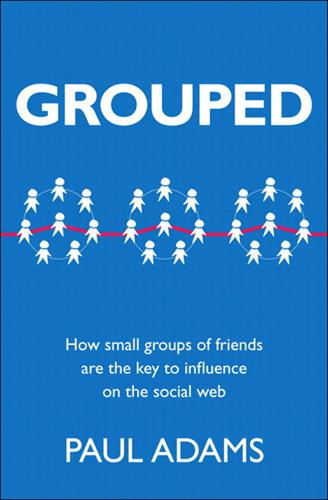
Grouped: How Small Groups of Friends Are the Key to Influence on the Social Web
by
Paul Adams
Published 1 Nov 2011
In their book Connected: The Surprising Power of Our Social Networks and How They Shape Our Lives (Little, Brown, 2009), Nicholas Christakis and James Fowler draw on a large body of research to illustrate how we are influenced by our friends’ friends’ friends. Examples they use include giving up smoking and losing weight. 2. See Albert-László Barabási’s book Linked: How Everything Is Connected to Everything Else and What It Means (Plume, 2003). 3. See the research paper “White flight in networked publics? How race and class shaped American teen engagement with MySpace and Facebook,” first published in 2009 by danah boyd. 4. For an in depth discussion on the structure of our social network and how it’s shaped by evolution, see the 2010 book How Many Friends Does One Person Need?

Cities Are Good for You: The Genius of the Metropolis
by
Leo Hollis
Published 31 Mar 2013
By 1950 Detroit had a peak population of 1.8 million, attracting a new army of workers from the south and becoming the second-largest metropolitan area in the US. The arrival of these – mainly black – migrant workers had its own catalytic impact as the richer white residents got into their cars and moved to the suburbs – white flight, as it was called – making the city rich but dangerously divided. The industrial success of the American empire was built in the factories of the city, but the spoils were unevenly shared. The wealthy white families dominated the centre of Detroit as well as the exurbs, the neighbourhoods outside the city boundaries, linked by expressways that bounded over the suburbs, where many black familes found themselves increasingly stuck.
…
The home was raised up as a last redoubt against the horrors of the city, as the antithesis of the office, a barrier against the tide of the world, as described by the Metroland advertisements: London is at your very doorstep, if your needs must keep in touch with London, but it is always pure country at the corner of the lane beyond your garden fence … Metroland is a strip of England at its fairest, a gracious district formed by nature for the homes of a healthy, happy race.1 But my street now looks nothing like the Arcadian brochures produced by the Metroland Company that had young Edwardian ladies cutting flowers, or groups of young, shiny couples heading to the tennis club. And if London is changing this is only a small reflection of what is going on in cities around the world. According to the American urbanist Alan Ehrenhalt, I am heading against the current, and we are currently experiencing the Great Inversion, a reverse white flight from the periphery to the centre of the city. This will have a huge impact on the life of American cities in the next decades, with the reinvention of downtown, while the poor are being driven out of the centre to the outskirts, the banlieus, far from metropolitan opportunities. This return to the centre in some cities and the benefits of increased densification stands in contrast to the galloping suburban sprawl of cities like Houston.
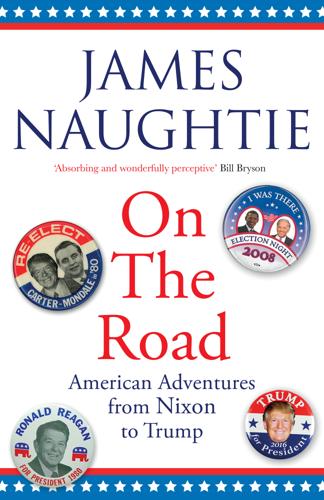
On the Road: Adventures From Nixon to Trump
by
James Naughtie
Published 1 Apr 2020
In schools, on public transport, in parks, you know where you are. Nearly half a century after the civil rights reforms, Englewood on the South Side is more racially distinct than it was in the 1960s. In those years the population was fairly evenly divided between white and black, but over the next three decades ‘white flight’ changed everything. In now solidly black Englewood, people are poorer and benefit from worse public services than the rest of the city, apart from the neighbourhoods that are just like it. Chicago has become a boomtown for many of its residents, with numerous corporate headquarters installed in fine new buildings in downtown, and the better-off citizens have benefited hugely.
…
(‘FDR’), 41, 92, 104, 132, 145, 175, 200, 219, 264 Rostropovich, Mstislav, 95 Rothkopf, David, 195 Rove, Karl, 142, 154 Rubio, Marco, 179 Rumsfeld, Donald, 143 Runyon, Damon, 2 Ruth, Babe, 105 Sablière, Jean-Marc de la, 150 Sadat, Anwar, 69 Saddam Hussein, 110, 141, 142, 144, 147, 149, 151 St Andrew’s Society of New York, 36, 37, 48–9, 63 Sanders, Bernie, 185, 258, 268 Sandy Hook massacre, 185, 271 Saturday Night Massacre, 34, 51 Saudi Arabia, 279, 290 Savalas, George, 68 Savalas, Telly, 68 Scalia, Justice Antonin, 127 Scaramucci, Anthony (‘The Mooch’), 177, 178, 189–90, 192 Schiff, Adam, 208, 291 Schlicke, Pauk, 37 Schwartzwalder, Ben, 45 Scotsman, The, 5, 80 Scott, Hugh, 54 Scowcroft, Brent, 97 Seattle Post-Intelligencer, 55 Second World War, 14, 35, 95, 109, 131, 132, 139, 176, 194, 208, 237 segregation, 14, 24, 26, 40–2, 216, 249, 264, 288 Seinfeld, Jerry, 15 Sergeant, John, 117 Serpico, Frank, 32 Sessions, Jeff, 197 Seward, William, 256 Shapiro, Ilya, 285 Sharp, Rhod, 63, 154 Sheen, Martin, 152 Shrum, Bob, 74 Sick, Gary, 86 Simon, Neil, 139 Sinatra, Frank, 16, 44, 78 Sirica, Judge, 53 Six-Day War, 114 Sky, 111 Sloman, Anne, 112 Smith, Evan, 272–3 Smyth, Ted, 134 Solomon, Mr and Mrs, 16 Sorensen, Theodore, 168, 169 Sorkin, Aaron, 295 Stalin, Joseph, 92 Starr, Ken, 120 Stennis, John C., 52 Stephanopoulos, George, 103 Stern, Larry, 78–9 Stevenson, Coke, 270 Stewart, Sir Iain Maxwell, 49 Stockman, David, 81, 82 Stone, Roger, 182–4, 289 Stovall, Dwayne, 271, 277–9 Straw, Jack, 143, 149 Streisand, Barbra, 16, 121 Sunday Telegraph, 50 Sunday Times, 37, 76 supply-side economics, 81–2 Swift Boat Veterans for Truth, 153 ‘taking a knee’ protest, 268 Talese, Gay, 42 Talmadge, Herman, 42 taxation, 81, 104, 114, 119, 146, 182, 183, 200, 202, 218, 290 Tea Party movement, 146, 170, 175, 176 Texas Tribune, 273 Thanksgiving, 47, 133–41 Thatcher, Margaret, 81, 83–5, 90, 92, 93, 117, 175, 274 Thomson Regional Newspapers, 37 Thorpe, Jeremy, 50 Times, The, 37, 93 Times-Picayune, 56 Today, 5, 95, 113, 116, 117, 122, 125, 191 Toledo Blade, 56 trickle-down economics, 81–2 Tripp, Linda, 119 Truman, Harry S., 40, 126 Trump, Donald, 1, 31, 51, 88, 120, 127, 143, 144, 146, 160, 167, 170, 171, 175, 176–92 Achilles’ heel of, 213 becomes POTUS, 157, 158, 192, 193–6, 262, 267 ‘currency of contempt’ of, 220 ‘draining the swamp’ rhetoric, 230–1 federal regulations despised by, 245–6 foreign policy of, 217, 255, 294 and government shutdown, 230, 232 Huntington rally of, 211 impeachment trial of, 5, 218, 266, 282–3, 291–3, 294 inauguration of, 193–7, 202, 203, 221 lack of knowledge of, 4–5 McCain opposes, 200–1 MAGA slogan of, 180, 211–12 Mexican border wall promise of, 188, 200, 206, 211, 244, 250, 267, 287 moral compass of, 274–7 presidency of ‘self’ created by, 218 presidential power excesses of, 284 stream-of-consciousness style of, 187 tweets of, 4, 161, 189–90, 193, 199–200, 205, 208, 217, 251 unorthodox approach of, 197–206, 213–16, 250–1, 287 Trump, Fred, 211 Tsongas, Paul, 104 Ukraine, 183, 217, 283, 289, 291 ‘Unite the Right’ rally, 216–17, 250 United Automobile Workers (UAW), 88–9 United Nations (UN), 112, 131, 133, 141–2, 144, 147–51, 203, 220, 262 United States (US): ‘blue wall’, 190, 192 Charlottesville rally, 216–17, 250 Civil War, 3, 6, 40, 41, 134, 172, 202, 207, 212, 231, 260, 278 coal-mining, 209–10 constitution, 40, 51–2, 55–6, 99, 193, 206, 212, 218, 260, 263–4, 266, 271, 272, 277–9, 283–5 counting regime discredited in, 126–7 culture war within, 104, 119, 176, 262, 271, 276, 280 Declaration of Independence, 64, 263 ‘Dreamers’ 287–8 Founding Fathers, 27, 193, 263, 284, 285, 293 Gettysburg Address, 2–3 Green Deal, 197 labour relations in, 88–9 middle-income, 114, 159, 222–3 midterm elections, 116, 122, 175, 205, 208–10, 253–4, 261, 266–7, 280, 283, 286, 289 Naughtie first arrives in, 7, 9–33 New Deal, 145, 258, 264 New Frontier, 71, 75 opioid addiction in, 209, 230, 244–5 ‘pathway to citizenship’, 200 post-Reagan, 104 President of (POTUS), see by name rainbow coalition, 91 religion within, 118–19 Russian interference in, 184, 188–9, 197, 201, 205, 217, 221, 247, 254, 255, 279, 284, 286, 289–90 sanctuary cities, 207, 250 Second Amendment, 271, 272 Supreme Court, 39, 58, 117, 120, 127, 178, 270, 278–9, 285 TV culture informs, 100, 110, 111, 241–2, 243, 265 ‘white flight’, 249 ‘United States v. Nixon’, 58 Up All Night, 154 Up in the Old Hotel, 29 Updale, Eleanor, 75 Veterans For Peace, 139 Vidal, Gore, 6, 42 Vietnam War, 1, 2, 4, 21–3, 34, 45, 54, 61, 64–5, 102, 139, 152–3, 195, 200–1, 202, 208–10, 212, 215, 259, 280 Villepin, Dominique de, 151 Vindman, Lt Col Alexander, 291 voodoo economics, 82, 85 Waco massacre, 148 Walker, Scott, 177 Wall Street, 29, 30, 109, 159, 167, 177 Wallace, Chris, 187 Wallace, George, 26, 263, 265 Warren, Elizabeth, 269 Washington, George, 284 Washington Post, 6, 38, 42, 52, 54, 55, 59, 78–9, 80–1, 82, 83, 87, 182, 193, 197, 247, 299 Watergate, 1–2, 5, 34–6, 38–9, 41, 42, 49, 50–8, 61, 64, 69, 79, 80, 183 Watkins, John, 138 Waxman, Murray, 17, 18 Weinberger, Caspar, 85 Weiner, Anthony, 188 West Wing, The, 152, 295 Weymouth, ADM Ralph, 139 What Happened (Clinton), 254 Wheeler, Charles, 38 Whipple, Chris, 73 White, E.

Stuck: How the Privileged and the Propertied Broke the Engine of American Opportunity
by
Yoni Appelbaum
Published 17 Feb 2025
The developers aimed to create a bucolic refuge from the bustle of city life—and from the diversity of its people—and sell it to prosperous white families. In 1920, Washington layered onto these covenants the force of law, adopting a zoning ordinance that set maximum heights in the neighborhood and restricted it to residential use. At one level, exclusion failed. Jews arrived in the 1940s, setting off a massive wave of white flight. By the 1960s, according to one estimate, 80 percent of the neighborhood was Jewish—complete with synagogues, butchers, and delicatessens. That same decade, Black families began to arrive, following Supreme Court rulings striking down racial covenants and desegregating the schools. Realtors used blockbusting tactics in nearby neighborhoods to precipitate racial panic, but local civil rights activists were determined to show that integration could work.
…
GO TO NOTE REFERENCE IN TEXT Realtors used blockbusting tactics: Contemporary accounts tell of realtors who would sell a home to a Black family, knock on doors up and down the street to induce white families to sell before property values plunged, then turn around and charge elevated prices to Black families moving into previously white neighborhoods. This “blockbusting” accelerated white flight. GO TO NOTE REFERENCE IN TEXT Today the neighborhood is: “About the SPCA,” Shepherd Park Citizens’ Association, accessed Dec. 21, 2022, www.shepherdpark.org/about; Caplan, “Shepherd Park,” 265; Clemmie Edward Gilpin, “Neighbors, Inc.: Goal Structure and Organizational Survival, an Exploratory Case Study” (PhD diss., Pennsylvania State University, 1988), 183; Sheryll Cashin, “In Shepherd Park, We’re Working Toward a Racially Diverse Eden,” Washington Post, August 25, 2017, C4; Marvin Caplan, “The Last White Family on the Block,” Atlantic, July 1960, 54–56.
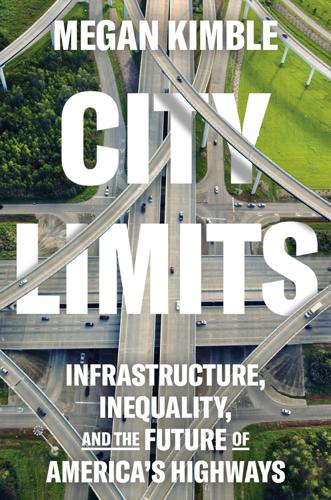
City Limits: Infrastructure, Inequality, and the Future of America's Highways
by
Megan Kimble
Published 2 Apr 2024
In 2018, two researchers compared digitized redlining maps with interstate routes and found that redlined neighborhoods were three times more likely to have an interstate highway routed through them than the best-rated neighborhoods. “Interstate highways caused sharp and persistent declines in population and housing stock for decades after they were built, and these declines were in addition to those resulting from neighborhood poverty, racial segregation, white flight, or urban renewal policies,” the researchers concluded. According to Eric Avila, an urban planning professor at the University of California, Los Angeles, between 1956 and 1966 highway construction demolished thirty-seven thousand units of housing annually. Decades later, the U.S. Department of Transportation would estimate that more than a million people were ultimately forced from their homes for highway construction.
…
See also Escuelita del Alma cities annihilation of locality, 12–13 cost of building highways in, 29 housing unaffordability, 220 interstate highways to remove “slums” and “blight,” 40–41, 42 interstate highway system not solution for congestion problems of, 31–32 mass transit and development of northern, 100 postwar traffic congestion in, 46 rush-hour traffic in, 32 routing interstate highways through, 30–33, 34 transportation as central pattern around development of, 32 white flight to suburbs and, 42 CityMAP (2016 plan for Dallas), 51, 170 Civil Rights Act (1964), 38, 91–92, 172, 268 Claiborne Expressway (New Orleans), 54–55, 109 Clayton Homes, xv (map), 152, 153, 165, 267 Clemens, Ceason basic facts about, 114, 167 city’s support for TxDOT I-35 hybrid proposal, 251 on removal of I-345, 115, 118, 119–20, 168–70, 171–74 climate change.
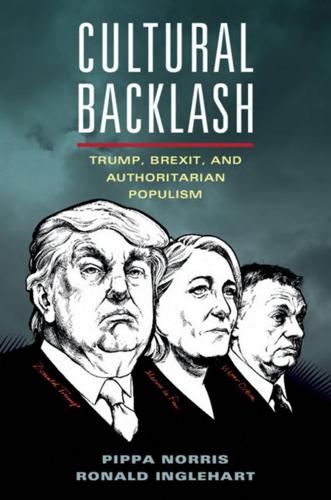
Cultural Backlash: Trump, Brexit, and Authoritarian Populism
by
Pippa Norris
and
Ronald Inglehart
Published 31 Dec 2018
In 1969 and 1971, Thomas Schelling published widely cited articles describing a general theory of tipping points to Part I Introduction 45 account for racial dynamics.32 Similarly, Mark Granovetter discussed the idea of racial thresholds, where the size of minority groups living within a local community was seen as triggering ‘white flight.’33 And Malcolm Gladwell popularized notions of tipping points drawn from epidemiology, reflecting the moment when a virus reaches a critical mass and sharply accelerates diffusion in the general population.34 Thresholds also exist in formal constitutional rules, such as the minimum percentage of votes required before popular support is translated into parliamentary seats.35 In the field of gender studies and women’s political representation, the concept of a ‘critical mass’ argues that the effects of women’s presence in organizations partly depends on the relative size of the group.
…
Clinton maintained many of Obama’s white voters with positive views toward immigration, but she lost about a third of those with negative views.66 MacWilliams argues that Trump’s rise during the 2016 primaries was fueled by his appeal to authoritarian voters who responded to his unvarnished, us-versus-them rhetoric against Mexicans and Muslims.67 President Trump’s signature issue of immigration (‘Build a Wall’), and his dog-whistle appeals to racism, in contrast to Hillary Clinton’s support of ethnic diversity, may have reinforced the white flight from the Democratic Party which already was under way during Obama’s presidency. In the 2016 United States election, white 192 Immigration working-class fears of cultural replacement and immigration were more powerful factors in predicting support for Trump than economic concerns.68 White working-class voters in the study who said that they felt like strangers in their own land, and who believed that the US needs protection against foreign influence, were 3.5 times as likely to favor Trump as those who did not share these concerns.
…
Whether this is viewed as a positive or negative aspect of democracy depends on one’s values. When a large segment of the population comes to feel they no longer are living in the country in which they grew up, society is in danger of cultural backlash. Earlier investigators have calculated precise tipping points for other phenomena, arguing, for example, that white flight will occur when the percentage of blacks in a neighborhood reaches a specific level. It would be difficult to do this with cultural backlash because it involves several different factors, including (1) the ratio of those holding socially liberal values to those holding socially conservative values, but also (2) the contemporary level of economic and physical security, (3) the rate of immigration by culturally distinct people, and (4) the level of Part IV Conclusions 461 ethnic diversity prevailing during the host population’s formative years.
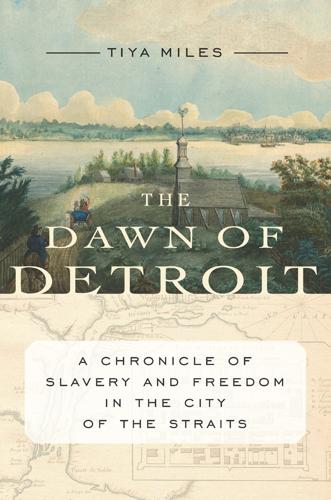
Dawn of Detroit
by
Tiya Miles
Published 13 Sep 2017
The burn that Detroiters feel—that the nation uncomfortably intuits as it looks upon the beleaguered city as a symbol of progress and of defeat—traces back through distant time, to the global desire to make lands into resources, the drive to turn people into things, the quest for imperial dominance, and the tolerance for ill-gotten gain. We attach a series of words—coded and clean—to the residue left behind by that fire: racial tension, white flight, industrial decline, financial collapse, political corruption, economic development, even gentrification and renaissance. But the challenges faced by the residents of this city, and increasingly by residents of all of our industrial urban places, are not neat or new. Deep histories flow beneath present inequalities, silent as underground freshwater streams.
…
I began to visit Detroit museums and historic sites in southeastern Michigan to try to feel the outlines of a story I might tell even as my imagination was captured by a quotation by a colleague involved in the Detroit School discussions, the historian Charles Bright, who had written the following about Detroit history in an article in the Journal of American History: The dominant historical discourse [on Detroit] is one of rise and fall, spiked by an immense nostalgia for the city that once (briefly) was. The recent past is often deployed as a cautionary tale about what goes wrong with urban spaces when racism, white flight, and industrial evacuation undercut a city’s viability. Such a historical construction places Detroit in a past that is now lost and irretrievable and leaves current residents . . . dangling at the end of history with little hope and no agency.1 Bright’s passage prompted a number of questions for me.
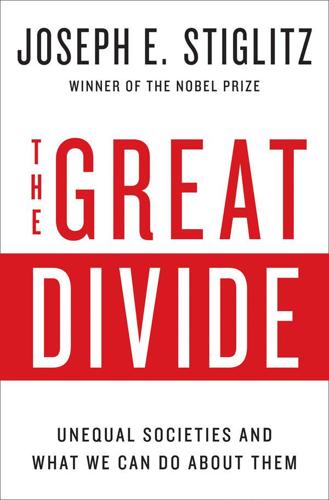
The Great Divide: Unequal Societies and What We Can Do About Them
by
Joseph E. Stiglitz
Published 15 Mar 2015
Even as a 10-year-old, I was disturbed: I wondered, Why did she have only a sixth-grade education, in a country that was supposedly so rich and that supposedly offered opportunities for all? Why was she taking care of me rather than her own children? After I graduated from high school, my mother pursued her life’s ambition—going back to school to get teacher certification and teach elementary school. She taught in the Gary public schools; as white flight set in, she became one of the few white teachers in what had turned into a de facto segregated school. After she was forced to retire at the age of 67, she started teaching on the northwest Indiana campus of Purdue University, working to make sure that there was access for as many as possible.
…
There may be something inevitable about the structural changes that have made American manufacturing less central to our economy, but there is nothing inevitable about the waste, pain, and human despair in cities that have accompanied that change. There are policy alternatives that can soften such transitions in ways that preserve wealth and promote equality. Just four hours from Detroit, Pittsburgh, too, grappled with white flight. But it more rapidly shifted its economy from one dependent on steel and coal to one that emphasizes education, health care, and legal and financial services. Manchester, the center of Britain’s textile industry for more than a century, has been transformed into a center of education, culture, and music.
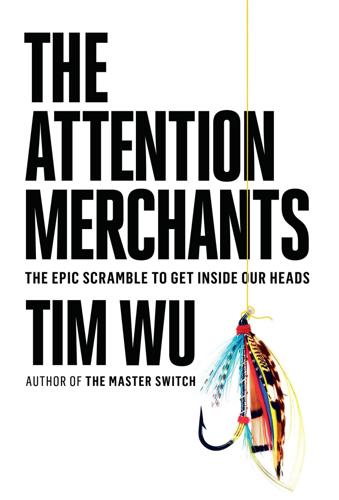
The Attention Merchants: The Epic Scramble to Get Inside Our Heads
by
Tim Wu
Published 14 May 2016
As the founder Abrams admitted in a 2014 interview, “Fundamentally, people could barely log into the website for two years.”11 In what was at the time a shocking collapse, MySpace and Friendster emptied like a bar at last call, and it was as if the Internet migrated en masse to Facebook. The social media critic danah boyd described it as a form of “White Flight.”12*3 As The Huffington Post wrote, by 2008 “MySpace lost over forty million unique visitors per month, lost both co-founders, laid off the vast majority of its staff and more generally, has diminished to a cluttered afterthought of the power it once was.”13 The credible claim to being a social necessity was, in retrospect, the most important thing that Facebook achieved; its rivals would never come close to matching it.
…
Kirkpatrick, The Facebook Effect: The Inside Story of the Company That Is Connecting the World, 175. 11. Seth Fiegerman, “Friendster Founder Tells His Side of the Story, 10 Years After Facebook,” Mashable, February 3, 2014, http://mashable.com/2014/02/03/jonathan-abrams-friendster-facebook/#b9wfGLedTiqV. 12. Danah Boyd, “White Flight in Networked Publics? How Race and Class Shaped American Teen Engagement with MySpace and Facebook,” Race After the Internet, eds. Lisa Nakamura and Peter A. Chow-White (New York: Routledge, 2011). 13. Amy Lee, “Myspace Collapse: How the Social Network Fell Apart,” Huffington Post, June 30, 2011, http://www.huffingtonpost.com/2011/06/30/how-myspace-fell-apart_n_887853.html. 14.
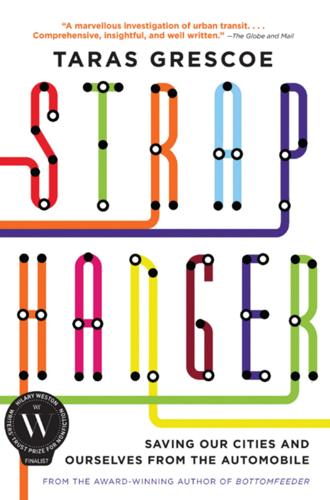
Straphanger
by
Taras Grescoe
Published 8 Sep 2011
(It reminded me of Brooklyn’s Park Slope, with front porches and stepped gables in place of concrete stoops and fire escapes.) After the war, West Philadelphia’s substantial manor houses were subdivided into rental units, and as old Anglo-Protestant and Irish Catholic residents relocated to the suburbs, African Americans began to move in. White flight was never as thorough in Philadelphia as it was in Detroit or Baltimore, however; as early as the ‘60s, urban pioneers committed to staying in the city. Members of the Movement for a New Society, founded by former Quakers, settled around Baltimore Avenue, organizing neighborhood patrols and appointing block captains to reduce crime.* The University of Pennsylvania, whose campus is the economic and cultural focus of the district, also became an agent of revitalization.
…
And, in his writing, Rybczynski has been silent about the negative forces that formed the American suburb: the freeway-building that gutted so many viable neighborhoods and the redlining of poorer districts that fostered urban decline. Rybczynski’s adopted hometown—he moved to Philadelphia from Quebec to teach at the University of Pennsylvania—is a particularly flagrant instance of white flight. By the end of the ‘60s, almost a quarter of a million whites had left the center of Philadelphia for suburbs like Levittown in Bucks County. When a black couple tried to buy a home in this ur-subdivision in 1957, they were driven back to their old home by two hundred stone-throwing suburbanites.
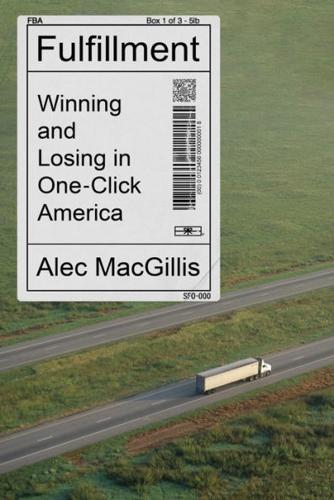
Fulfillment: Winning and Losing in One-Click America
by
Alec MacGillis
Published 16 Mar 2021
All arriving for the same reason, to work for the companies making the things that the innovators had come up with decades earlier, at places like National Cash Register (“The Cash”) and Kettering’s co-creation, Delco (Dayton Engineering Laboratories Co.). But of course not all were meeting with the same reaction. By the early 1960s, white flight was already doing its number on Dayton, draining thousands from two-story frame houses with porches built by handy Germans and Poles decades earlier out to modest bungalows whose primary advantage was their distance from West Dayton, where the Alabamians and Mississippians had clustered. They had not clustered there of their own free will, but because it was understood that they ought not settle east of the river, where downtown began, or north of Wolf Creek, home to Dayton’s Jewish community.
…
They opened it not in downtown York but at the new Queensgate Shopping Center on the edge of town. The store flourished, which persuaded Grumbacher not only to expand his discount offerings—he assigned his son Tim to Mailman’s once he was out of the army in 1964—but also to focus growth in the suburbs. Sprawl and white flight were in full force by the mid-1960s, even in small cities such as York, and Grumbacher saw no way to fight the tide, regardless of how attached the company was to its terra-cotta flagship at Market and Beaver. In 1969, the company opened an anchor store in the new North Mall; in 1975, it added a branch in York Mall on the eastern edge of town; and in 1981, with traffic dwindling ever further on the downtown grid, it closed the flagship, tea room and all.
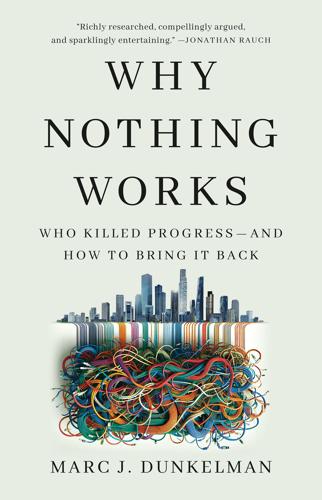
Why Nothing Works: Who Killed Progress--And How to Bring It Back
by
Marc J Dunkelman
Published 17 Feb 2025
But they all remained in the same figurative boat.52 Mayor Lee’s growth machine, like its counterparts elsewhere, had been predicated on a notion that wealth wanted to remain in the city—that middle-class residents would be eager to reside in the buildings that replaced the slums. But that would turn out to be a bad bet. As white flight spurred many middle-class residents beyond the city limits—often to suburbs where they no longer had to shoulder the burdens of urban life, including the taxes—Establishment growth machines began to sputter and fail.53 But if derelict public housing projects came to be a symbol of the shift, urban renewal proved to be a more profound and pervasive catastrophe.54 Around the country, figures like Robert Moses razed scores of communities—more than three hundred thousand families were displaced between 1950 and 1974 alone—not for concrete towers, but for private-sector development.55 Absent demand, developers often balked at investing in them, leaving once vibrant neighborhoods—Pittsburgh’s Golden Triangle, Detroit’s Ragweed Acres, St.
…
When Biden administration secretary of transportation Pete Buttigieg contended in late 2021 that “there is racism physically built into some of our highways,” he was acknowledging what progressives know in their bones to be true: certain routes were chosen explicitly to divide communities along racial lines.32 Perhaps as noxious, America’s mid-twentieth-century inclination to favor roads over rail and transit pointed the country to a whole slew of policies that incentivized a slate of realities contemporary progressives revile: suburban sprawl, white flight, an utter dependence on (often imported) oil, and degradation of the nation’s natural environment. Girding that antipathy is a notion that the car-dependent society we’ve inherited wasn’t inevitable, and that America’s leaders could still change things if they just summoned the requisite political will to do something different.

The Speech: The Story Behind Dr. Martin Luther King Jr. S Dream
by
Gary Younge
Published 11 Aug 2013
They ensure each fresh generation of upper-class families—regardless of intelligence or academic qualifications—access to the premier colleges whose alumni hold disproportionate sway on Wall Street and in Fortune 500 companies, the media, Congress and the judiciary.” In other words, America is not a meritocracy. Opportunities are generally apportioned on the basis of inherited privilege. And just fifty years after legal equality was granted to African Americans, that privilege is in no small part racial. The white flight from history that denies such advantages exist gained legitimacy with Obama’s presidency, which gave credence to the notion that America had moved not only beyond race but racism. In the wake of his first victory, conservative commentators sought to depict his election not as a development in Black American politics but a repudiation of post–civil rights antiracism.
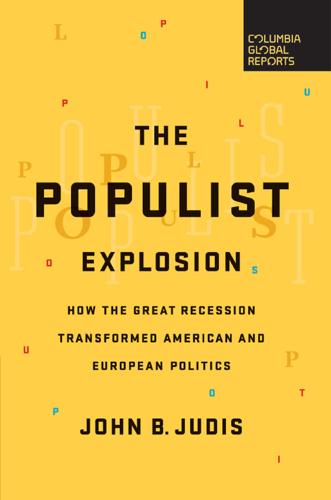
The Populist Explosion: How the Great Recession Transformed American and European Politics
by
John B. Judis
Published 11 Sep 2016
Finally, rightwing populist campaigns and groups have held racist or nativist or xenophobic views, but their complaints point to genuine problems. George Wallace’s call for segregation forever was clearly racist, but he was right about the pitfalls of busing children of different races from one urban neighborhood to another. It did result in white flight to the suburbs and was in that sense self-defeating. Trump, Buchanan, the National Front, and the Danish People’s Party have courted nativist sentiments in attacking illegal and legal immigration, but they are right that unskilled immigration has tended to pull down wages and burden the public sector.
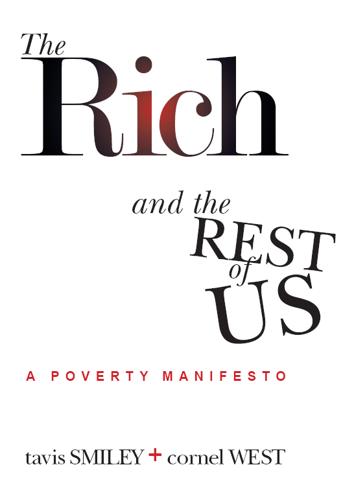
The Rich and the Rest of Us
by
Tavis Smiley
Published 15 Feb 2012
When property owners sense decline, they stop investing, and maintenance of their properties goes by the wayside. City code violations increase, which leads to more foreclosures. Rental rates are lowered for low-income people, and all the social baggage that accompanies poverty invades previously stable neighborhoods. Like in the days of “white flight”—when white Americans exited the nation’s cities based on negative perceptions of declining property values in racially mixed communities that led to self-filling prophecies—today’s foreclosure crisis means that once-promising neighborhoods face the threat of becoming deteriorating slums. President Obama, in his 2012 State of the Union address, announced a federal program to help struggling homeowners avoid foreclosures and save about $3,000 per year on their mortgages.
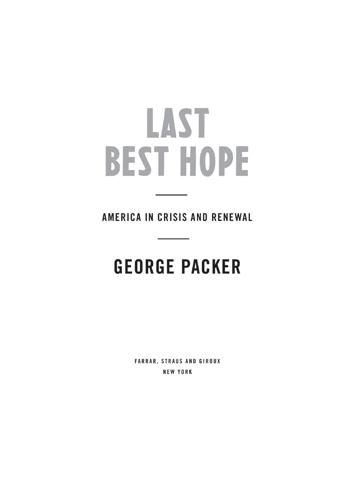
Last Best Hope: America in Crisis and Renewal
by
George Packer
Published 14 Jun 2021
In a dark hour at the end of the sixties, an education official in Cleveland asked Bayard Rustin to write a letter for an exhibit that was intended to explain to city schoolchildren “the magnificent times in which we live.” It was 1969. Cleveland was suffering from riots, the loss of industrial jobs, Black anger, and white flight. That year the Cuyahoga River grew so polluted that it caught fire, the famous amusement park on Lake Erie closed forever, and downtown Cleveland was emptying out. The city was in deep trouble, from which, half a century later, it still hasn’t recovered. Rustin sat down and wrote: Dear Children of Cleveland: There are two concepts, each of which is drawn from the noblest part of our American heritage, which explain the nature of the aspirations of the poor and oppressed people in this country and throughout the world.
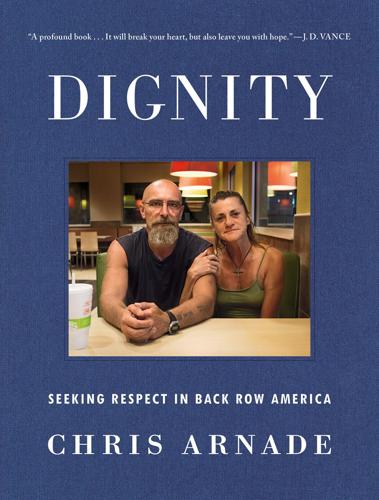
Dignity: Seeking Respect in Back Row America
by
Chris Arnade
Published 3 Jun 2019
“He pretty much raised me.” Ruben says, “I am proud of Gary because it is the only place I know. I have been to other places in the service—Japan, Europe—but I came right back to Gary. Thing is, Gary has changed. First the workforce in the steel mills went down, and then in 1967 they nominated a black mayor, and the white flight started. We once had a ‘thriving downtown’ back in the day, as they say. People used to come here to shop from all over. It was the second largest city in Indiana, and we were damn proud of it. Damn proud. The drugs really started in late sixties. That is when the snake started showing its head.
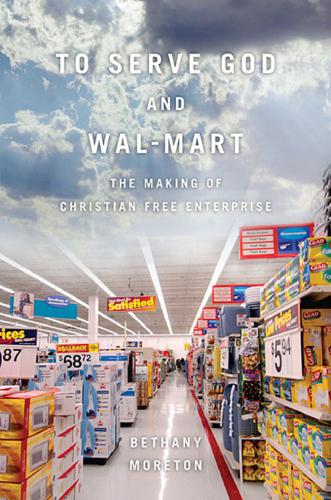
To Serve God and Wal-Mart: The Making of Christian Free Enterprise
by
Bethany Moreton
Published 15 May 2009
Schulman, From Cotton Belt to Sun Belt: Federal Policy, Economic Development, and the Transformation of the South, 1938–1980 (New York: Oxford University Press, 1991); Thomas Sugrue, The Origins of the Urban Crisis: Race and Inequality in Postwar Detroit (Princeton: Princeton University Press, 1996). More recently, see Kevin M. Kruse, White Flight: Atlanta and the Making of Modern Conservatism (Princeton: Princeton University Press, 2007); Matthew D. Lassiter, The Silent Majority: Suburban Politics in the Sunbelt South (Princeton: Princeton University Press, 2007); and Robert O. Self, American Babylon: Race and the Struggle for Postwar Oakland (Princeton: Princeton University Press, 2005); and see below at note 8.
…
Lisa McGirr, Suburban Warriors: The Origins of the New American Right (Princeton: Princeton University Press, 2001); Thomas Allan Scott, Cobb County, Georgia, and the Origins of the Suburban South: A Twentieth-Century History (Marietta, GA: Cobb Landmarks and Historical Society, 2003); Philip Scranton, The Second Wave: Southern Industrialization from the 1940s to the 1970s (Athens: The University of Georgia Press, 2001); Jeff Sharlet, “Soldiers of Christ I: Inside America’s Most Powerful Megachurch,” Harper’s, May 2005, 41–54. 16. On Arkansas, see Jeannie Whayne, “Dramatic Departures: Political, Demographic, and Economic Realignment,” in Arkansas: A Narrative History, Jeannie M. Whayne, et al. (Fayetteville: University of Arkansas Press, 2002), 372–73; on the national realignment, see Kevin M. Kruse, White Flight: Atlanta and the Making of Modern Conservatism (Princeton: Princeton University Press, 2006); Matthew D. Lassiter, The Silent Majority: Suburban Politics in the Sunbelt South (Princeton: Princeton University Press, 2006); McGirr, Suburban Warriors. 17. Bethany E. Moreton, “The Soul of the Service Economy: Wal-Mart and the Making of Christian Free Enterprise” (Ph.D. diss., Yale University, 2006), 47–49. 18.
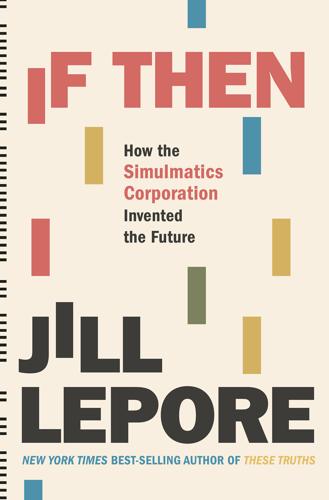
If Then: How Simulmatics Corporation Invented the Future
by
Jill Lepore
Published 14 Sep 2020
With NASA, the Americans would be the first to the moon. The Soviets had been the first to build a satellite. With ARPA, Americans would build better weapons. Leaders of the civil rights movement would come to view the space race and the arms race as a flight of a different sort, a flight from justice, a flight from commitment, a white flight. “It will cost thirty-five billion dollars to put two men on the moon,” the National Urban League’s Whitney Young would complain. “It would take ten billion dollars to lift every poor person in this country above the official poverty standard this year.”45 At the launch of Apollo 11, headed for the moon, protesters would carry signs reading, “$12 a day to feed an Astronaut.
…
Coleman understood the report as an argument for increasing efforts to desegregate American public schools—the report would undergird arguments for busing—but critics on the left dismissed the report as racist, especially after Coleman publicly argued against busing, predicting, correctly, that it would lead to white flight.14 In 1967, around the same time Greenfield convinced Al de Grazia to run Simulmatics’ operations in Saigon, he hired Sol Chaneles to run Simulmatics’ Urban Studies Division, which sought contracts from federal, state, and municipal governments to conduct simulations, making models of things like crime, unemployment, and traffic.

Fewer, Better Things: The Hidden Wisdom of Objects
by
Glenn Adamson
Published 6 Aug 2018
When he was a kid, it was an Irish-Italian working-class neighborhood, with a bar on every corner. (He points out that this meant four bars per intersection.) He did all the things you might imagine boys of that age doing, building go-karts from busted roller skates, running a shoeshine route to earn pocket change, and getting in lots of fistfights. “White flight” was happening when he was growing up. The community gradually became poorer, more heavily African American. There was a lot of racial conflict. In fact, the first time Jerry set foot in Mayday Hardware was when he was running from some local black kids. He went into the store only to take refuge.
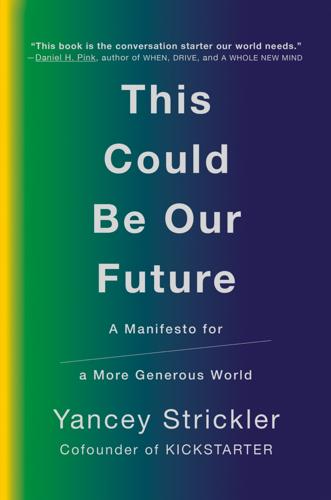
This Could Be Our Future: A Manifesto for a More Generous World
by
Yancey Strickler
Published 29 Oct 2019
THE MALL Gentrification in cities gets headlines, but what happened and is still happening to small towns and rural communities like the one I’m from is arguably even more devastating. I’m talking, of course, about shopping centers and shopping malls. The rise of the mall, we’re told, was a perfect confluence of events. A growing middle class, the creation of the US interstate highway system, and white flight to the suburbs sparked a sudden explosion of shopping centers and suburban growth. While these factors play a significant role, arguably just as big a catalyst for the growth of the mall is far less known. This was a 1954 change to the tax code called “accelerated depreciation.” Starting in 1909, the US tax code allowed building owners to deduct the costs of their property’s gradual wear and tear (called depreciation) from their taxes.
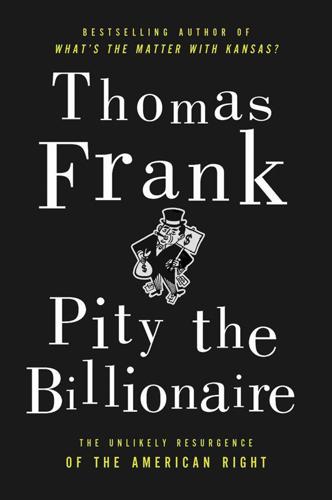
Pity the Billionaire: The Unexpected Resurgence of the American Right
by
Thomas Frank
Published 16 Aug 2011
The story by Amy Gardner ran in the Washington Post on February 18, 2010; the main figure she followed, Representative Rick Boucher of western Virginia, was defeated in November. 13. “57 percent [of whites with no college education] wanted to repeal the health care law—even though they are uninsured at much higher rates than whites with more advanced education.” Ronald Brownstein, “White Flight,” National Journal, January 7, 2011, http://nationaljournal.com/magazine/in-2012-obama-may-need-a-new-coalition-20110105?page=1. See also Brownstein’s article “Populists Versus Managers,” National Journal, December 17, 2010, http://www.nationaljournal.com/magazine/populists-versus-managers-in-the-gop-race-20101217.
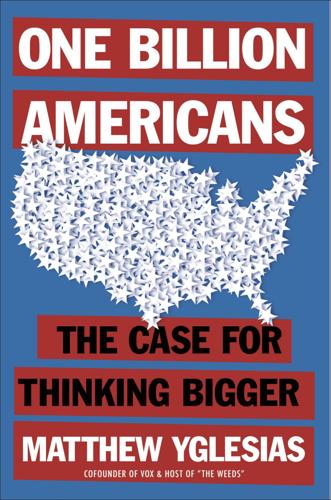
One Billion Americans: The Case for Thinking Bigger
by
Matthew Yglesias
Published 14 Sep 2020
But despite these intuitions, everyone recognizes that precipitous population decline has done the cities of the American rust belt no favors. The original impulses for population decline were external. The invention of the automobile made it possible and in many cases desirable to live outside of the central city. Racism and fear of crime provided further impetus for white flight. Then for midwestern cities, deindustrialization provided a huge additional economic blow. At this point, however, population loss is not just a consequence of external problems; it’s become its own self-sustaining source of difficulty. The residents of Detroit and other shrunken cities are not farmers who are able to take over their neighbors’ vacated land and exploit it to raise their living standards.
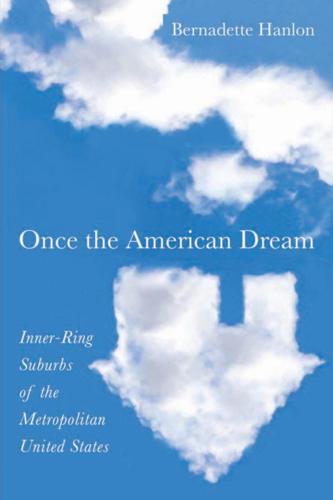
Once the American Dream: Inner-Ring Suburbs of the Metropolitan United States
by
Bernadette Hanlon
Published 18 Dec 2009
For instance, Thomas Cooke and Sarah Marchant (2006) suggest that the increase in high-poverty neighborhoods among inner-ring suburbs of 50 / Chapter 4 metropolitan areas in California and other Sun Belt states is the result of rapid population growth, particularly of the immigrant population.1 Lucy and Phillips (2000a) find that of the 350 suburbs that declined in income from 1960 to 1970, 260 (or 75 percent) experienced an increase in the African American population. Other works suggest that the “white flight” phenomenon is evident, as the residents of older suburban communities struggle to accept minority neighbors (Orfield 2002). Already vulnerable because of their aging and outdated housing stock, inner-ring suburbs in a sense are groomed for racial and ethnic transition. Old postwar suburbs, vulnerable to decline, have become the new home of different minority groups, particularly those coming from other countries.
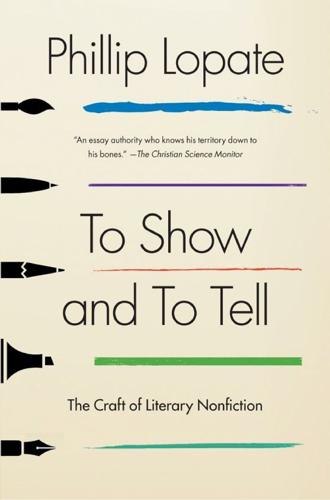
To Show and to Tell: The Craft of Literary Nonfiction
by
Phillip Lopate
Published 12 Feb 2013
You begin to see your experience as part of a larger pattern, be it sociological, historical, psychological, anthropological, cultural, political, or theological: these lenses can supply useful new perspectives to your private tale. Let us say that you grew up in a relatively new suburb. It might not be a bad idea to examine what factors in American society fueled the postwar growth of suburbia: the Federal Highway Act, FHA loans, the utopian ethos of planned decentralization, the decay of urban downtowns, racism, white flight, and so on. (This is pretty much the approach that D. J. Waldie took in his Holy Land: A Suburban Memoir.) Or you witnessed your parents going through an ugly divorce: what insights can be gleaned from the writings of child psychiatrists about the ways that children adapt, or don’t, to such situations?
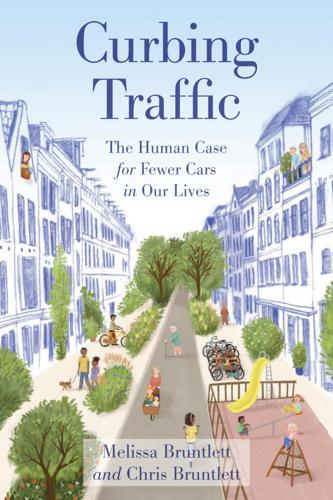
Curbing Traffic: The Human Case for Fewer Cars in Our Lives
by
Chris Bruntlett
and
Melissa Bruntlett
Published 28 Jun 2021
As seen in the suburbs west of Delft, secure parking at this stop feeds far more customers into the bus network, without impacting its capacity or reliability. (Modacity) In the United States, this problem of reduced opportunity was identified in a 1968 paper by John F. Kain, in which he coined the term spatial mismatch. The “white flight” of the 1950s saw most White people flee for the suburbs, leaving African Americans behind, and reinforcing segregation in regions of all sizes across the country, but especially larger urban centers. Paradoxical to the issues arising elsewhere from the peripheral housing and employment locations, Kain wanted to understand why Black people living in inner cities were still unemployed at higher rates when compared to lower-educated and lower-income White people.
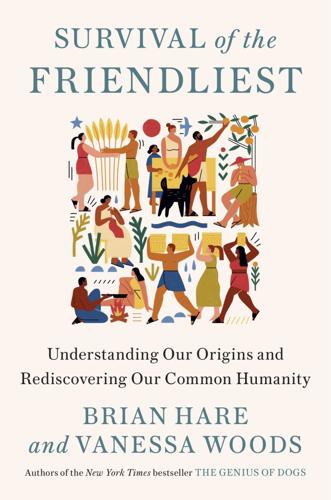
Survival of the Friendliest: Understanding Our Origins and Rediscovering Our Common Humanity
by
Brian Hare
and
Vanessa Woods
Published 13 Jul 2020
High-rises create neighborhoods in which you can live on the same floor with someone for years and never meet, neighborhoods with no sidewalks and only big-box chain stores and fast-food restaurants, with gates and fences that prevent you from leaving or wandering around communities, with highways that cut through communities with no crosswalks or green spaces. Many of our cities are racially segregated, a segregation that started just after World War II. The government poured money into highways that led to the suburbs, facilitating the “white flight” out of city centers. Government-sanctioned racial covenants prevented black people from buying houses in these suburbs. The Federal Housing Authority denied mortgages to people based on race and went even further, “redlining” entire suburbs. This physical distance between black and white communities destroyed opportunities for contact and made it easy for each community to dehumanize the other.
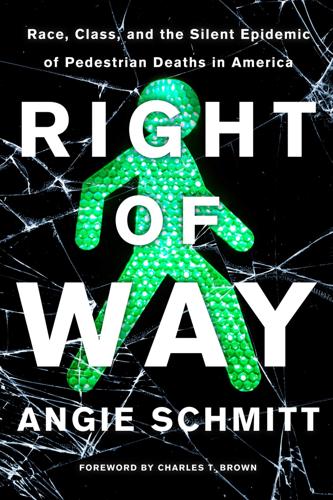
Right of Way: Race, Class, and the Silent Epidemic of Pedestrian Deaths in America
by
Angie Schmitt
Published 26 Aug 2020
“Back in the day, the Republican Party was actually pushing urban policy,” he said. “Corporate friendly urban policy, like opportunity zones.”12 Since then, however, the Republican Party has become more overtly antiurban. Based on survey data of Americans’ political attitudes, it is unclear when and why that happened, but there has been a shift, said Nall. “White flight has had this result of leaving very few white swing voters in urban areas who would benefit from this kind of spending,” he said. “Because there are so few Republican voters in cities anymore . . . which is where a lot of these debates over bike and pedestrian infrastructure are happening . . . the Republican Party no longer sees who this would appeal to.”13 Generational gaps may also play a role.
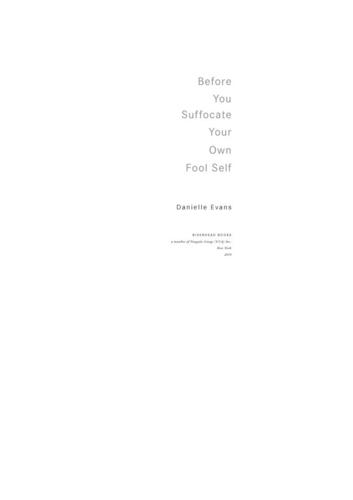
Before You Suffocate Your Own Fool Self
by
Danielle Evans
Published 22 Sep 2010
On the other side of the dam, home surprised me. I always took a minute to recognize my own neighborhood. It seemed like every day a new apartment building was being built or an older store or house torn down. Things changed quickly in those years: Eastdale pushed into the suburb of Lakewood from one side, while white flight created suburbs of the suburbs on the other. This was the new New South: same rules, new languages. The people who could afford to leave Lakewood left; the ones who couldn’t put up better fences. The rest of us were left in Eastdale: old houses, garden apartments, signs in Spanish and Vietnamese.

Aerotropolis
by
John D. Kasarda
and
Greg Lindsay
Published 2 Jan 2009
Its core atrophies while vitality flows to the outermost rings, applying still more pressure to keep moving. There is a price for this, and one community that has paid it is Elvis Presley’s own, Whitehaven. Hanging on to the western edge of the airport, the former pastureland surrounding Graceland has devolved due to white flight and sprawl from an affluent neighborhood to a fraying, predominantly African-American one (“Blackhaven”) within two generations. The local foreclosure rate is twice the national average; residents have seen two decades of wage gains disappear with their homes. The previous tenants fled first to the city’s eastern suburbs and later across the border.
…
It’s up to us.” The Utopia of the Machine How did Detroit manage to drive into a ditch? Check all that apply: auto companies failing or pushing out to the suburbs and beyond, leaving behind a skyline full of tombstones; the freeways dredged through city streets, encouraging residents to follow; black and white flight after the ’67 riots; hostility to mass transit and any kind of planning; infighting; corruption; Toyota; Honda; Nissan; Hyundai. Some attribute it to the unalterable ebb and flow of history—Detroit as a cadaver worthy of Spengler or Toynbee—to absolve themselves of any blame. Ficano’s nemesis, L.
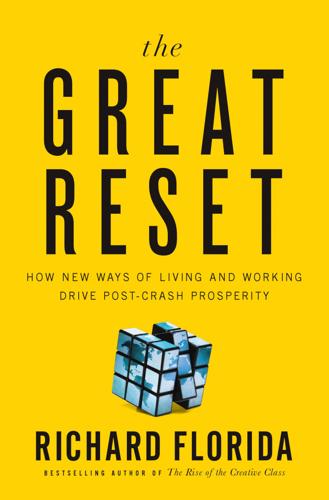
The Great Reset: How the Post-Crash Economy Will Change the Way We Live and Work
by
Richard Florida
Published 22 Apr 2010
It has a relatively compact geography. Its core is quite functional, and there are numerous, stable working-class, middle-class, and affluent neighborhoods in the city. Detroit is a city and region of the Second Reset built along multilane roads and highways that radiate out of the city core. The city and region witnessed massive white flight during the late 1960s and 1970s, leaving the city core almost abandoned. Large swaths of the city are burned out. Poverty is highly concentrated. The landscape is postapocalyptic—with a small area of secured “Renaissance” towers, casinos, and stadiums ringed by abandoned lots and burned-out buildings.
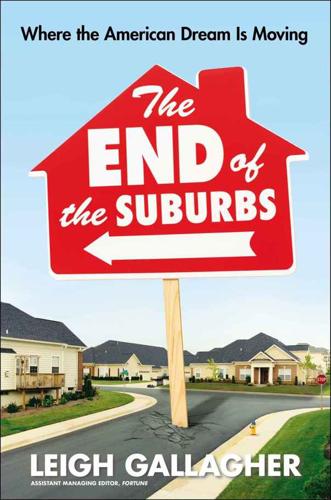
The End of the Suburbs: Where the American Dream Is Moving
by
Leigh Gallagher
Published 26 Jun 2013
In Boston, a West Coast development firm is building a twenty-story residential tower in Fort Point, the former industrial district that was the setting for much of the Martin Scorsese movie The Departed. This is, of course, a stark contrast to the destruction and decay that once plagued our cities, which in the ’60s saw street riots, in the ’70s suffered from white flight, and in the ’80s and ’90s experienced an influx of crime, prostitution, and a crack epidemic that ravaged urban areas across our nation. It’s hard to imagine now, but in New York, it wasn’t all that long ago that Times Square was dangerous, prostitutes trolled the Meatpacking District, and Central Park’s Belvedere Castle was boarded up and covered with graffiti.
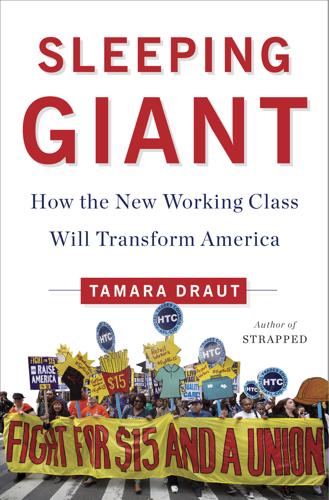
Sleeping Giant: How the New Working Class Will Transform America
by
Tamara Draut
Published 4 Apr 2016
In 2010, 5.8 million people weren’t allowed to vote because of a criminal conviction, with black Americans more likely to be disenfranchised. In three states—Florida, Virginia, and Kentucky—more than 20 percent of black Americans were disenfranchised.51 Imagine if the cumulative resources spent on the war on drugs had instead been allocated to rebuilding the communities left barren by closing factories and isolated by white flight. Today almost one in twelve black men is behind bars, a staggering loss to families, neighborhoods, and society.52 And for the partners and wives left behind, most of whom are working-class, the challenges of making enough money to get ahead have only intensified with the rise of the bargain-basement economy.
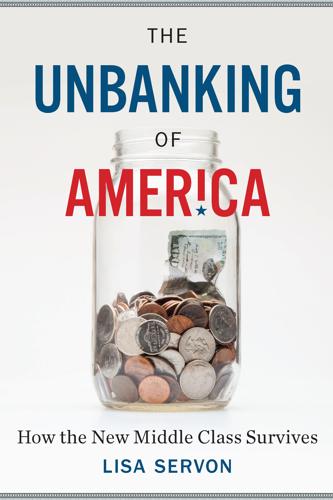
The Unbanking of America: How the New Middle Class Survives
by
Lisa Servon
Published 10 Jan 2017
“It is going through a gradual reinvention,” writes the author, “with restaurants opening, scruffy buildings getting spiffed up, and apartments being built on gap-toothed lots.” But the South Bronx is still the poorest area in the United States. Forty percent of its residents live below the poverty line, and nearly half used food stamps in the year 2010. The federal government’s Home Owners’ Loan Corporation triggered massive white flight from the area when it gave vast sections of the area its lowest rating—a D—in 1937. Home to waves of Polish, Russian, Italian, German, and Irish immigrants through the 1940s, the area flipped from being two-thirds non-Latino white in 1950 to being two-thirds black or Puerto Rican in 1960. In 1969 the New York City welfare department was accused of “dumping” poor black and Puerto Rican families into public housing complexes like Mitchel Houses in the South Bronx, and in that same year the New York City Master Plan deemed 25 percent of the Bronx’s rental units to be “dilapidated or deteriorating.”
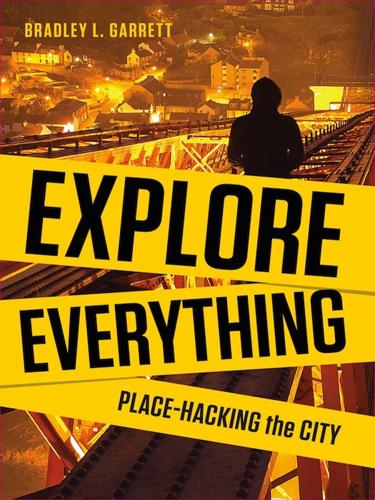
Explore Everything
by
Bradley Garrett
Published 7 Oct 2013
By 1967, the city was caught in the grip of riots inspired by rampant arrests where African-American males were blatantly profiled and targeted. After an oil crisis in the 1970s and a growing preference for imported automobiles in the 1980s and 1990s, Detroit became economically ravaged, caught between slow consumer demand and the high wages called for by strong unions. There was also a case of ‘white flight’ – middle-class white professionals fleeing the city – as racial tensions heated up. The city was a case study in post-industrial abandonment. By 1950, one million people had left Detroit. When we arrived in 2011, it was a 130-square-mile city with only 700,000 residents. Because of the transformation of our interests through our infiltrations in London and Paris, where ruin fetishists saw photographic opportunities in the suburbs of Detroit, we saw countless possibilities for scaling some of the city’s most prominent rooftops, which were hopefully being more or less ignored.
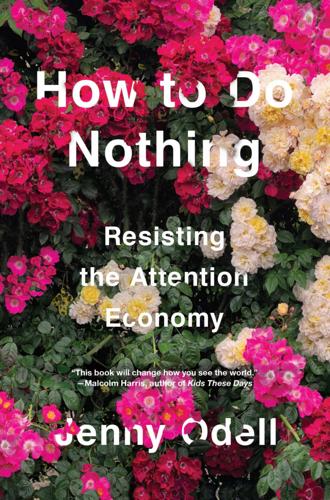
How to Do Nothing
by
Jenny Odell
Published 8 Apr 2019
To live without encountering plurality, both within oneself and without, brings about a phenomenon that Sarah Schulman describes in her book The Gentrification of the Mind: Witness to a Lost Imagination. Schulman gives a firsthand account of what happened in 1980s New York, when the children of suburban families who had been part of post–World War II white flight filled the vacancies left by the dying, AIDS-affected queer community in places like the Lower East Side. Both in urban and psychological space, Schulman witnessed “the replacement of complex realities with simplistic ones,” a process leading to a kind of social monoculture. Afraid of anyone who differed from the suburban archetype, the newcomers to Schulman’s neighborhood were not only uninterested in learning anything about the incredibly dynamic place they had moved to, but ignorant of their role in destroying that dynamism.
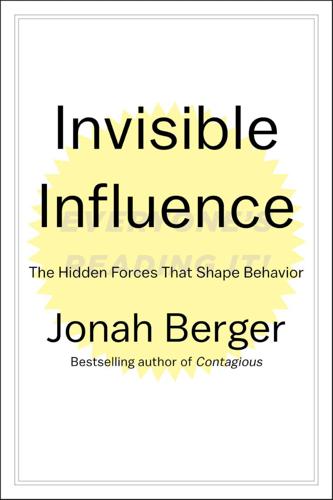
Invisible Influence: The Hidden Forces that Shape Behavior
by
Jonah Berger
Published 13 Jun 2016
Originally built with high standards and catering to a wide range of applicants, public housing eventually became a last resort. It came to stand for concentrated poverty, crime, and racial segregation. Politicians resisted the creation of units in middle- and working-class neighborhoods, focusing construction around already poor areas of the city. White flight from the inner city to suburbia and income requirements further segregated the population. Soon the only individuals left in public housing were people who didn’t have anywhere else to go. Starting in the late 1960s and early 1970s, the government tried a different approach. Rather than focusing on supply, or the number of low-cost units being built, the Experimental Housing Allowance Program focused on the demand side as well.
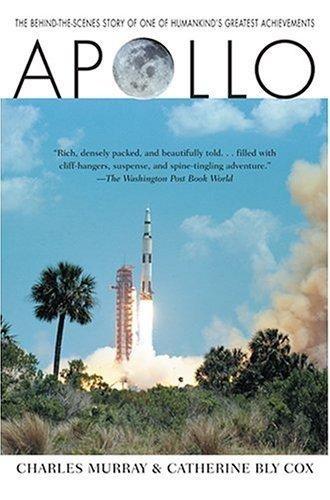
Apollo
by
Charles Murray
and
Catherine Bly Cox
Published 1 Jan 1989
Cooper was scheduled to be in orbit for thirty-four hours, which was longer than even Kraft could handle on his own, so he appointed his deputy, Englishman John Hodge (part of the AVRO group), to be the second flight director. They adopted colors to identify themselves. Kraft was Red Flight, so the men working his shifts would be the Red Team; and Hodge was Blue Flight. When Gemini began in 1965, Kraft added three more flight directors. The first two were Gene Kranz, White Flight, who had been acting as Kraft’s assistant flight director during Mercury, and Glynn Lunney, Black Flight, the youngest of the original members of the Space Task Group. After Gemini VII in December 1965, Kraft stepped down as a flight director to leave more time for his responsibilities as head of the Flight Operations Directorate.
…
(NASA) Green Flight Cliff Charlesworth, the oldest and most normal of the initial three Apollo flight directors who defined the role for their successors. This photo was taken moments after the launch of Apollo 11. The climbing Saturn V is visible on the monitor to the left—a view that none of flight controllers had—but Charlesworth is watching his columns of numbers. (NASA) White Flight Gene Kranz, “General Savage,” fighter pilot in the 1950s, Kraft’s right-hand man in Mercury and Gemini, Flight for the first lunar descent, Flight when the explosion on Thirteen occurred, director of Flight Operations during the first years of the shuttle, in one of his trademark white vests. (NASA) Black Flight Glynn Lunney, “the quickest mind in the MOCR,” who directed the transfer into the lunar module after the explosion, making up procedures on the run and getting the job done faster than any team was able to do it in the simulation of similar catastrophes thereafter.
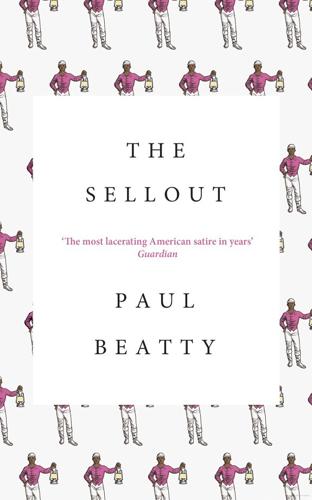
The Sellout: A Novel
by
Paul Beatty
Published 2 Mar 2016
He loved the idea of bringing back segregated education, because he thought the idea would make Dickens more attractive to white resettlement. That the city would return to being the thriving white suburb of his youth. Cars with tail fins. Straw hats and sock hops. Episcopalians and ice cream socials. It would be the opposite of white flight, he said. “The Ku Klux influx.” But when I’d ask him how, he’d just shrug and, like a conservative senator without any ideas, filibuster me with unrelated stories about the good ol’ days. “Once, in an episode called ‘Pop Quisling,’ Stymie tried to avoid taking a history test he hadn’t studied for by setting his desk on fire, but of course he ended up burning down the entire school and the gang had to take the test on top of a fire truck ’cause Miss Crabtree didn’t play that shit.”
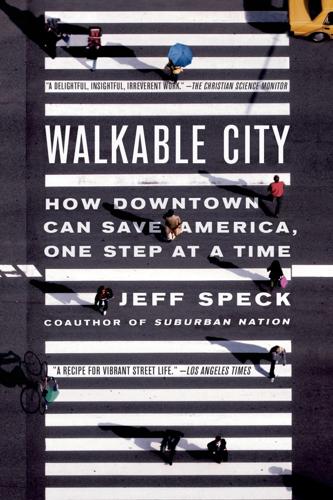
Walkable City: How Downtown Can Save America, One Step at a Time
by
Jeff Speck
Published 13 Nov 2012
In contrast, the Portland metro area is now home to more than twelve hundred technology companies. Like Seattle and San Francisco, it is one of the places where educated millennials are heading in disproportionate numbers. This phenomenon is what the demographer William Frey has in mind when he says: “A new image of urban America is in the making. What used to be white flight to the suburbs is turning into ‘bright flight’ to cities that have become magnets for aspiring young adults who see access to knowledge-based jobs, public transportation and a new city ambiance as an attraction.”36 The conventional wisdom used to be that creating a strong economy came first, and that increased population and a higher quality of life would follow.
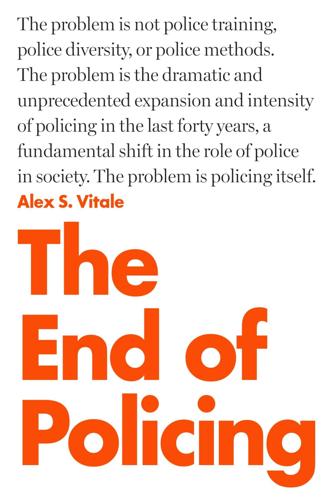
The End of Policing
by
Alex S. Vitale
Published 9 Oct 2017
The governor could have initiated a real conversation about the economic, social, and political dynamics that have contributed to the profound alienation of African Americans in the Saint Louis area (if not more broadly). Openly rethinking the hodgepodge of poorly funded municipalities and schools, largely designed to facilitate white flight from Saint Louis, as well as the basic functions of the criminal justice system, could have gone a long way to restore public trust and divert attention from the specifics of Darren Wilson’s case. Local politicians knew that a criminal indictment was highly unlikely but took no steps to reduce the rage they knew would result.
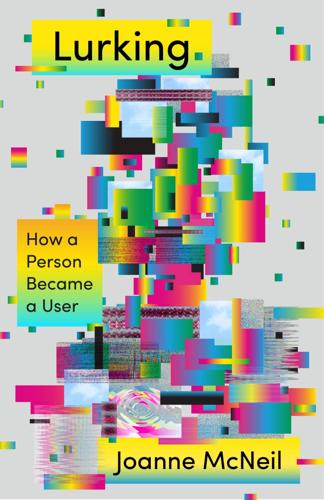
Lurking: How a Person Became a User
by
Joanne McNeil
Published 25 Feb 2020
More recently, “Spyspace” was the name of a Government Communications Headquarters social networking site, according to “ALL OF THE SIGNALS ALL OF THE TIME,” in Luke Harding’s The Snowden Files: The Inside Story of the World’s Most Wanted Man (Vintage, 2016). I emailed the founder of Spyspace, who still checks the email account listed on its archived page. He told me, “whatta time to be alive!” but was unavailable for further questions. The danah boyd quote on Myspace and Facebook comes from “White Flight in Networked Publics? How Race and Class Shaped American Teen Engagement with MySpace and Facebook,” which appeared in Race After the Internet (ed. Lisa Nakamura and Peter A. Chow-White, Routledge, 2012, 207). The Facebook cofounder Dustin Moskovitz attributes the moral panic around Myspace to Facebook’s success.

The Twittering Machine
by
Richard Seymour
Published 20 Aug 2019
Les Back, Michael Keith and John Solomos, ‘Technology, Race and Neo-fascism in a Digital Age: The New Modalities of Racist Culture’, Patterns of Prejudice, Vol. 30, 1996, pp. 3–27. 6. This is despite the fact that . . . Tara McKelvey, ‘Father and Son Team on Hate Site’, USA Today, 16 July 2001; David Schwab Abel, ‘The Racist Next Door’, New York Times, 19 April 1998; ‘World’s oldest neo-Nazi website Stormfront shut down’, Associated Press, 29 August 2017; Eric Saslow, ‘The White Flight of Derek Black’, Washington Post, 15 October 2016. 7. Journalist Paul Lewis and academic Zeynep Tufekci have . . . Paul Lewis, ‘“Fiction is outperforming reality”: how YouTube’s algorithm distorts truth’, Guardian, 2 February 2018; Zeynep Tufekci, ‘YouTube, the Great Radicalizer’, New York Times, 10 March 2018. 8.
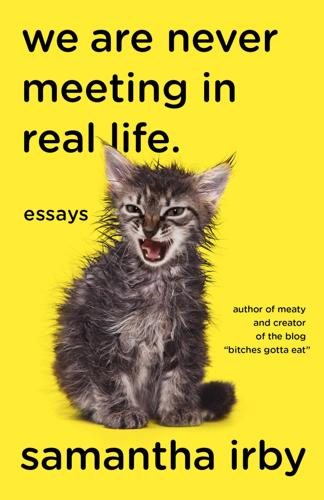
We Are Never Meeting in Real Life
by
Samantha Irby
Published 14 Apr 2017
Helen nodded toward the at-home blood pressure cuff propped up on the desk. “Is that thing sharp?” She smirked. “Get out!” I screamed, and she heaved herself off the bed and slowly lumbered down the stairs in search of the sharp knives we kept out of reach of tiny pink hands. — Helen made her (half-)white-flight pilgrimage first. I was out of town for a few days and returned to find my dining room covered in shattered drywall after a radiator pipe had burst and partially collapsed the ceiling. I knew something was off as soon as I opened the door and was greeted by a surge of moist heat. My first thought was that I’d left a Lean Cuisine smoldering in the oven and that no one had noticed because I never replaced the battery in the carbon monoxide detector after it died six years ago.

DarkMarket: Cyberthieves, Cybercops and You
by
Misha Glenny
Published 3 Oct 2011
More malignant types saw in Manningham an opportunity to ratchet up the mistrust between those communities. In July 2001 this district exploded into brief but violent riots that reflected a deepening division between the city’s large Asian constituency and its white population. Even earlier, Manningham had experienced the phenomenon of white flight and, by the time the Reverend John arrived, three years after the riots, 75 per cent of the population were Muslims whose origins lay largely in the rural districts of north-eastern Pakistan. ‘The remaining twenty-five per cent are Christians, although only about five per cent of those are church-going.
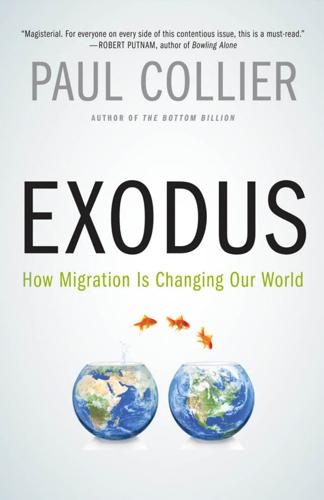
Exodus: How Migration Is Changing Our World
by
Paul Collier
Published 30 Sep 2013
Triumph of the City: How Our Greatest Invention Makes Us Richer, Smarter, Greener, Healthier and Happier. New York: Penguin. Goldin, I., Cameron, G., and Balarajan, M. 2011. Exceptional People: How Migration Shaped Our World and Will Define Our Future. Princeton, NJ: Princeton University Press. Goodhart, D. 2013. White Flight? Britain’s New Problem—Segregation. Prospect, February. Greif, A., and Bates, R. H. 1995. Organising Violence: Wealth, Power, and Limited Government. Mimeo, Stanford University. Grosjean, F. 2011. Life as a Bilingual. Psychology Today. Haidt, J. 2012. The Righteous Mind: Why Good People Are Divided by Politics and Religion.
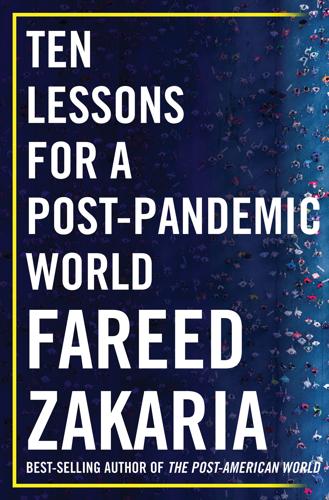
Ten Lessons for a Post-Pandemic World
by
Fareed Zakaria
Published 5 Oct 2020
Researchers note that some big cities, such as New York, Los Angeles, and Chicago, have seen some recent slippage in population, and some worry about a repeat of the 1970s, when New York lost 10% of its residents. Other cities, such as Houston, Washington, DC, and Miami, have seen slower growth rates in recent years, too. Yet much of this relates to the high cost of living in cities—a symptom of success, not failure. After all, the cities of 1970s America were hollowed out by “white flight”—today’s cities face gentrification, a problem arising from too many affluent people wanting to live there. In any case, most of those leaving cities are not headed for small towns. They are relocating within their metro region, or moving to other metros, sometimes smaller ones. What’s clear is that established cities are increasingly vying with one another to keep residents.
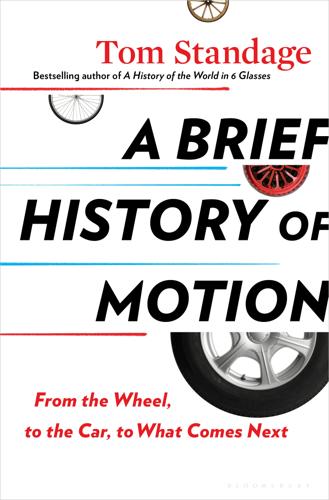
A Brief History of Motion: From the Wheel, to the Car, to What Comes Next
by
Tom Standage
Published 16 Aug 2021
(This model first emerged in Los Angeles, where the “Miracle Mile” of Wilshire Boulevard had established itself as a thriving retail center by 1930, and spread to other cities after the war.) Big companies began to build landscaped suburban campuses. Factories also moved out of cities to suburbs, taking jobs with them. The steady shift of white city dwellers into the suburbs, known as white flight, reduced the tax base of cities, prompting city governments to cut back on infrastructure, services, and schools in a cycle of urban decline. Meanwhile, the suburbs boomed. The result was a reshaping of American cities, which became more segregated by race and class; even in the predominantly white suburbs, communities sorted themselves by ethnicity and wealth.

Supertall: How the World's Tallest Buildings Are Reshaping Our Cities and Our Lives
by
Stefan Al
Published 11 Apr 2022
Suburbs offered a green dream, a detached suburban home on a green lot on a tree-lined residential street in a neighborhood featuring large parks. Some of these suburbs paradoxically offered green only after developers had felled forests and natural areas to make way for suburban tracts. In the United States, “white flight” to greener pastures left the poor behind in gray cities. Suburbanization separated cities from precious tax resources, which led to fewer parks. However, some progressive city governments, like Portland, Oregon, planned citywide park systems. In 1903, John Olmsted, the stepson of Central Park’s designer, was hired to design Portland’s green network.

Wonderland: How Play Made the Modern World
by
Steven Johnson
Published 15 Nov 2016
Gruen’s design for Southdale would become the single most influential new building archetype of the postwar era. Just as Louis Sullivan’s original skyscrapers had defined the urban skylines of the first half of the twentieth century, Gruen’s shopping mall proliferated around the globe, first in suburban American towns newly populated by white flight émigrés from metropolitan centers. Shopping meccas like L.A.’s Beverly Center became cultural landmarks, and the default leisure activity of hanging at the mall would define an entire generation of “Valley girls.” But as mall culture went global, Gruen’s design became increasingly prominent in the downtown centers of new megacities.

Ground Control: Fear and Happiness in the Twenty First Century City
by
Anna Minton
Published 24 Jun 2009
The familiar story which is often told is that during the 1970s and 1980s inner cities became dangerous places, where crime and violence were rife and middle-class families fled to the suburbs in search of safety and security. It was a trend which appeared to have come to Britain from America, where it was more pronounced and where the racial overtones created the term ‘white flight’, leaving inner cities hollowed out and populated by poor blacks. It is true that as industry left large parts of our cities empty, unemployment and crime rose steadily. In 1981 the Specials released their seminal single, ‘Ghost Town’, about urban blight. There were riots across Britain. Inflation was running at more than 20 per cent.
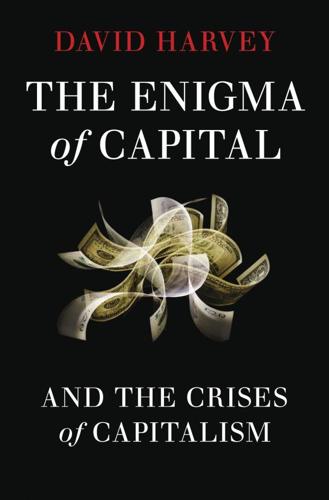
The Enigma of Capital: And the Crises of Capitalism
by
David Harvey
Published 1 Jan 2010
They bear witness to a struggle on the part of those who feel alienated and dispossessed to repossess the country that they love by any means. Such social tensions offer possibilities for capitalist exploitation. In US cities in the 1960s the practice of blockbusting neighbourhoods was widespread (it still persists). The idea was to introduce a black family into an all-white neighbourhood in the hope of stimulating white fear and white flight. Falling property values created opportunities for speculators to purchase housing cheaply before selling dear to minority populations. The responses of the threatened white populations varied from violent resistance (such as the firebombing of the home of any black family who tried to move in) through to more moderate attempts (sometimes mandated by civil rights laws) to integrate as peacefully as possible.

Street Smart: The Rise of Cities and the Fall of Cars
by
Samuel I. Schwartz
Published 17 Aug 2015
The expectation was sustained by housing policies like the GI Bill that discriminated in favor of new housing, and by tax policies that discriminated against renters. It was enabled by transportation policies like the orgy of road building financed by the Highway Trust Fund. It was reinforced by white flight, by the almost deliberate destruction of inner city neighborhoods, and even by the well-intentioned but unhelpful Progressive disdain for city living. And it survived for decades. Eventually, though, it turned out to be a losing game. For millions of people—not just Millennials, but also Baby Boomers in the process of downsizing their homes—the costs of suburban living started to outweigh the benefits.

Norman Foster: A Life in Architecture
by
Deyan Sudjic
Published 1 Sep 2010
The blight and the squalor outside the university precinct was made all the more poignant by the fragments of Early Americana in the form of colonial church steeples, marooned in the midst of it. In the 1970s, New Haven’s Union Station, designed by Cass Gilbert with imperial swagger, was boarded up, and passengers caught the train to New York from a prefabricated hut tethered beside it along the tracks. The impact of empty factories, white flight and dereliction was not helped by brutal planning policies that rammed freeways through residential neighbourhoods. In Foster’s time in New Haven, these disastrous strategies were directed with what were no doubt the best intentions by an ambitious mayor, Richard Lee, who saw himself as the Robert Moses of the Kennedy era, and was determined to make New Haven into an international model for urban renewal.
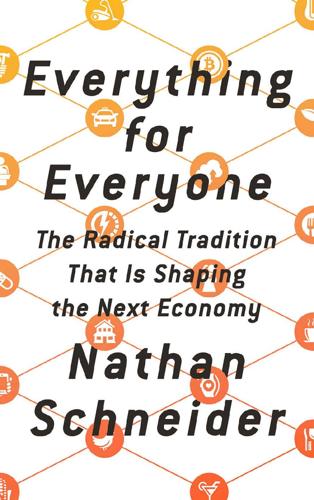
Everything for Everyone: The Radical Tradition That Is Shaping the Next Economy
by
Nathan Schneider
Published 10 Sep 2018
The end of segregation inclined most of the city’s white residents to flee for the suburbs, while maintaining their hold on political power and the economic benefits of city contracts. They regarded the city’s subsequent decline as a case in point. To Hollis Watkins, a local civil rights hero, the story of the city’s transformation after white flight was simple: “intentional sabotage.” Lumumba helped found the New Afrikan People’s Organization in 1984, and the Malcolm X Grassroots Movement formed as an offshoot by 1990. MXGM, whose first chapter was in Jackson, set out to bring black nationalism to a new generation of activists. Adults organized and strategized; kids joined the New Afrikan Scouts and attended their own summer camp.
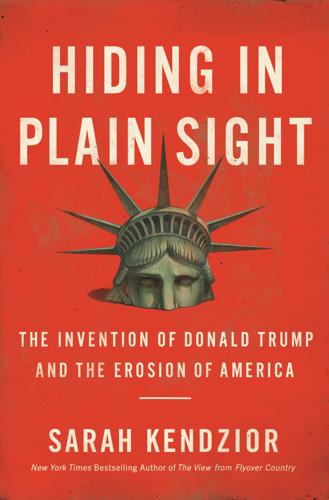
Hiding in Plain Sight: The Invention of Donald Trump and the Erosion of America
by
Sarah Kendzior
Published 6 Apr 2020
The state remains divided by race, class, and a rural versus urban landscape. But what most folks agree on, regardless of their background, is the pervasiveness of pain. We are held together by the recognition that we are being torn apart. This feeling is particularly acute in St. Louis. You see the residue of decades of white flight—first from the city to the suburbs, then from the suburbs to the exurbs—and the attempts of activists to undo the poverty and unrest left in its wake. You see teddy bears and balloons tied to trees on street corners and know it’s not an invitation to a birthday party but the marking of a murder.

"Live From Cape Canaveral": Covering the Space Race, From Sputnik to Today
by
Jay Barbree
Published 18 Aug 2008
Ed White was still frolicking in space, and Grissom called in his best command voice, “Gemini 4, get back in.” McDivitt repeated the order: “They want you to get back in now.” Astronaut Ed White on America’s first spacewalk. (NASA). “What does the flight director say?” asked a happy Ed White. Flight director Chris Kraft moved to his microphone and barked, “THE FLIGHT DIRECTOR SAYS GET BACK IN!” White laughed. “This is fun! I don’t want to come back in, but I’m coming.” But the spacewalking astronaut discovered that maneuvering his body along the Gemini without the use of the jet gun was easier said than done.
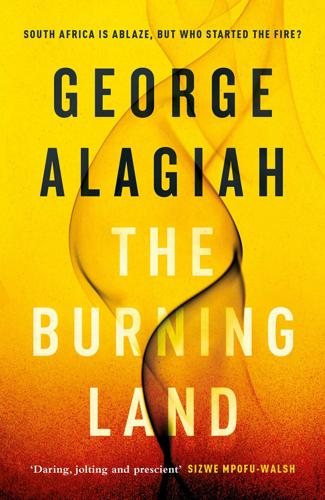
The Burning Land
by
George Alagiah
Published 28 Aug 2019
It didn’t stand a chance. By the mid-nineties the Ponte echoed to the sound of a dozen languages, a Babel-esque din which foretold the worst fears of white South Africans, who worried that they would be left marooned in their final redoubt, unable to understand the world around them and misunderstood by it. With white flight went the businesses and their taxes; with the taxes went many of the public services that had once made Ponte the gold standard of urban living. Ponte’s new immigrant colony, from Nigerian traders and Congolese pastors to Mozambican labourers and Somali shopkeepers, lived in the Catch-22 of the black economy, where they were in the city but not of it.
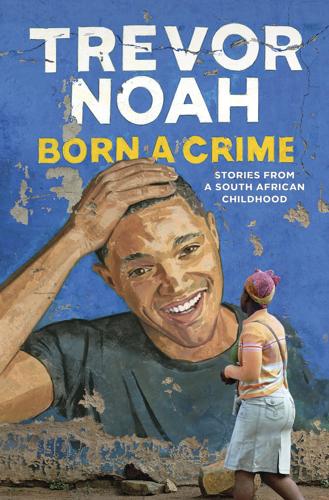
Born a Crime: Stories From a South African Childhood
by
Trevor Noah
Published 15 Nov 2016
I went from seeing my dad every Sunday to seeing him every other Sunday, maybe once a month, whenever my mom could sneak me over, same as she’d done back in Hillbrow. We’d gone from living under apartheid to living under another kind of tyranny, that of an abusive, alcoholic man. At the same time, Yeoville had started to suffer from white flight, neglect, general decline. Most of my dad’s German friends had left for Cape Town. If he wasn’t seeing me, he had no reason to stay, so he left. His leaving wasn’t anything traumatic, because it never registered that we might lose touch and never see each other again. In my mind it was just Dad’s moving to Cape Town for a bit.
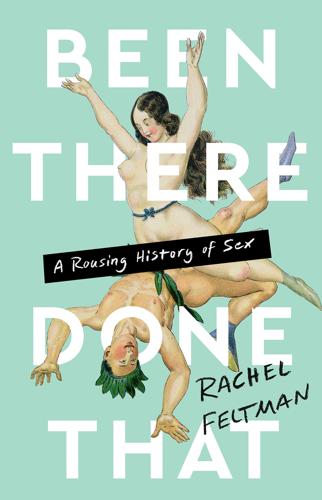
Been There, Done That: A Rousing History of Sex
by
Rachel Feltman
Published 14 May 2022
Early Europeans should be forgiven for thinking black swans were a once-in-a-blue-moon kind of fowl. They’re native to Australia, and Westerners didn’t see them until the 1600s, though they’ve now been introduced into New Zealand, Japan, China, the United Kingdom, and the United States. They’re beautiful: strikingly black with red beaks and a flash of white flight feathers that appear when they take wing. They’re also queer. In a 1981 overview of the species, Lionel Wayne Braithwaite reports that Cygnus atratus gets the avian equivalent of gay-married with some frequency in the wild.16 While plenty of male black swans pair up with females and call it a day, both wild birds and those in captivity sometimes enter into male-male pairings instead.
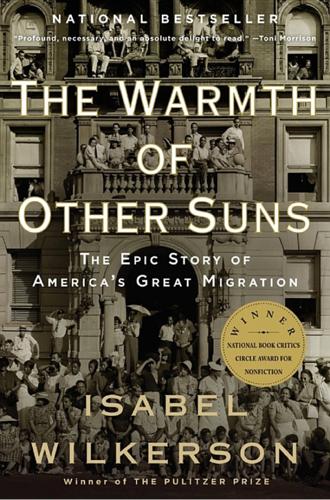
The Warmth of Other Suns: The Epic Story of America's Great Migration
by
Isabel Wilkerson
Published 6 Sep 2010
Over time, this mass relocation would come to dwarf the California Gold Rush of the 1850s with its one hundred thousand participants and the Dust Bowl migration of some three hundred thousand people from Oklahoma and Arkansas to California in the 1930s.9 But more remarkably, it was the first mass act of independence by a people who were in bondage in this country for far longer than they have been free.10 “The story of the Great Migration is among the most dramatic and compelling in all chapters of American history,” the Mississippi historian Neil McMillen wrote toward the end of the twentieth century.11 “So far reaching are its effects even now that we scarcely understand its meaning.” Its imprint is everywhere in urban life. The configuration of the cities as we know them, the social geography of black and white neighborhoods, the spread of the housing projects as well as the rise of a well-scrubbed black middle class, along with the alternating waves of white flight and suburbanization—all of these grew, directly or indirectly, from the response of everyone touched by the Great Migration. So, too, rose the language and music of urban America that sprang from the blues that came with the migrants and dominates our airwaves to this day. So, too, came the people who might not have existed, or become who they did, had there been no Great Migration.
…
And they wanted it. But the neighborhood was all white, and there was a covenant on the house that forbade the owners from selling to colored people. Still a real estate agent managed to secure the house for them in spite of the restriction. During the early testing of limits that presaged the white flight from northern and western cities in the 1960s, realtors found ways around the covenants by buying properties themselves and selling them at a higher price to colored people, by arranging third-party transfers that hid the identity of the true purchasers, or by matching defiant or desperate white sellers with equally anxious colored buyers, which together were just about the only way colored people could get into certain neighborhoods.
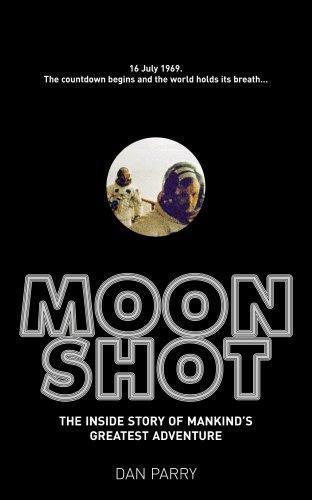
Moonshot: The Inside Story of Mankind's Greatest Adventure
by
Dan Parry
Published 22 Jun 2009
At launch, when the crew had been wearing their pressure-suits while strapped into their couches, they had been hemmed in by the grey instrument panels and barely had room to move. Most of the windows had been covered by a protective shroud, and sitting in a gloomy half-light they had been confronted by a vast array of instruments and switches. Now, with the windows uncovered, sunlight flooded the cabin, bouncing off the men's white flight-suits and the bright surfaces of the storage lockers. What had once appeared to be no more than a means of getting from A to B now looked like a bright living space. As the men freely floated about their new home, Columbia had the sterile look of a clean, state-of-the-art spacecraft. The era of cramped capsules had been replaced by a taste of the future
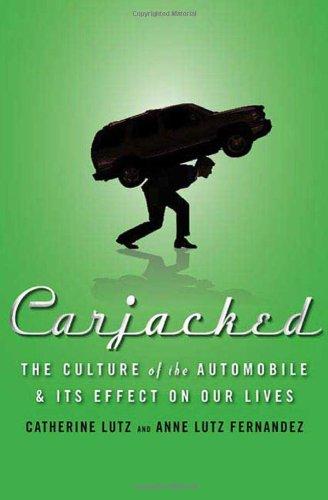
Carjacked: The Culture of the Automobile and Its Effect on Our Lives
by
Catherine Lutz
and
Anne Lutz Fernandez
Published 5 Jan 2010
One Brookings Institution study determined that if blacks owned cars at the same rates as whites, it would eliminate nearly half the T H E C AT C H : T H E R I C H G E T R I C H E R 115 difference in black and white jobless rates.21 Without a car, inner city residents, who generally work more irregular hours, must rely on public transit with its scarce service outside of rush hour, leading to their being late or missing work altogether.22 In cities with poor public transit, having a car significantly increases one’s chances of getting a job.23 As noted earlier, recent job growth is greatest on the suburban ring, leaving a skewed ratio of workers to jobs in the inner city. But it is no simple matter of an unemployed person changing where he or she lives. The lack of affordable housing and the prevalence of housing discrimination limit that option. How did this happen? White flight to the suburbs during the post–World War II period was facilitated by massive public investment in the roads to get them there. This radically expanded the existing spatial segregation of minority communities, and was followed by the growth of jobs in suburban locations, which has further disadvantaged inner city African American families without cars, for whom such a commute by public transit is either very difficult or impossible.
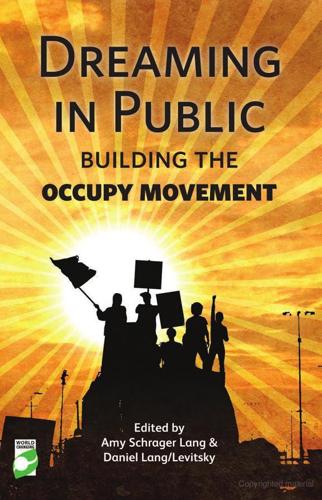
Dreaming in Public: Building the Occupy Movement
by
Amy Lang
and
Daniel Lang/levitsky
Published 11 Jun 2012
We have organized resistance to racism, sexism, homophobia, Islamophobia, ableism and the criminalization of youth, to the systematic destruction of the environment in poor communities of color, to the dehumanization of people with disabilities, and so many other injustices – as they manifest in our daily lives and are reflected in practices that dictate access and distribution of resources, as well as policies at the local, state and national levels. Detroit is moving beyond just protest. Because we have survived the most thorough disinvestment of capital that any major US city has ever seen; because we have survived ‘white flight’ and ‘middle-class flight,’ state takeovers, corruption and the dismantling of our public institutions; because the people who remained in Detroit are resilient and ingenious, Detroiters have redefined what ‘revolution’ looks like. Detroit is modeling life AFTER capitalism. In Detroit, ‘revolution’ means ‘putting the neighbor back in the hood’ through direct actions that restore community.
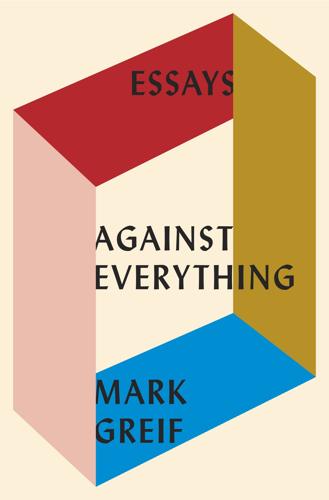
Against Everything: Essays
by
Mark Greif
Published 5 Sep 2016
As the White Negro had once fetishized blackness, the White Hipster fetishized the violence, instinctiveness, and rebelliousness of lower-middle-class “white trash.” “I love being white, and I think it’s something to be proud of,” Vice founder Gavin McInnes told The New York Times in 2003. This recalled the seventies culture of white flight to the suburbs, and the most uncanny thing about the turn-of-the-millennium hipsters is that symbolically, in their styles and attitudes, they seemed to announce that whiteness and capital were flowing back into the formerly impoverished city. They wore what they were in economic and structural terms—because for reasons mysterious to the participants, those things suddenly seemed “cool” for an urban setting.
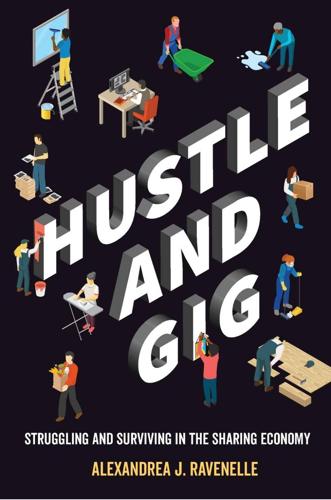
Hustle and Gig: Struggling and Surviving in the Sharing Economy
by
Alexandrea J. Ravenelle
Published 12 Mar 2019
As part of the sharing economy’s casualization of labor, many long-held assumptions about the American workplace and the redeeming qualities of work are overturned. WORK AS AN ALTERNATIVE TO CRIME OR ENABLING CRIMINAL ACTIVITY? William Julius Wilson, in When Work Disappears: The World of the New Urban Poor, writes that it’s the loss of manufacturing jobs, along with white flight from cities, that led to the deterioration of African American families and an increase in the crime rate. Without jobs, the logic goes, there are few ways to make money—and little incentive to marry. And without the social stability of marriage and work, there are fewer social controls preventing crime, both in terms of personal deterrents and “old heads” who can talk down the young men who may be considering a life of crime.1 The answer, meanwhile, is promoted in every American economic development plan: bring in industry, bring in job opportunities, and the crime rate will drop.2 The increasing employment levels of the late 1990s are even regularly offered as a reason behind the resulting crime drop.

Golden Gates: Fighting for Housing in America
by
Conor Dougherty
Published 18 Feb 2020
He left Berkeley for MIT a few months later and went on to become a Harvard professor and one of the world’s foremost labor economists. It was hard to see this so clearly back then, but America was in the middle of a vast realignment that was fundamentally altering where we live, how we work, and the structure of our families. The early markers were all there. After decades of depopulation and white flight, cities were slowly coming back to life and attracting young professionals. Inequality was rising, homelessness appearing on city streets, and Silicon Valley establishing itself as the nation’s foremost center of technology and a really good place to get rich. Zoning rules and NIMBYism had nothing to do with these underlying trends.
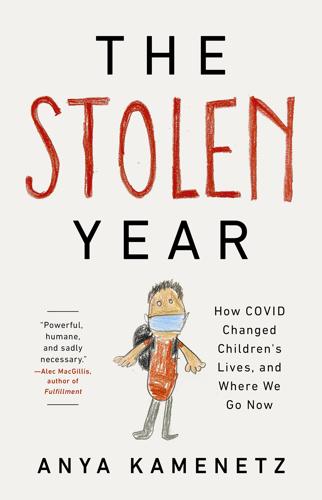
The Stolen Year
by
Anya Kamenetz
Published 23 Aug 2022
In May 1959, forty-four teachers were “purged” as suspected integrationists. Schools reopened in the fall only after a federal court ruling. Integration crept along at a token pace for another decade, until the institution of federal busing programs in 1971, which coincided with the beginning of white flight. Today Little Rock Public Schools are 61 percent Black, 19 percent white, and 16 percent Latinx. Suburban Bryant, the highest-regarded school district in the area, is the mirror image: 62 percent white. THE LOST YEAR AND THE STOLEN YEAR What can Little Rock’s Lost Year tell us about what I am calling the Stolen Year?
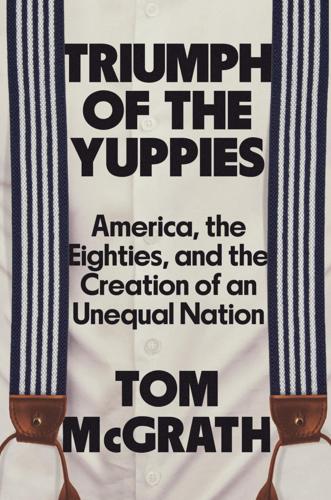
Triumph of the Yuppies: America, the Eighties, and the Creation of an Unequal Nation
by
Tom McGrath
Published 3 Jun 2024
And in large cities across America, in neighborhoods that weren’t being gentrified by college-educated knowledge workers, the pain was equally acute. Chicago, for instance, despite the presence of Yuppies in the Loop and other prospering neighborhoods, was in the midst of a twenty-year economic downturn. Factories that had once provided jobs to many Black workers had closed, the positions shipped to the suburbs, the South, or overseas. White flight had sucked away many in the middle class. In struggling neighborhoods, Black and Latino residents were unable to get mortgages as banks either discriminated against them or closed down entirely. In Kenwood-Oakland, a mostly Black neighborhood on the South Side, many houses were abandoned or boarded up, and one-third of the lots were completely vacant.
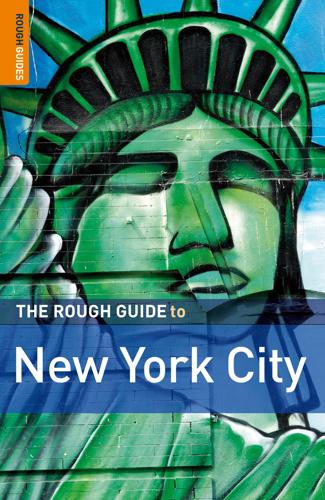
The Rough Guide to New York City
by
Martin Dunford
Published 2 Jan 2009
By the early 1900s, Brooklyn had more than one 219 BROOKLY N million residents, many of them Jewish and Italian; in 1910, 35 percent of its population was foreign-born (the proportion is similar today). Even with the population boom, Brooklyn suffered in the twentieth century: its strong manufacturing and shipping sectors dwindled, and unemployment climbed steadily. By the 1980s, “white flight,” provoked first by racism, then by drug-related crime and violence, had left previously desirable residential neighborhoods vacant and impoverished. With a citywide drop in crime beginning in the mid-1990s, however, middleclass families began restoring brownstones in Park Slope, Cobble Hill, and Fort Greene, and young artists and professionals flooded Williamsburg, offering Brooklyn a chance to rekindle its civic dignity, particularly in the realm of art and culture.
…
Immigrants from Puerto Rico and elsewhere in Latin America once more crammed East Harlem, the Lower East Side, and other poor neighborhoods, as did blacks from poor rural areas. Racial disturbances and riots started flaring up in what had for two hundred years been one of the more liberal of American cities. One response to the problem was a general exodus of the white middle-classes – the Great White Flight as the media labeled it – out of New York. Between 1950 and 1970 more than a million families left the city. Things went from bad to worse during the 1960s with race riots in Harlem and Bedford-Stuyvesant in Brooklyn. The World’s Fair of 1964 was a white elephant to boost the city’s international profile, but on the streets the calls for civil liberties for blacks and withdrawal from Vietnam were, if anything, stronger than in most of the rest of the country.
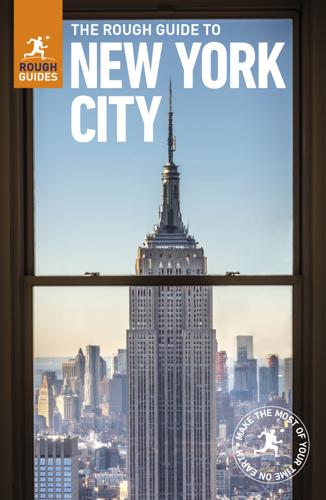
The Rough Guide to New York City
by
Rough Guides
Published 21 May 2018
By the early 1900s, Brooklyn had more than one million residents, many of them Jewish and Italian; in 1910, 35 percent of its population was foreign born (the proportion is similar today). Even with the population boom, Brooklyn suffered in the twentieth century: its strong manufacturing and shipping sectors dwindled, and unemployment climbed steadily. By the 1980s, “white flight”, provoked first by racism, then by drug-related crime and violence, had left previously desirable residential neighbourhoods vacant and impoverished. With a citywide drop in crime beginning in the mid-1990s, however, middle-class families began restoring townhouses in Park Slope, Cobble Hill, Prospect Heights and Fort Greene, and young artists and professionals flooded Williamsburg, trends that have continued and spread into Bushwick, Clinton Hill and whatever the next happening neighbourhood might be.
…
Immigrants from Puerto Rico and elsewhere in Latin America once more crammed East Harlem, the Lower East Side and other poor neighbourhoods, as did blacks from poor rural areas. Racial disturbances and riots started flaring up in what had for two hundred years been one of the more liberal of American cities. One response to the problem was a general exodus of the white middle classes – the Great White Flight as the media labelled it – out of New York. Between 1950 and 1970 more than a million families left the city. Things went from bad to worse during the 1960s with race riots in Harlem and Bedford-Stuyvesant in Brooklyn. The World’s Fair of 1964, again in Flushing Meadows, was a white elephant to boost the city’s international profile, but on the streets the calls for civil liberties for blacks and withdrawal from Vietnam were, if anything, stronger than in most of the rest of the country.
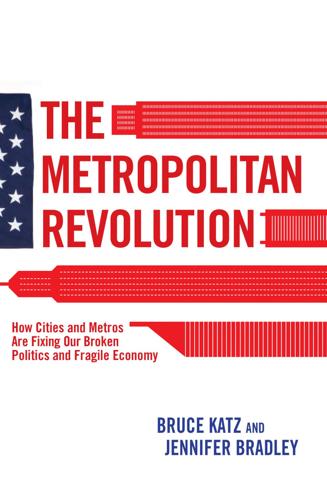
The Metropolitan Revolution: How Cities and Metros Are Fixing Our Broken Politics and Fragile Economy
by
Bruce Katz
and
Jennifer Bradley
Published 10 Jun 2013
.”* Similarly, when a city annexes territory, it takes it out of the reach of another municipality, and it can use the newly annexed territory as a jumping-off point to further extend its boundaries. The city planned to go to where the growth was happening, or was likely to happen, and capture it. The mostly white families who lived in these areas would be brought into the Denver public school system, thereby easing busing pressures and mitigating white flight by other parents who did not want their white children to be the minority within their schools. Just as important, these land acquisitions would bring more of the region’s wealth into the city of Denver. Colorado municipalities depended largely on sales taxes for their budgets. As the annexed territory developed, the department stores, hardware stores, and strip malls within it would contribute to a stronger bottom line for the city.
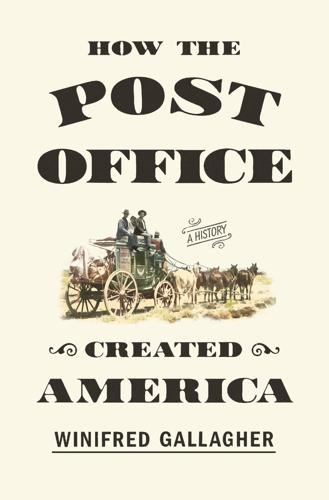
How the Post Office Created America: A History
by
Winifred Gallagher
Published 7 Jan 2016
Their replacements included many inexperienced, less skilled part-time workers, often women whose child-care responsibilities contributed to high rates of absenteeism. Chicago employed a high number of these inexpert workers, who simply couldn’t handle the annual autumn onslaught of bulk advertising mail. In hindsight, such postal breakdowns in big cities at a time of “white flight” to the suburbs, where the spoils system remained stronger and service was generally good, suggests that many urban facilities no longer had the political clout to get the necessary funding, staffing, and equipment. After the Chicago disaster, the truth about the post’s desperate state was finally out.
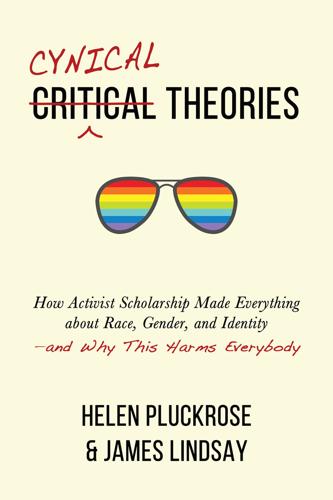
Cynical Theories: How Activist Scholarship Made Everything About Race, Gender, and Identity―and Why This Harms Everybody
by
Helen Pluckrose
and
James A. Lindsay
Published 14 Jul 2020
For instance, he also considered that white people had introduced desegregation, not as a solution to black people’s problems, but to further their own interests while suppressing black radicalism during the Cold War (and at other times).12 Because of his beliefs in a pervasive and irreparable system of white dominance in U.S. society,13 he argued that such changes lead to a whole new raft of problems through which white superiority would continually assert itself over the interests of black people, for instance through white retaliation and white flight.14 This was typical of the critical-race mood at the time. His contemporary, Alan Freeman, was similarly cynical and pessimistic, and wrote a number of legal papers arguing that antiracist legislation actually supported racism.15 Of course, simple legal equality between races is not sufficient to resolve all social inequalities.
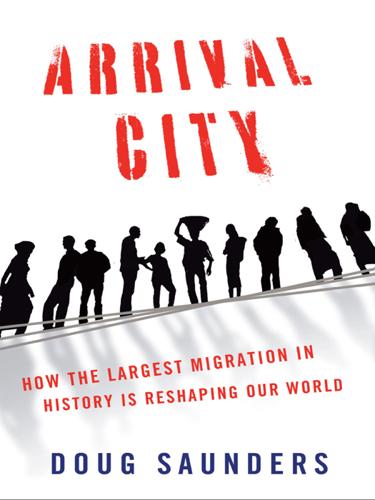
Arrival City
by
Doug Saunders
Published 22 Mar 2011
The university completion rate among the Latino-born of L.A. almost doubled, from 9.5 percent in 1970 to 18.8 percent in 2000.6 Mike Davis, the Los Angeles historian given to apocalyptic visions of failed and oppressed slums of Latin America, became ecstatic at the effect of Latinization on the slums of his own city: “Tired, sad little homes undergo miraculous revivifications: their peeling facades repainted, sagging roofs and porches rebuilt, and yellowing lawns replanted in cacti and azaleas. Cumulatively the sweat equity of 75,000 or so Mexican and Salvadorean homeowners has become an unexcelled constructive force (the opposite of white flight) working to restore debilitated neighborhoods to trim respectability … they also have a genius for transforming dead urban spaces into convivial social spaces.”7 By the middle of this century’s first decade, the rapid investment and mobility of the Central American arrival city had become the dominant force in L.A.’s politics and economy.
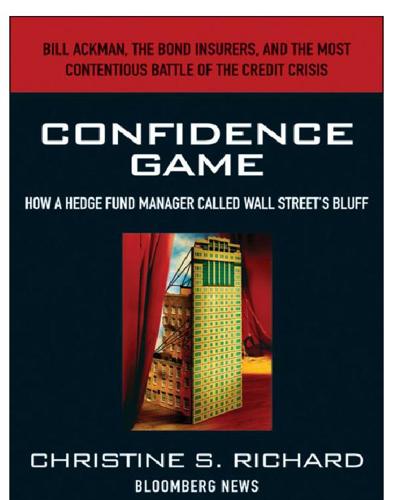
Confidence Game: How a Hedge Fund Manager Called Wall Street's Bluff
by
Christine S. Richard
Published 26 Apr 2010
In the 1960s, there were 80,000 students in the Pittsburgh public school system. By 2006, the number was closer to 25,000. The Hill district, which rises just beyond downtown Pittsburgh, was cut off physically from the hub of the city by the construction of a civic arena in the late 1960s. Race riots, white flight, and the decline of the steel industry share the blame for the neighborhood’s demise. In the 1980s, the district became the inspiration for the television police drama Hill Street Blues. My list showed Caulis Negris-controlled properties scattered up and down the street, though some were impossible to identify.

The Master Algorithm: How the Quest for the Ultimate Learning Machine Will Remake Our World
by
Pedro Domingos
Published 21 Sep 2015
The S curve is the shape of phase transitions of all kinds: the probability of an electron flipping its spin as a function of the applied field, the magnetization of iron, the writing of a bit of memory to a hard disk, an ion channel opening in a cell, ice melting, water evaporating, the inflationary expansion of the early universe, punctuated equilibria in evolution, paradigm shifts in science, the spread of new technologies, white flight from multiethnic neighborhoods, rumors, epidemics, revolutions, the fall of empires, and much more. The Tipping Point could equally well (if less appealingly) be entitled The S Curve. An earthquake is a phase transition in the relative position of two adjacent tectonic plates. A bump in the night is just the sound of the microscopic tectonic plates in your house’s walls shifting, so don’t be scared.
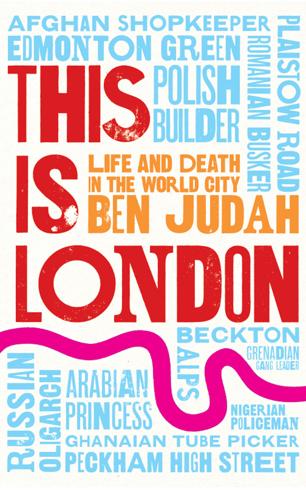
This Is London: Life and Death in the World City
by
Ben Judah
Published 28 Jan 2016
Here old whites sip Carling lager resentfully in the carpeted afternoon pubs. Escapees from the inner-city degeneration of the 1980s, they have been dealt a cruel turn of fate by the metropolis. The DLR dream brochure they bought into has turned into a place less than 25 per cent white British. Unable to afford a reverse white flight, back into Hackney, grittier types take to wearing England football shirts at every occasion. Eastern Europeans make up as much as 20 per cent of the Beckton population, Bangladeshis and Pakistanis a further 13 per cent. The cloud light is bruised by the overcast. I enter a hangar-sized Lithuanian supermarket.
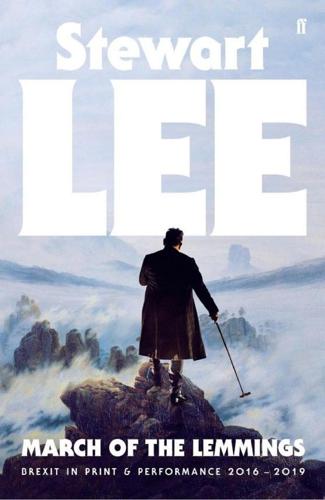
March of the Lemmings: Brexit in Print and Performance 2016–2019
by
Stewart Lee
Published 2 Sep 2019
And when Lux Interior, from The Cramps, fell off the speaker stacks in just his pants and twisted his legs up, night after night. It’s showbiz! 14 This ‘white supremacist theme park’ bit is one of a number of standardised local references that can be used in various parts of the country, especially those characterised by the phenomenon of ‘white flight’. 15 Oddly, Colin Dench, who has ended up releasing my work on DVD, ran an alternative comedy gig in the cellar of the Southend Cliffs Pavilion in the late ’80s and early ’90s. This was a bold move. In February 1990, on a bill with Frank Skinner, the much-missed Donna McPhail, The Calypso Twins and Bob Mills, I was booed off for being gay.

Heaven Is a Place on Earth: Searching for an American Utopia
by
Adrian Shirk
Published 15 Mar 2022
And a lot of people—a lot—still lived there. There were 1.2 million Bronx residents in 1977. The Bronx had been under siege since the 1950s, when the Cross-Bronx Expressway was blasted through the borough by Robert Moses, tearing up housing and neighborhoods, displacing entire communities. Then middle-class white flight followed by Nixon slashing urban renewal funds in the 1960s, part of the systemic racism and classism that engendered a total abandonment of those who were still in the Bronx, leaving the poor to carry on in the divested borough. What often gets left out of the master narrative of late-century Bronx, though, is that by the early seventies, there were already restoration plans in place, mobilized almost entirely by local, grassroots operations.
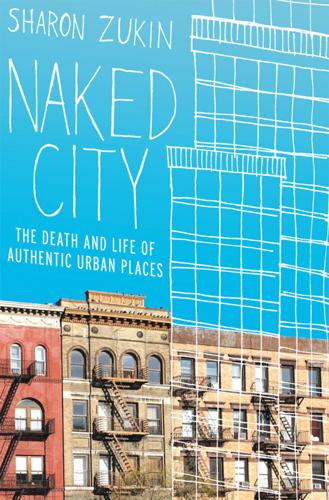
Naked City: The Death and Life of Authentic Urban Places
by
Sharon Zukin
Published 1 Dec 2009
Rae, City: Urbanism and Its End (New Haven, CT: Yale University Press, 2004); Alison Isenberg, Downtown America (Chicago: University of Chicago Press, 2004). 7. By the middle of the first decade of the twenty-first century the proportion of self-declared white residents of New York City had gradually increased, especially in Manhattan and Brooklyn, for the first time in fifty years, while the share of Latino immigrants had declined. Sam Roberts, “‘White Flight’ Has Reversed,” New York Times, September 23, 2008. On the nationwide “demographic inversion” that has moved poor minority group members and immigrants to inner suburbs and exurbs and attracted more affluent, mostly white residents to urban centers throughout the United States, see Alan Ehrenhalt, “Trading Places,” The New Republic, August 13, 2008, www.tnr.com/politics. 8.
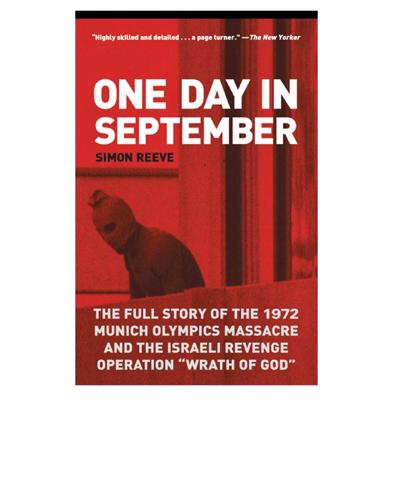
One Day in September
by
Simon Reeve
As automatic gunfire echoed around the airport the sniper aimed his gun at the man sprinting towards him and then realized it was not a terrorist but one of the helicopter pilots desperately trying to reach safety.37 The pilot’s life was saved because Sniper 2 had been warned the German flyers would be wearing white flight helmets. It was one of the few pieces of crucial information the authorities actually remembered to tell their gunmen. The pilot, Gunnar Ebel, dived for cover by the wall, the sniper screamed across to him that he was there, and the two men sheltered together as the gunfight raged on.38 By now the German snipers on the tower were starting to return fire.

Apollo 8: The Thrilling Story of the First Mission to the Moon
by
Jeffrey Kluger
Published 15 May 2017
The telegram implicitly acknowledged that the United States had just won a dramatic battle in the Cold War, and the official spokesman for the opponent was—grudgingly perhaps, but graciously—conceding that fact. In a contest so often marked by ambiguous outcomes, Apollo 8 had scored a clear victory. Belowdecks, freshly showered, the astronauts had changed into clean white flight suits, combed their hair, and donned their Yorktown caps, and soon they were climbing the metal ladder back to the deck. By now, their spacecraft had been hauled aboard, and the portion of the deck that held the little capsule had been cordoned off. The astronauts approached their spacecraft and examined it.
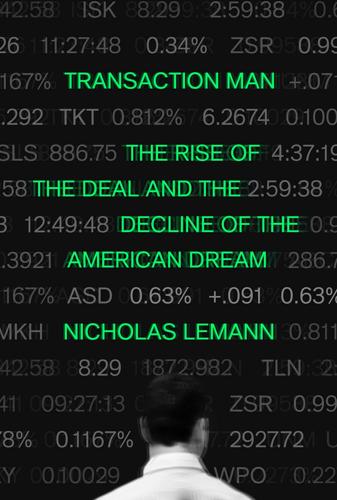
Transaction Man: The Rise of the Deal and the Decline of the American Dream
by
Nicholas Lemann
Published 9 Sep 2019
.; criminality of; political giving by; see also investment banking; Morgan Stanley; specific financial instruments Wall Street Journal, The war Watergate wealth, concentration of; during New Deal; pre–New Deal; Silicon Valley’s solution to Weekend to Be Named Later, The (conference) Weill, Sanford Weinberg, Nat Weiner, Jeff welfare states; corporations as Wells Fargo Bank Westinghouse Electric West Wing, The Weyl, Walter Wharton, Edith WhatsApp Whedon, Joss White, William Allen White Collar (Mills) white flight white nationalism Whitewater Whitman, Walt Whittemore, Frederick Whyte, William H. Wilson, Charles Wilson, Woodrow; as antitrust Win the Future Witter, Dean Wolfe, Tom women’s labor Woodin, William Woodward, Bob workers; as uncollared; worldwide wages of; see also pension funds; unions Working Group on Financial Markets World Bank WorldCom World Economic Forum WorldsAway World Trade Organization World War I World War II Wright, George Frederick Wright, Mary Augusta Wright, Robert Wright brothers Xerox Xi Jinping Yale, professors at Yee, Michelle Yellen, Janet York, Duke of Young, Andrew Zaffron, Steve Zen Buddhism Zionism Zuckerberg, Mark Zynga ALSO BY NICHOLAS LEMANN The Promised Land: The Great Black Migration and How It Changed America The Big Test: The Secret History of the American Meritocracy Redemption: The Last Battle of the Civil War A NOTE ABOUT THE AUTHOR Nicholas Lemann is a staff writer at The New Yorker and the Joseph Pulitzer II and Edith Pulitzer Moore Professor at the Columbia University Graduate School of Journalism, where he also served as dean.
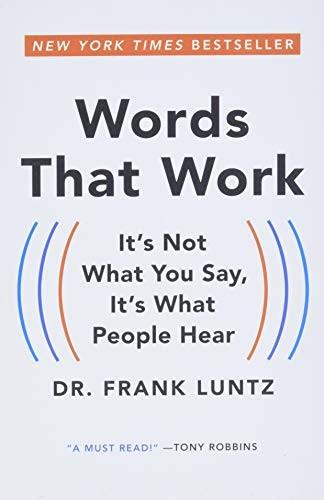
Words That Work: It's Not What You Say, It's What People Hear
by
Dr. Frank Luntz
Published 2 Jan 2007
The subtle political left turn that the suburbs are making is not so much a turn as it is a change of drivers. In other words, the suburbs are not becoming more liberal because residents are shifting their ideology to the left, but because conservative voters are fleeing for, quite literally, greener pastures. Remember the “white flight” to the suburbs in the 1960s and 1970s? What we are witnessing is a twenty-first-century “right flight” to the exurbs, a flight that is as much ideological as it is emotional. MYTH: AMERICAN CONSUMERS RESPOND WELL TO PATRIOTIC MESSAGES Wrong, sort of. It’s American pride that sells products.
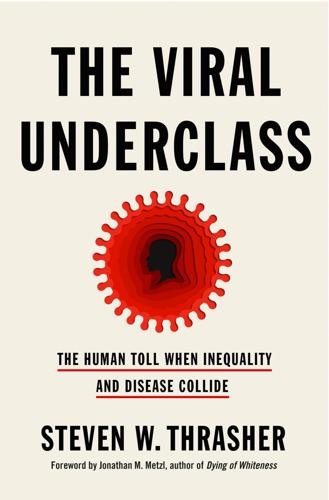
The Viral Underclass: The Human Toll When Inequality and Disease Collide
by
Steven W. Thrasher
Published 1 Aug 2022
I still didn’t know if I’d even get to interview the main person I’d come to meet. This dingy motel was all I could afford. The story I was there to report was a salacious one. Michael Johnson had been arrested the previous October in a classroom at Lindenwood University. He was one of the few Black students at the private school located in the “white flight” suburb of St. Charles. With its 91 percent white population, St. Charles has radically different racial demographics from nearby St. Louis, which many white suburbanites had fled. Yet, despite being in the minority, Johnson had been a well-liked and popular student athlete on campus. Prior to enrolling at Lindenwood, he’d been a national star on the junior college wrestling circuit.
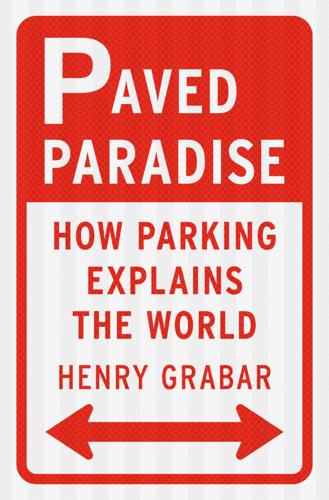
Paved Paradise: How Parking Explains the World
by
Henry Grabar
Published 8 May 2023
Chicago BP is the metropolis of the imagination: Art Deco skyscrapers, elevated trains, corner bars nestled inside neighborhoods of three-flats and Victorians, low-slung corridors of uninterrupted commercial storefronts stretching halfway to the state line. Chicago AP looks like run-of-the-mill suburban sprawl: chain stores lurking behind salt-crusted parking lots. It took nearly four decades for Chicago to begin to revise its white flight–era aim to create more parking wherever possible, a shift that came in part thanks to Richard M. Daley’s old-fashioned aesthetics. He liked flower boxes, wrought-iron fences, and historic buildings. (Martha Stewart, he said, was an influence.) Daley tried to reform the building code to make Chicago pretty again.
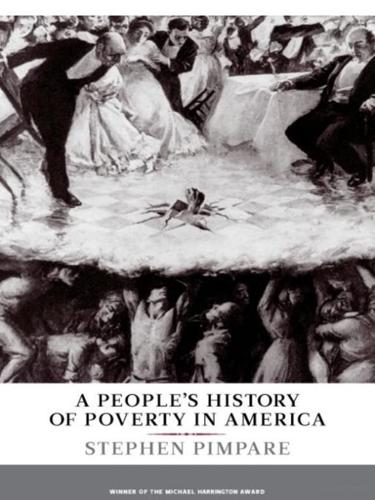
A People's History of Poverty in America
by
Stephen Pimpare
Published 11 Nov 2008
Schools, for a variety of reasons, tend to be inferior, further reducing opportunities for upward mobility, given the close correlation between education and income.17 Crime tends to be higher, and residents are much more likely to be the victims of violence.18 Finally, physically isolating poor people results in fewer encounters between people who are not poor and people who are: poverty is therefore an abstraction, easily dismissed or understood only through the propaganda of the privileged, contributing again to so many forming “but the vaguest notion” of poverty.19 The causes of concentrated poverty today are less clear, although sociologist William Julius Wilson’s explanation, despite challenges and refinements, still predominates: middle-class “white flight” from the central cities to the suburbs sapped cities of tax revenue from higher earners and left behind a poorer population that contributed less in taxes and needed more in public services. Exacerbating the problem, with deindustrializa-tion the jobs available to less-skilled and less-educated urbanites moved away, creating a “spatial mismatch.”20 Even before, from at least 1864 to 1923, there was an American “ethnic cleansing,” in which entire counties were forcibly emptied of blacks.21 Government itself has fostered segregation: with the complicity of the Federal Housing Administration, banks and mortgage companies for many years engaged in redlining, a policy of refusing to extend loans to African Americans for homes in predominantly white neighborhoods, or at all.
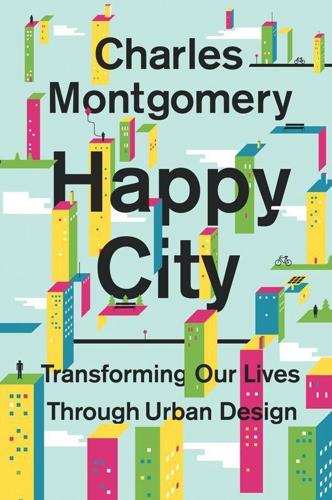
Happy City: Transforming Our Lives Through Urban Design
by
Charles Montgomery
Published 12 Nov 2013
Racial segregation was de facto federal policy for years. The U.S. Federal Housing Administration, which appraised neighborhoods, regularly excluded entire black communities from mortgage insurance until the advent of civil rights legislation in the 1960s. The policy gutted inner cities, while “white flight” fueled layer after layer of new suburban dispersal. So-called exclusionary zoning, which on the surface bans only certain kinds of buildings and functions from a neighborhood, served the deeper purpose of excluding people who fall beneath a certain income bracket. The tactic still works today.
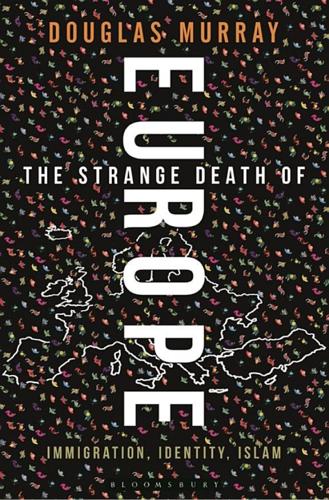
The Strange Death of Europe: Immigration, Identity, Islam
by
Douglas Murray
Published 3 May 2017
According to Sanandaji, within a generation other cities will follow and ethnic Swedes will be a minority in all the major cities: partly as a result of immigration, partly as a result of higher birth rates among immigrants, and partly as a result of ethnic Swedes abandoning areas where immigrants dominate. Not the least interesting aspect of surveys of Swedish attitudes is that even while so-called ‘white flight’ goes on, the average Swede still says it is important to live in a multicultural neighbourhood. Indeed, those who have moved away from ‘multicultural’ areas are disproportionately likely to say how important it is to live in them.7 A gap clearly exists in Sweden as elsewhere across the continent between what people think and what they believe they are meant to think.
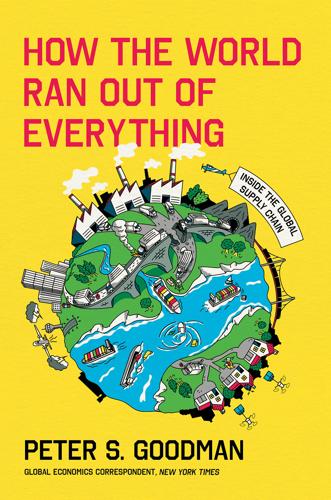
How the World Ran Out of Everything
by
Peter S. Goodman
Published 11 Jun 2024
Detroit had devolved into a poignant example of what happened when middle-class factory jobs were replaced by poverty-level positions at retailers, warehouses, and fast-food chains. Next to the old Highland Park factory—now a forlorn brick shell—a shopping center called Model T Plaza was anchored by a dollar store, a payday lender, and a plasma collection center awaiting people willing to swap blood for cash. The car itself had become an instrument of white flight. But the Rouge plant was still humming, the logical extension of everything that Ford had set in motion. The assembly line wound through the plant, bearing the chassis of the vehicles, as forklift drivers dropped required parts at the places they were needed, in accordance with a meticulously calibrated schedule.

Eternity
by
Greg Bear
Published 2 Jan 1988
As they walked around their wagon, she saw the two beecraft squatting on the apron, sullen and nondescript brown with patches of yellow and white. They seemed ugly and ungainly compared to the fighters, like flying houses. Their wide horizontal blades drooped, man-sized nacelles on the tips coming within three arms of the ground on each side. A few men in red and white flight outfits stood beside the beecraft, engaged in conversation, watching the wagons’ passengers disembark. Climbing down from the back of the next wagon in line was the Kelt and a small contingent of the palace guard; all to protect her, she real-She stifled a sudden urge to drop the clavicle and run into the desert.
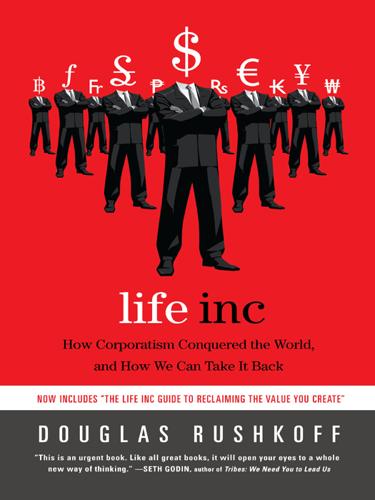
Life Inc.: How the World Became a Corporation and How to Take It Back
by
Douglas Rushkoff
Published 1 Jun 2009
The ideal of home ownership was the fruit of a public-relations strategy crafted after World War II—corporate and government leaders alike believed that home owners would have more of a stake in an expanding economy and greater allegiance to free-market values than renters. Functionally, though, it led to a self-perpetuating cycle: The more that wealthier white people retreated to the enclaves prepared for them, the poorer the areas they were leaving became, and the more justified they felt in leaving. While the first real wave of “white flight” was from the cities to the suburbs, the more recent, camouflaged version has been from the suburbs back into the expensive cities. Of course, these upper-middle-class migrants were themselves the targets of the mortgage industry, whose clever lending instruments mirror World Bank policies for their exploitative potential.

City: A Guidebook for the Urban Age
by
P. D. Smith
Published 19 Jun 2012
John Carpenter’s film Escape from New York (1981) depicted a future city that had been abandoned by its ordinary citizens and turned into a vast prison camp. This was downtown as every suburbanite’s worst nightmare. The decline of downtown, or the central city, was a troubling feature of late twentieth-century urban life around the world. In the 1970s and 1980s, British cities appeared to be following the example of the United States. ‘White flight’ to the suburbs had left hollowed-out inner cities populated with low-income, ethnic minority families, struggling with run-down housing, high crime and other social problems. London’s population had been 8.5 million in the 1940s, but it had dropped as low as 6.7 million by 1986.22 In South Africa, Johannesburg’s central Hillbrow district was home to the city’s major financial institutions, such as the stock exchange, until the end of apartheid in 1994.
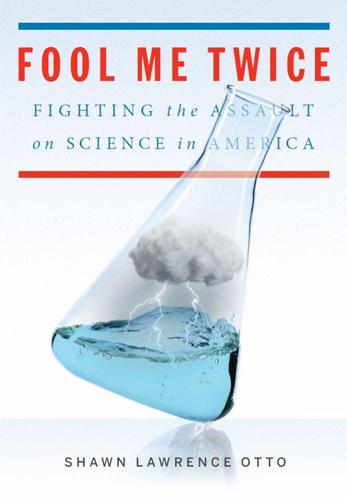
Fool Me Twice: Fighting the Assault on Science in America
by
Shawn Lawrence Otto
Published 10 Oct 2011
Our only option was to plan for an attack on American soil. This knowledge changed American culture and its relationship to science. For example, it has long been the prevailing opinion that American suburbs developed as a result of the increased use of the car, GI Bill—funded home construction, and white flight from desegregated schools after the 1954 Supreme Court decision in Brown v. Board of Education of Topeka. But in reality the trend had started several years before Brown. In 1945, the Bulletin of the Atomic Scientists began advocating for “dispersal,” or “defense through decentralization” as the only realistic defense against nuclear weapons, and the federal government realized this was an important strategic move.
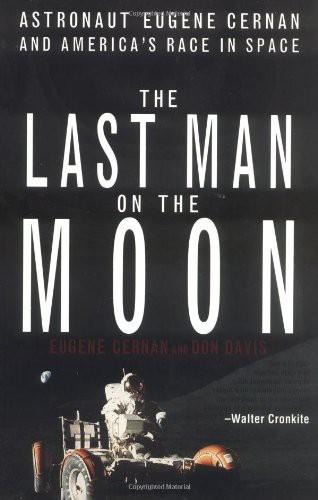
The Last Man on the Moon: Astronaut Eugene Cernan and America's Race in Space
by
Eugene Cernan
and
Donald A. Davis
Published 1 Jan 1998
Fortunately, the chopper had not flipped over and I was sitting upright, harnessed securely to the seat, and had not been pinned by the crumbling wreckage or the twisted steel panel of dials near my knees. Streams of bright bubbles rose past my eyes and I realized I was underwater, disoriented and unsure about what had happened. My heavy white flight helmet, buckled tightly beneath my chin, was filled with air and trying to pull away from my head, choking me like a hangman’s noose. I unsnapped the strap and the helmet rocketed away from my head, heading for the surface in a rush, as if gravity had been reversed and it was falling upward. I did a quick internal inventory, and felt no sharp pains of broken bones or ruptured organs, no jagged metal sticking into my gut, but I knew that if I didn’t do something quickly, I would drown.
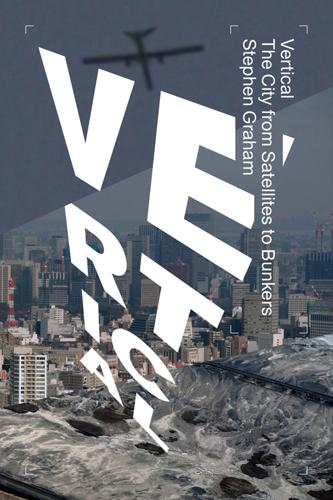
Vertical: The City From Satellites to Bunkers
by
Stephen Graham
Published 8 Nov 2016
Louis, Missouri on July 15, 1972 at 3:32 pm (or thereabouts) when the infamous Pruitt-Igoe scheme, or rather several of its slab blocks, were given the final coup de grâce by dynamite.’25 Built in the 1950s, the Pruitt-Igoe project became in the 1960s and 1970s a symbol of the racialised decay of inner urban cores and white flight as the middle classes rushed to the suburbs. Redlining, deindustrialisation and the growing emergence of racialised ghettos in Pruitt-Igoe and similar projects allowed mainstream media to demonise such places and their inhabitants. Pruitt-Igoe thus emerged as a symbol of urban decay, collapse and hopelessness.

Shoot for the Moon: The Space Race and the Extraordinary Voyage of Apollo 11
by
James Donovan
Published 12 Mar 2019
Afterward, Schirra told Grissom that he had a bad feeling about the spacecraft. “You’re going to be in there with full oxygen tomorrow,” he said, “and if you have the same feeling I do, I suggest you get out.” At about noon on a chilly Friday, January 27, at Cape Kennedy’s launchpad 34, Grissom, White, and Chaffee, in their white flight suits, took the elevator two hundred and twenty feet up to level eight and went across the twenty-foot catwalk to the White Room, a protective enclosure surrounding the command module during installation and checkout. Deke Slayton was with them—he had considered lying down at their feet in the cabin during the test to try to figure out some of the communications problems dogging the command module, but Grissom vetoed the idea.
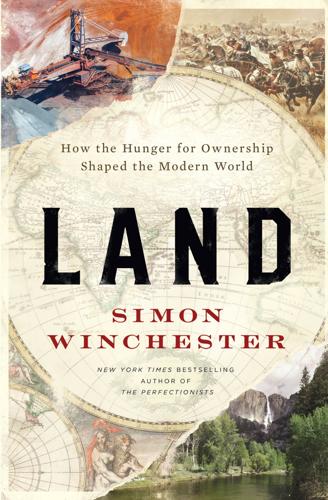
Land: How the Hunger for Ownership Shaped the Modern World
by
Simon Winchester
Published 19 Jan 2021
Until lately, no better example of urban failure could be found than Cleveland—a two-hundred-year-old port that once stood at a nexus of roadways and rail lines, a city built on steel mills and heavy industry—which during the Second World War particularly was one of the busiest industrial cities in the country. But after the war the demography altered: there was white flight to the suburbs, migrations of unemployed men from the Deep South, redlining by mortgage companies, closures of factories. And the pollution was infamous: the Cuyahoga River was so laden with oil and flammable chemicals that quite regularly it burst into flames, and one such river fire in 1969 was so bad it damaged and nearly destroyed two iron railroad bridges.

Columbine
by
Dave Cullen
Published 3 Mar 2010
Columbine High School was built in 1973 on a dirt road off a larger dirt road way out in horse country. It was named after the flower that blankets sections of the Rockies. Scraggy meadows surrounded the new building, fragrant with pine trees and horse manure. Hardly anybody lived there, but Jeffco was bracing for an influx. Court-ordered busing had spurred an avalanche of white flight out of Denver, and subdivisions were popping up all along the foothills. Jeffco officials had debated where the arrivals would cluster. They erected three temporary structures in the wilderness to accommodate the stampede. The high schools were identical hollow shells, ready for conversion to industrial use if the population failed to materialize.
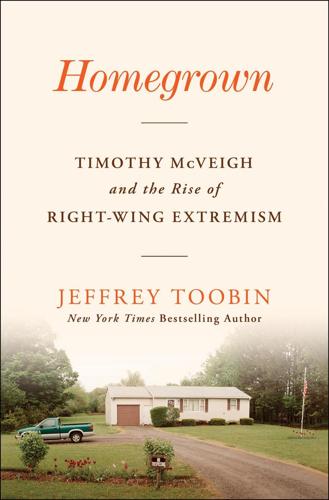
Homegrown: Timothy McVeigh and the Rise of Right-Wing Extremism
by
Jeffrey Toobin
Published 1 May 2023
This was a turning point for Tim, his first job with real responsibility, a regular salary, and a chance to see the world beyond his hometown. It was also an important part of his political coming of age. Before taking this job, McVeigh had had almost no exposure to Black people. His high school graduating class was all white, and he had rarely left Lockport and Pendleton, which were classic white-flight suburbs. Like virtually everyone else McVeigh had encountered, the workforce at Burke was nearly all white as well. The job with Burke mostly involved making 150-mile runs from Buffalo to Syracuse. (McVeigh loved to drive fast, and he received several speeding tickets on this route.) Burke also required Tim to make deliveries to check-cashing facilities in Buffalo’s inner city.

A City on Mars: Can We Settle Space, Should We Settle Space, and Have We Really Thought This Through?
by
Kelly Weinersmith
and
Zach Weinersmith
Published 6 Nov 2023
Some advocates note that you can always just create a new place to live in space, but then the argument becomes “you can just pull up stakes by creating a million-ton space station,” which, we suspect, will not be a live option for most of us. Even if it were, it’s still not clearly desirable. Dr. De Witt Kilgore, one of the few historiographers of ideas about space, called it a form of celestial “white flight.” That is, space not as a solution to politics, but as an escape from political realities one group finds uncomfortable. Weinersmith Verdict: Argument 5: Space Exploration Is a Natural Human Urge This is a popular one. The basic idea is that yeah, maybe there’s not a good return-on-investment reason for space exploration, but if we don’t do it, we’ll be thwarting our own nature, resulting in widespread human stagnation.

Cities Under Siege: The New Military Urbanism
by
Stephen Graham
Published 30 Oct 2009
Right up to the start of the twenty-first century, the capture of strategic and politically important cities has remained ‘the ultimate symbol of conquest and national survival’.52 Moreover, ever since the demise of obvious systems of urban fortifications, the design, planning and organization of cities has been shaped by strategic and geopolitical concerns – a topic neglected in mainstream urban studies.53 In addition to providing the famous ‘machine for living’ and bringing light and air to the urban masses, modernist planners and architects envisaged the situating of housing towers within parks as a means of reducing the vulnerability of cities to aerial bombing. Such towers were also designed to raise urbanites above the killer gas then expected to lie within the bombs.54 Along with the ‘white flight’ to the suburbs, early Cold War urban planning in the US sought to see US cities ‘through the bombardier’s eye’,55 and actively tried to stimulate decentralization and sprawl as means of reducing the nation’s vulnerability to a pre-emptive Soviet nuclear attack.56 And it is often forgotten that the massive US interstate highway system was initially labelled a ‘defense highway’ system and was partly designed to sustain military mobilization and evacuation in the event of global nuclear war.

The State and the Stork: The Population Debate and Policy Making in US History
by
Derek S. Hoff
Published 30 May 2012
After Nixon then suggested individuals not using birth control “are the people who shouldn’t have kids,”57 the conversa- defusing the population bomb 205 tion turned immediately to Black migration patterns. Nixon expressed wonderment that the African-American population of San Francisco had reached 30 percent due to black in-migration and white flight.58 Nixon’s casual racism is not noteworthy; the point is that he thought about population in terms of the increasing concentration of Americans, especially African Americans, in cities. There is no evidence that Nixon saw the issue of population location as a way to divert attention from the question of aggregate growth (or as a way to create more conservative suburban voters).

Capitalism in America: A History
by
Adrian Wooldridge
and
Alan Greenspan
Published 15 Oct 2018
In 1954, the nation’s first big suburban shopping center, with parking for ten thousand cars, began drawing retail trade from downtown. In 1967, the 12th Street riot, which saw forty-three people killed and more than two thousand buildings destroyed, and was only quelled with the help of the Michigan National Guard and the U.S. Army, hastened white flight, and from 1970 to 1980, the white share of the population fell from 55 percent to 34 percent. Though the city was repeatedly dubbed the crime or murder capital of America, its police had the highest wages in the country. In 1982, Detroit’s unemployment rate hit 25 percent, the same rate as in 1933.
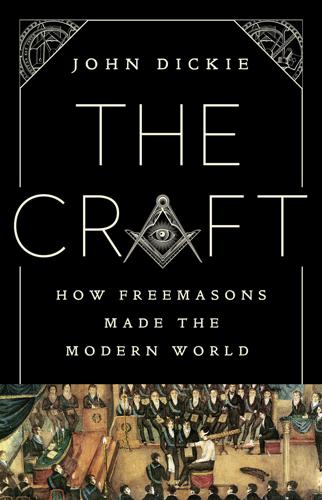
The Craft: How Freemasons Made the Modern World
by
John Dickie
Published 3 Aug 2020
But in January of that year the Surgeon General’s report on the dangers of cigarettes proved to be a watershed in public attitudes. Tobacco was not the ‘magic of the future’ after all. In August 1965, six days of rioting in Watts, Los Angeles, exposed the ghettoisation resulting from racism in housing. Across America, laying down roads to reach all those fine new ranch homes in the suburbs had spurred white flight, leading to ‘chocolate cities and vanilla suburbs’–as funk musician George Clinton would later call them. Try as it might, the New York World’s Fair could not keep the tumult at bay. Protestors opposed discriminatory hiring practices by picketing the United Nations building with placards saying ‘End Apartheid at the Fair’ and ‘African Pavilions Built with Lily White Labor’.

Fodor's Oregon
by
Fodor's Travel Guides
Published 13 Jun 2023
HPonzi Vineyards WINERY | One of the founding families of Willamette Valley wine, Dick and Nancy Ponzi planted their original estate vineyard in 1970. While you can still visit the historic estate that looks out over these old vines, your best bet is to drop in at their new visitors facility at the winery just 12 miles south of Hillsboro. Here you’ll find red and white flights of the current releases, as well as the occasional older vintage from the library. Enjoy table-side wine service indoors around the fireplace, or out on the covered terrace. Antipasti plates are a nice accompaniment to the wine. Pictures on the walls and displays provide a wonderful visual history of this winery that is still family owned and operated.

The Rise and Fall of the Neoliberal Order: America and the World in the Free Market Era
by
Gary Gerstle
Published 14 Oct 2022
Carter, From George Wallace to Newt Gingrich: Race in the Conservative Counterrevolution, 1963–1994 (Baton Rouge: Louisiana State University Press, 1996); Elizabeth Hinton, America on Fire: The Untold History of Police Violence and Black Rebellion Since the 1960s (New York: Liveright, 2021); Gary Gerstle, Liberty and Coercion: The Paradox of American Government from the Founding to the Present (Princeton, NJ: Princeton University Press, 2016), chapter 9; Kevin M. Kruse, White Flight: Atlanta and the Making of Modern Conservatism (Princeton, NJ: Princeton University Press, 2005); Matthew D. Lassiter, The Silent Majority: Suburban Politics in the Sunbelt South (Princeton, NJ: Princeton University Press, 2006). 25.In 1952, Eisenhower called on all Americans to have faith in God though he didn’t “care what it [the faith] is.”
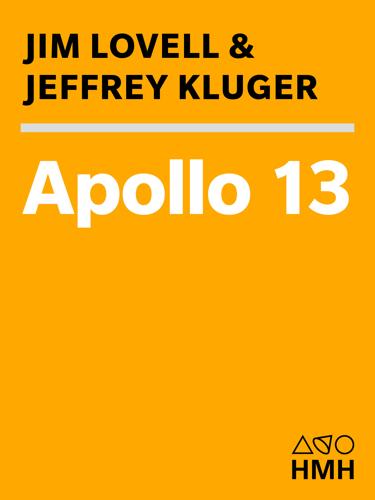
Apollo 13
by
Jim Lovell
and
Jeffrey Kluger
Published 14 Jun 2000
When the Apollo 13 crewmen were plucked from the ocean and flown to the carrier on April 17, they didn’t have much opportunity to talk. But as the afternoon wore on and the welcoming ceremonies wound down, and Lovell, Swigert, and Haise stood with a handful of carrier officers, saying their final thanks in the crisp blue jumpsuits they’d donned in the helicopter to replace the wilted white flight suits they’d been wearing for the last six days, Lovell had a moment to pull Swigert aside. “We ought to write it up, Jack,” the commander said to the command module pilot. Swigert looked at him perplexed. “The story; this story,” Lovell said. “We ought to write it.” The idea of telling the tale of Apollo 13 was always a natural one—or at least it seemed that way to the men who had been involved in the mission.
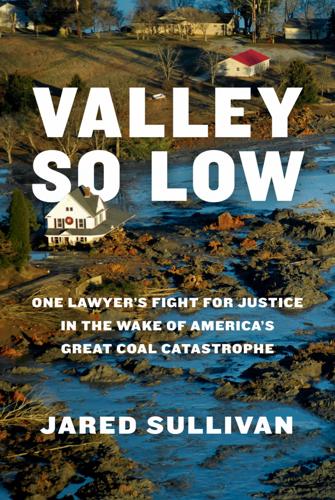
Valley So Low: One Lawyer's Fight for Justice in the Wake of America's Great Coal Catastrophe
by
Jared Sullivan
Published 15 Oct 2024
It had a gold-painted ceiling, red velvet curtains, a Wurlitzer organ, and French-style chandeliers, but it was long faded from its Jazz Age heyday. Janie loved it all the same. She didn’t have a car, so she walked two miles to catch a bus downtown for her shifts. At first, she sold popcorn and candy, then was promoted to the ticket booth. Downtown Knoxville had been in decline since she was in diapers, if not before, mostly owing to white flight and poor city leadership. Smoke and soot hung in the air, and litter blew through alleyways. Cigarette butts collected on the sidewalks. When President Lyndon Johnson had visited Knoxville a few years earlier, he said that the city’s Black slum held the worst poverty he’d seen in the United States.
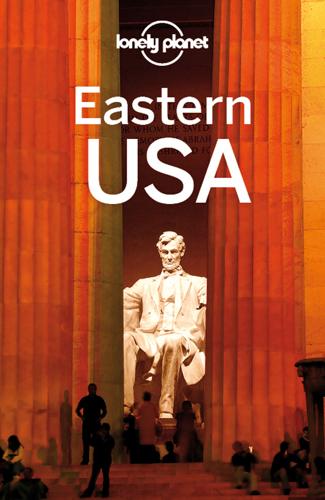
Eastern USA
by
Lonely Planet
Throughout the 19th century successive waves of immigrants – Irish, German, English, Scandinavian, Slavic, Italian, Greek and central European Jewish – led to a swift population increase, followed by the building of empires in industry and finance, and a golden age of skyscrapers. After WWII New York City was the prem- ier city in the world, but it suffered from a new phenomenon: ‘white flight’ to the suburbs. By the 1970s the graffiti-ridden subway system had become a symbol of New York’s civic and economic decline. But NYC regained much of its swagger in the 1980s, led by colorful three-term mayor Ed Koch. The city elected its first African American mayor, David Dinkins, in 1989, but ousted him after a single term in favor of Republican Rudolph Giuliani (a 2008 primary candidate for US president).
…
For decades after the Civil War, a great number of African Americans also migrated to the region’s urban centers from the South. The area prospered during WWII and throughout the 1950s, but was followed by 20 years of social turmoil and economic stagnation. Manufacturing industries declined, which walloped Rust Belt cities such as Detroit and Cleveland with high unemployment and ‘white flight’ (ie white middle-class families who fled to the suburbs). The 1980s and ’90s brought urban revitalization. The region’s population increased, notably with newcomers from Asia and Mexico. Growth in the service and high-tech sectors resulted in economic balance, although manufacturing industries such as car making and steel still played a big role, meaning that when the economic crisis hit in 2008, Great Lakes towns felt the pinch first and foremost.
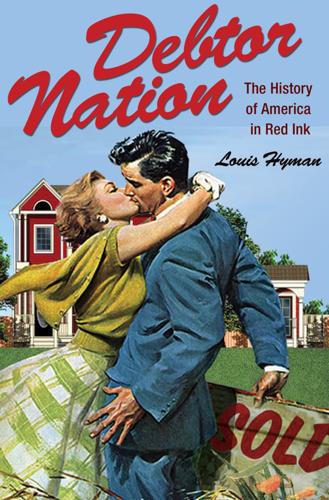
Debtor Nation: The History of America in Red Ink (Politics and Society in Modern America)
by
Louis Hyman
Published 3 Jan 2011
Johnston Cities of Knowledge: Cold War Science and the Search for the Next Silicon Valley by Margaret Pugh O’Mara 378 SERIES LIST Labor Rights Are Civil Rights: Mexican American Workers in Twentieth-Century America by Zaragosa Vargas More Equal Than Others: America from Nixon to the New Century by Godfrey Hodgson Pocketbook Politics: Economic Citizenship in Twentieth-Century America by Meg Jacobs Taken Hostage: The Iran Hostage Crisis and America’s First Encounter with Radical Islam by David Farber Defending America Military Culture and the Cold War Court-Martial by Elizabeth Lutes Hillman Morning in America: How Ronald Reagan Invented the 1980s by Gil Troy Phyllis Schlafly and Grassroots Conservatism: A Woman’s Crusade by Donald T. Critchlow The Silent Majority: Suburban Politics in the Sunbelt South by Matthew D. Lassiter White Flight: Atlanta and the Making of Modern Conservatism by Kevin M. Kruse Troubling the Waters: Black-Jewish Relations in the American Century by Cheryl Lynn Greenberg In Search of Another Country: Mississippi and the Conservative Counterrevolution by Joseph Crespino The Shifting Grounds of Race: Black and Japanese Americans in the Making of Multiethnic Los Angeles by Scott Kurashige Americans at the Gate: The United States and Refugees during the Cold War by Carl J.
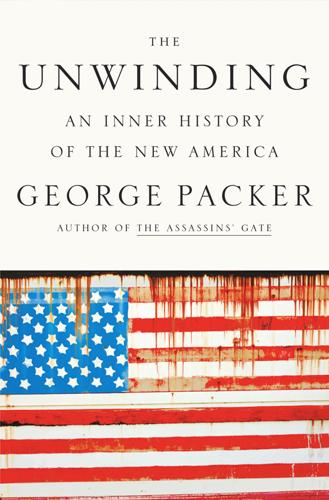
The Unwinding: An Inner History of the New America
by
George Packer
Published 4 Mar 2014
Between 1979 and 1980, bankruptcies in Youngstown doubled, and in 1982, unemployment in the Mahoning Valley reached almost 22 percent—the highest anywhere in the country. Black workers, who had only recently entered the better mill jobs, were hit especially hard. Houses on the east side, parts of the south side, and even Smokey Hollow on the edge of downtown emptied out with foreclosures and white flight. The vacancies began an epidemic of house burnings, two or more incidents a day throughout the eighties. On the wall by the pay phone at Cyrak’s, a well-known mob bar, there was a number you could call to have a house torched at less than half the cost of having it demolished by the city. But during a decade of hundreds of arson fires, only two people were convicted of anything—a black woman who killed her two children in an insurance fire, and the city official in charge of demolitions, who used the mob to get the job done.
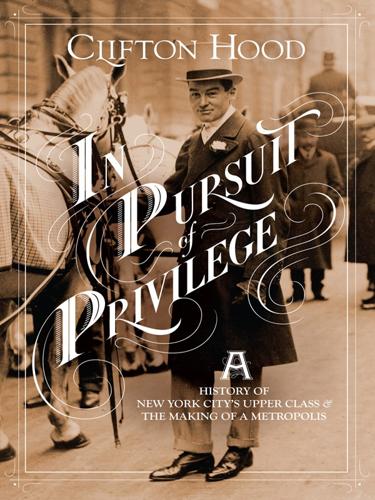
In Pursuit of Privilege: A History of New York City's Upper Class and the Making of a Metropolis
by
Clifton Hood
Published 1 Nov 2016
Andrew Wiese, Places of Their Own: African American Suburbanization in the Twentieth Century (Chicago: University of Chicago Press, 2004); Becky N. Nicolaides, My Blue Heaven: Life and Politics in the Working-Class Suburbs of Los Angeles, 1920–1965 (Chicago: University of Chicago Press, 2002); Kevin M. Kruse, White Flight: Atlanta and the Making of Modern Conservatism (Princeton, N.J.: Princeton University Press, 2005); and Becky Nicolaides and Andrew Wiese, eds., The Suburb Reader (New York: Routledge, 2006). Among the few recent studies to examine upper-class suburbs is a work of cultural geography, James S. Duncan and Nancy G.
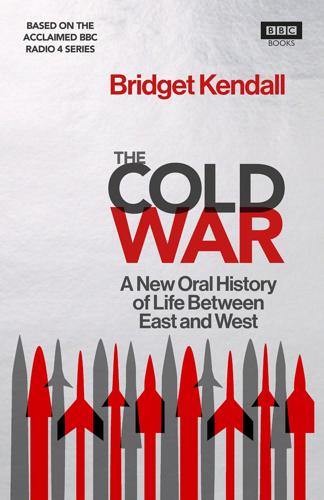
The Cold War: Stories From the Big Freeze
by
Bridget Kendall
Published 14 May 2017
At that time, the Russians made a lot of promises to Lumumba, but in fact they did very few things. They promised trucks and aeroplanes and so on, but they only gave him some very old machines. I had the opportunity to speak to him, but he was not able to trust any more. One consequence of the spiral towards anarchy was white flight, including from newly autonomous Katanga, where Wung’a Lomami Onadikondo grew up. Wung’a’s father – a Lumumba supporter – had to flee to avoid arrest. The rest of the family would follow. Where I was living, it was on the road to Rhodesia [now Zimbabwe] and when white people began to flee to Rhodesia they were leaving only with their suitcases, they lost everything.
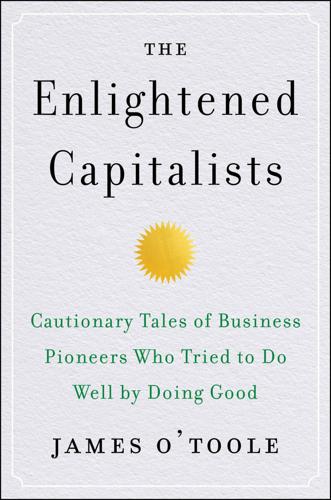
The Enlightened Capitalists
by
James O'Toole
Published 29 Dec 2018
Shortly after Sellars assumed J&J’s leadership, it was revealed that managers in its foreign divisions had engaged in bribery to secure overseas business. Sellars immediately put his foot down: and, citing the credo as his authority, fired those responsible. Shortly thereafter, the company’s commitment was again challenged by mounting pressure to move its headquarters from the rapidly decaying urban core of New Brunswick and join the “white flight” to the suburbs. Before deciding to abandon the city, Sellars said he had looked “at the Credo’s commitment to communities where we work and live” and then opted not only to keep J&J’s headquarters in New Brunswick but to erect a modern headquarters building to serve as the core of what would become the company’s ten-year revitalization of the city’s center.
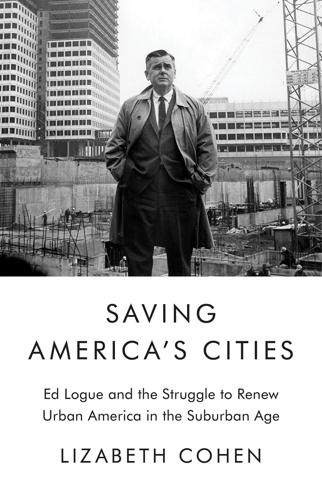
Saving America's Cities: Ed Logue and the Struggle to Renew Urban America in the Suburban Age
by
Lizabeth Cohen
Published 30 Sep 2019
The effect was to confine minority populations to certain Boston neighborhoods like Roxbury, parts of Dorchester, and Mattapan, predominantly Jewish neighborhoods now unprofitable to banks because so many mortgages were paid off. The B-BURG policy also encouraged blockbusting—scaring homeowners into selling cheaply out of fear that prices would plummet further when a minority racial group entered—and the resulting white flight. Unintentionally, Logue’s aspiration to get mortgage money into the hands of marginalized homeowners to improve housing quality in socioeconomically diverse neighborhoods ended up contributing to the hardening of racial, ethnic, and economic lines within and between neighborhoods.24 The fate of the B-BURG program suggests the difficulties Logue faced in achieving his goal of greater class and racial mixing in Boston’s neighborhoods undergoing renewal.
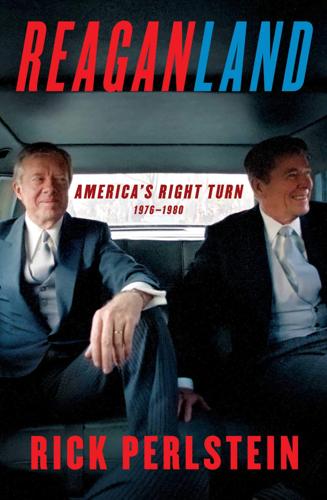
Reaganland: America's Right Turn 1976-1980
by
Rick Perlstein
Published 17 Aug 2020
But manufacturers had been fleeing places like Cleveland to the non-union Sun Belt. Chicago, Pittsburgh, Philadelphia, and Boston all lost more than a third of their manufacturing bases in a decade. Those with the means fled for the suburbs, leaving behind economically vulnerable African Americans, a phenomenon known as white flight. Cities could not tear down abandoned buildings fast enough; blocks became hollow shells; empty factories became playgrounds for vandals and arsonists. Once glittering central business districts became ghost towns. Cities like these were labeled the Rust Belt. Cleveland seemed on its way to becoming the most forlorn of them all.
…
If these regulations are accepted as valid, this implies that we can be forced in the future to conform to the notion of social good proclaimed in Washington, not just as to race but to any matter.” Its seventy-eight signatories were all conservatives. But another was signed by two liberal Catholics senators, Thomas Eagleton of Missouri and Edmund Muskie of Maine. It complained that the procedure “casts a very wide net that will undoubtedly bring in a large number of non ‘white flight’ schools.” Another Catholic, Joe Biden of Delaware, shared similar views, and later voted to strike money to regulate private schools from the IRS’s authorization. By December the IRS had received 150,000 letters. Phil Crane claimed that another 60,000 messages of opposition came to members of Congress.
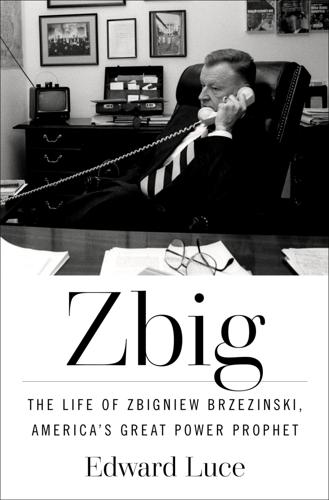
Zbig: The Life of Zbigniew Brzezinski, America's Great Power Prophet
by
Edward Luce
Published 13 May 2025
The Democratic leaders, he said, hovered “above a directionless void, there to loose the fearful nauseas of the century.”86 Presidential candidates nearly always derive a poll bump from their conventions. Humphrey was history’s most glaring exception. Public fear of collapsing law and order probably did more than opposition to the Vietnam War to win the 1968 election for Nixon. It was the peak year of so-called white flight from the cities. Many in what Nixon dubbed the “silent majority” were no fans of the Vietnam War. But they were susceptible to Nixon’s racial dog whistles—his so-called Southern Strategy—to wrest the desegregated South from Democratic hands. After the 1964 Voting Rights Act passed Congress, LBJ had turned to his aide Bill Moyers and said, “We just lost the South for a generation.”

USA's Best Trips
by
Sara Benson
Published 23 May 2010
* * * Out of many contenders, there are two excellent sleeping options in Virginia’s capital: the Massad House Hotel, a cozy, centrally located study in Tudor-style budget bliss; and one of the poshest palaces of Dixie patricians, the Jefferson Hotel, a modern execution of the moonlight-and-magnolia cliché. Petersburg, just south of Richmond, is the blue-collar sibling city to the Virginia capital, its center gutted by white flight following desegregation. Petersburg National Battlefield Park marks the spot where Northern and Southern soldiers spent almost a quarter of the war in a protracted, trench-induced stand-off. The Battle of the Crater, made well known in Charles Frazier’s Cold Mountain, was an attempt by Union soldiers to break this stalemate by tunneling under the Confederate lines and blowing up their fortifications; the end result was Union soldiers caught in the hole wrought by their own sabotage, killed like fish in a barrel.

Jerusalem: The Biography
by
Simon Sebag-Montefiore
Published 27 Jan 2011
Dayan character: Ariel Sharon, Warrior 76, 127, 222. 29 Wall liberated: Dayan 13-17. On Dayan: author conversation with Shimon Peres. Ashton 118-20, Shlaim, Lion of Jordon 248-51 and 258. Hussein weeps for city: Noor, Queen of Jordan, Leap of Faith, 75-7. EPILOGUE 1 1967-present: population Wasserstein 212, 328-38; peace plans 345; white flight of secular Jews, falling proportion of Jews from 74 per cent in 1967 to 68 per cent in 2000. Forty peace plans for Jerusalem: Shlaim, Israel and Palestine 229, also 25-36; on Jerusalem 253-60. Population in 2000 including 140,000 Orthodox Jews: Loupo and Chen, 'Ultra-Orthodox', Ahimeir and Bar-Simon-Tov, Forty Years in Jerusalem 65-95.
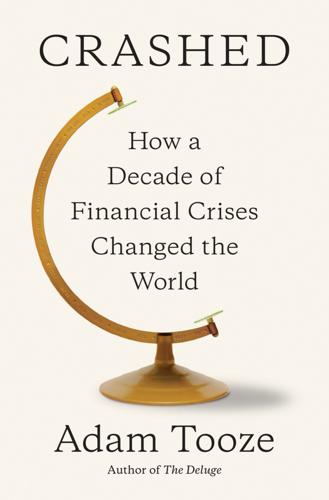
Crashed: How a Decade of Financial Crises Changed the World
by
Adam Tooze
Published 31 Jul 2018
If the American motor industry was back from the dead, the same could not be said for Motor City. Since its heyday in the postwar era, Detroit had long been a city in decline. At its peak it had a population of 1.8 million, of whom 500,000 were African American. Hit by deindustrialization and white flight following the 1967 riots, by 2013 the population of the urban core of Detroit had shrunk to 688,000, of whom 550,000 were African American. They were left behind in a city that was literally falling into ruin, burdened with debts running into the tens of billions of dollars. With most of the major factories that had made it one of the industrial heartlands of the world closed down, Detroit was caught in a death spiral of unemployment, racial disadvantage and unsafe and predatory financing.2 By 2013, 36 percent of Detroit’s population were classed as living below Michigan’s far from generous poverty line.
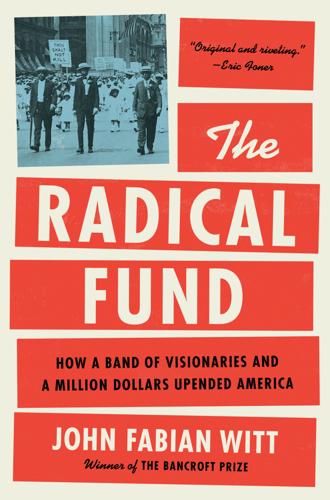
The Radical Fund: How a Band of Visionaries and a Million Dollars Upended America
by
John Fabian Witt
Published 14 Oct 2025
James Weldon Johnson came close to the heart of the matter when he observed, just a few years before he died, that the world is “constantly shifting and changing.” Margold’s plan for remaking the administrative structure of Jim Crow schools became ill-suited to a changed world in which the problem was not the separate schools of the segregation era but rather the separate school districts of the age of white flight. Sidney Hillman’s descendants in the labor movement underestimated the enervating effects of bureaucratic collective bargaining on movement energies. The architects of the Wagner Act did not anticipate the effects of global trade and deindustrialization; they had few answers when American employers renewed the anti-union campaigns of the 1920s.

USA Travel Guide
by
Lonely, Planet
Throughout the 19th century successive waves of immigrants – Irish, German, English, Scandinavian, Slavic, Italian, Greek and central European Jewish – led to a swift population increase, followed by the building of empires in industry and finance, and a golden age of skyscrapers. After WWII New York City was the prem- ier city in the world, but it suffered from a new phenomenon: ‘white flight’ to the suburbs. By the 1970s the graffiti-ridden subway system had become a symbol of New York’s civic and economic decline. But NYC regained much of its swagger in the 1980s, led by colorful three-term mayor Ed Koch. The city elected its first African American mayor, David Dinkins, in 1989, but ousted him after a single term in favor of Republican Rudolph Giuliani (a 2008 primary candidate for US president).
…
For decades after the Civil War, a great number of African Americans also migrated to the region’s urban centers from the South. The area prospered during WWII and throughout the 1950s, but was followed by 20 years of social turmoil and economic stagnation. Manufacturing industries declined, which walloped Rust Belt cities such as Detroit and Cleveland with high unemployment and ‘white flight’ (ie white middle-class families who fled to the suburbs). The 1980s and ’90s brought urban revitalization. The region’s population increased, notably with newcomers from Asia and Mexico. Growth in the service and high-tech sectors resulted in economic balance, although manufacturing industries such as car making and steel still played a big role, meaning that when the economic crisis hit in 2008, Great Lakes towns felt the pinch first and foremost.
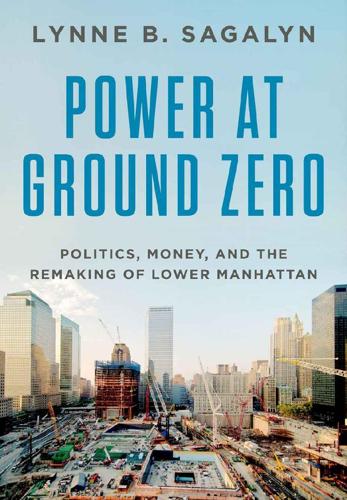
Power at Ground Zero: Politics, Money, and the Remaking of Lower Manhattan
by
Lynne B. Sagalyn
Published 8 Sep 2016
Like many a central city in older metropolitan regions in the East and Midwest where the industrial and mercantile economy had created a troika of economic power, wealth, and prestige that gave rise to a great many institutions of cultural excellence and supported a great many nonprofit social-service institutions and philanthropic organizations, New York City during the 1960s experienced profound economic and social change that shook the foundations of its civic self. The forces of “deindustrialization, disinvestment, racial change, and suburbanization that began full force in the 1950s [and] culminated in the racial conflict of the late 1960s and the fiscal crisis of the mid-1970s” had profound impacts—white flight, property abandonment, arson, crime, deep social unrest—which devastated the physical and social fabric of New York City. “One might well have been excused for thinking, based on the evidence, that New York was headed over the same cliff from which Detroit had already plunged,” remarked urban expert and political scientist John Mollenkopf.23 “This did not happen,” he added.
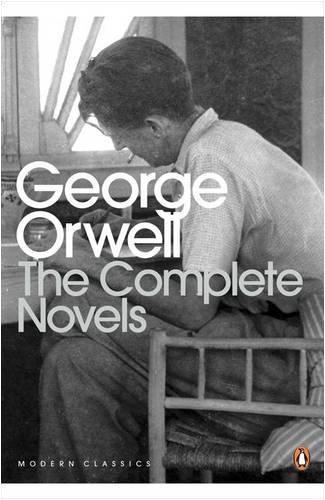
The Complete Novels Of George Orwell
by
George Orwell
Published 3 Jun 2009
They passed a whitewashed wooden pagoda, no taller than a man and half hidden by the tendrils of creeping plants. Then the track wound into the village, which consisted of twenty ruinous, wooden huts roofed with thatch, and a well beneath some barren date-palms. The egrets that roosted in the palms were streaming homewards over the treetops like white flights of arrows. A fat yellow woman with her longyi hitched under her armpits was chasing a dog round a hut, smacking at it with a bamboo and laughing, and the dog was also laughing in its fashion. The village was called Nyaunglebin–‘the four peepul trees’; there were no peepul trees there now, probably they had been cut down and forgotten a century ago.